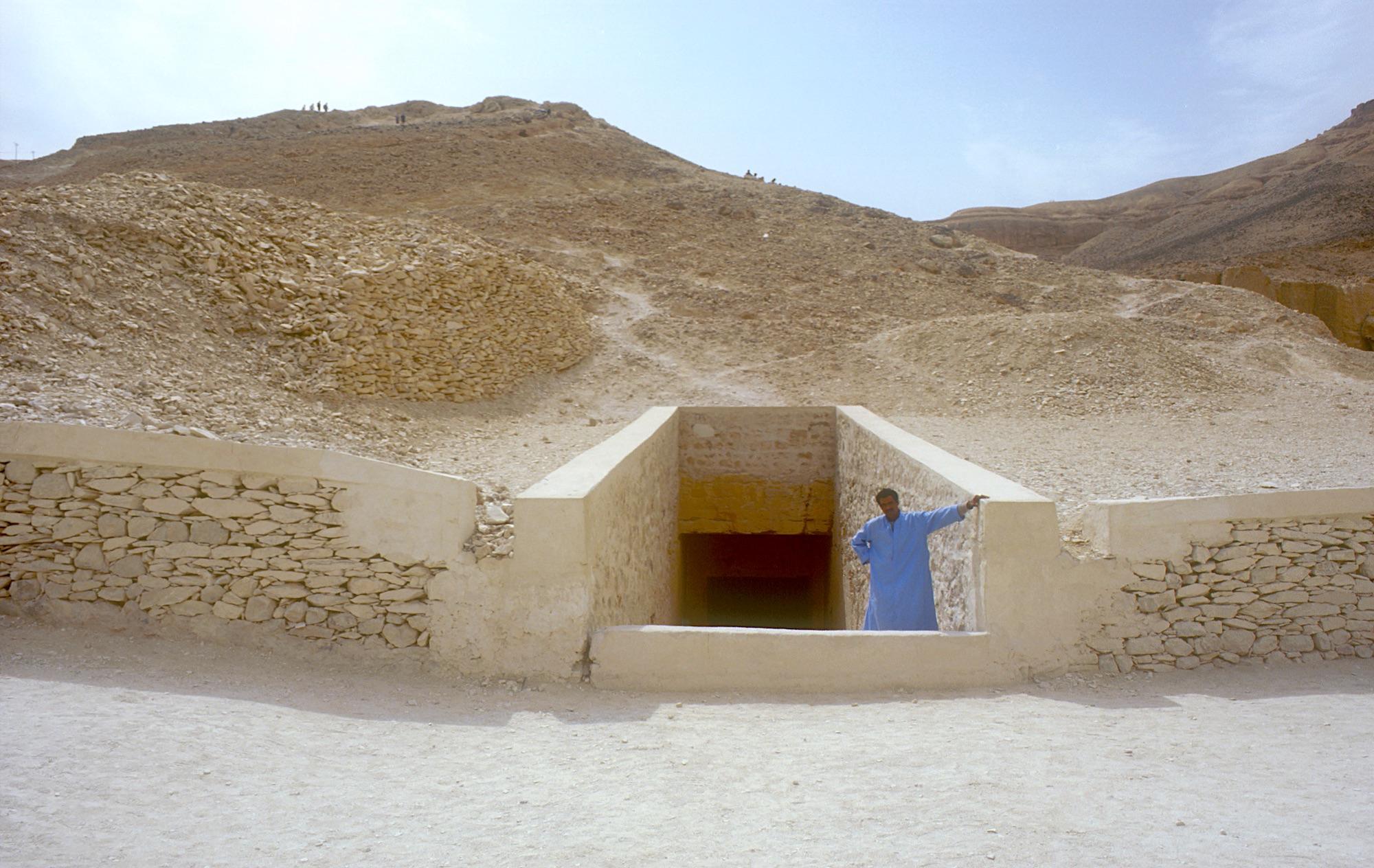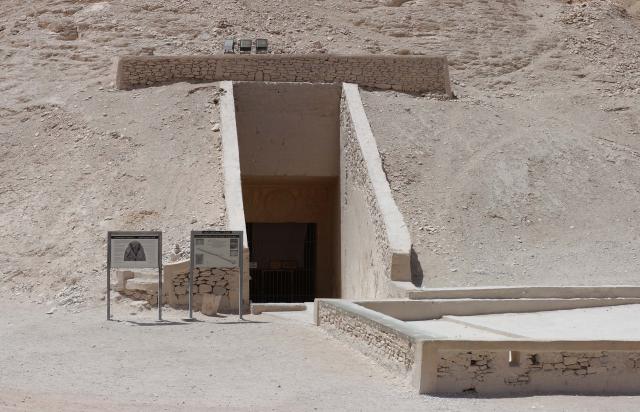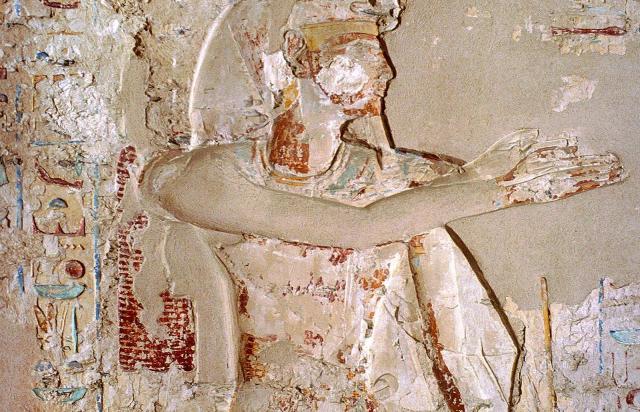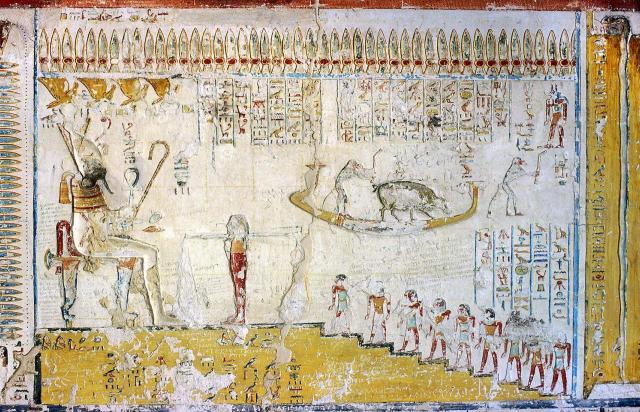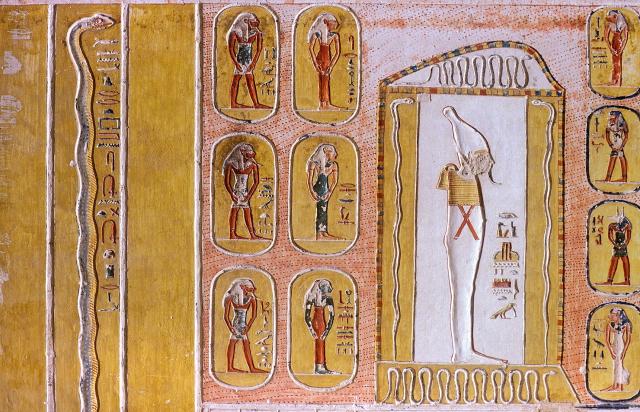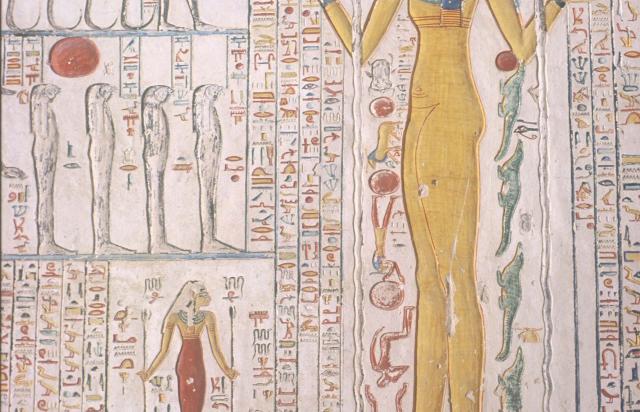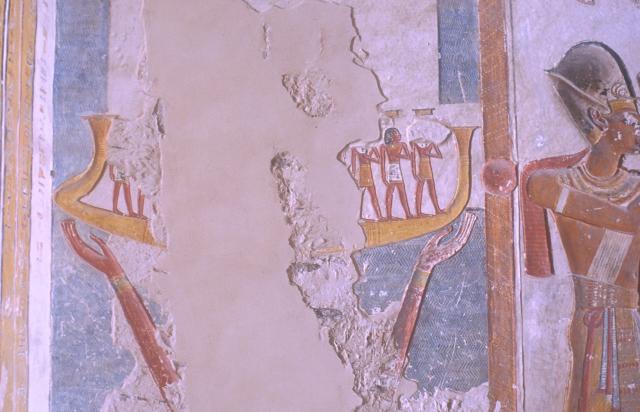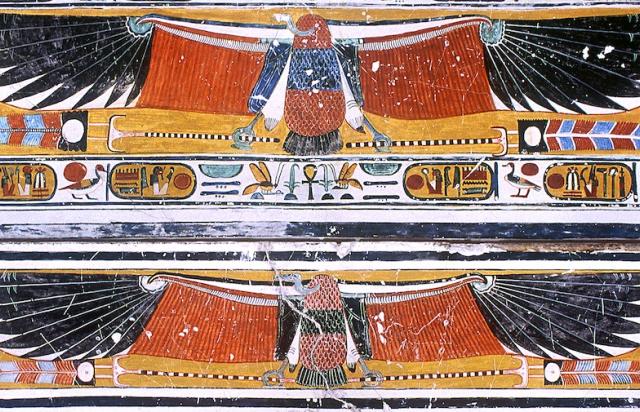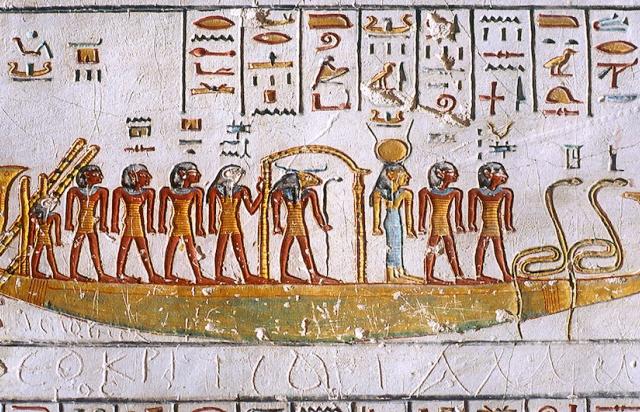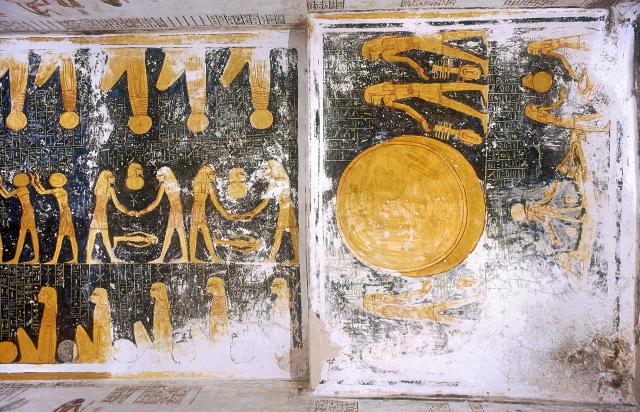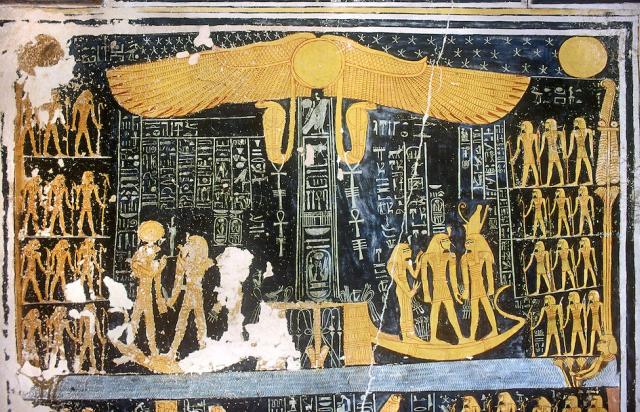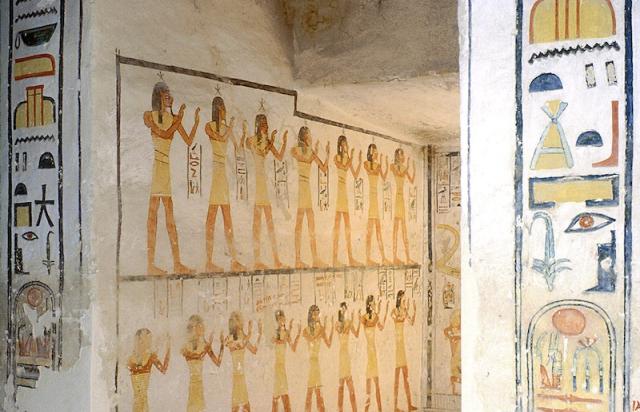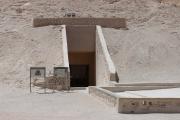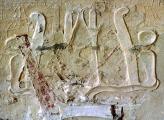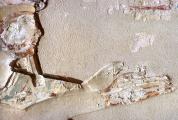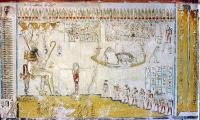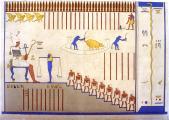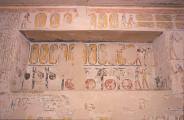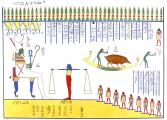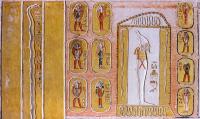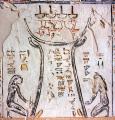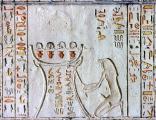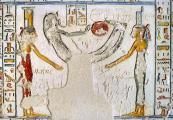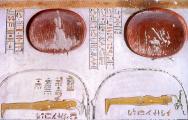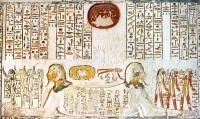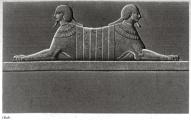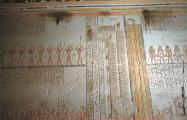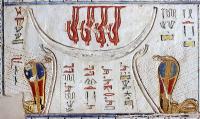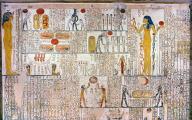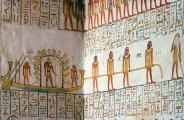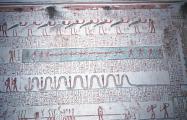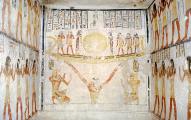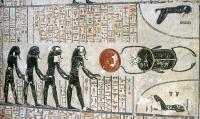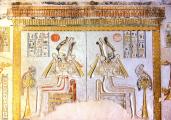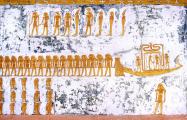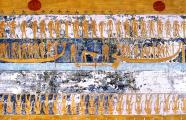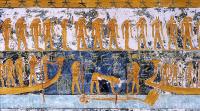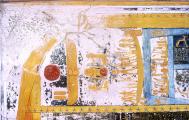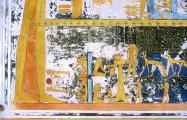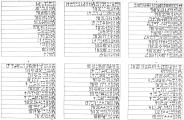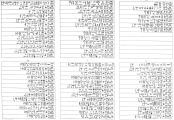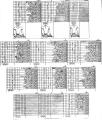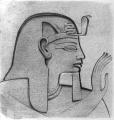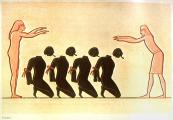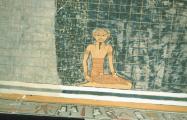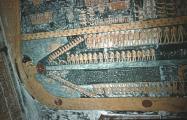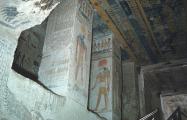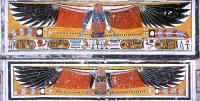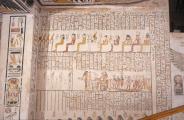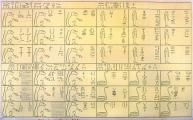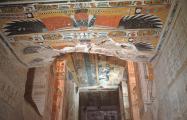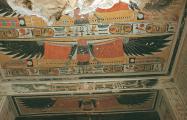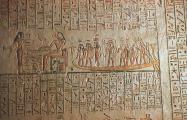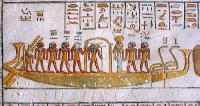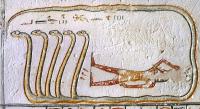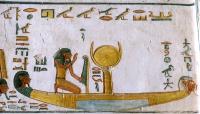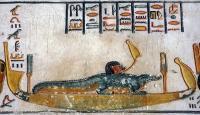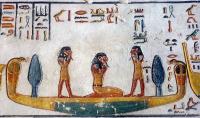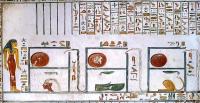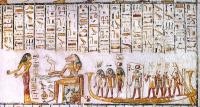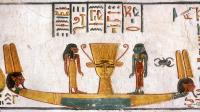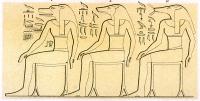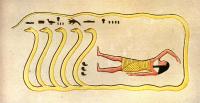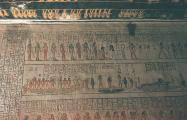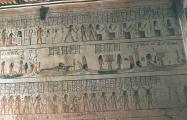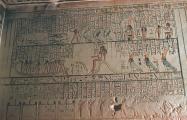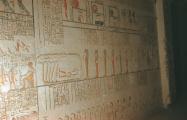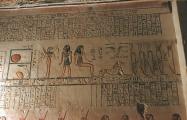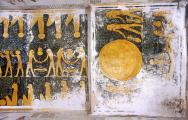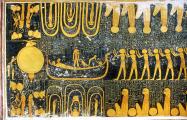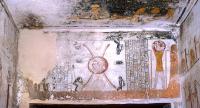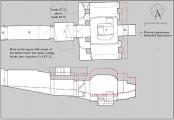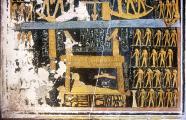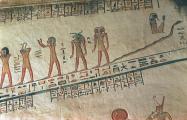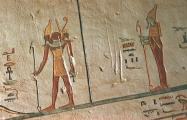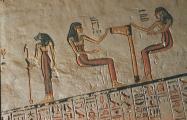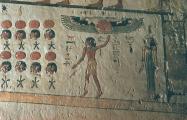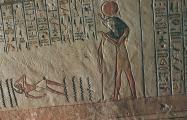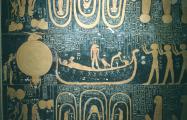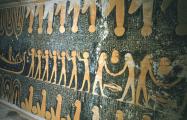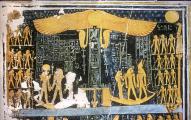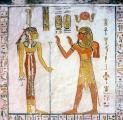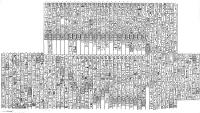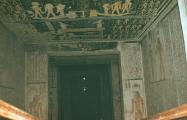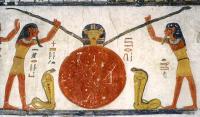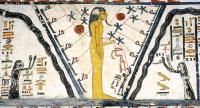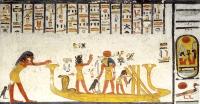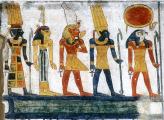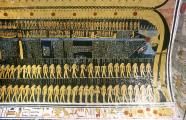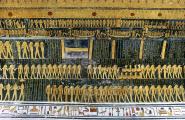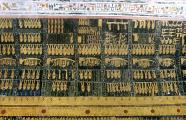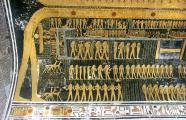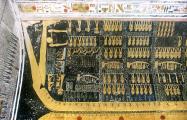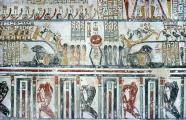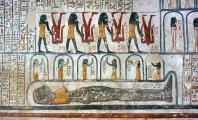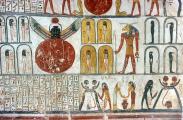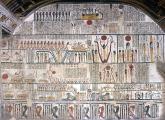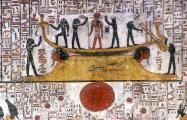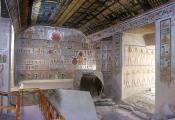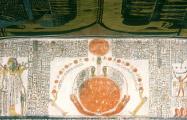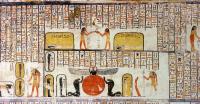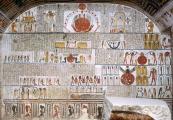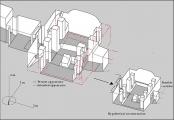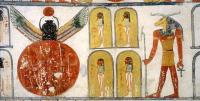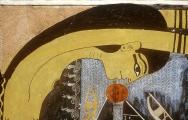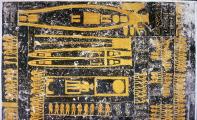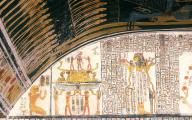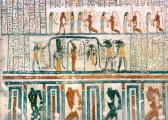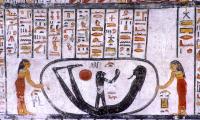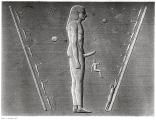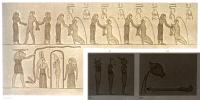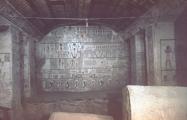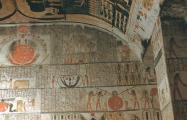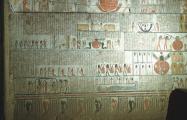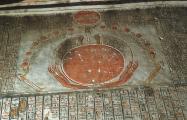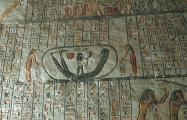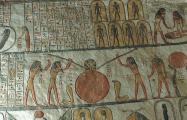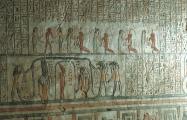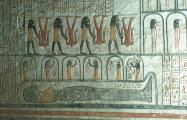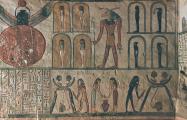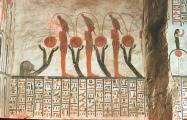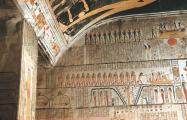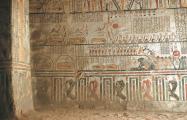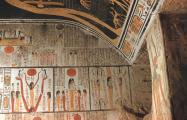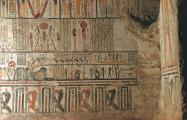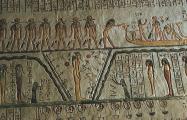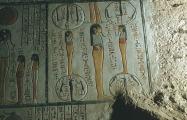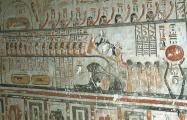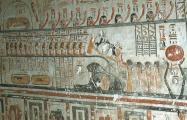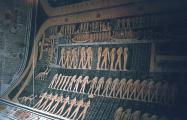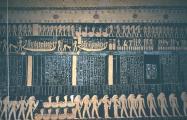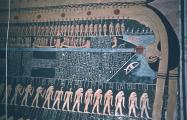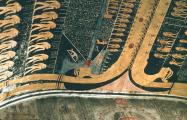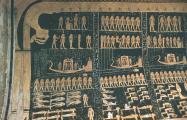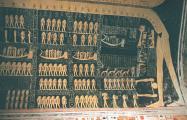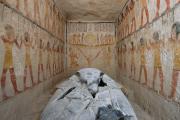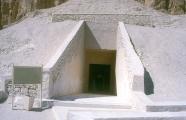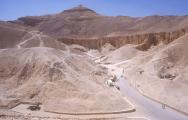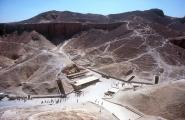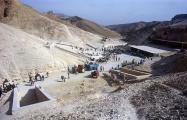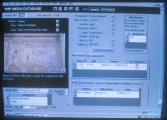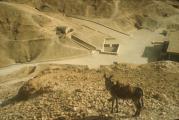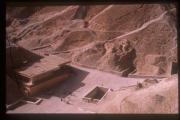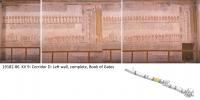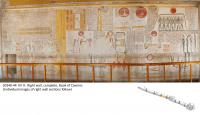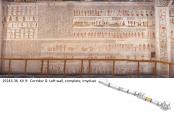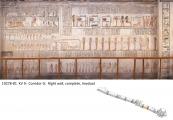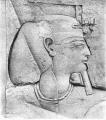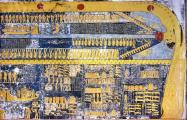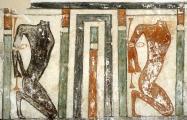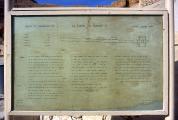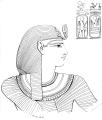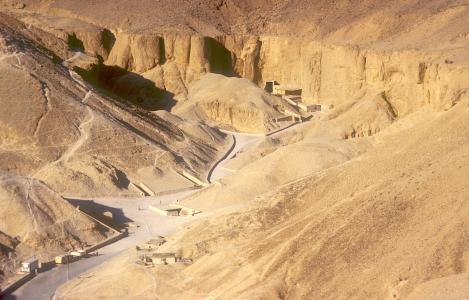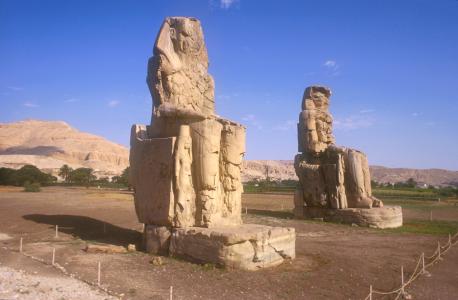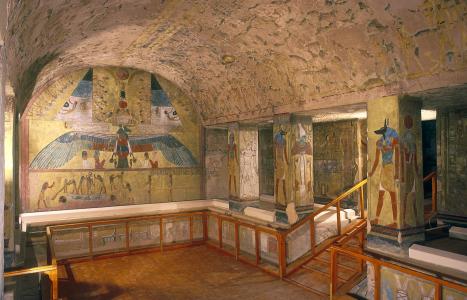KV 09
Rameses V and Rameses VI
Entryway A
See entire tombThe entrance to KV 9, located at the base of a sloping hill, is undecorated. It slopes gradually from the valley floor to gate B. The entrance walls have been plastered and have graffiti on them. On the left (south) side, high up near the overhang, traces of an ancient workplan were found that depict the vault of the burial chamber J ceiling.
Porter and Moss designation:
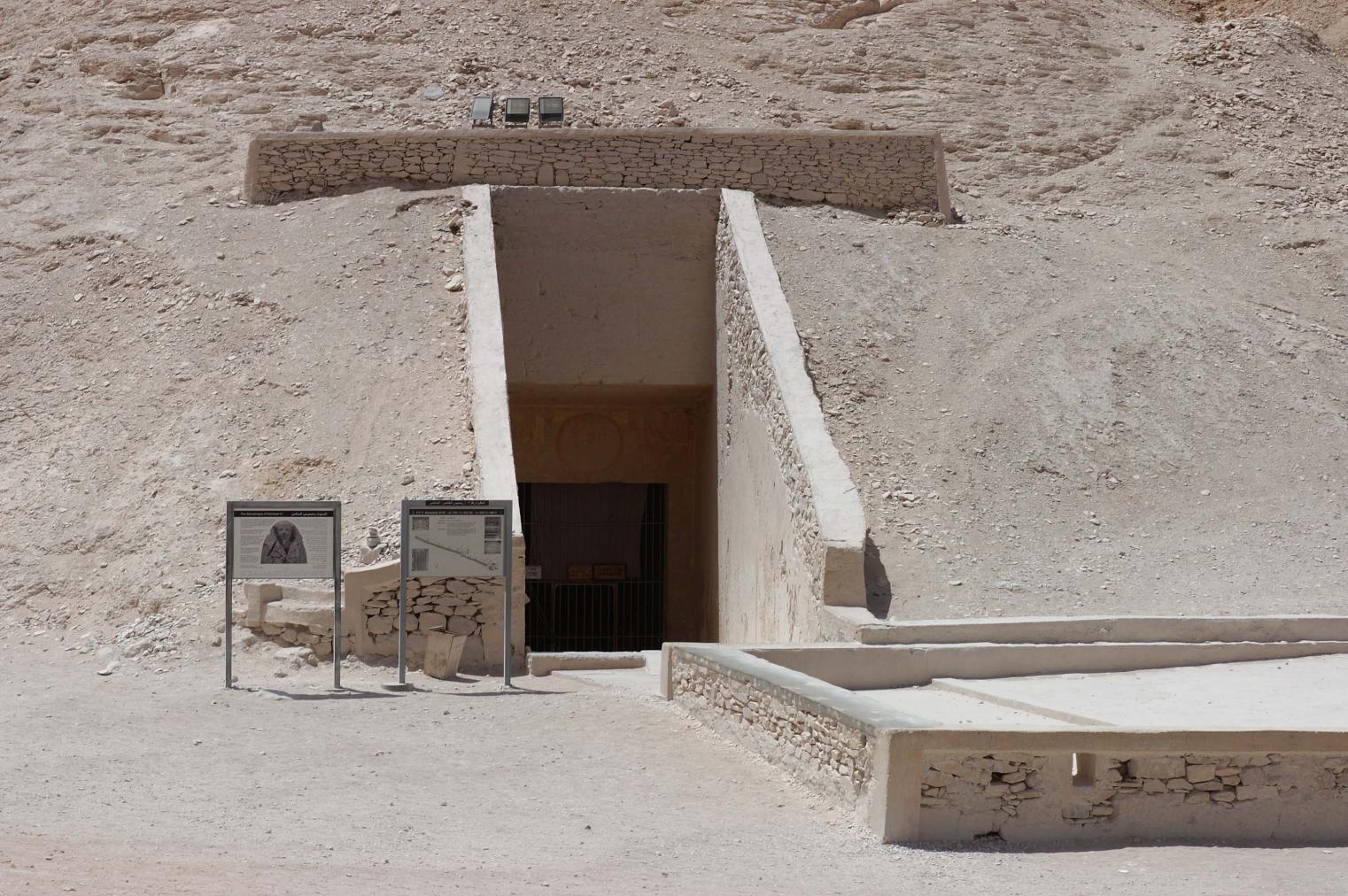
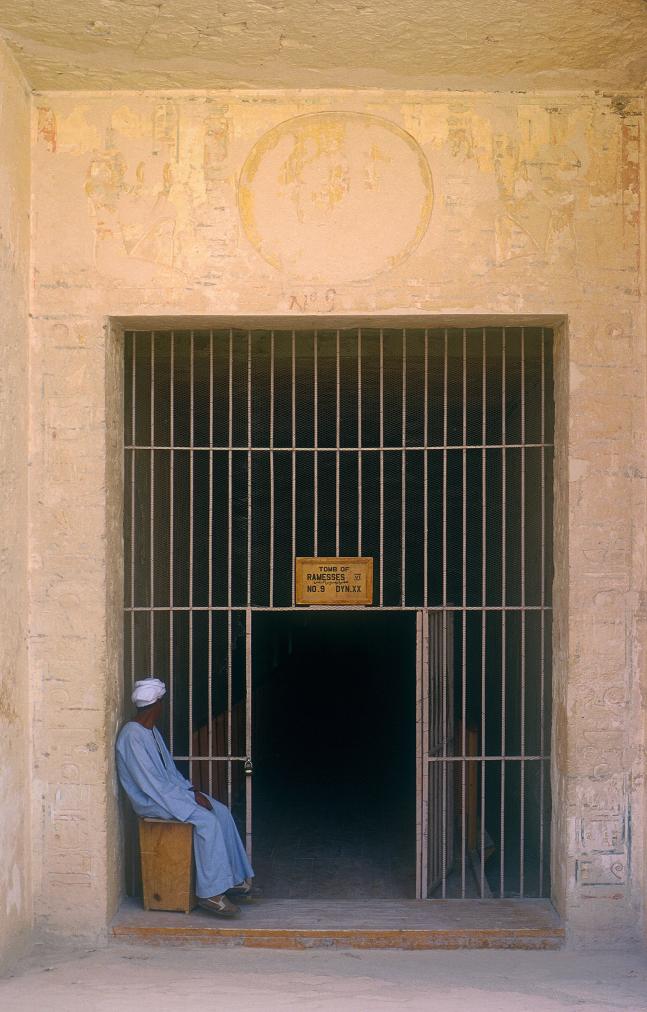
Gate B
See entire tombA large overhang protrudes over the entrance from gate B. There are door pivot holes and a ceiling recess at the beginning of corridor B, indicating that the gate was to be closed by large wooden double doors. A large sun disk containing a scarab and a ram-headed man was carved on the lintel, flanked by kneeling figures of Isis and Nephthys and the cartouches of Rameses VI. No soffit decoration survives. The names of Rameses VI are on the reveals and thicknesses, cut over those of Rameses V.
Porter and Moss designation:
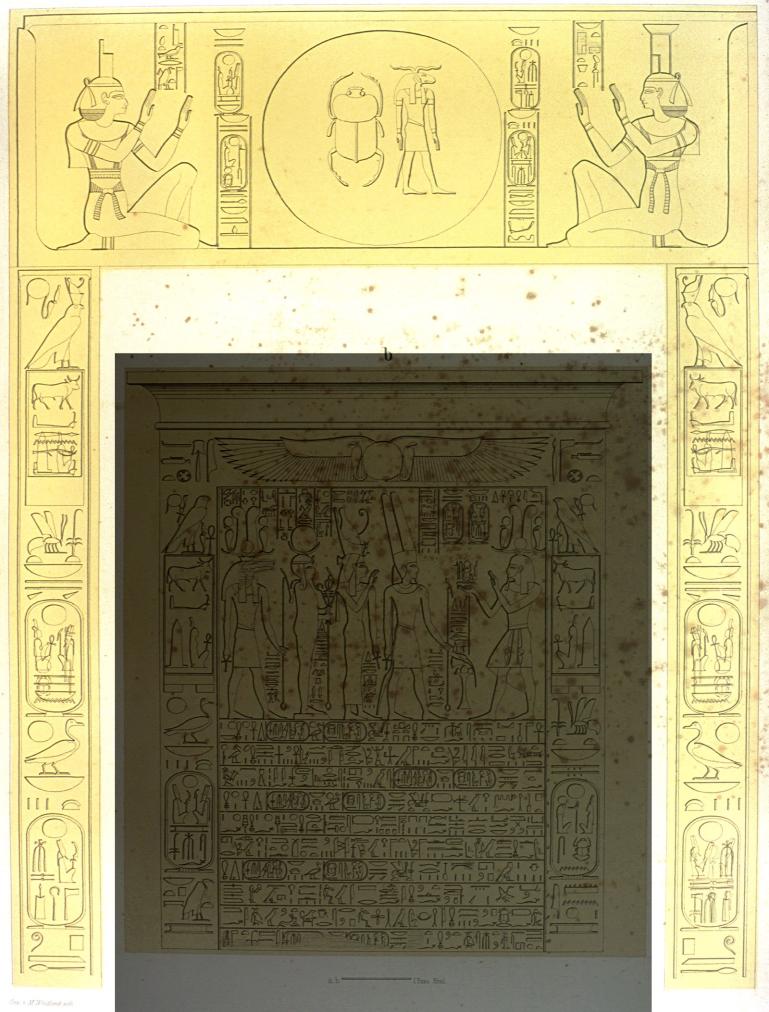
Corridor B
See entire tombCorridor B has a gently sloping floor that ends in a shallow ramp leading into the next gateway. The left (south) wall contains two scenes: Rameses VI (originally Rameses V) before Ra-Horakhty, and Osiris, followed by the initial scene and three registers of the first division (P)/first and second hours (H) and the second division (P)/third hour (H) of the Book of Gates. On the right (north) wall, Rameses VI offers incense to Ra-Horakhty and Osiris followed by five registers of the first division of the Book of Caverns. The corridor also has an astronomical ceiling. Its walls are covered with graffiti.
Porter and Moss designation:
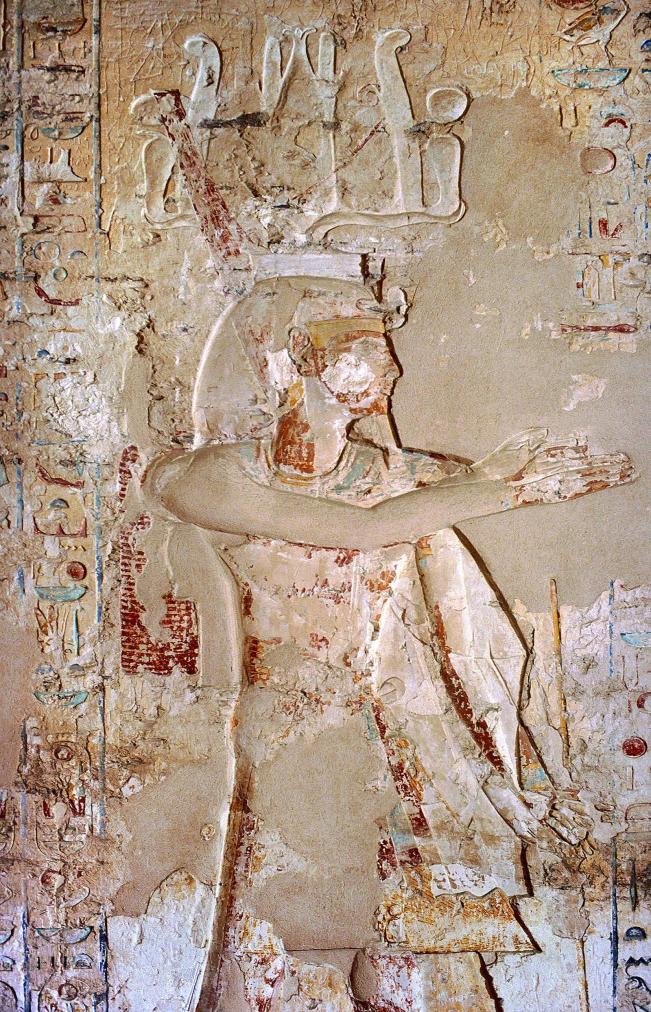
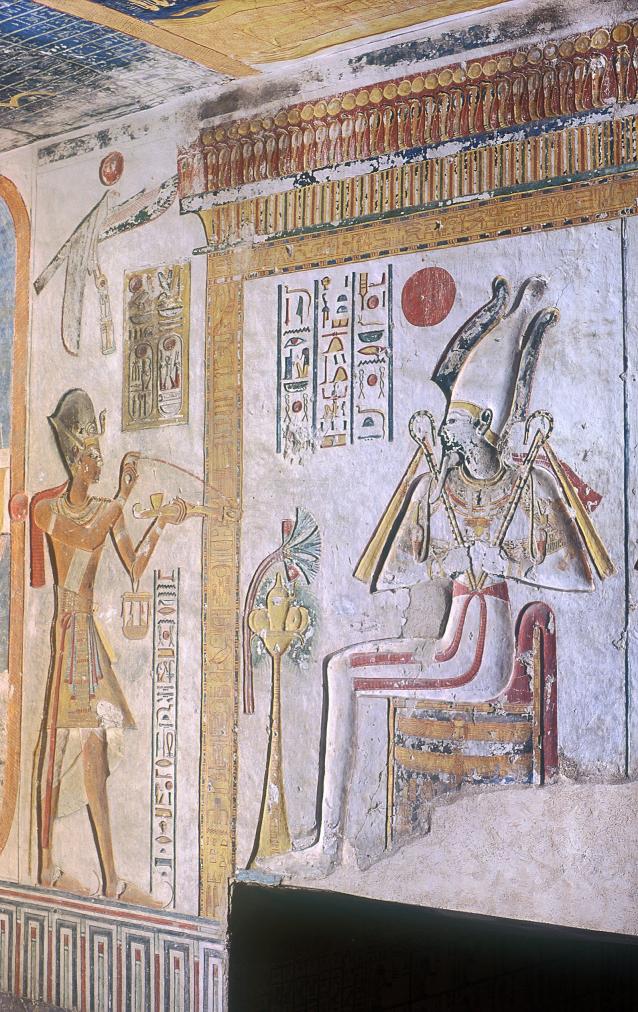
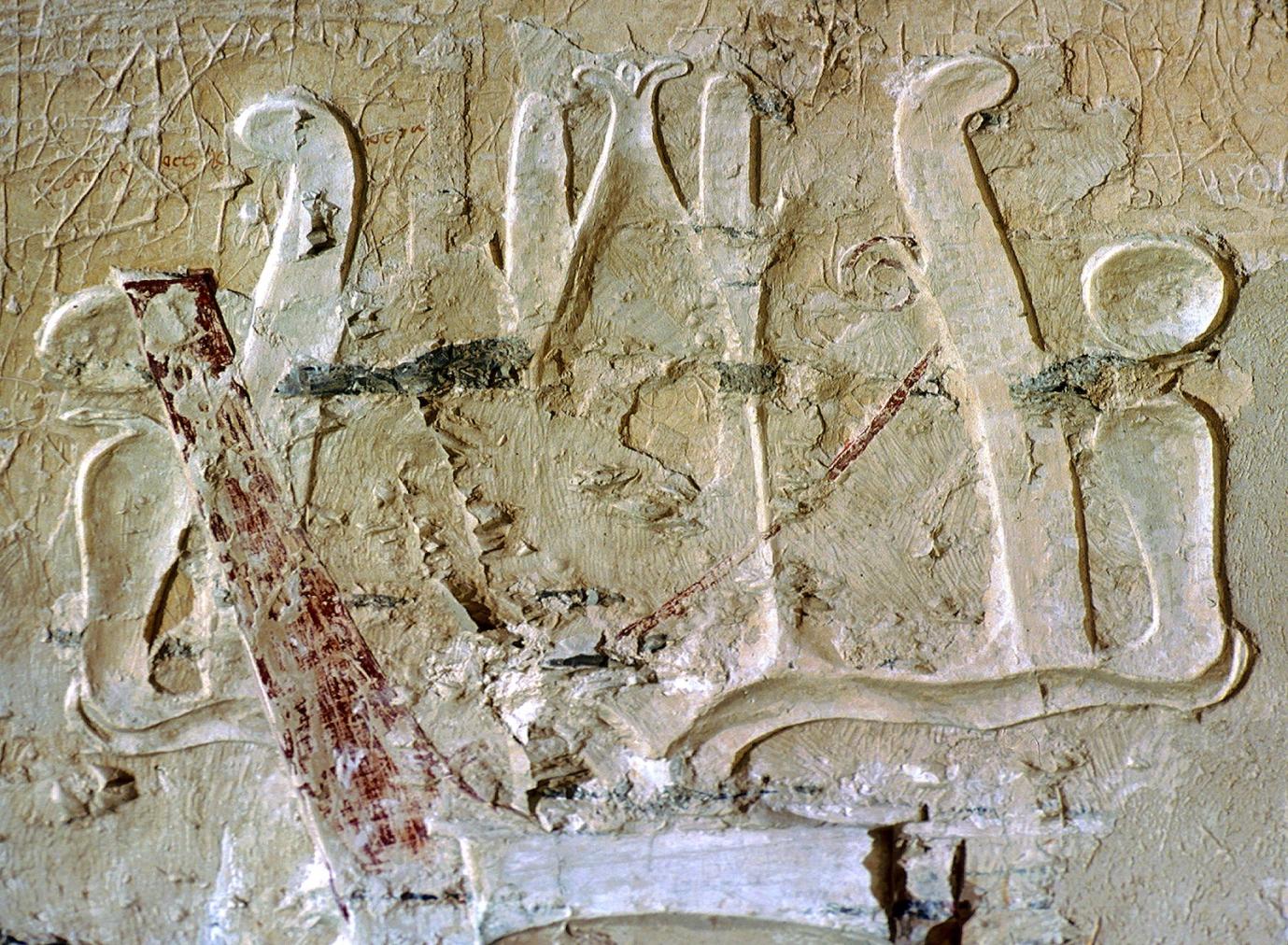
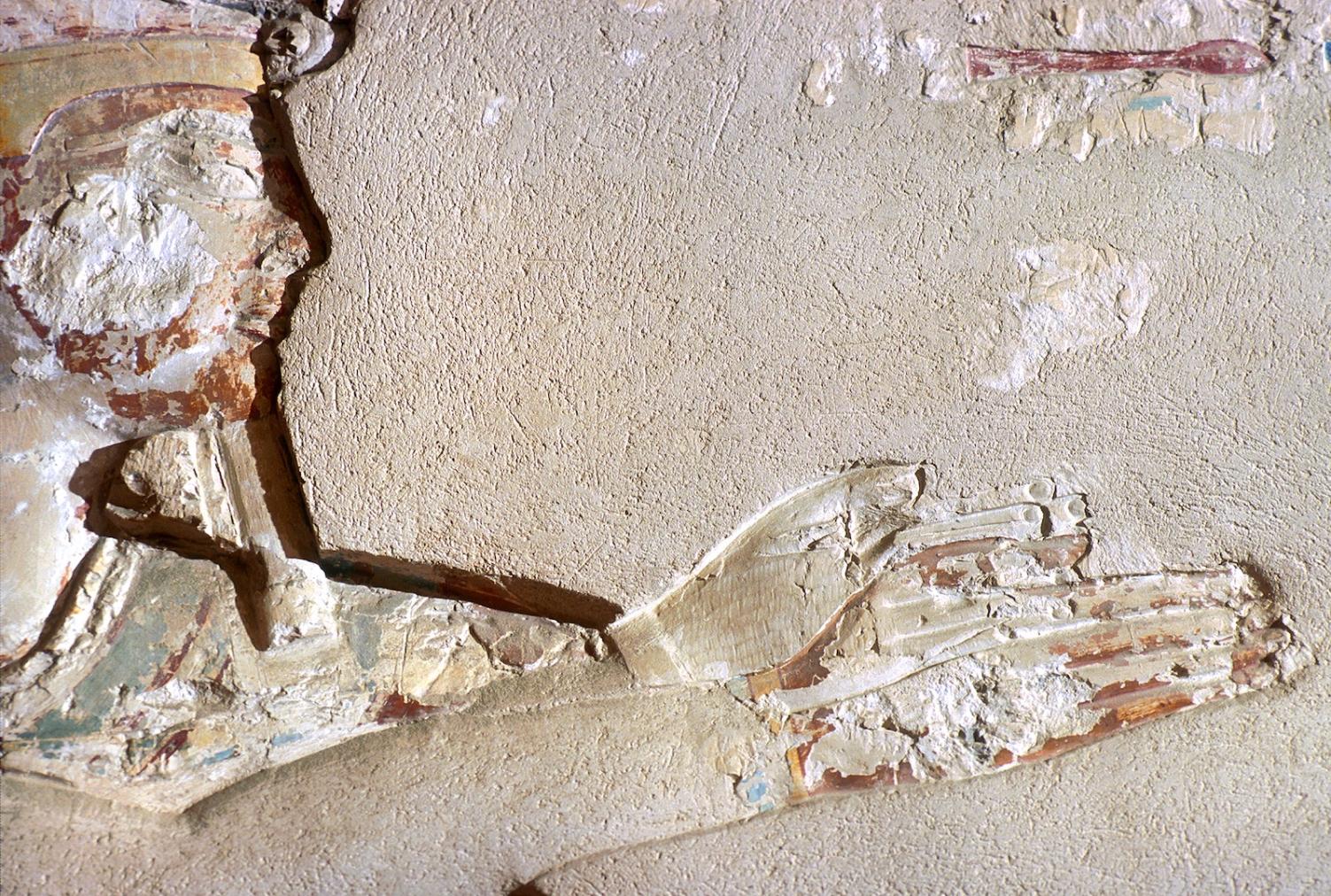
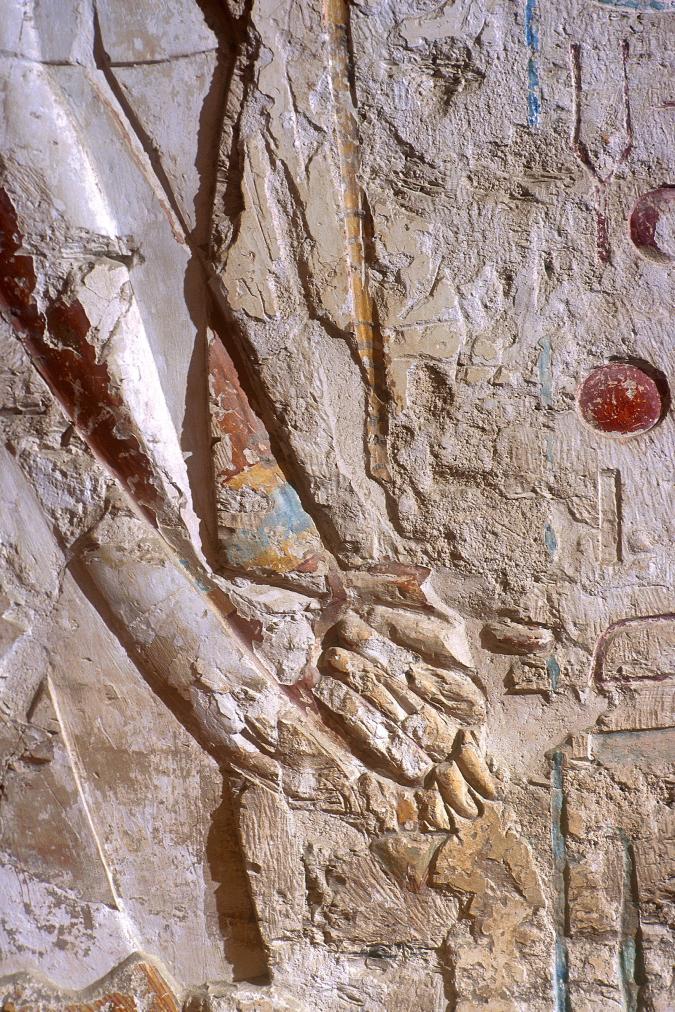
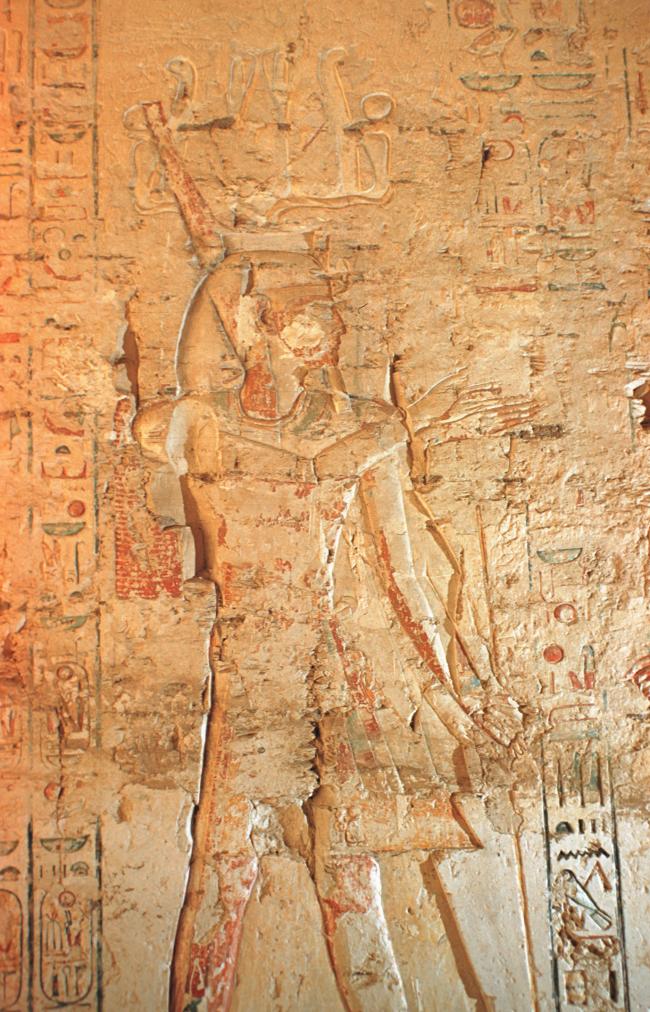
Gate C
See entire tombThe gate is decorated with a winged disk on the lintel, the names of Rameses VI on the reveals and thicknesses (cut over the names of Ramesses V on the latter), and a vulture on the soffit. Door pivot holes show that large wooden double doors were to close the gate.
Porter and Moss designation:
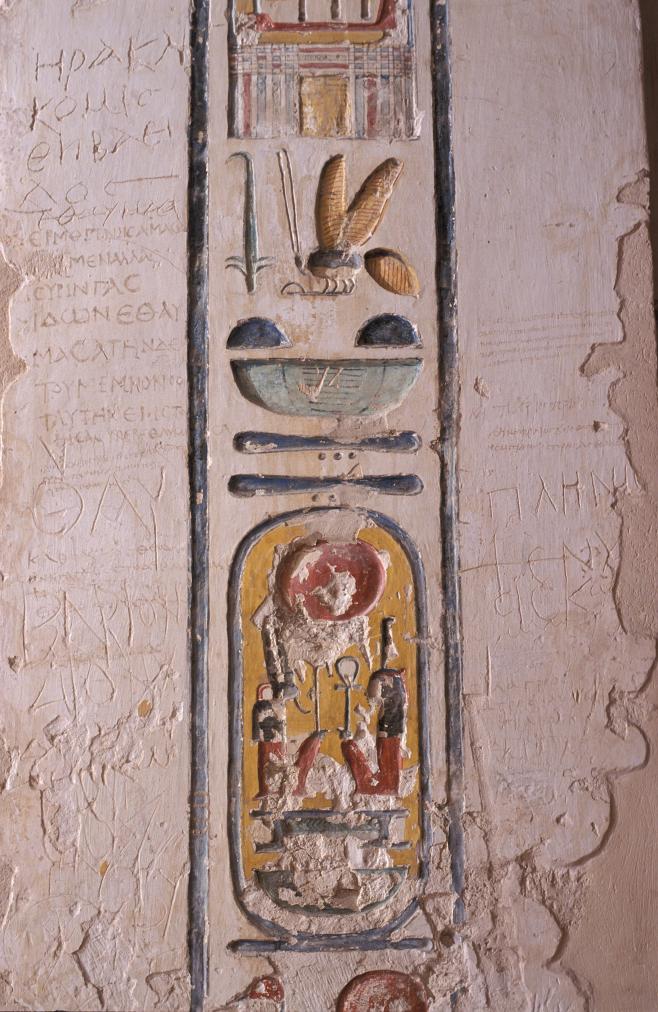
Corridor C
See entire tombThere are a pair of horizontal, rectangular recesses high in the walls. The corridor has a flat floor with a shallow ramp at its west end.
The recess in the left (south) wall contains part of the upper register of the third division (P)/fourth hour (H) of the Book of Gates. Beyond the recess, the upper part of the left wall contains the fourth division (P)/fifth hour (H) of the Book of Gates in three registers, plus the fifth gate with the Judgement Hall of Osiris. The lower part of the left wall contains three registers of the fifth division (P)/sixth hour (H) of the Book of Gates. The right (north) wall is decorated with the text of the second division and the beginning of the third division of the Book of Caverns. The corridor has an astronomical ceiling showing circumpolar constellations and decans.
Porter and Moss designation:
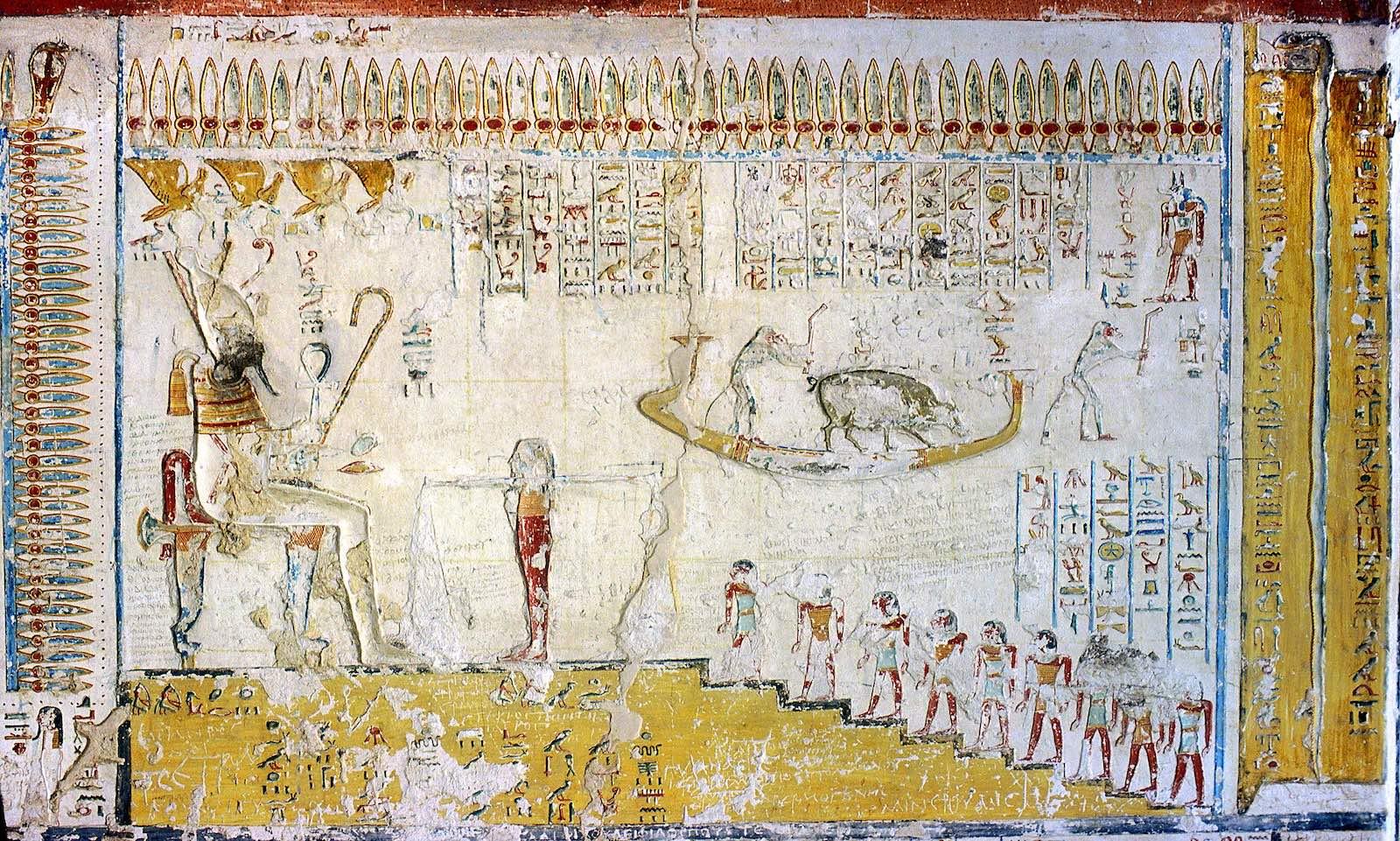
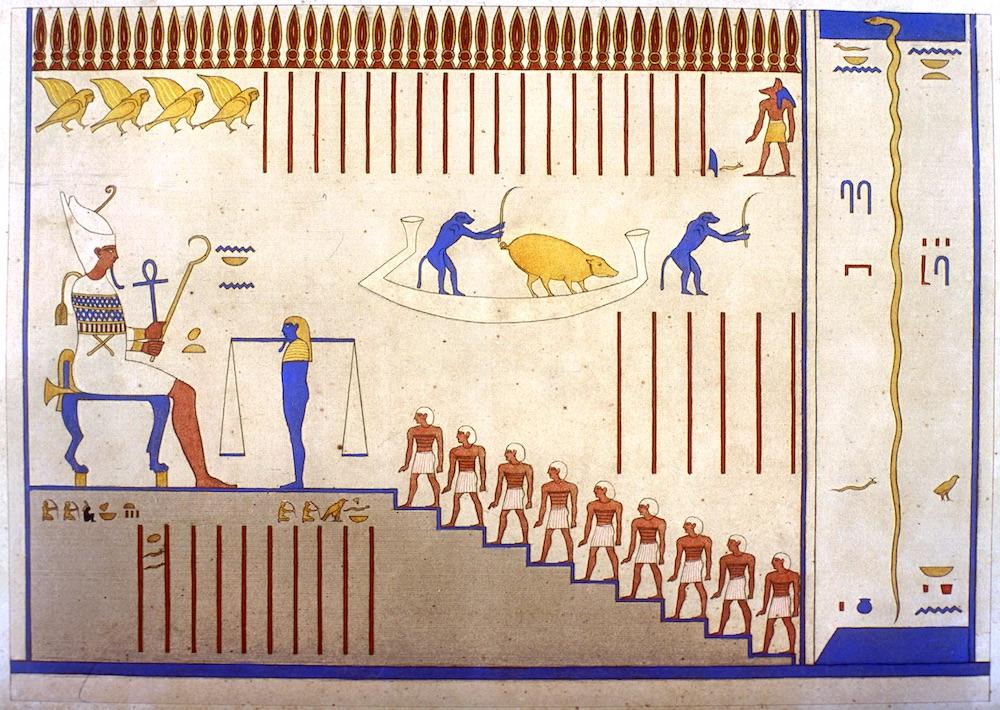
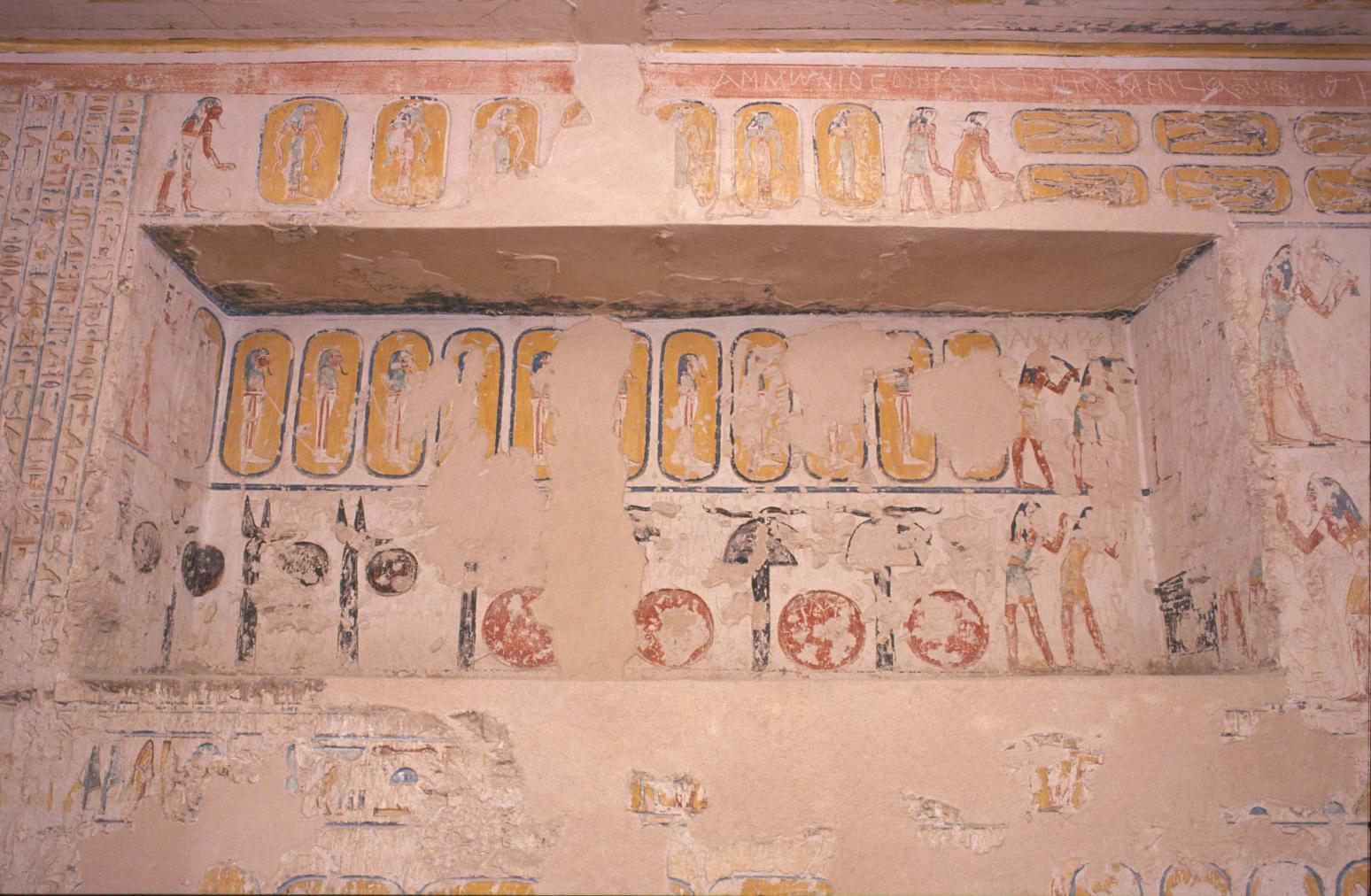
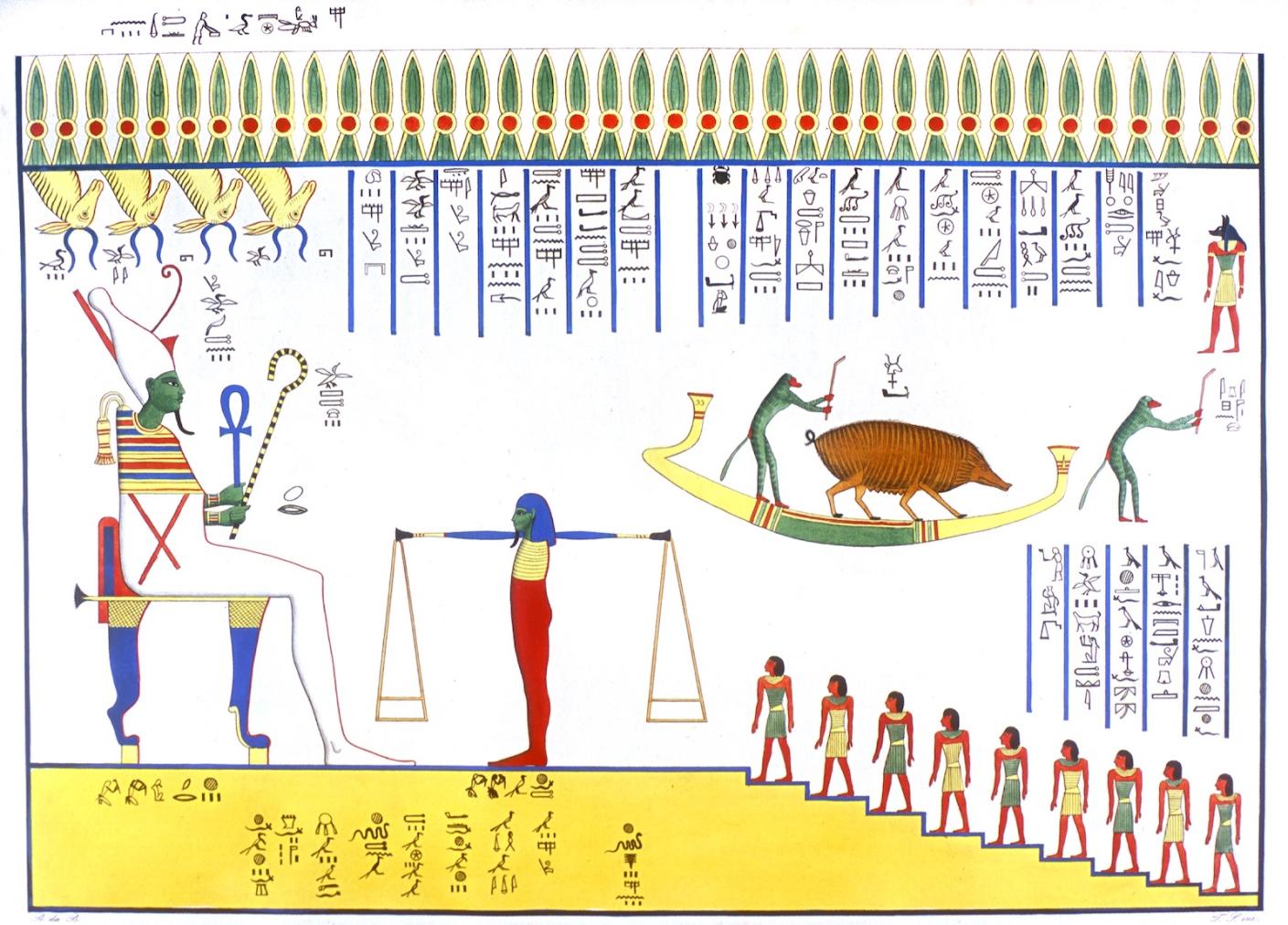

Gate D
See entire tombDoor pivot holes show that large wooden double doors was to close this gate. There is a winged disk on the lintel, the names of Rameses VI on the reveals and thicknesses (where they are cut over the names of Rameses V on the latter), and a vulture on the soffit.
Porter and Moss designation:
Corridor D
See entire tombThe floor at the rear of this corridor ends with a ramp. Above the descent, vertical rectangular recesses are cut into the walls opposite each other before gate E.
The left (south) wall contains the sixth division (P)/seventh hour (H) and seventh division (P)/sixth hour (H) of the Book of Gates, while the recess in the third register is inscribed with an excerpt of the Book of the Heavenly Cow. The right (east) half of the right (north) wall is decorated in the upper part with the introductory text to the fifth division of the Book of Caverns and in the lower part with the fourth division in three registers. The recess in the third register is decorated with the texts of the fifth division. The ceiling depicts the legs and part of the elongated figure of Nut bending over two registers containing the beginning of the Book of the Day and the end of the Book of the Night.
Porter and Moss designation:
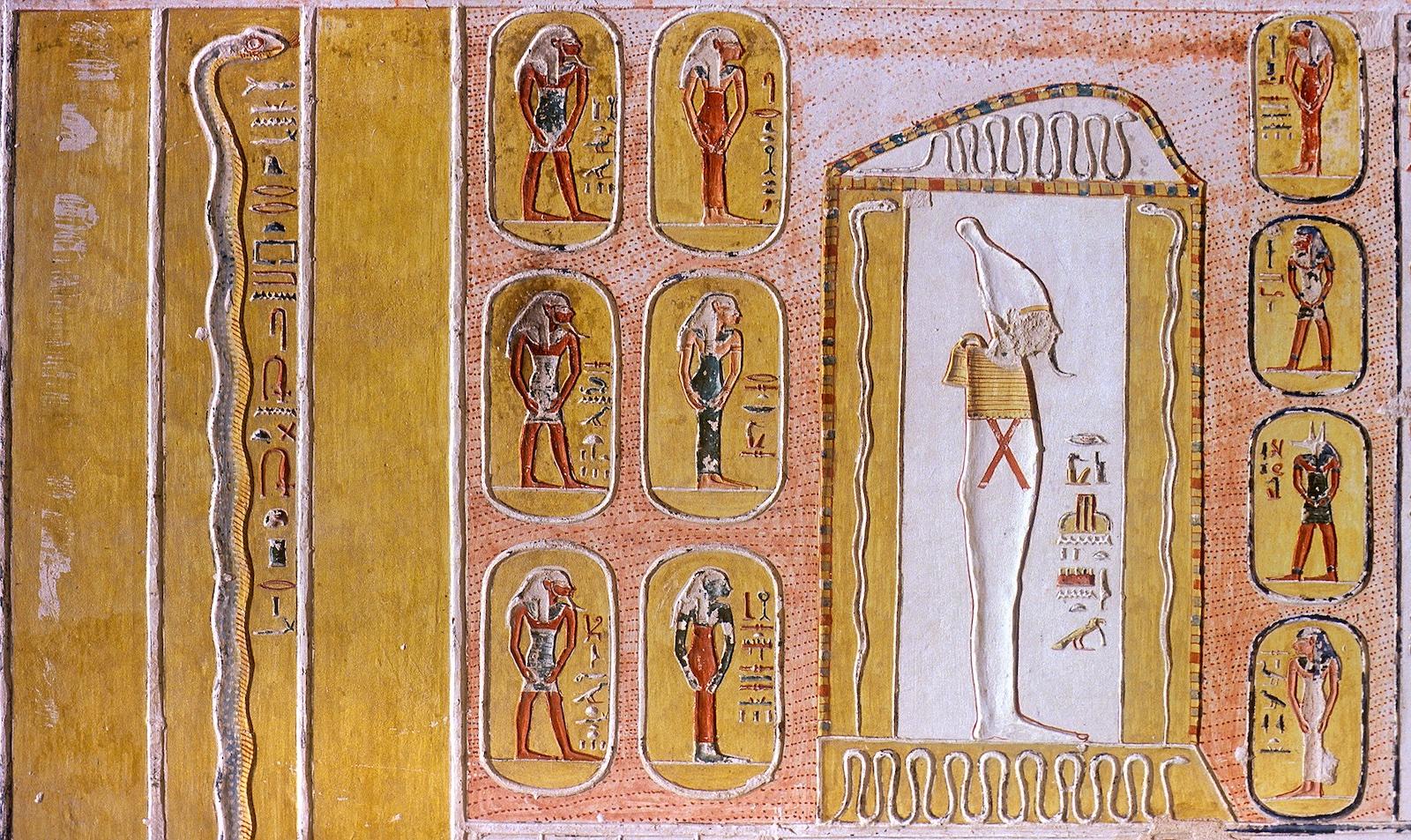
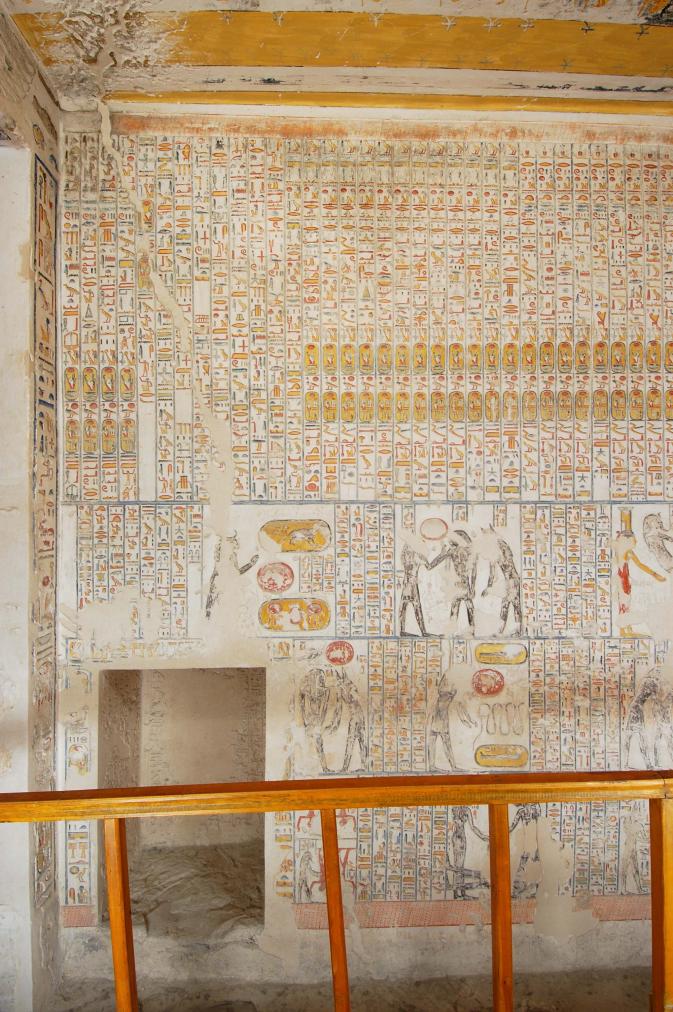
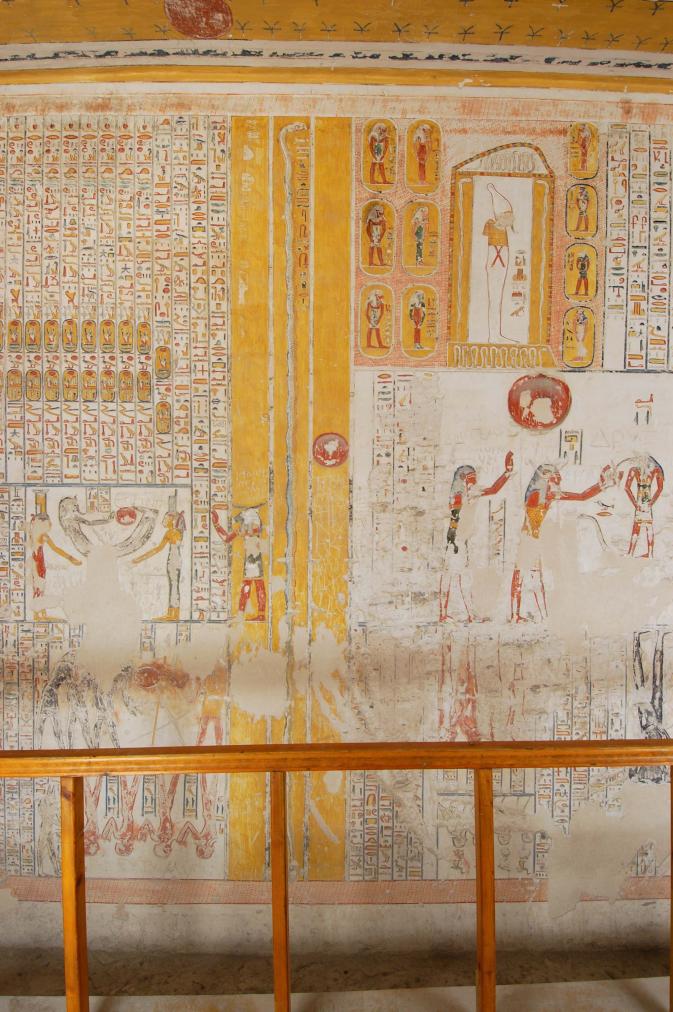
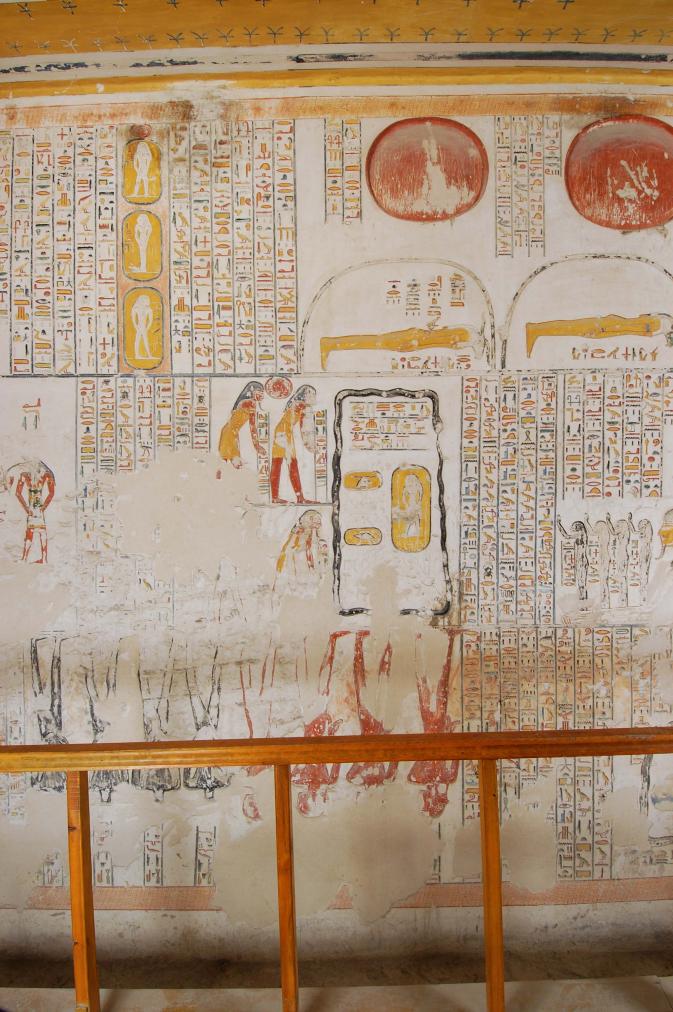
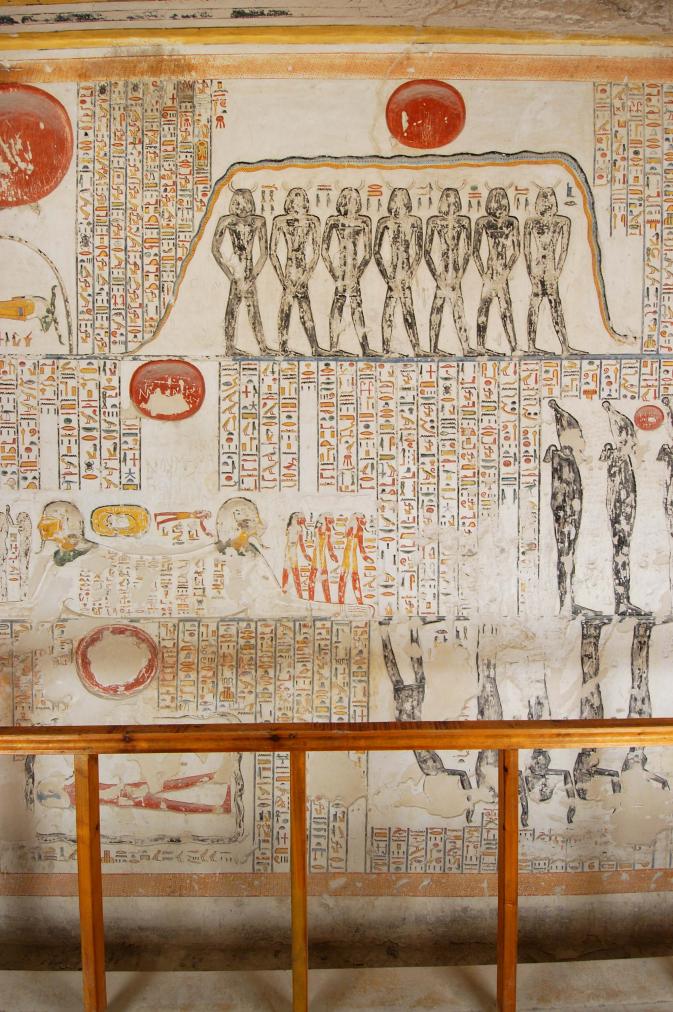
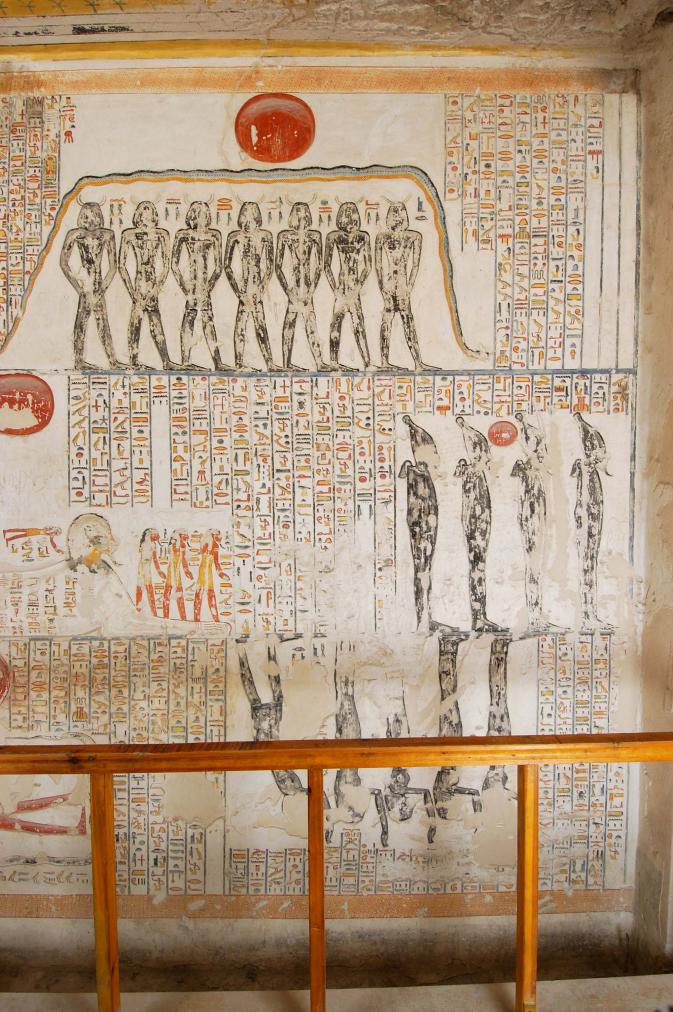
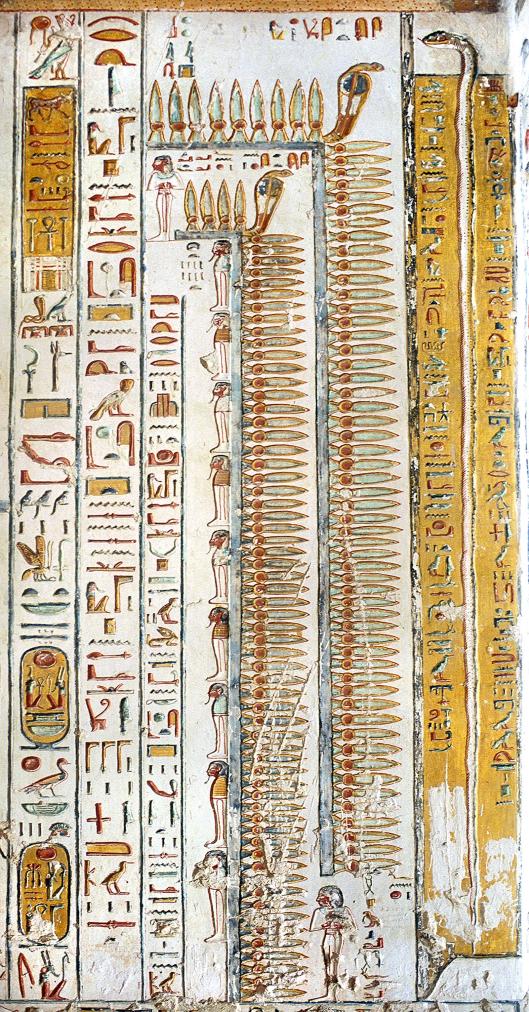
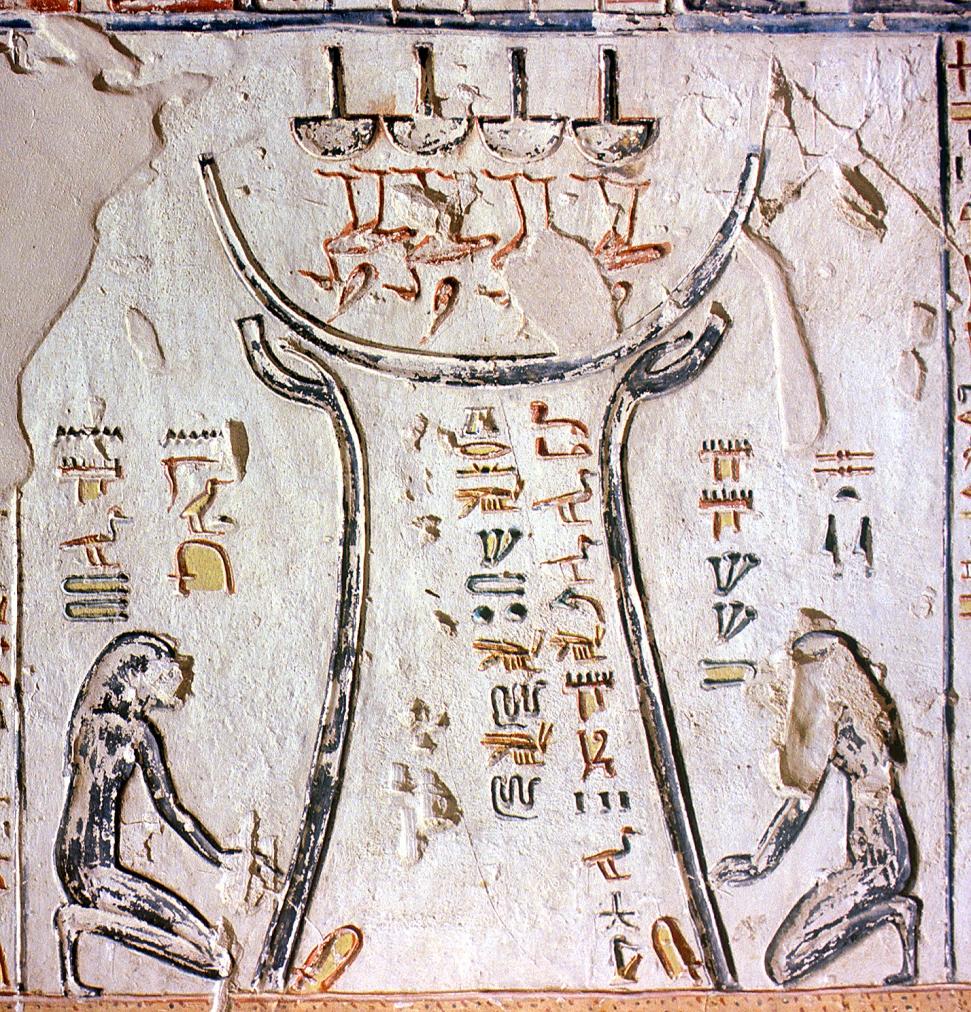
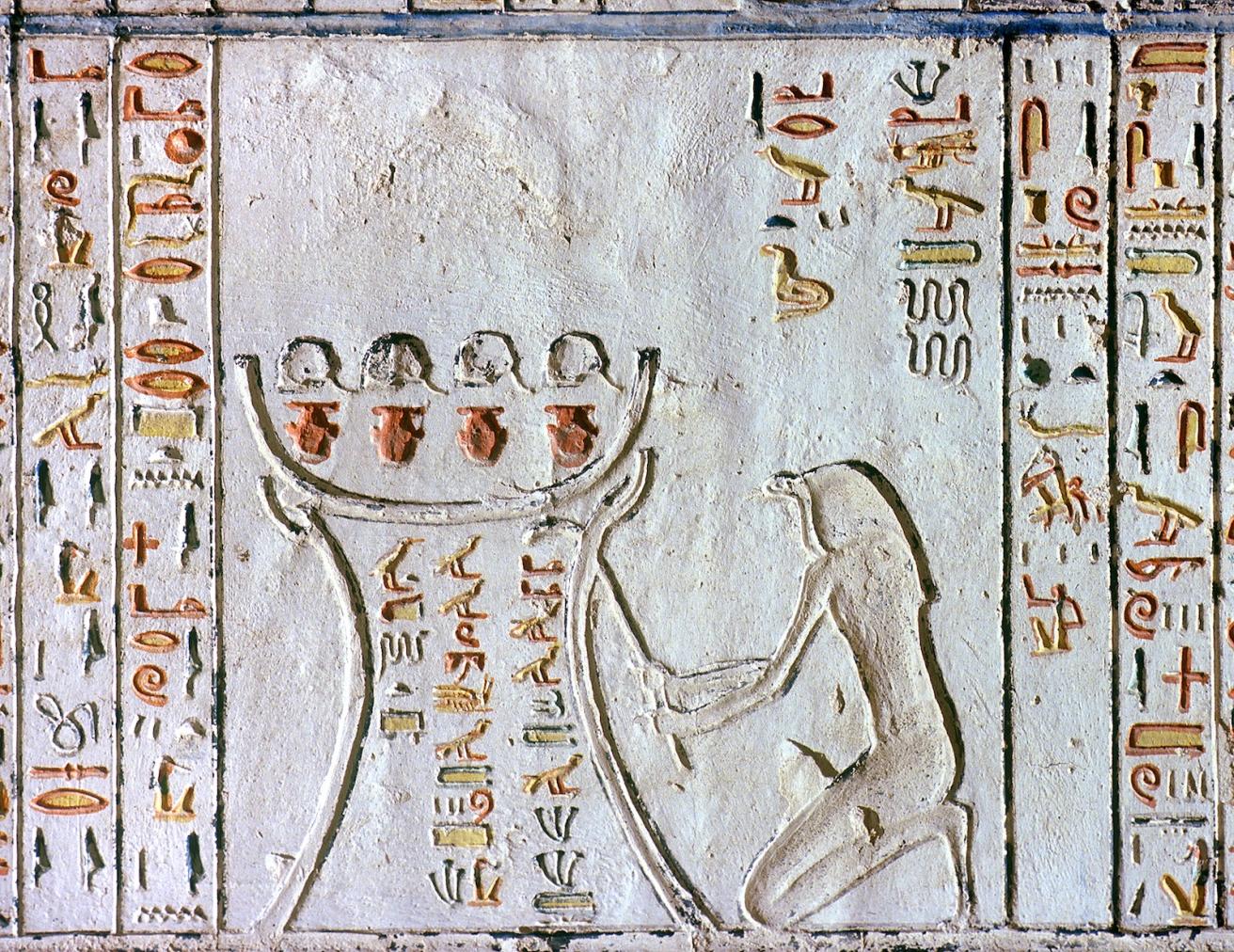
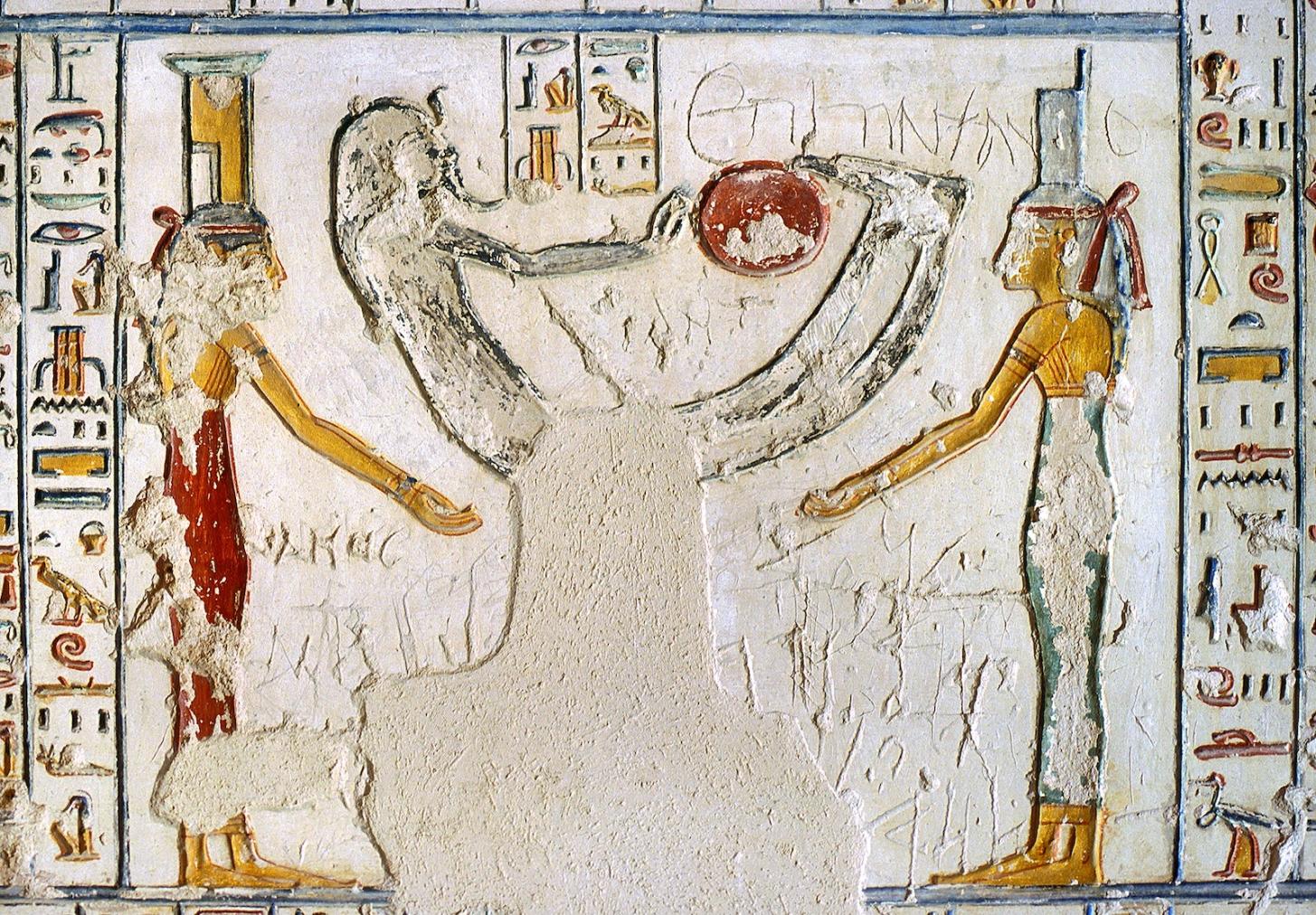
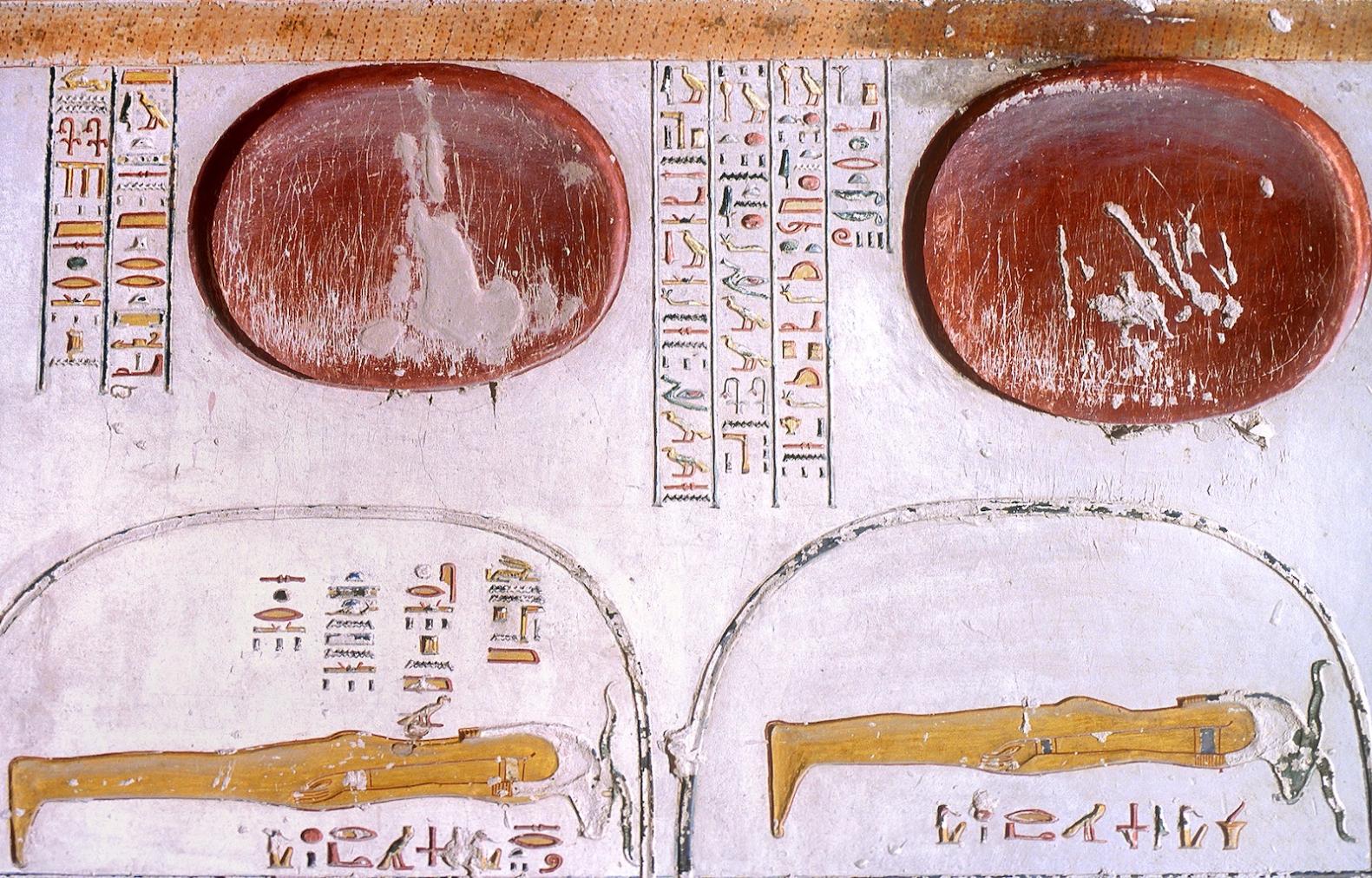
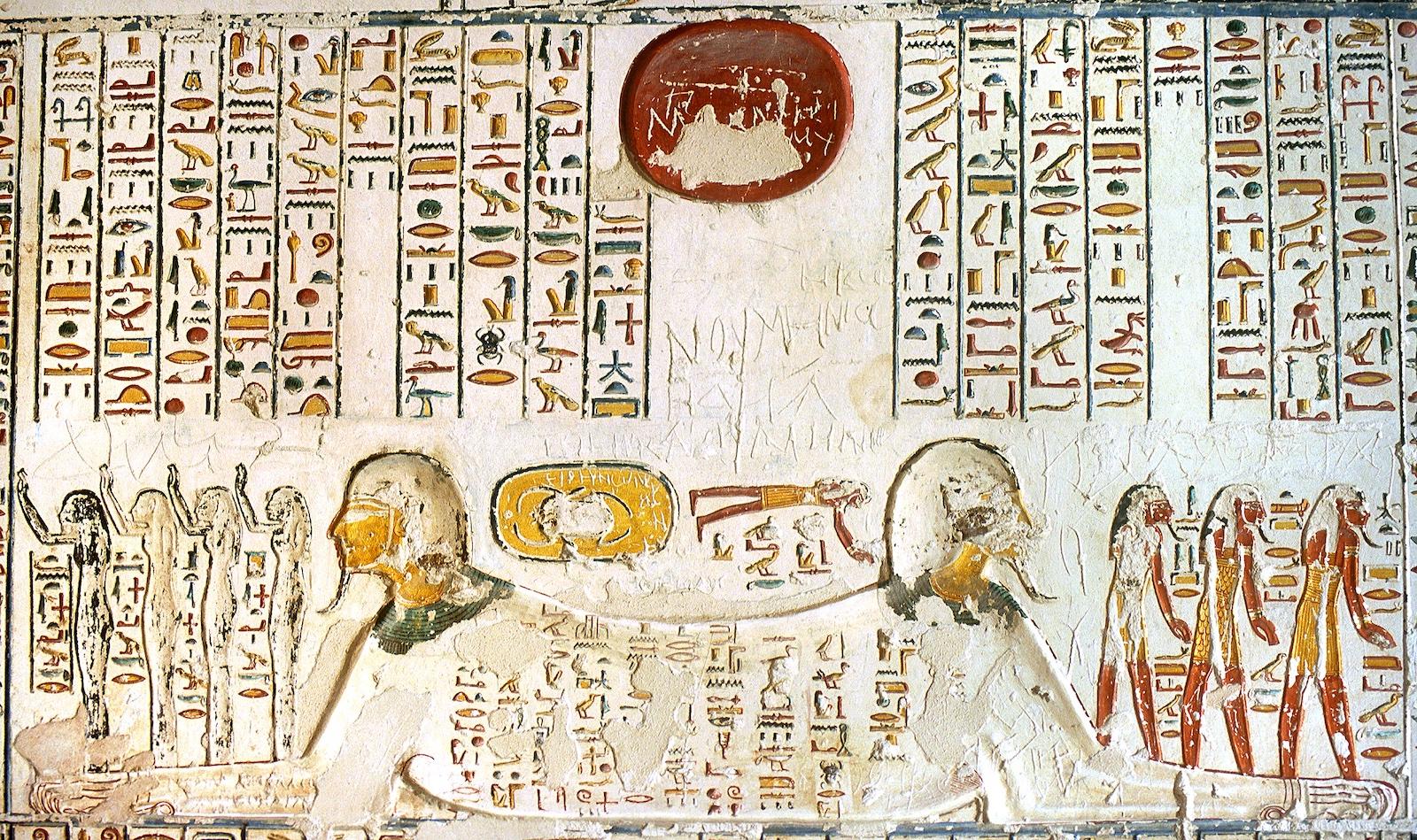
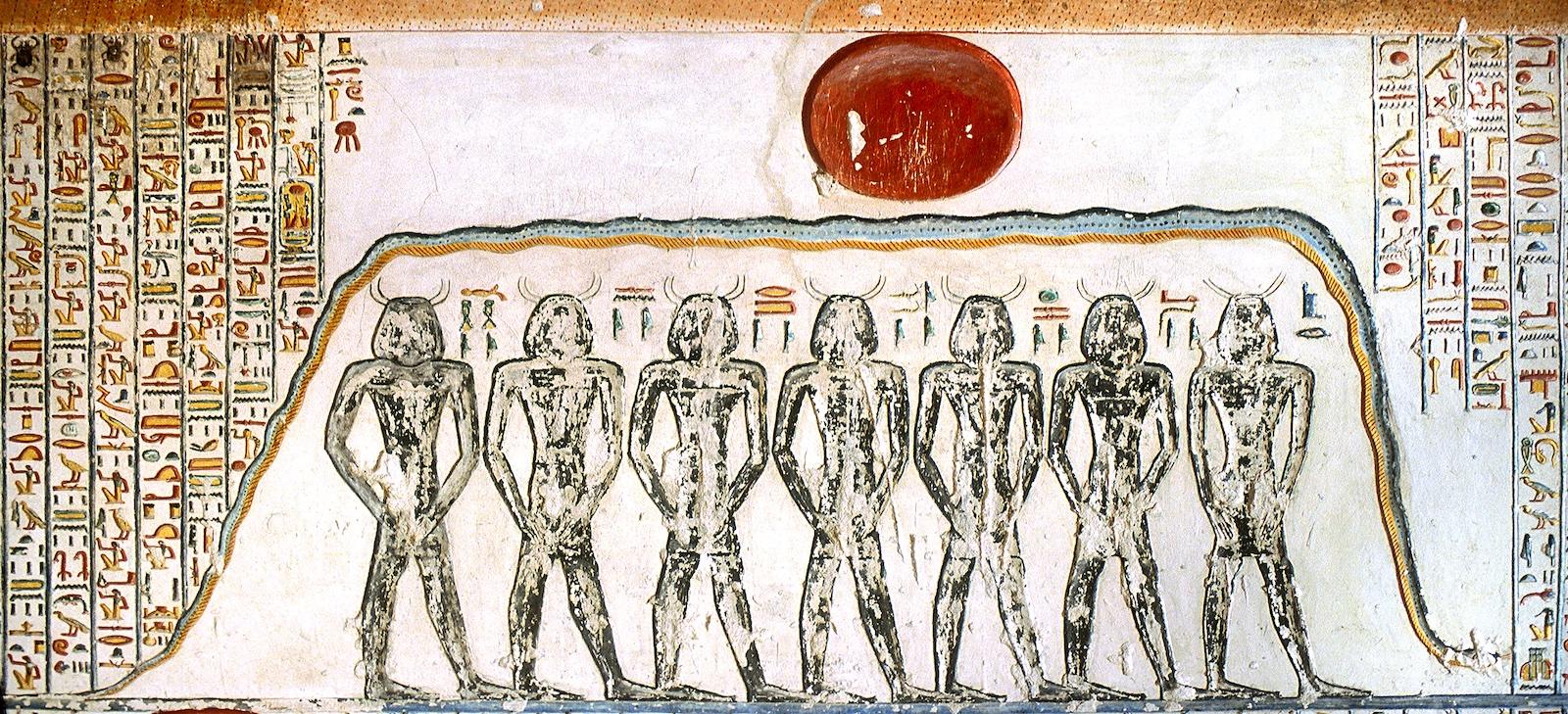
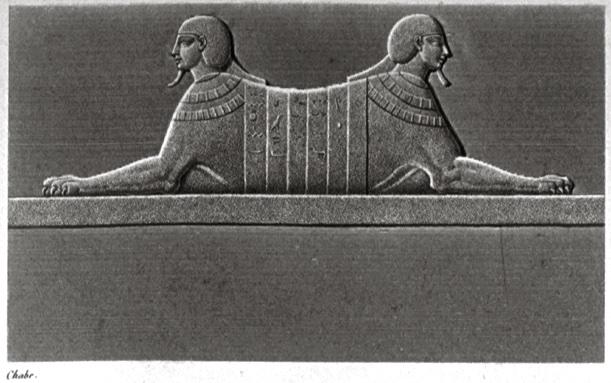
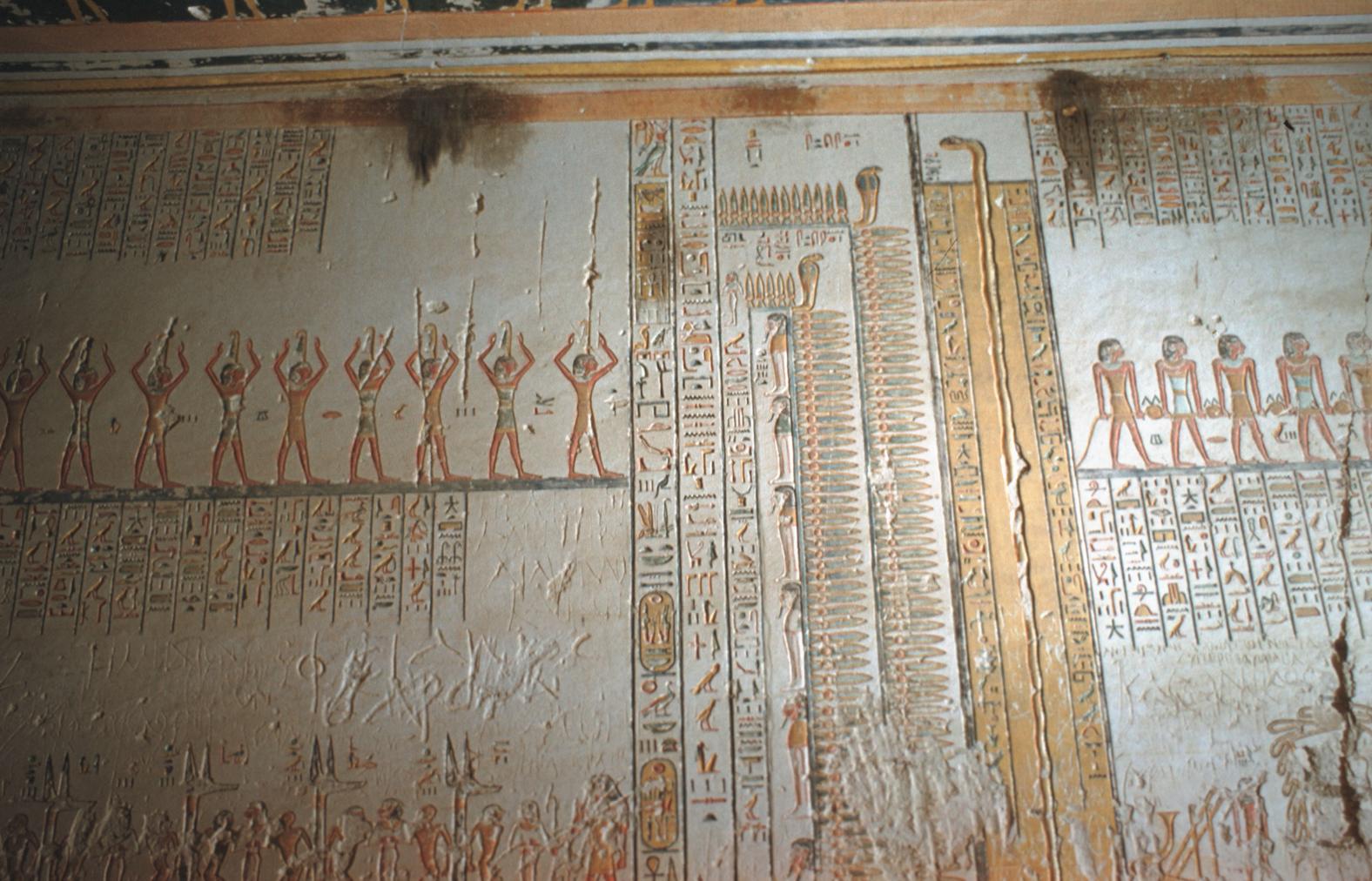
Gate E
See entire tombThere is a winged disk on the lintel, the names of Rameses VI on the reveals and thicknesses (where they are carved over the names of Rameses V on the latter), and a vulture on the soffit.
Porter and Moss designation:
Chamber E
See entire tombNo well shaft was cut into the floor, although the depth of the floor in the central part is lower than the sides. The left (south) half of the chamber contains the eighth division (P)/ninth hour (H) and ninth division (P)/tenth hour (H) of the Book of Gates. The right (north) half of the chamber contains the fifth division of the Book of Caverns. The ceiling continues the Books of the Day and the Night.
Porter and Moss designation:
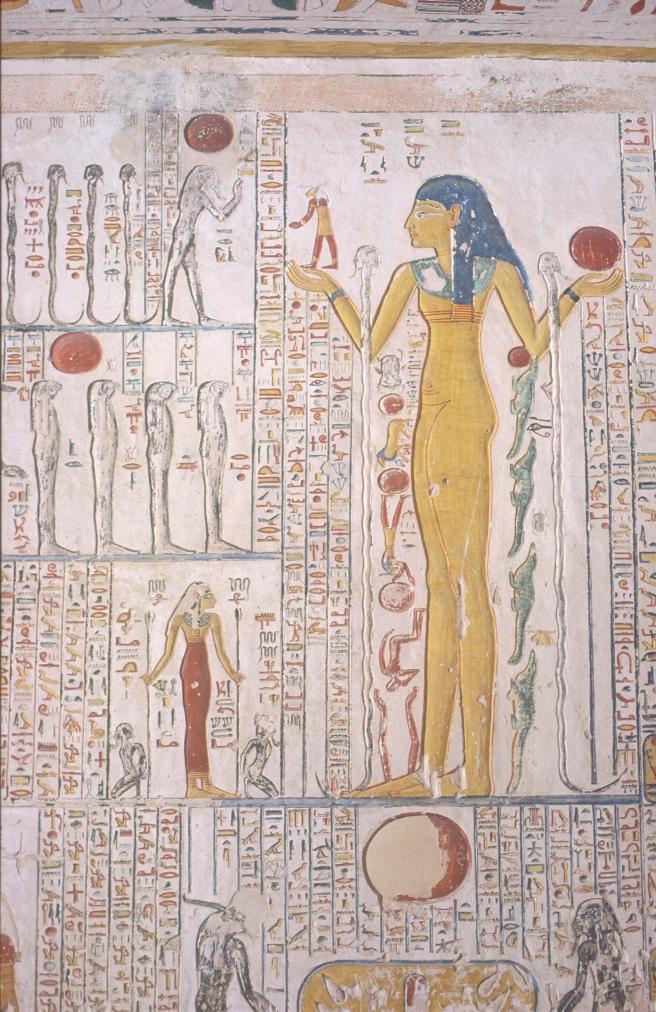
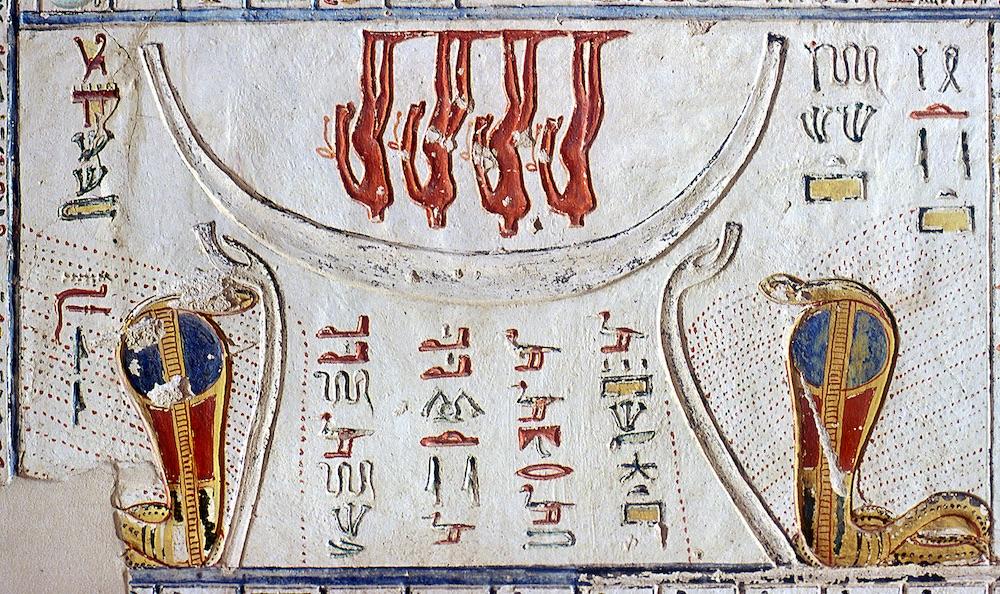
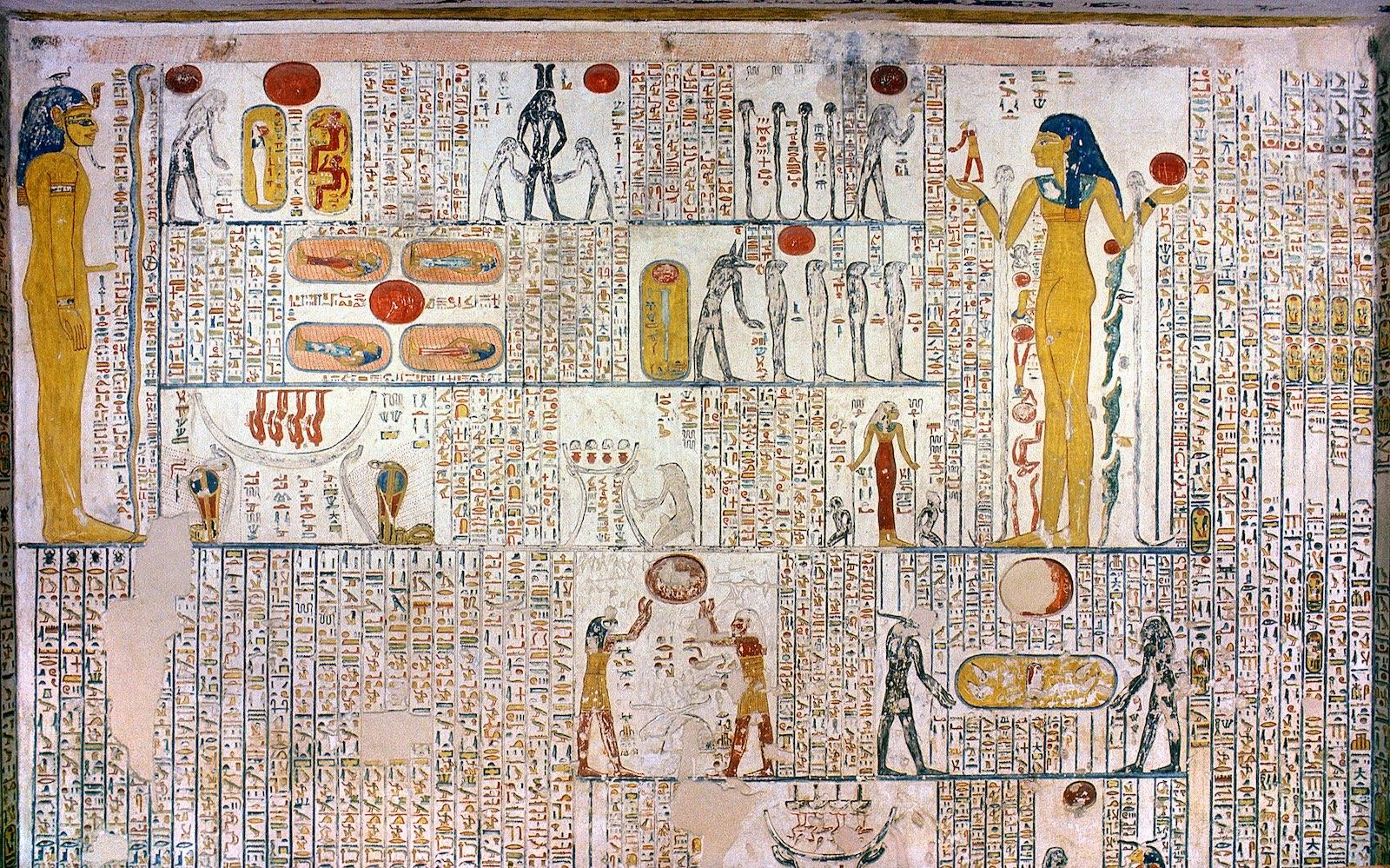
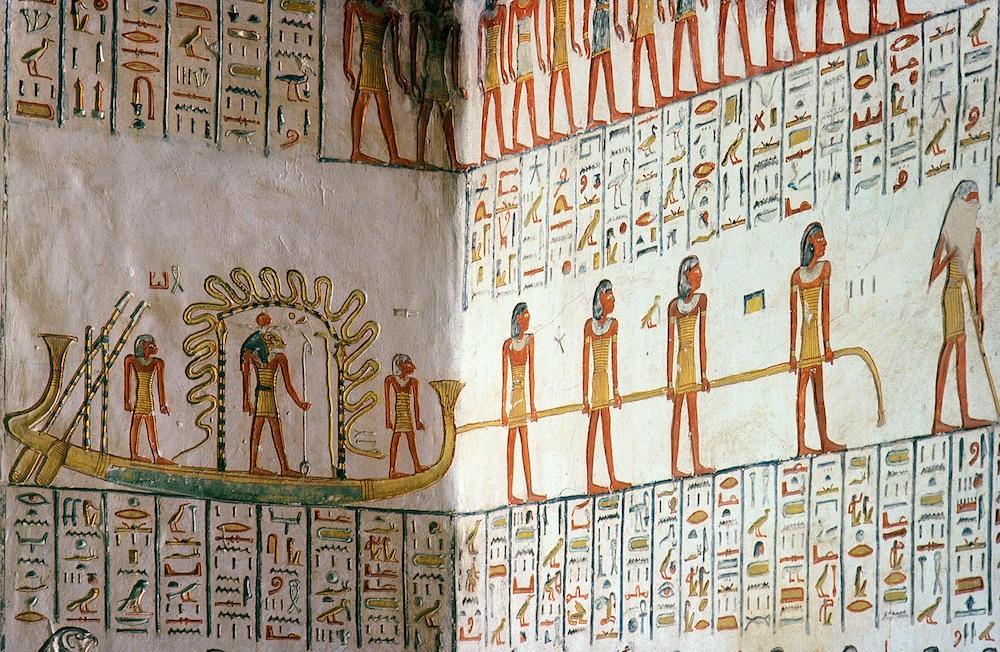
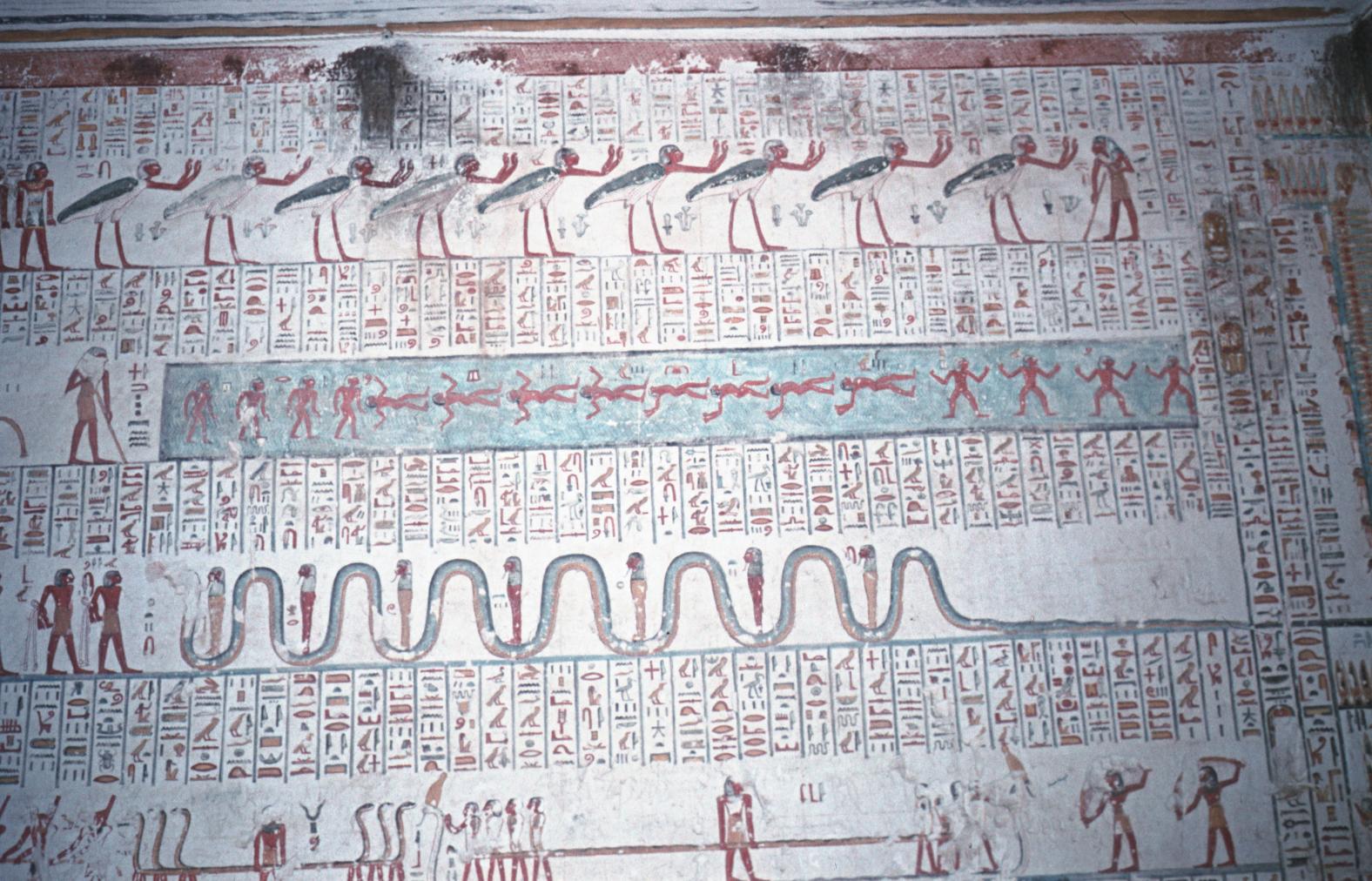
Gate F
See entire tombThere is a winged sun disk on the lintel, the names of Rameses VI on the reveals and outer thicknesses, and a vulture on the soffit. A door pivot hole on the right (north) side shows that there was to have been a large single door here.
Porter and Moss designation:
Pillared chamber F
See entire tombA central descent divides the chamber in half, and is flanked by four pillars, two on each side.
The left (south) wall of the chamber is decorated with the tenth division (P)/eleventh hour (H), eleventh division (P)/twelfth hour (H), and twelfth division (P)/closing scene (H) of the Book of Gates. Three registers on the right (north) wall and pillar 4 feature the sixth division of the Book of Caverns. At the center of the rear (west) wall, above the descent, is a double scene of Rameses VI censing and libating before Osiris. The reliefs on the pillars show Rameses VI before Khonsu, Amen-Ra, Meretseger, Ptah-Sokar-Osiris, Ra-Horakhty, Ptah, and Thoth.
The ceiling in the central portion shows the head and arms of Nut above the end of the Book of the Day and the beginning of the Book of the Night. There are astronomical figures including constellations and decans, star clocks and decan lists on the ceilings of the side portions of the chamber.
Porter and Moss designation:
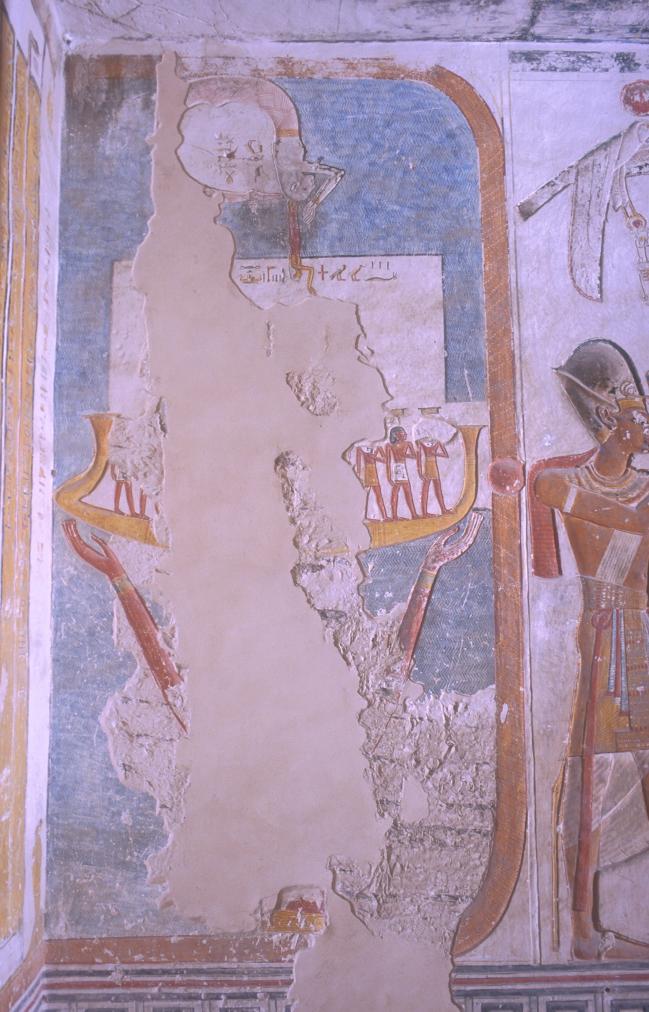
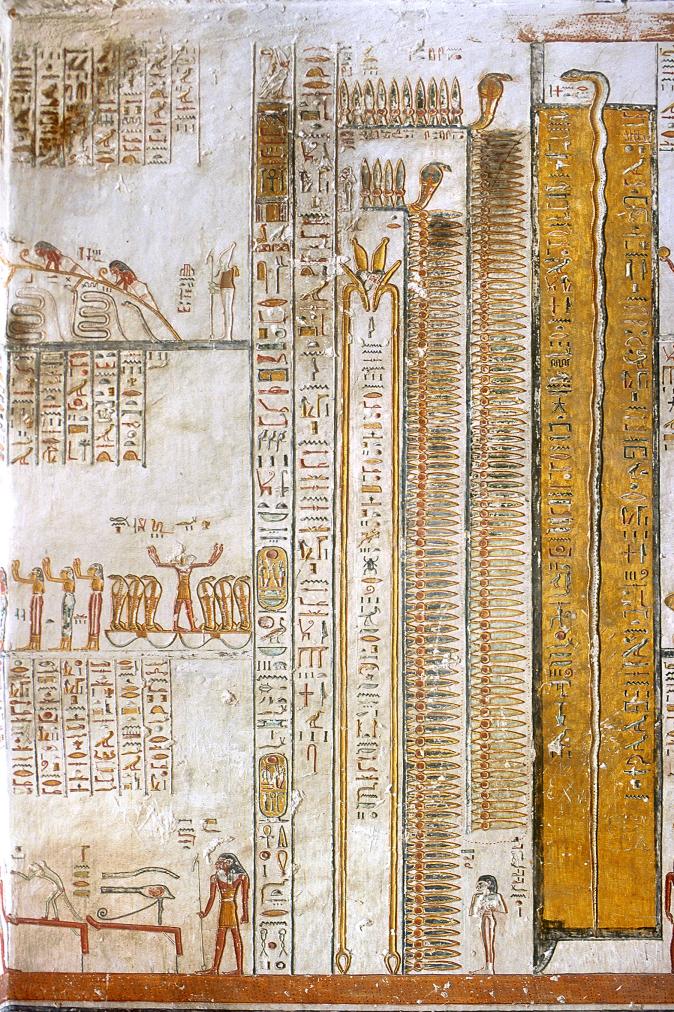
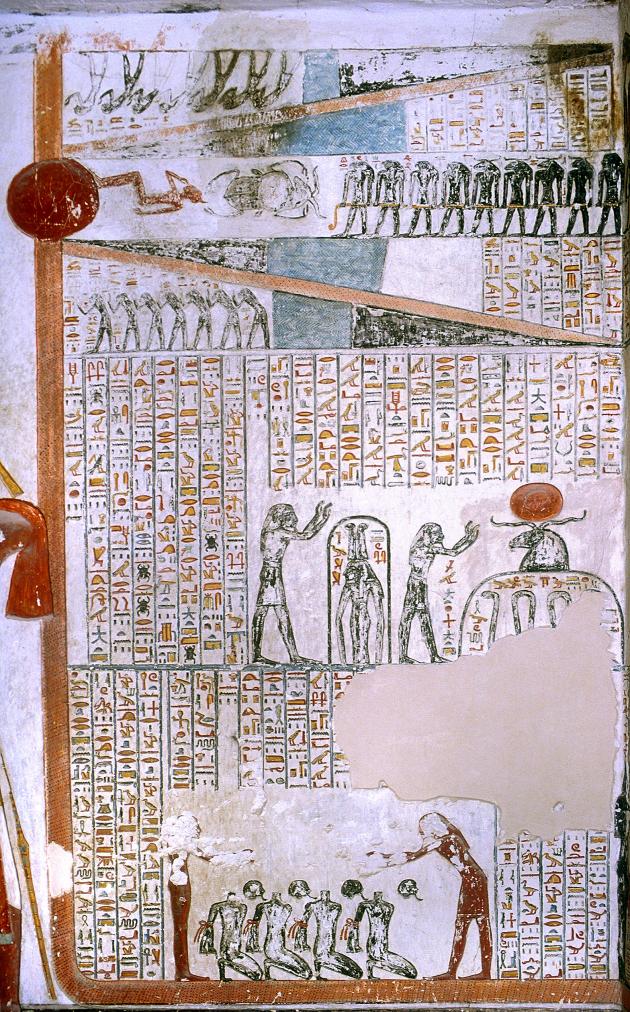
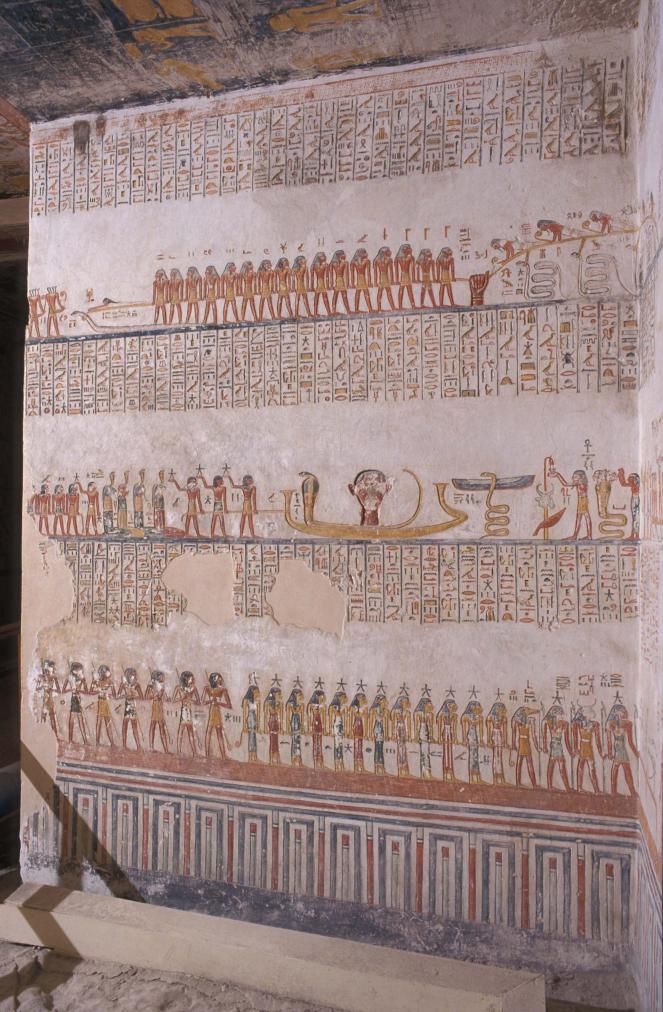
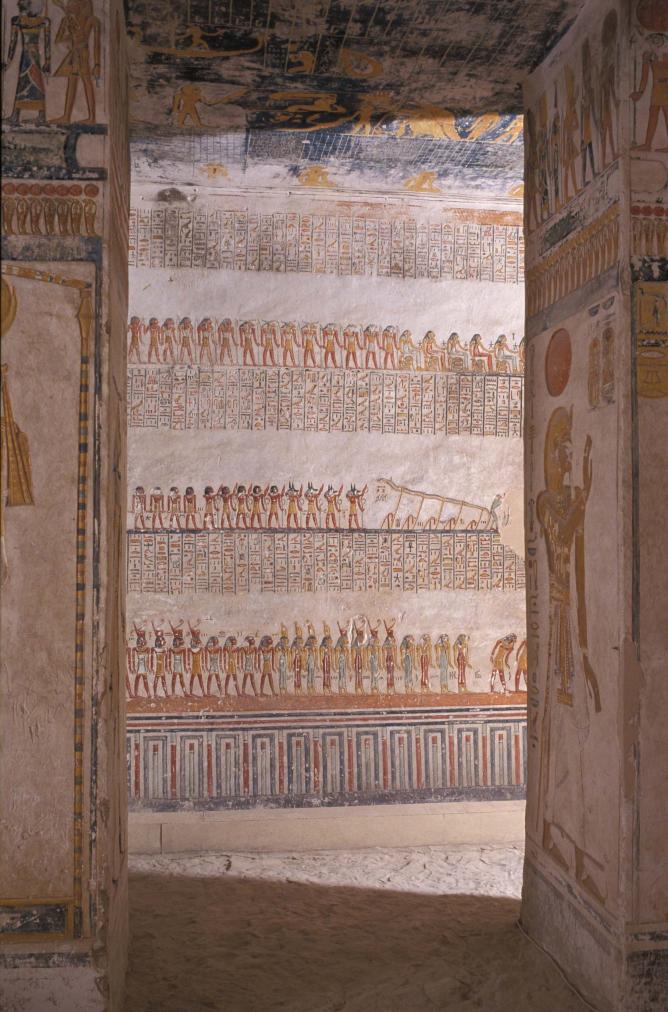
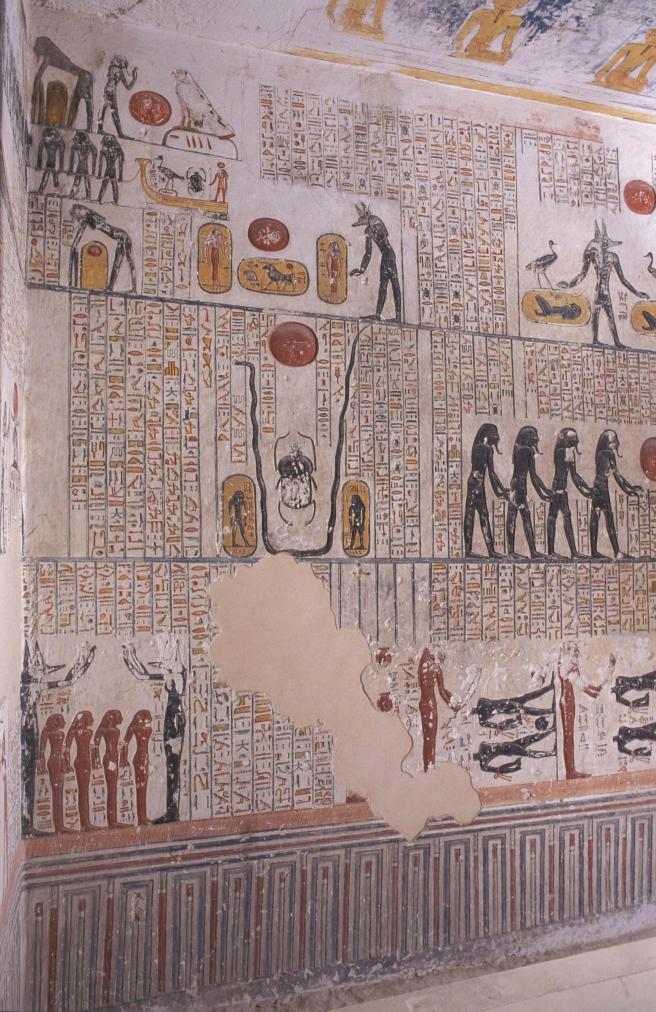
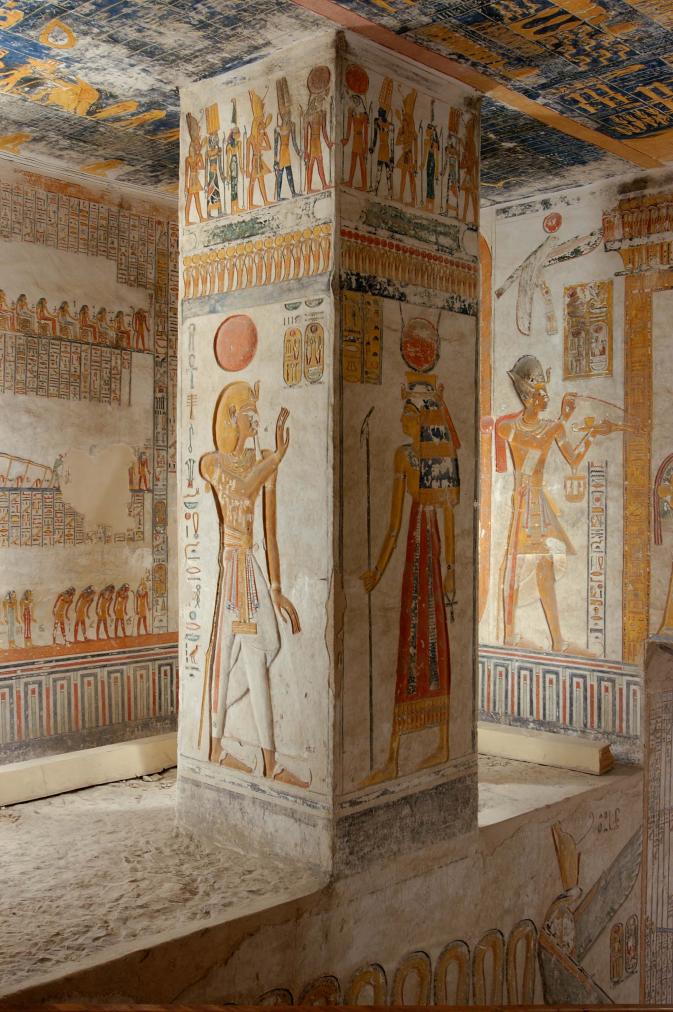
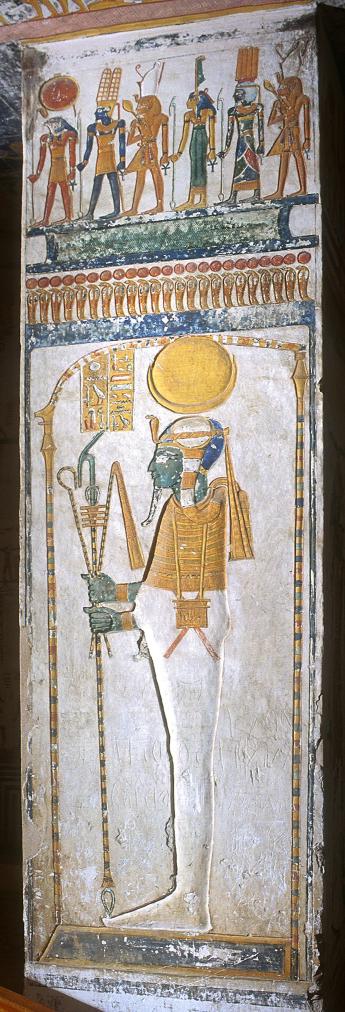
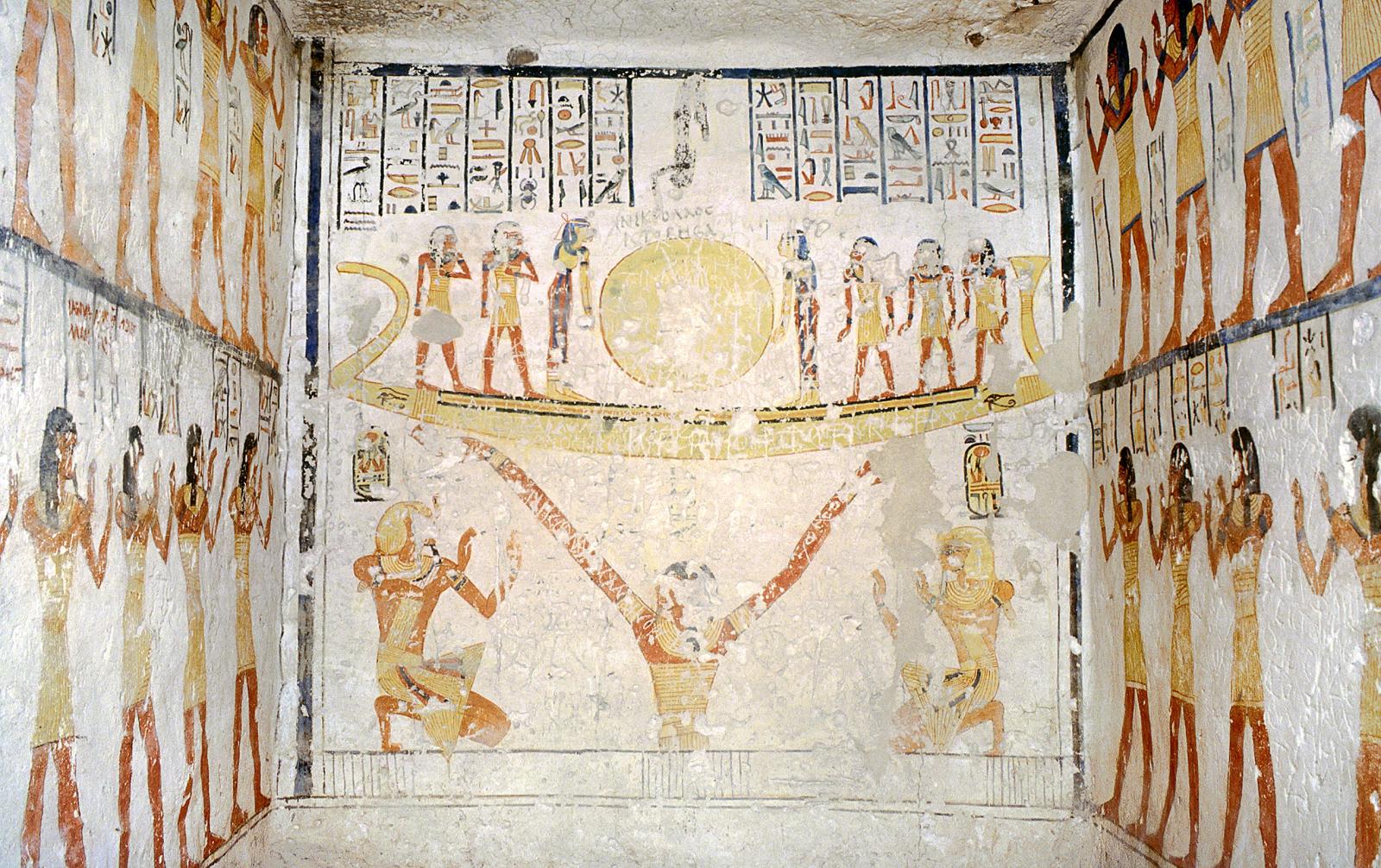
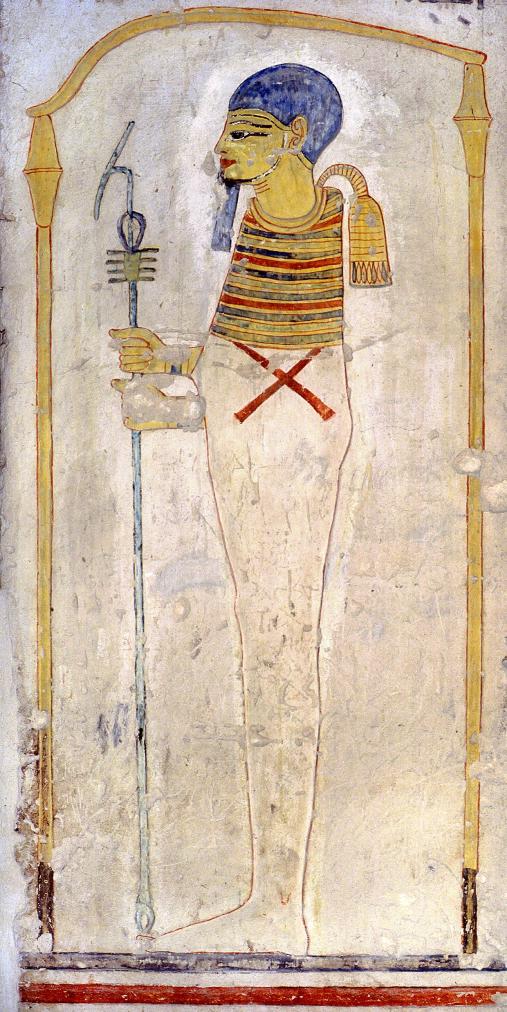
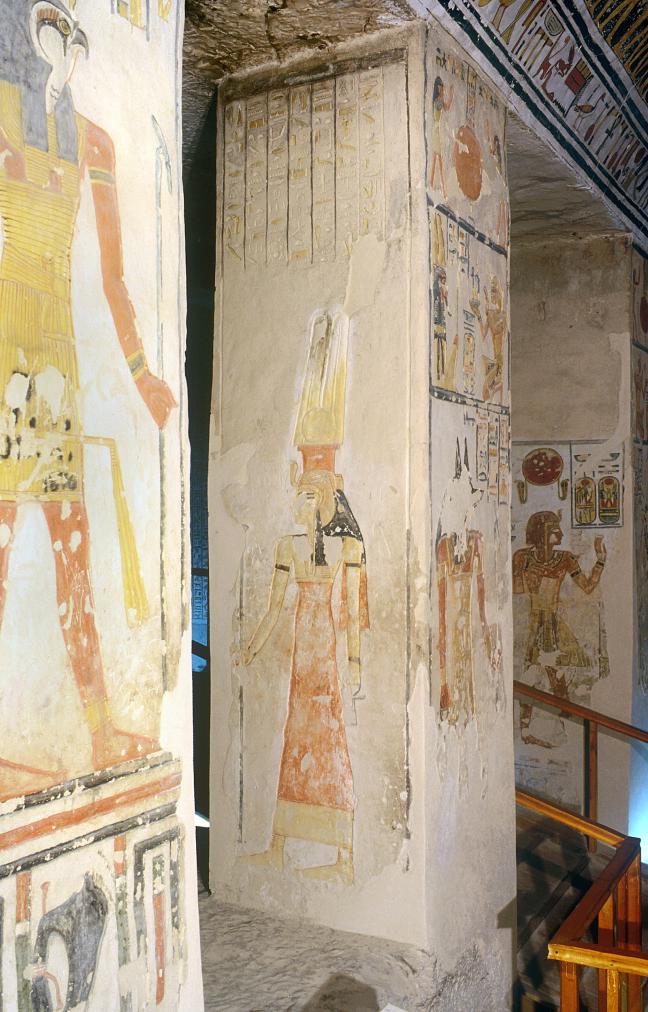
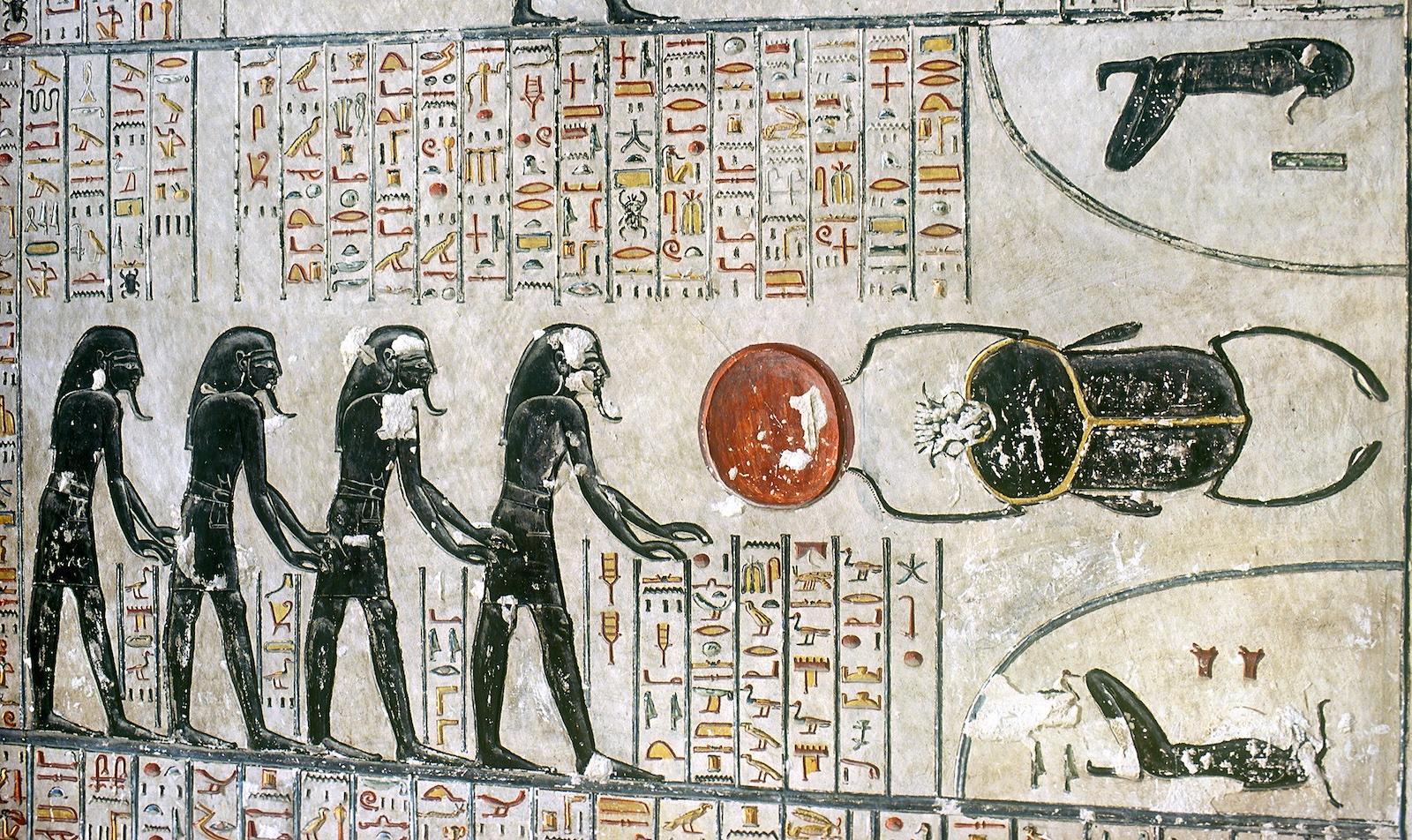
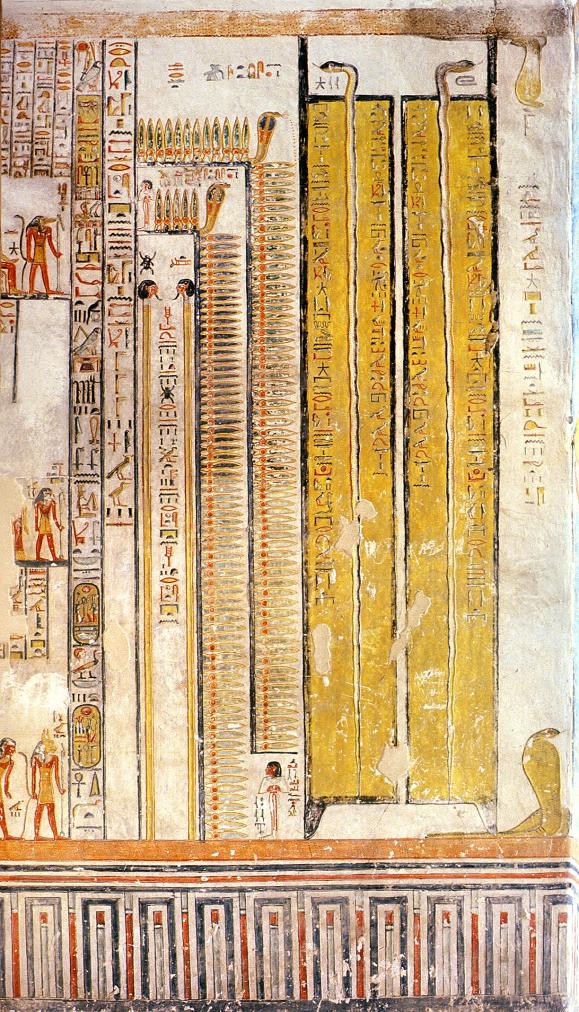
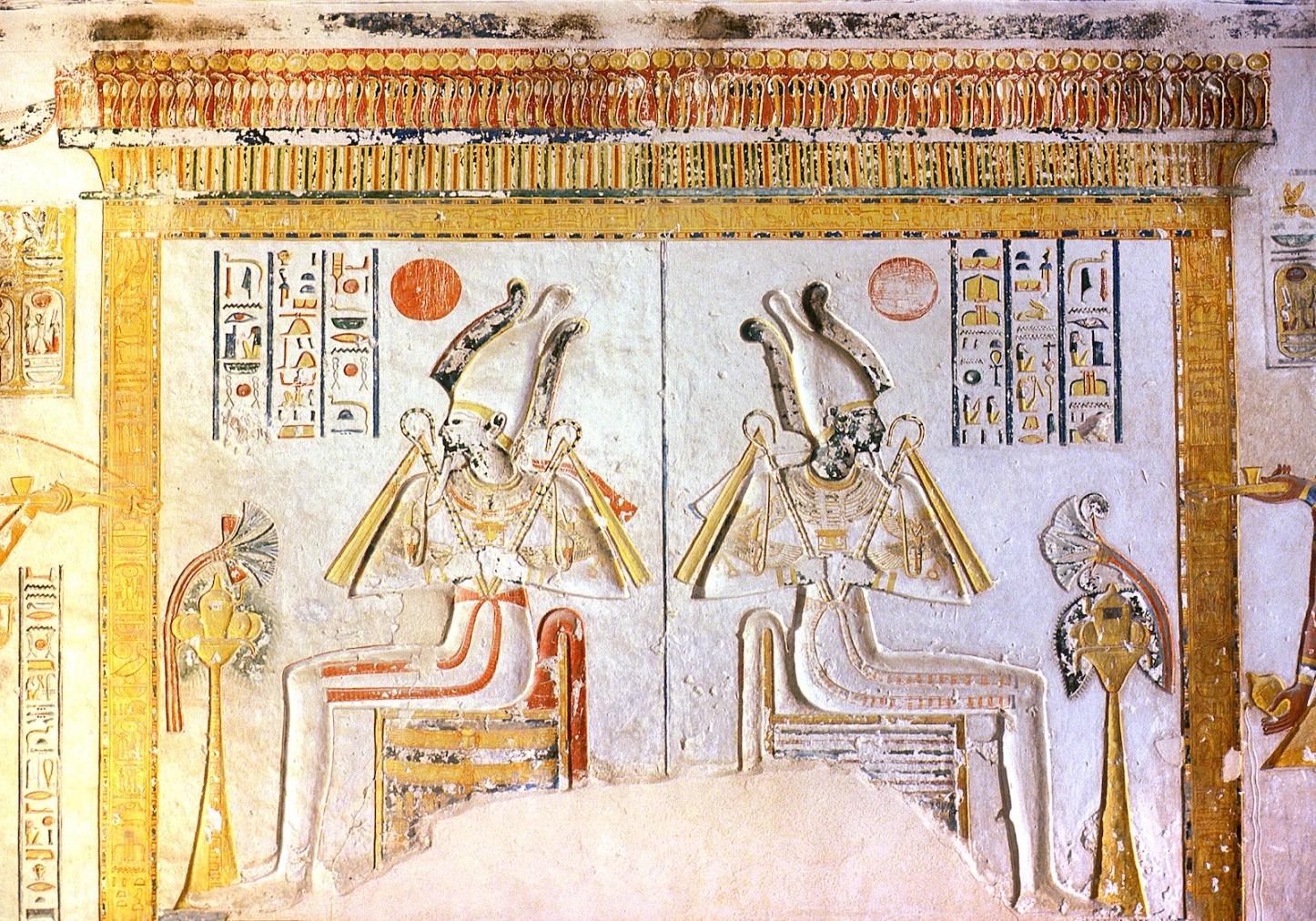
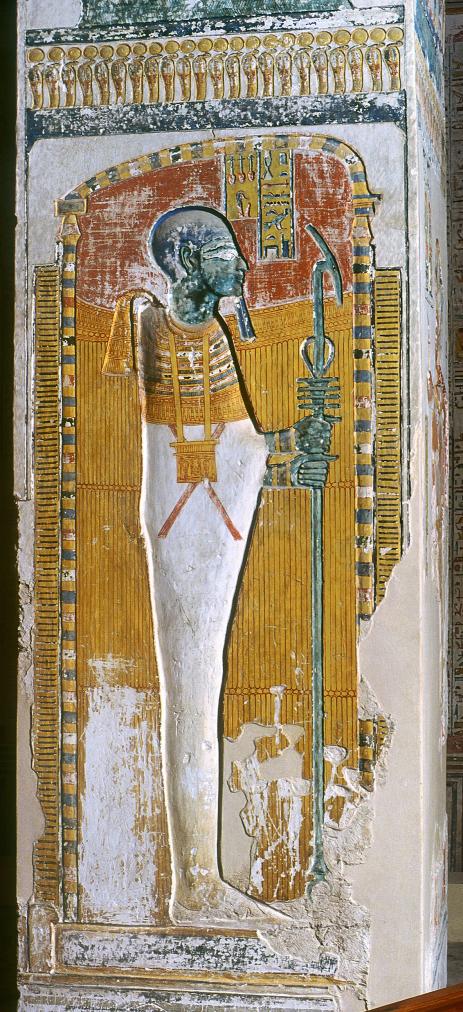
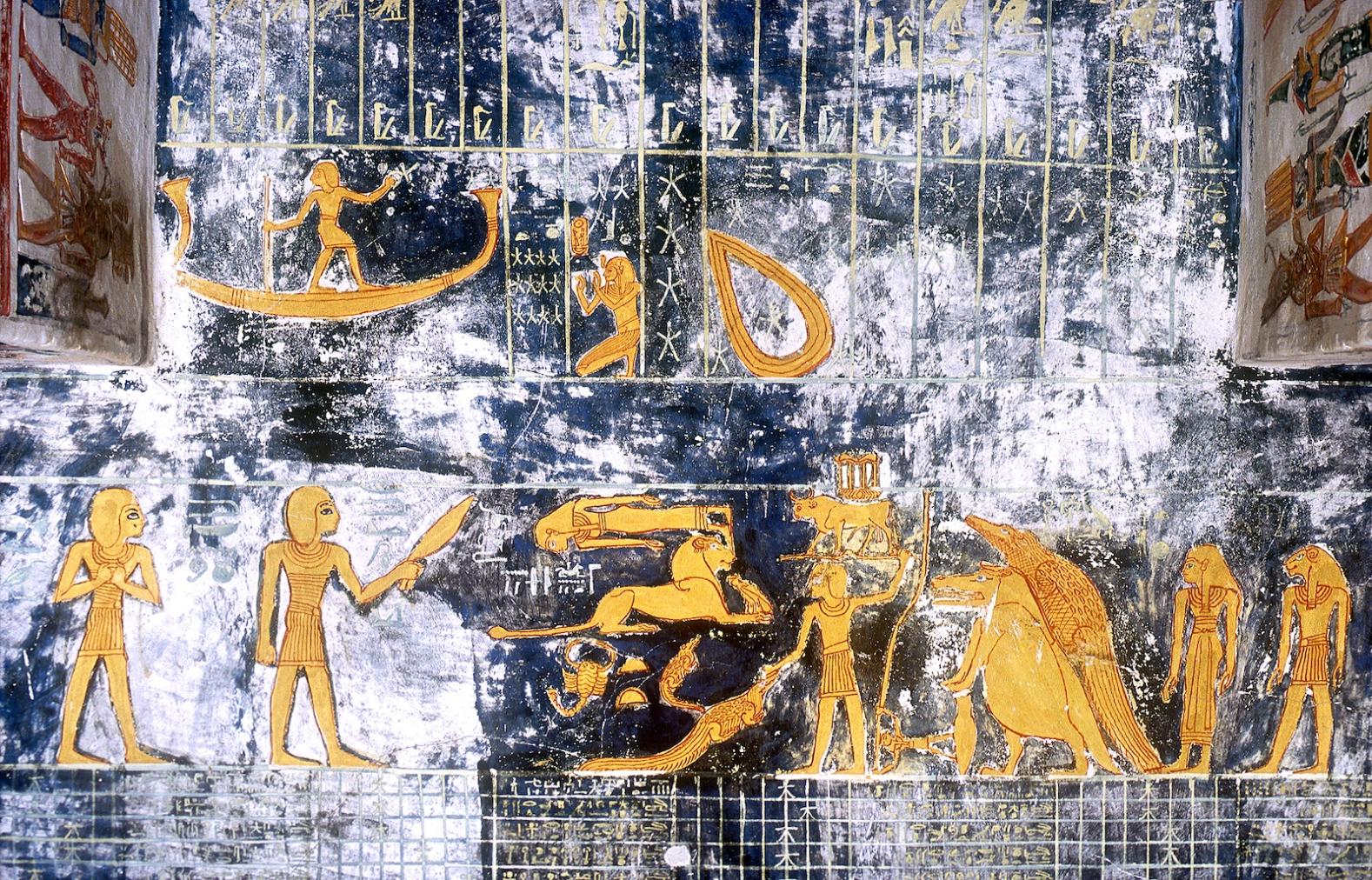
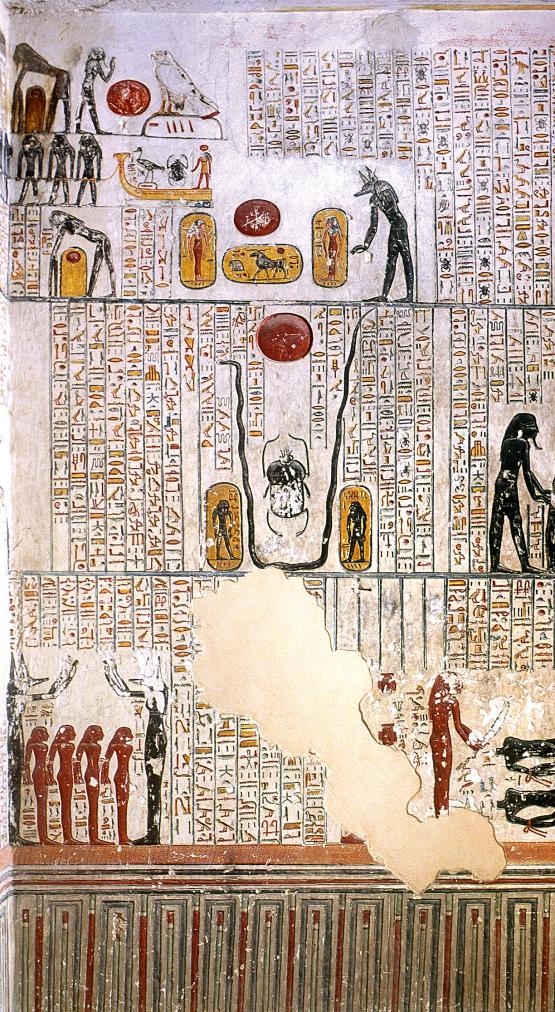
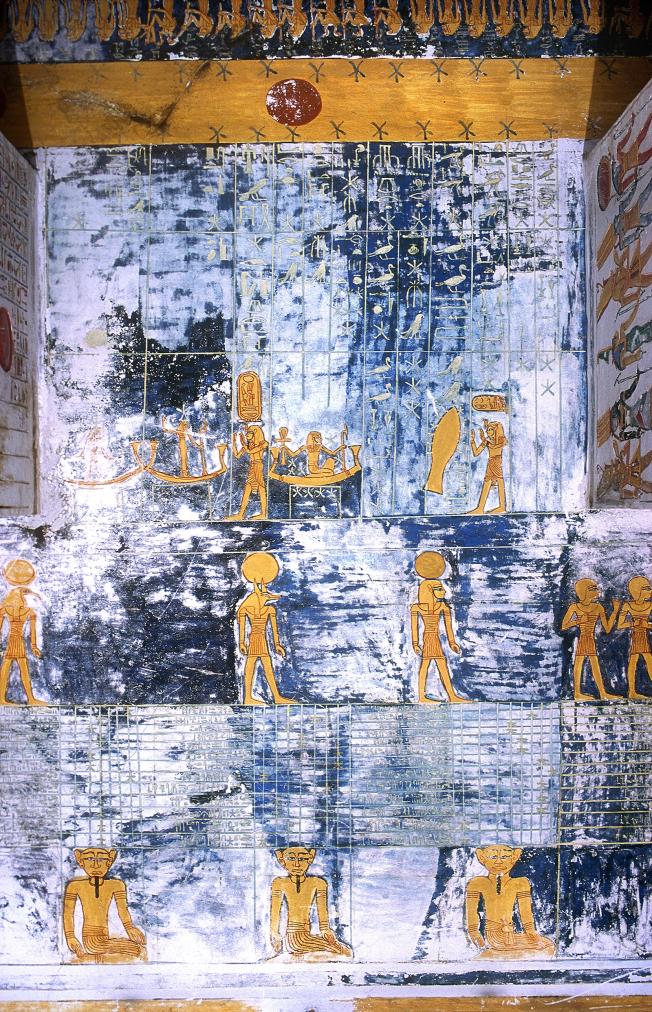
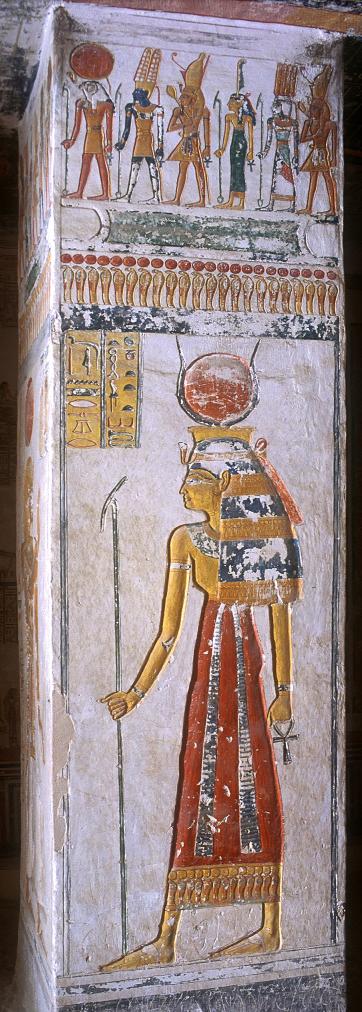
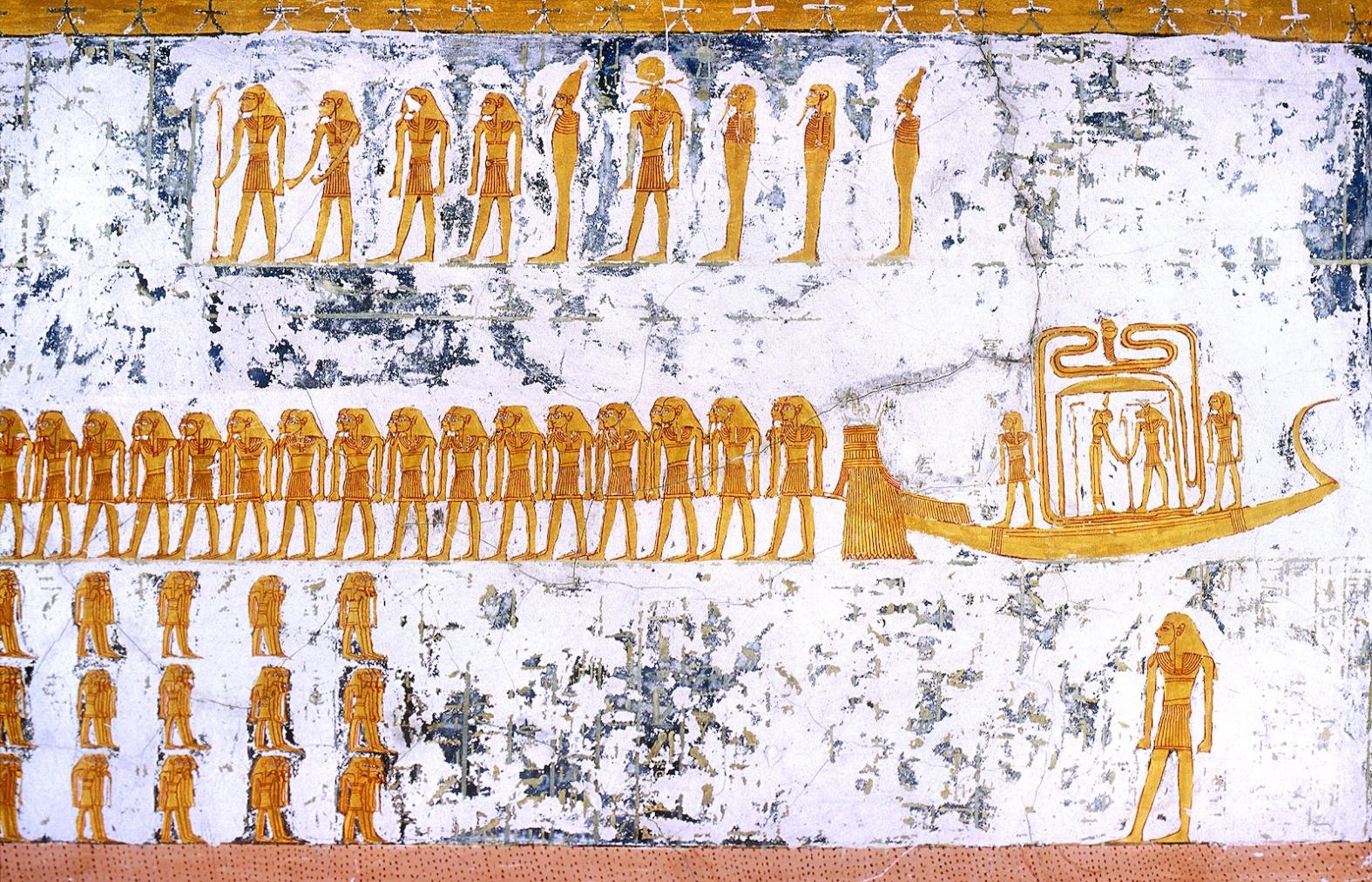
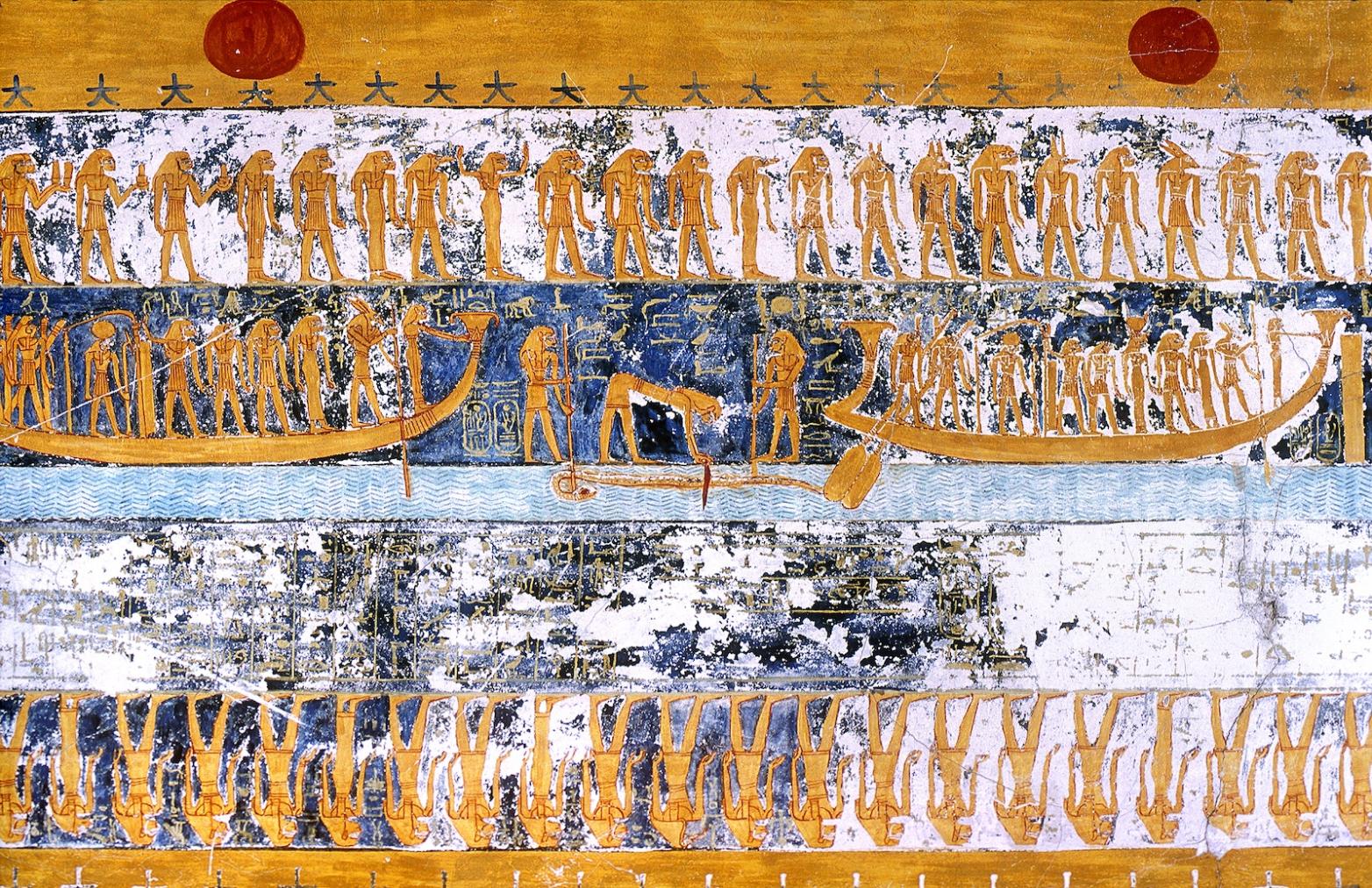
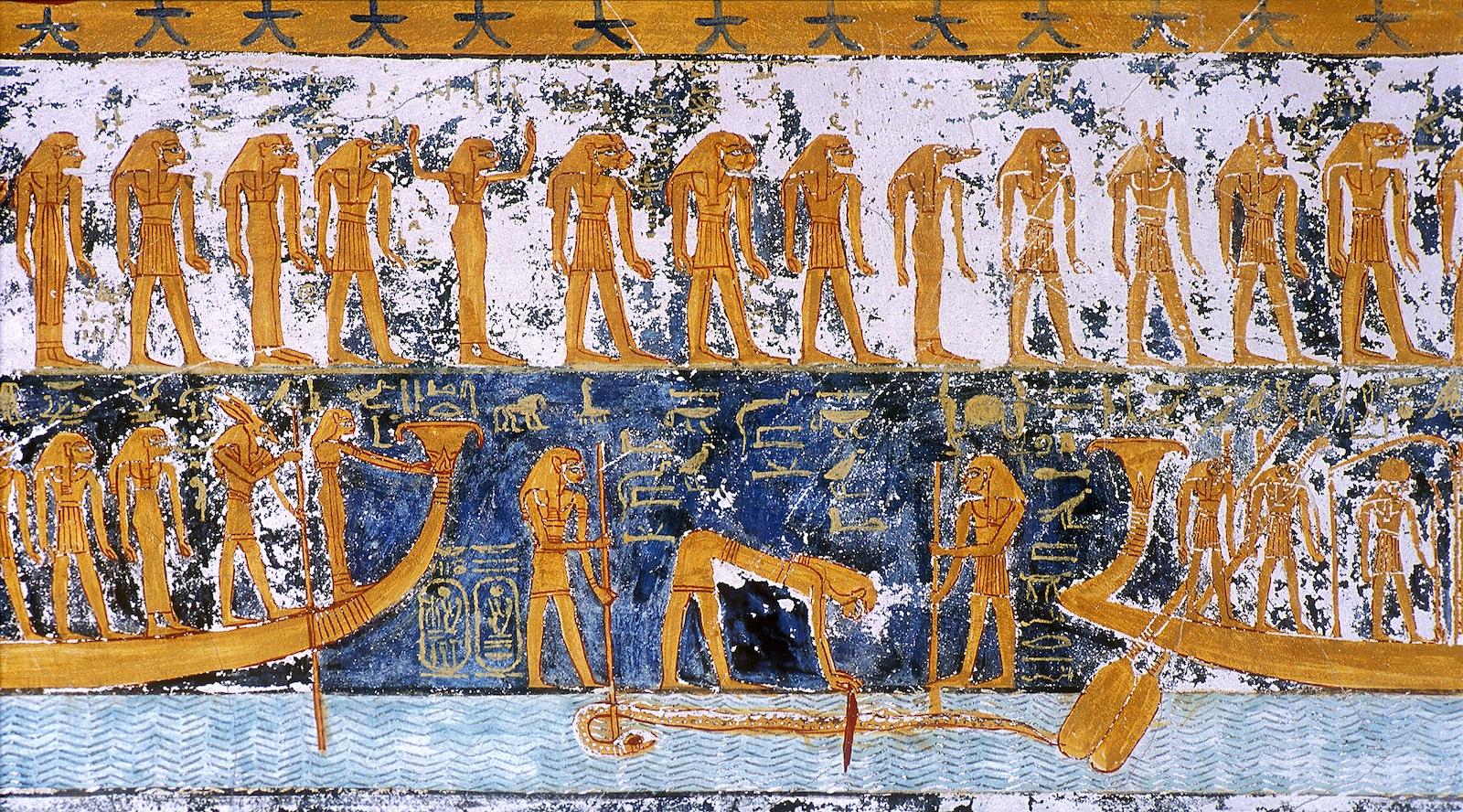
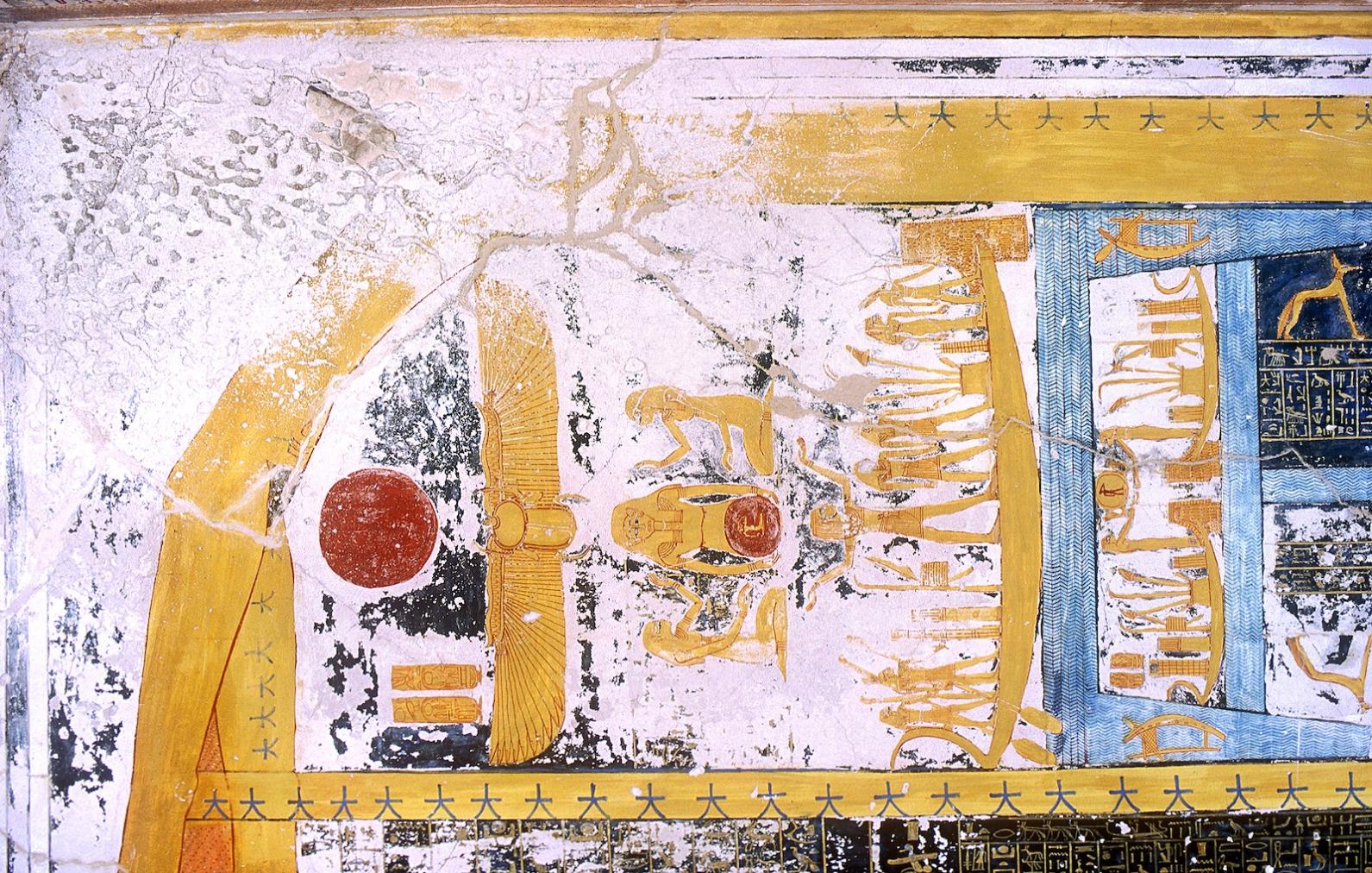
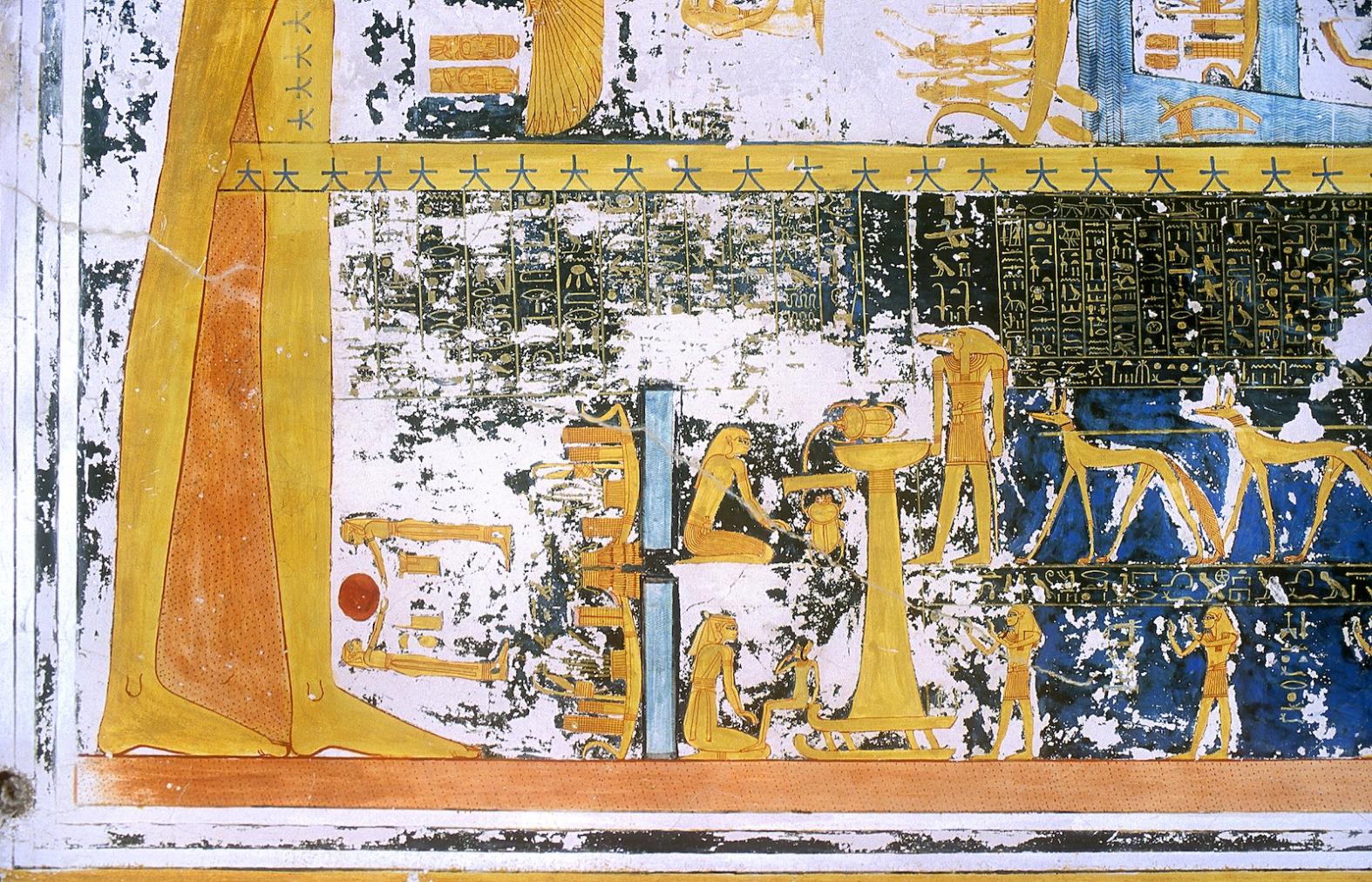
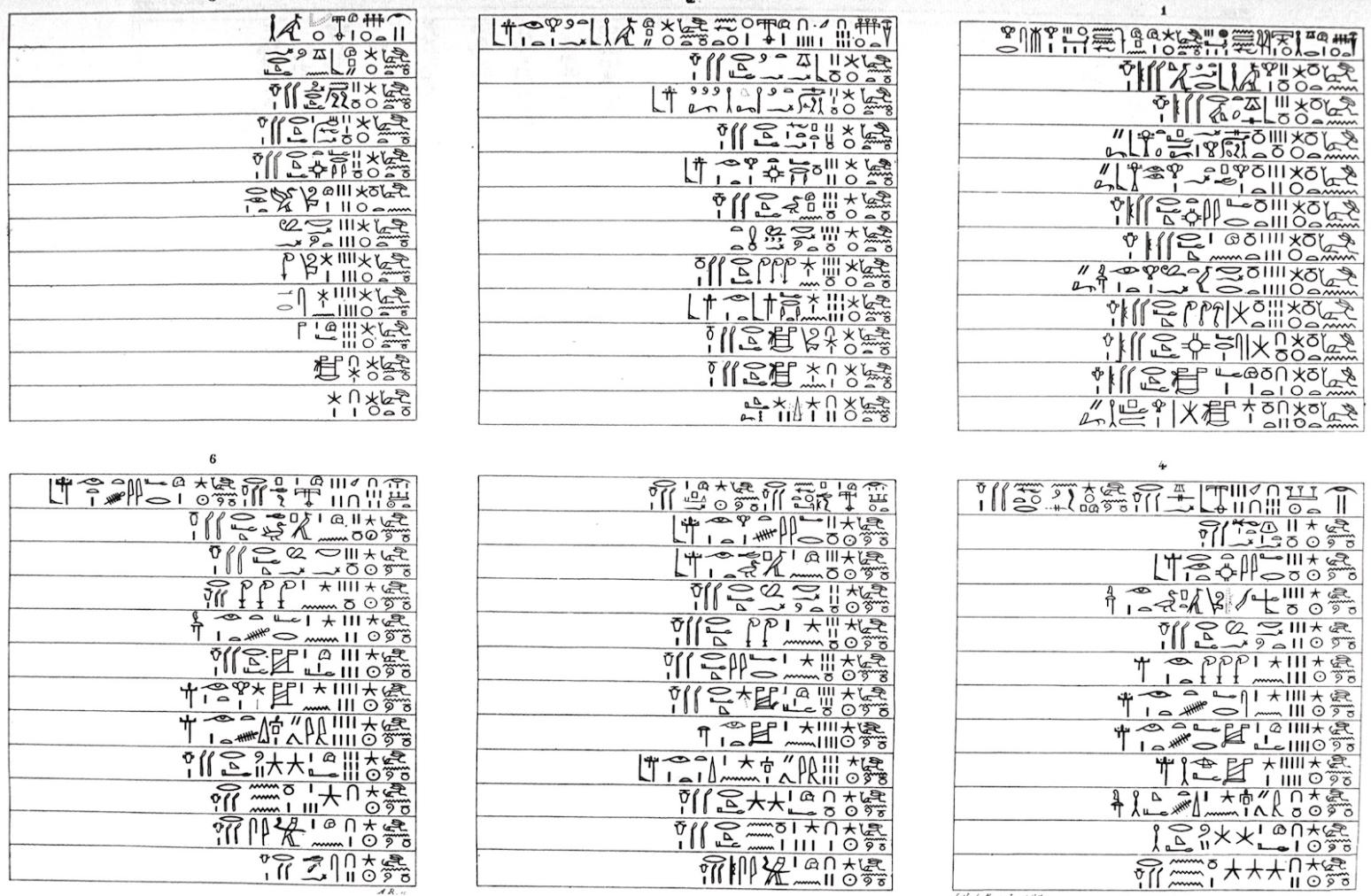
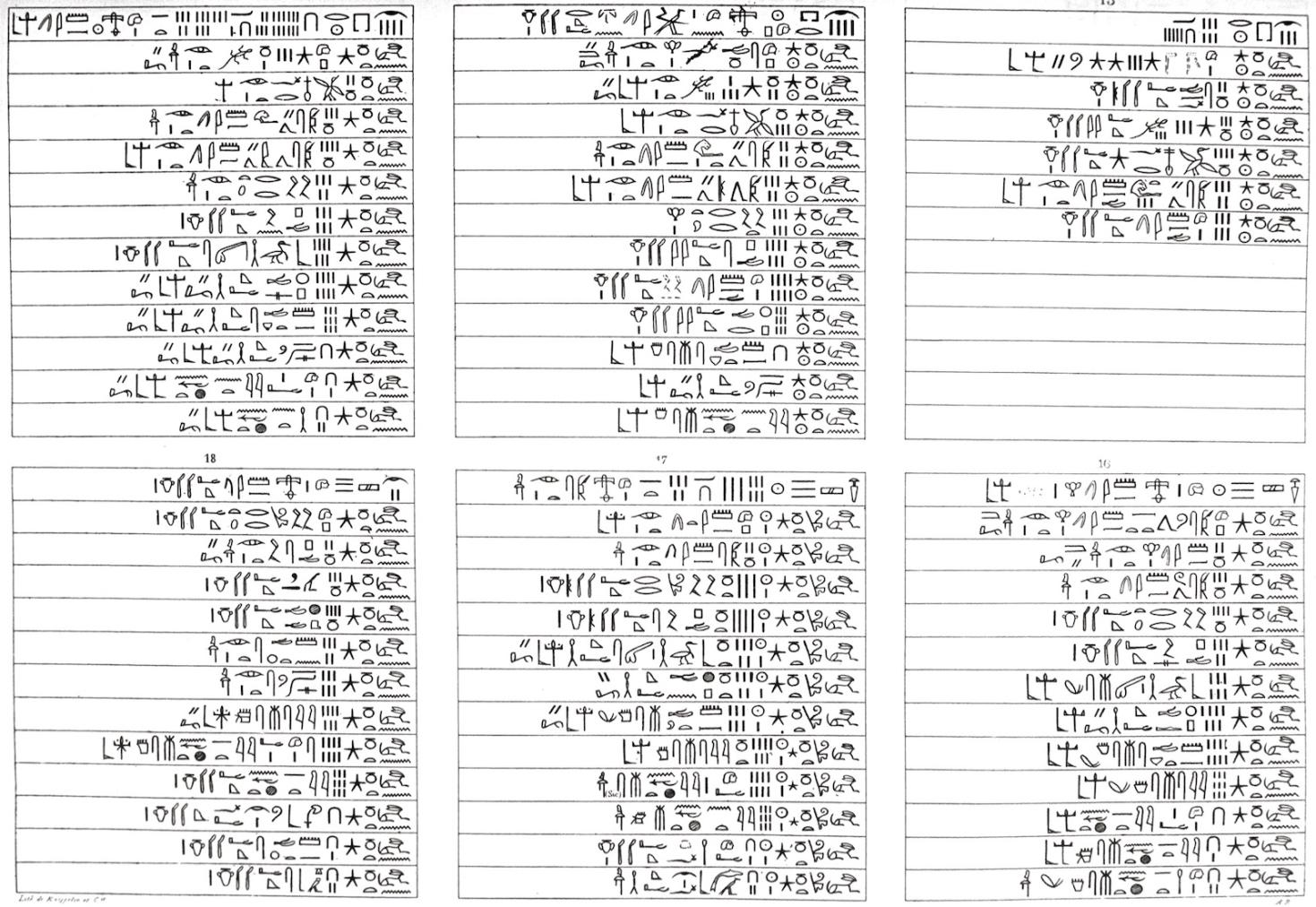
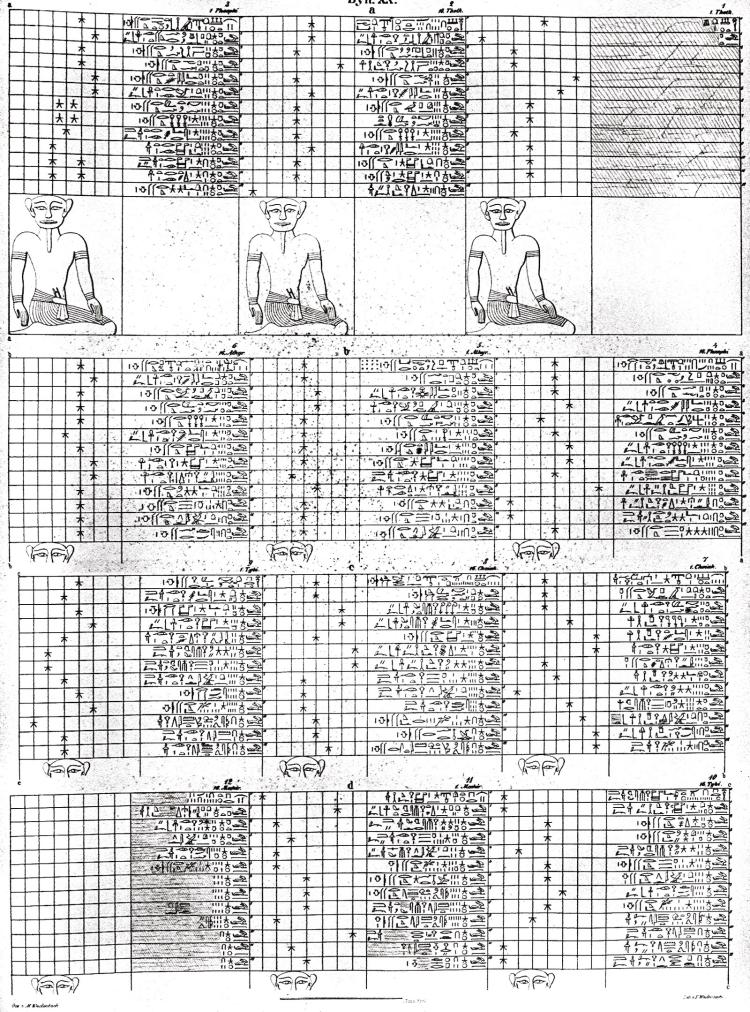
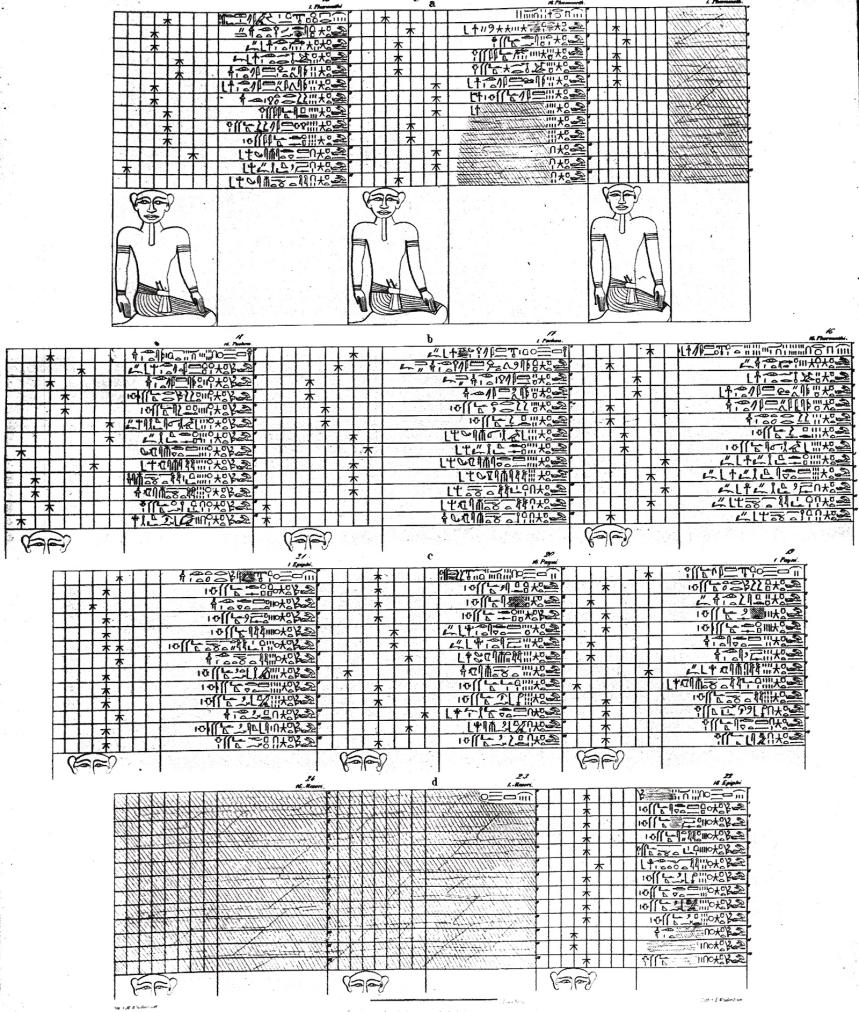
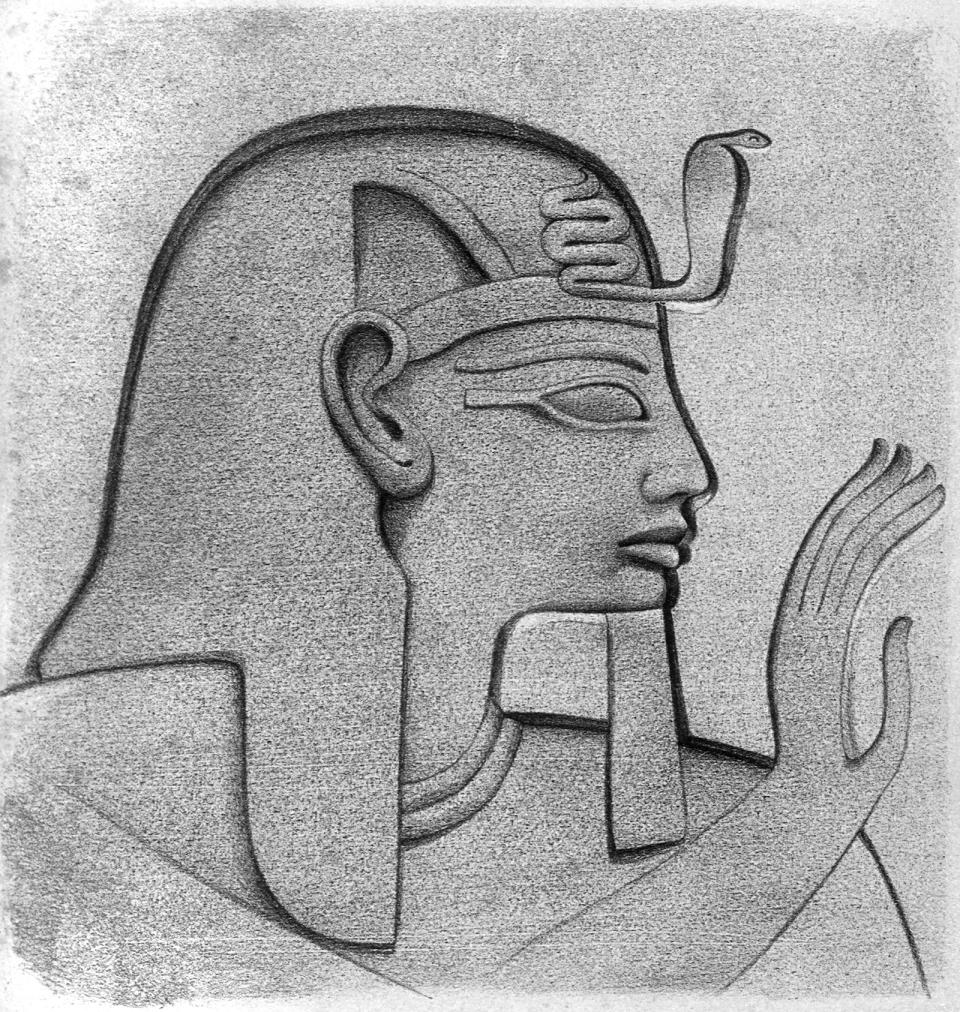
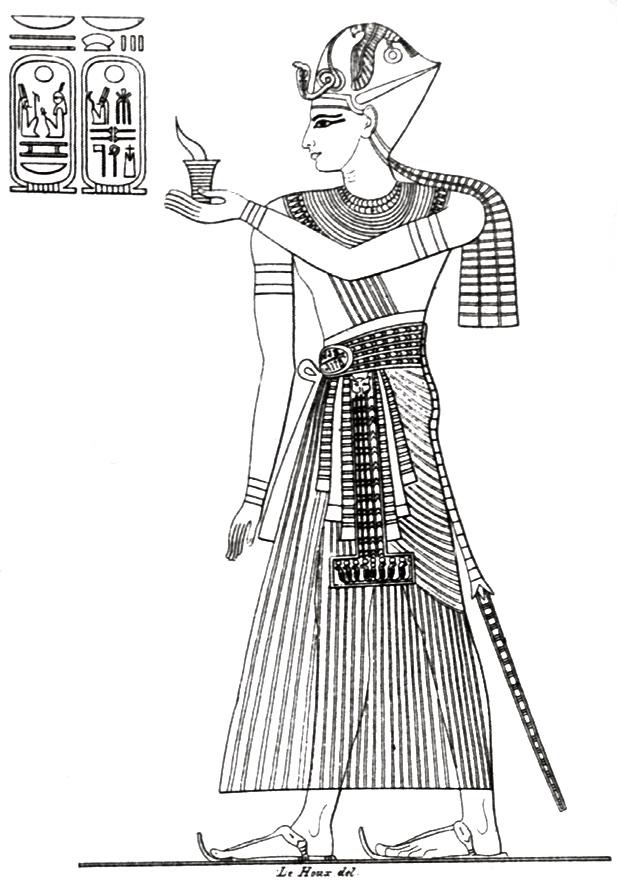
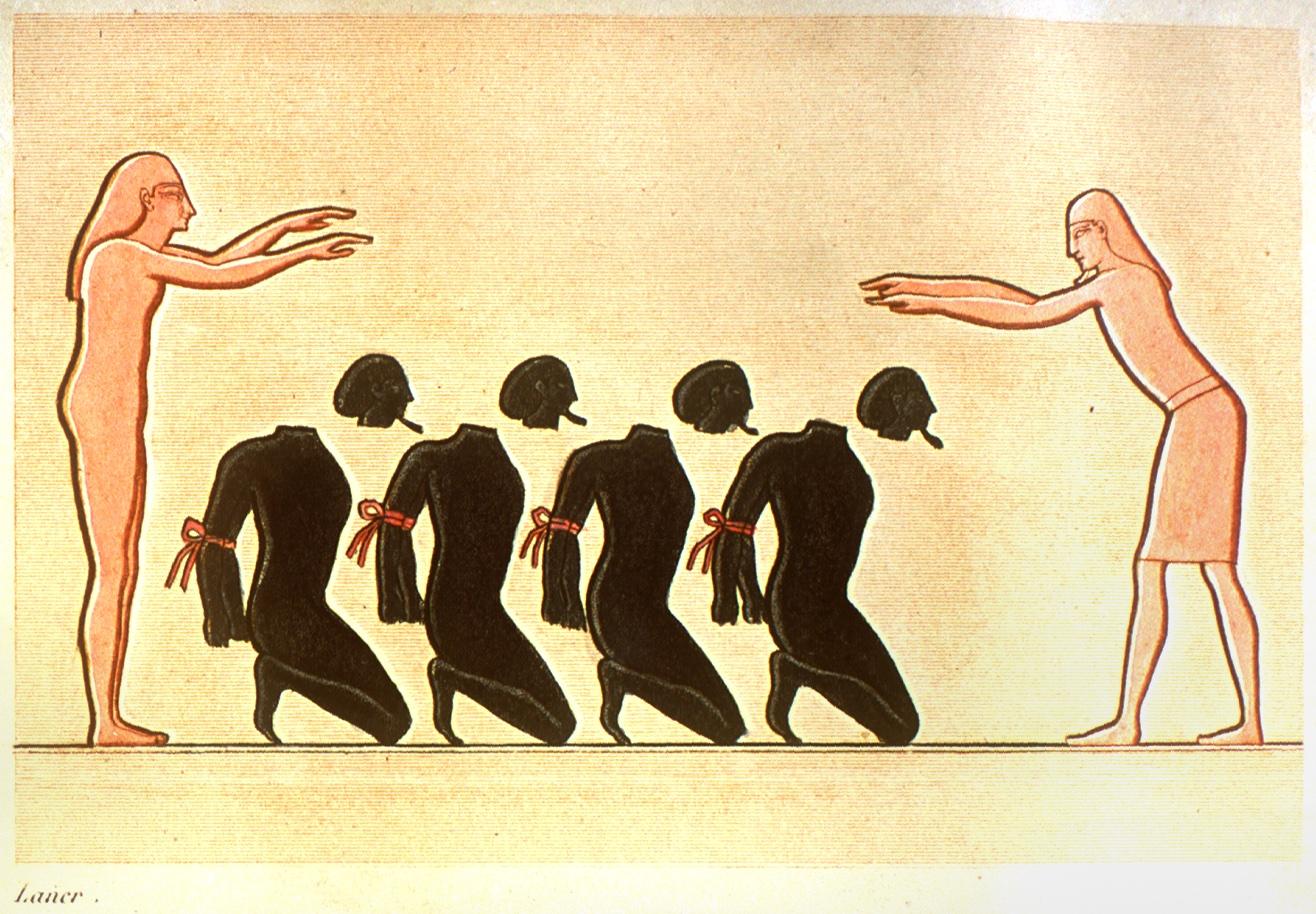
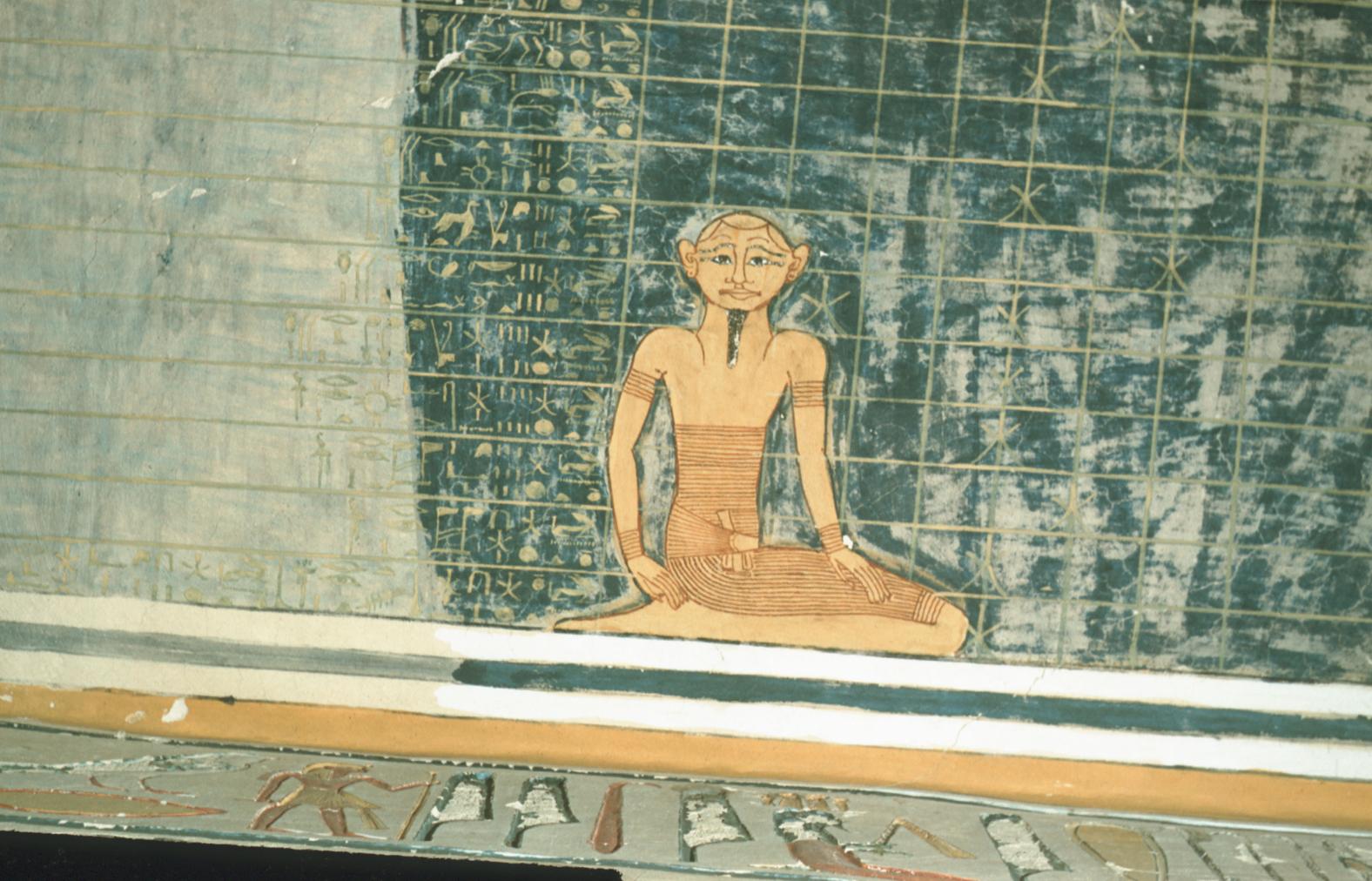
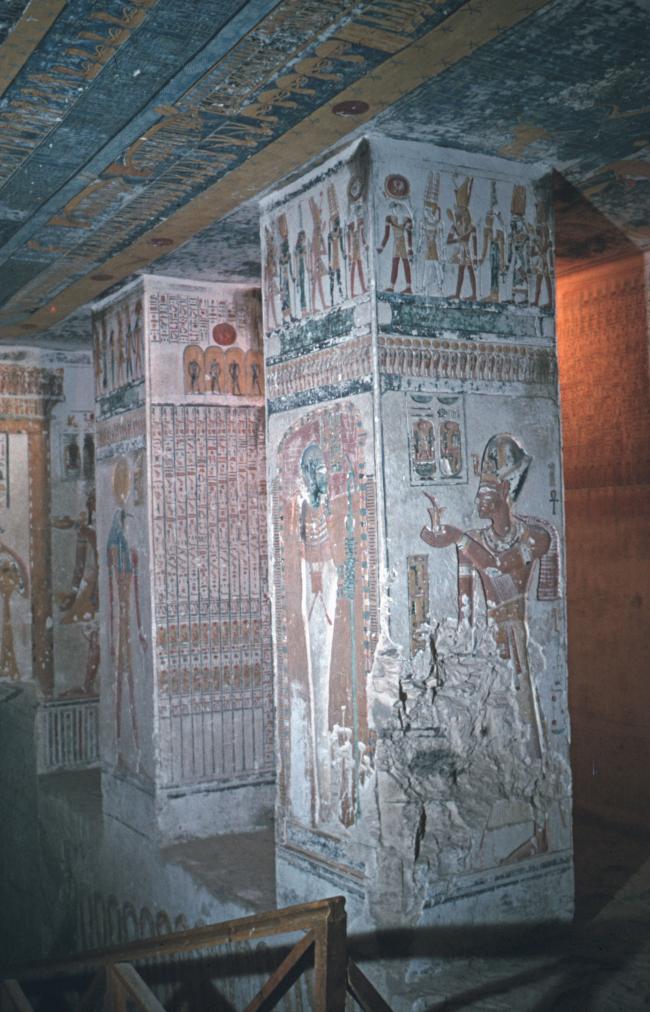
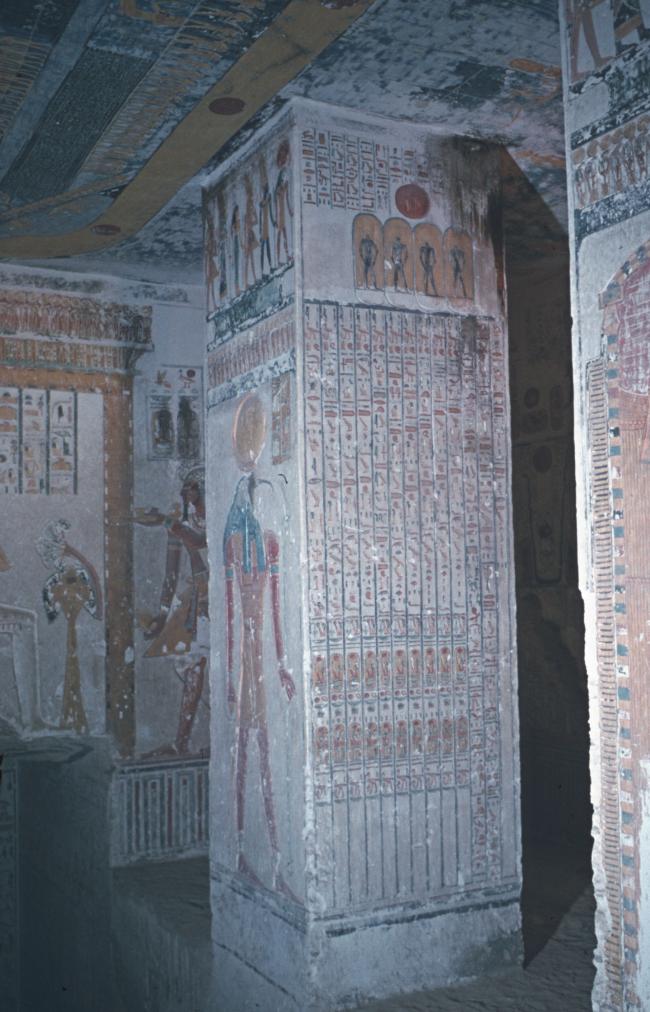
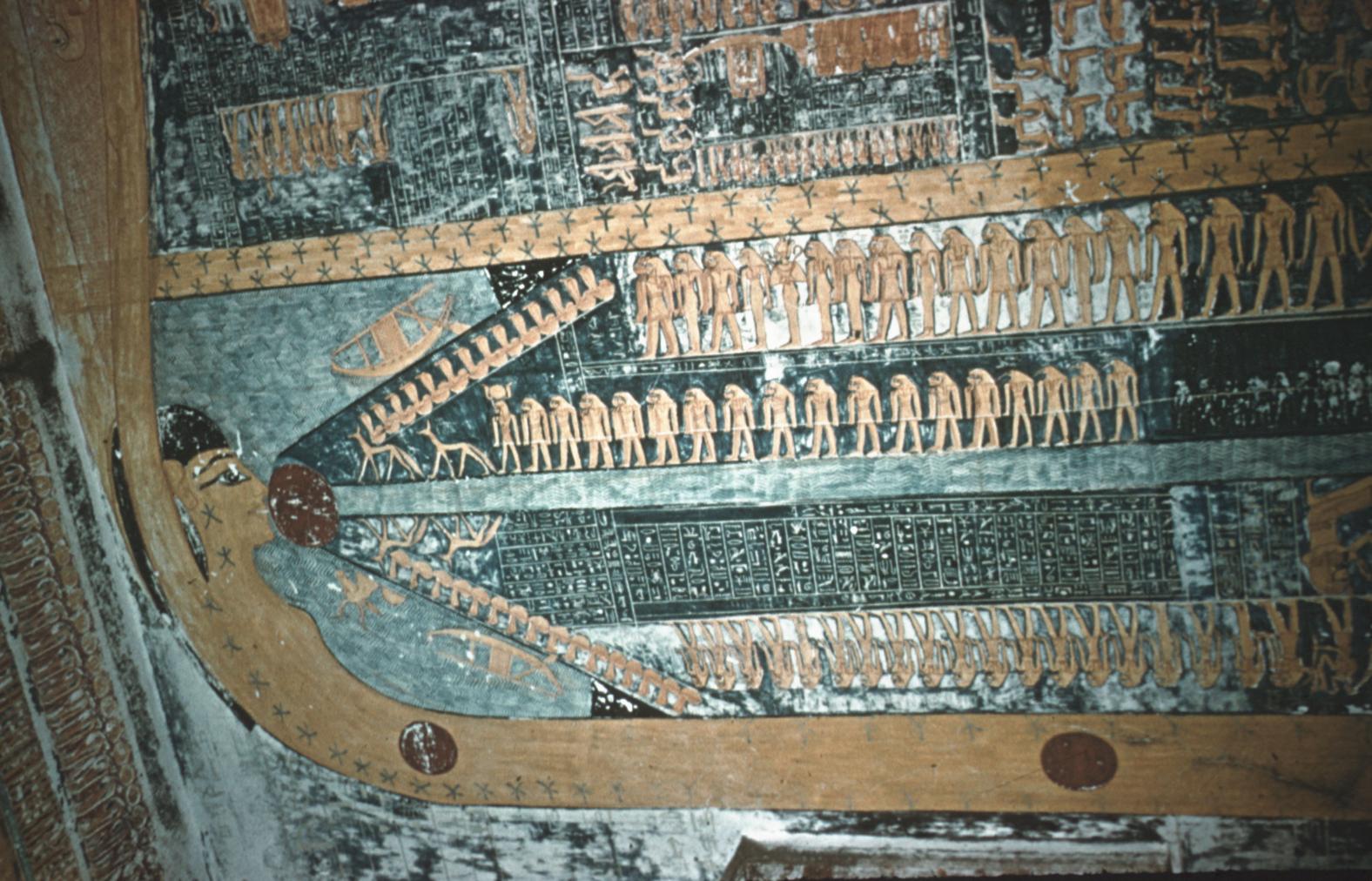
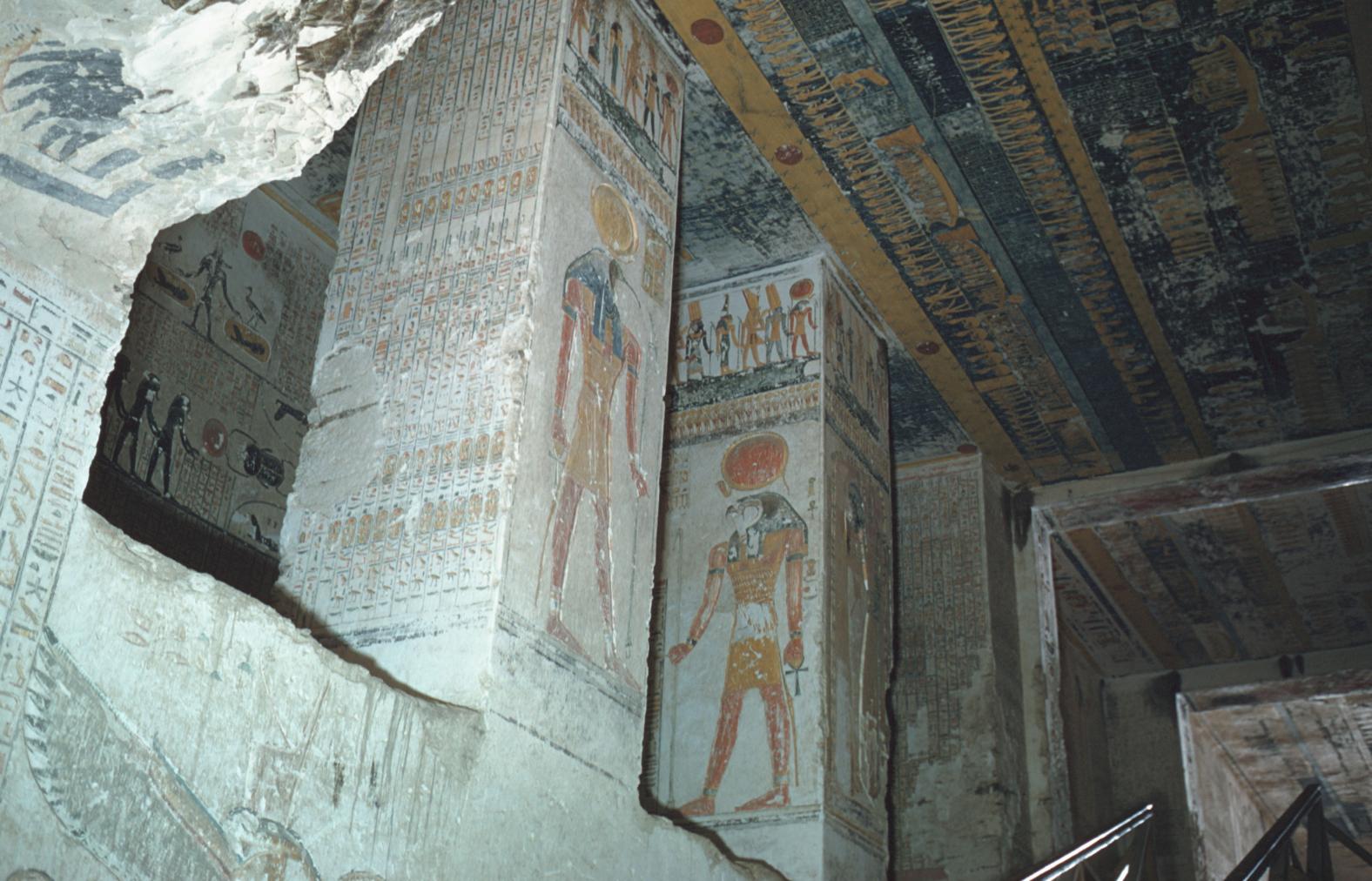
Descent F
See entire tombThe left (south) wall of the sloping descent shows Nekhbet as a winged cobra wearing the red and white crowns of Upper and Lower Egypt. Beyond it is the beginning of the first hour of the Imydwat with Neit as a winged cobra. On the opposite wall, Meretseger is depicted as a serpent wearing the red crown, with the beginning of the sixth hour of the Imydwat and Serqet as a winged cobra below. Three vultures with outspread wings that alternate with text bands giving the names of Rameses VI, are painted on the underside of the overhang.
Porter and Moss designation:
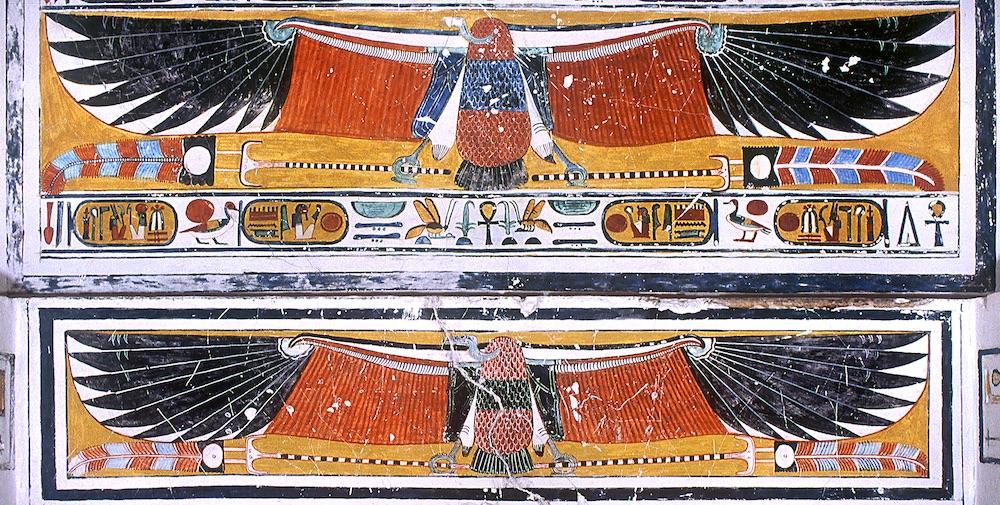
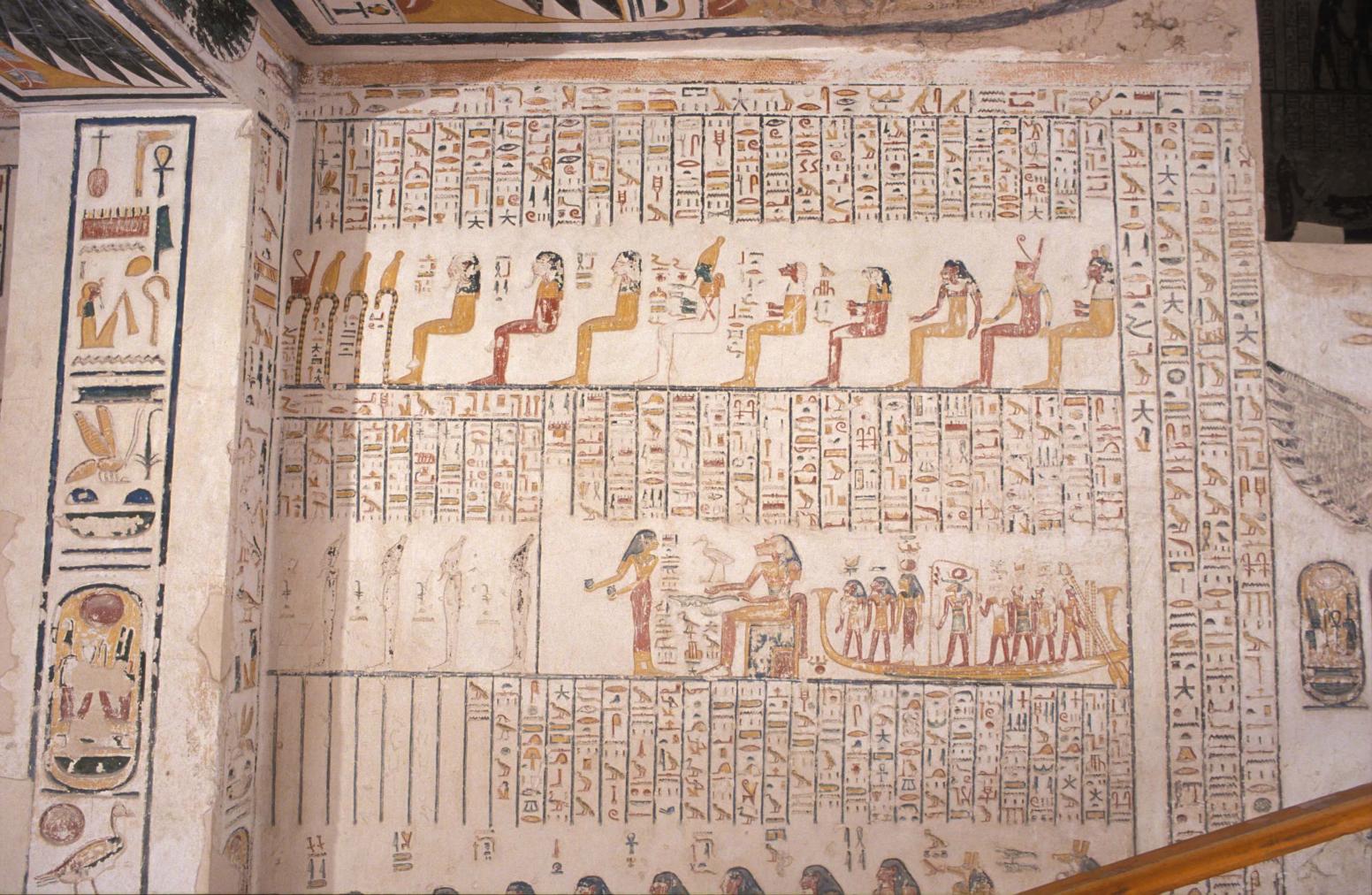
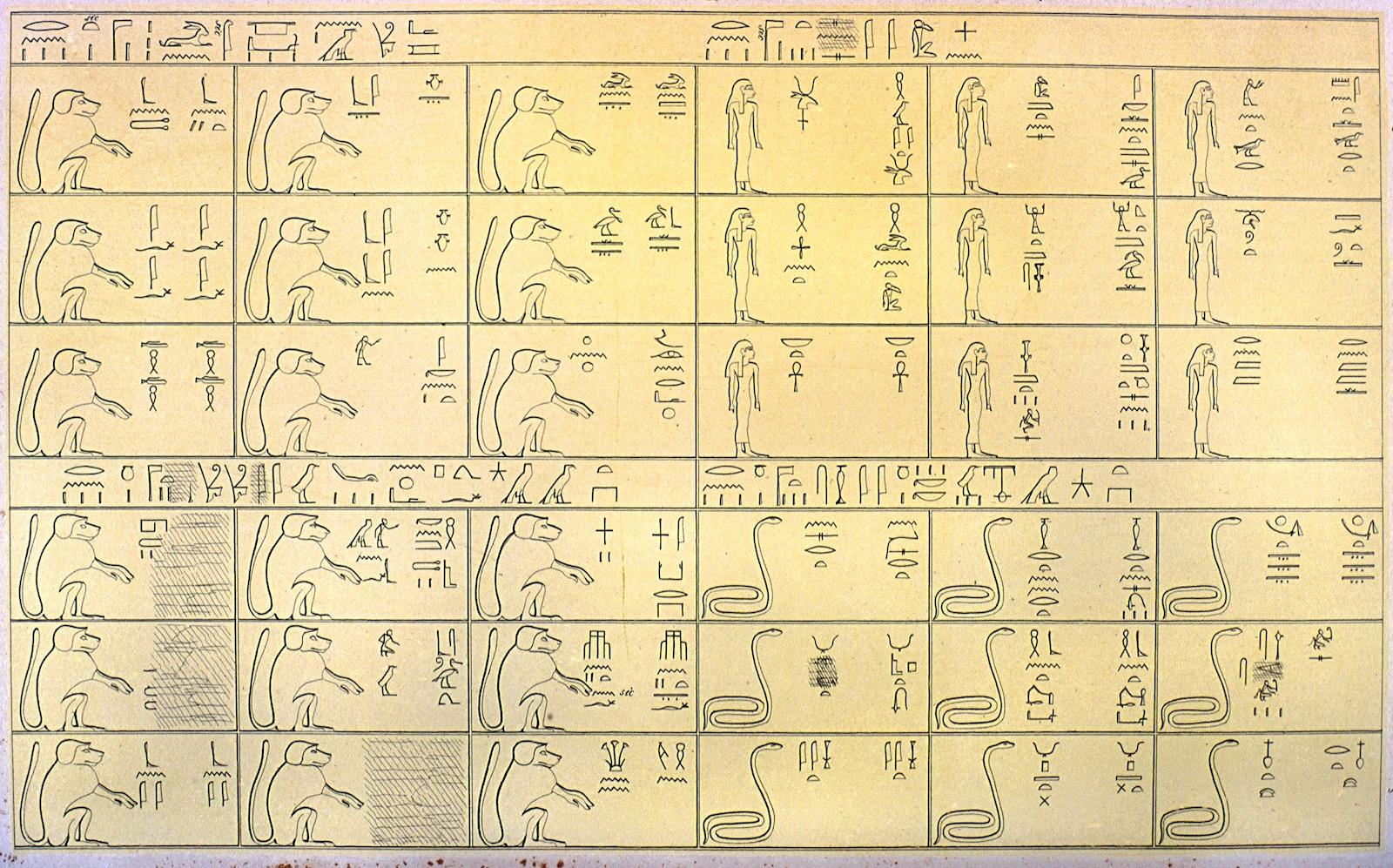
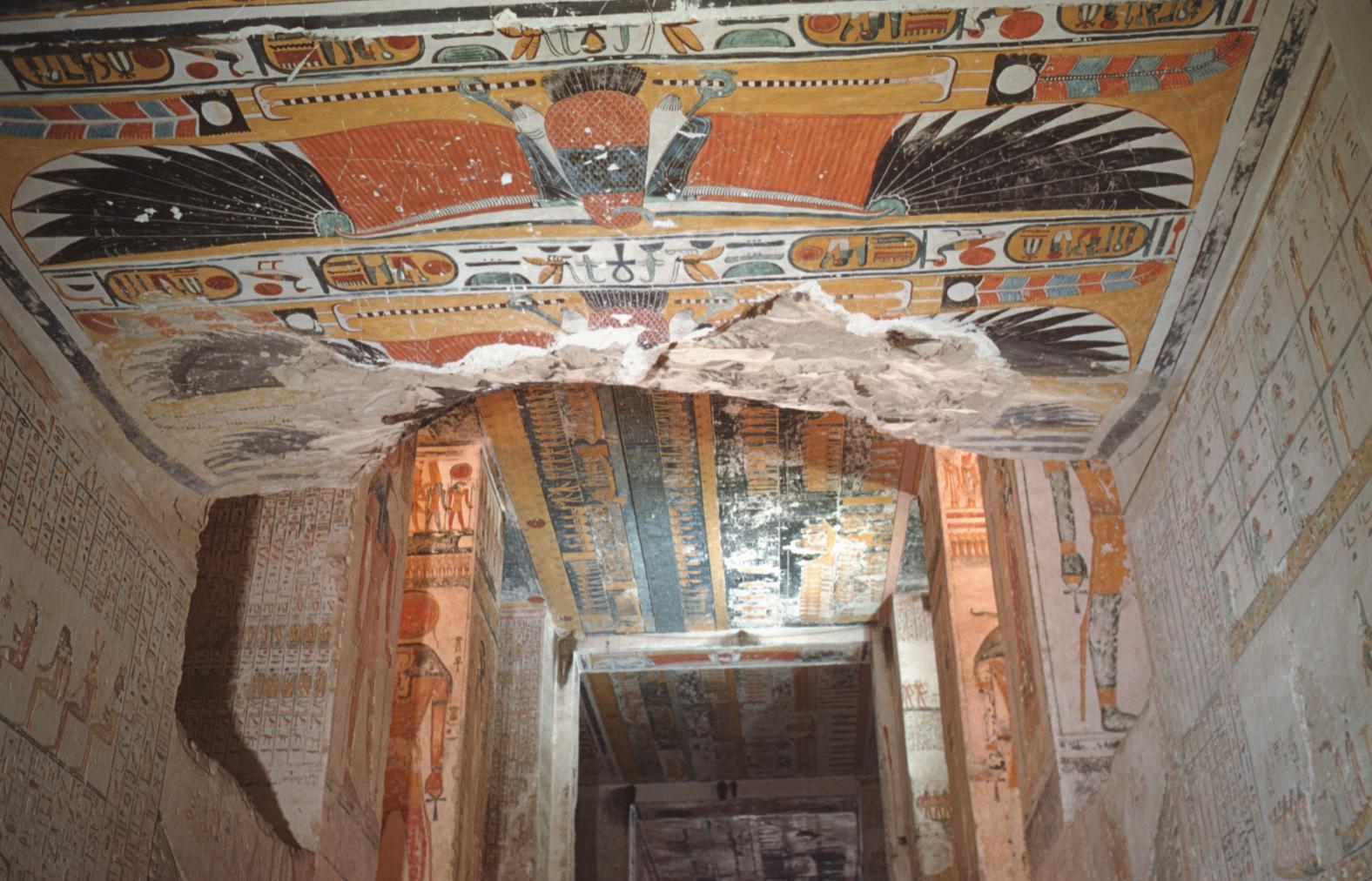
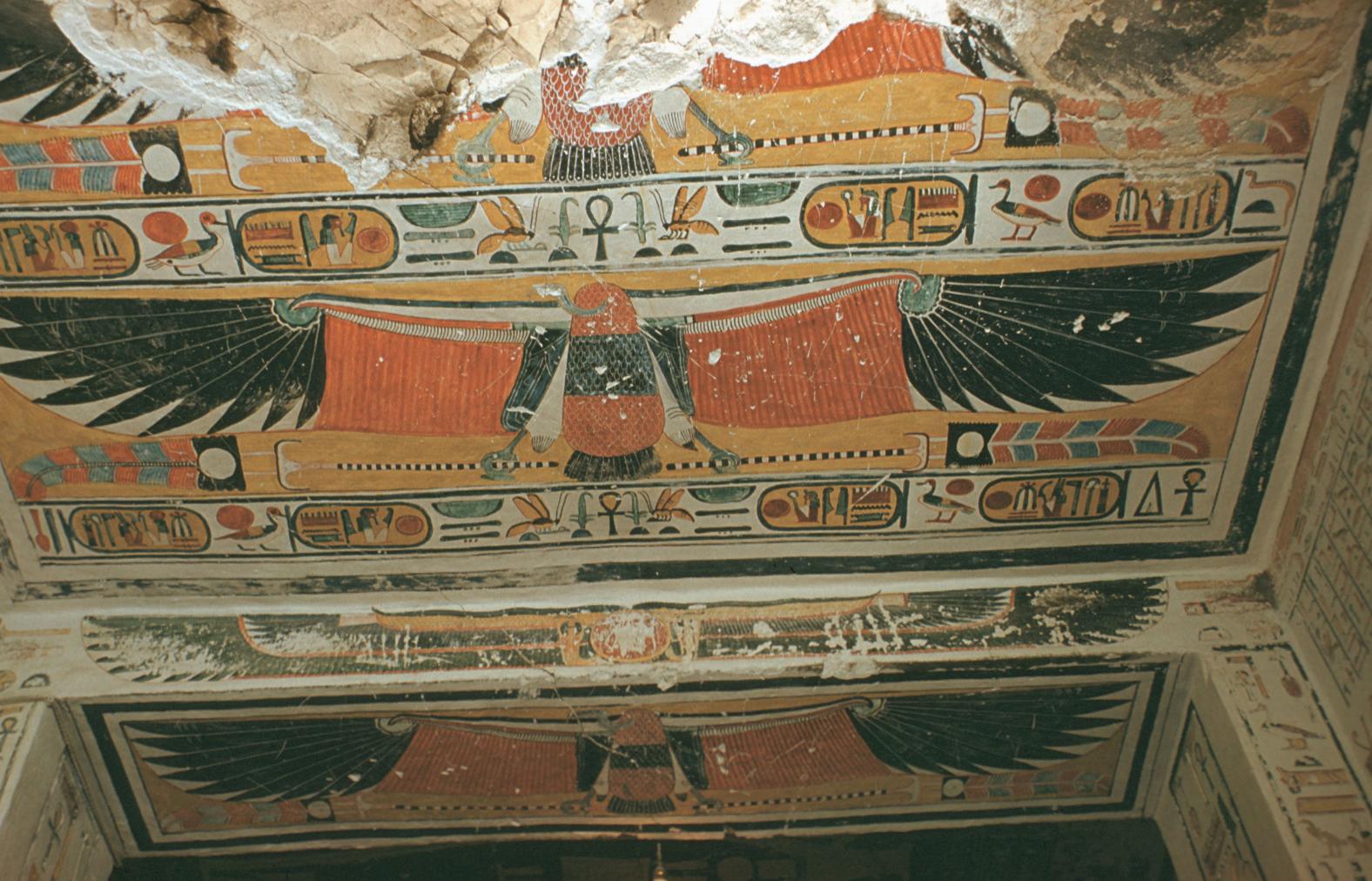
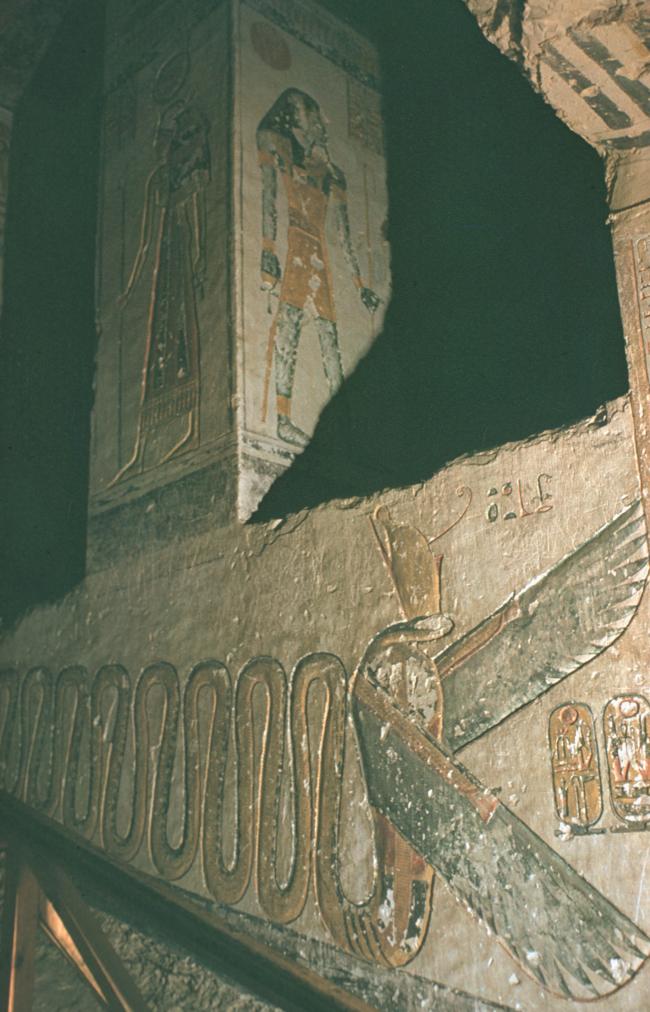
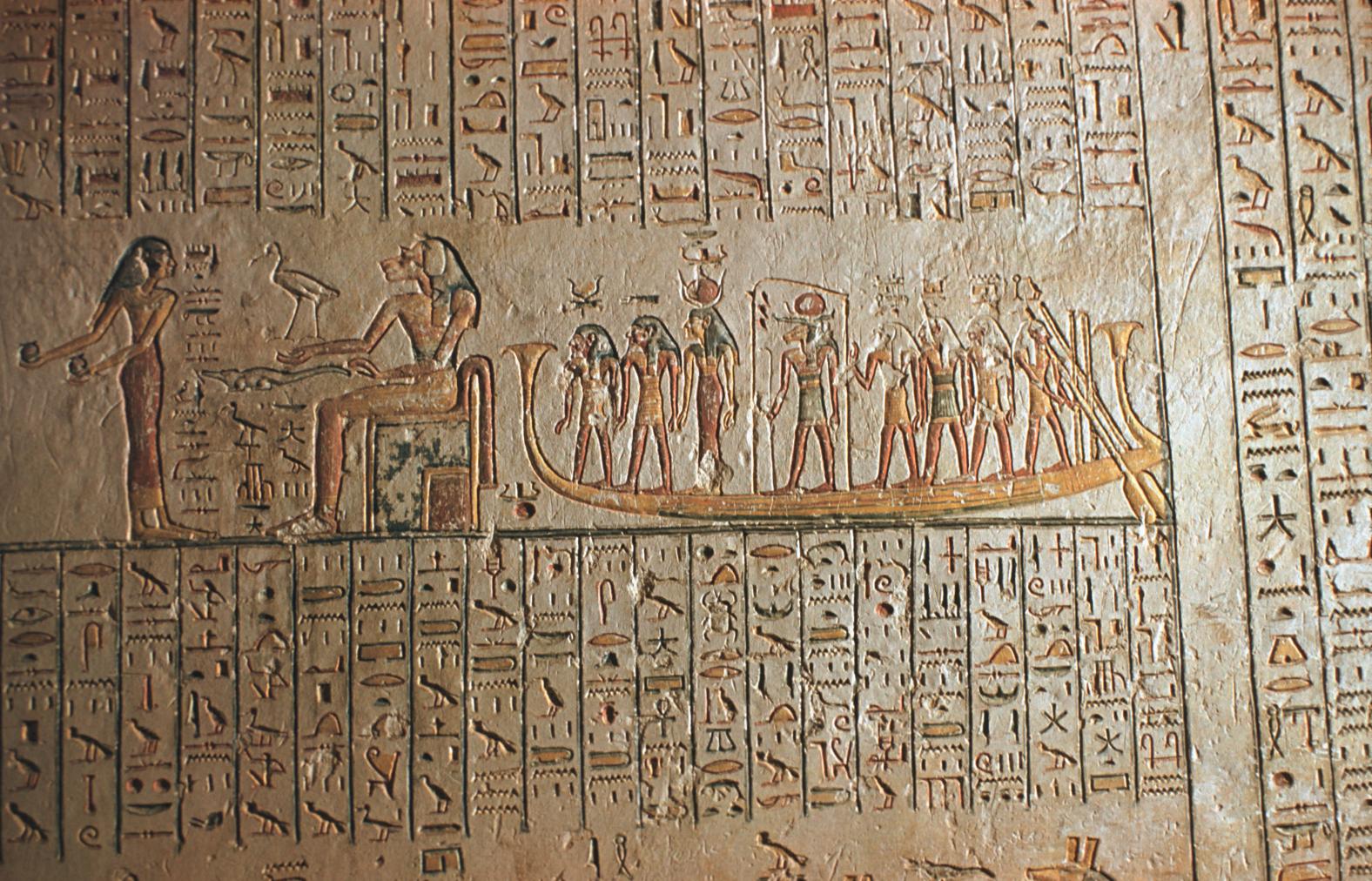
Gate G
See entire tombThere is a winged sun disk on the lintel with the names of Rameses VI on the reveals and thicknesses, and a vulture on the soffit.
Porter and Moss designation:


Corridor G
See entire tombThe floor of this corridor is flat until near its west end, where a ramp descends through gate H. A pair of beam holes before gate H may have been used to lower the sarcophagus into the burial chamber.
The upper part of the left (south) wall displays the first and second hours of the Imydwat; the lower part, the third hour. The sixth and seventh hours and the beginning of the eighth hour of the Imydwat are depicted in the reliefs on the right (north) wall. The ceiling displays diagrams of the solar boat and its components. Mummiform figures on biers form parts of enigmatic compositions like those on the ceiling of corridor D in KV 6. Along the edges are excerpts from the Books of the Day and Night. Graffiti are found throughout the corridor.
Porter and Moss designation:
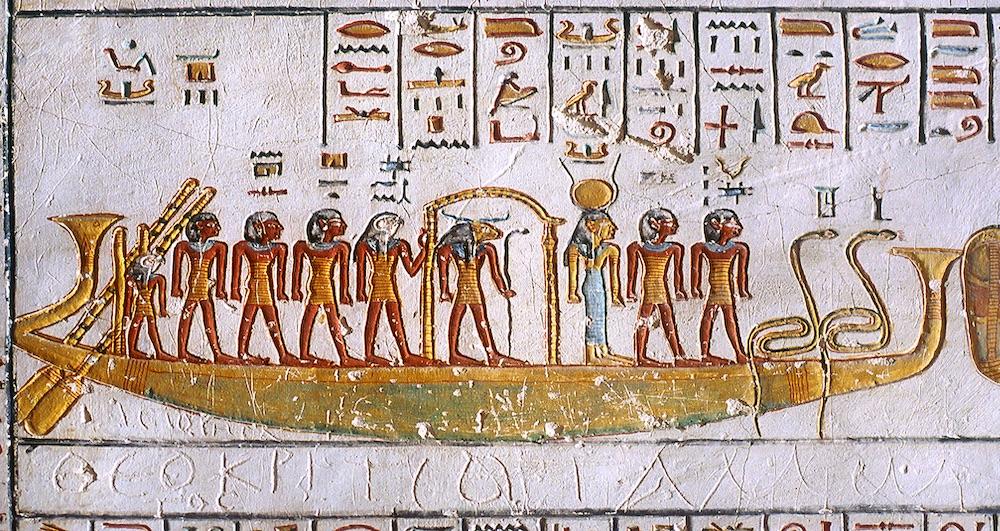
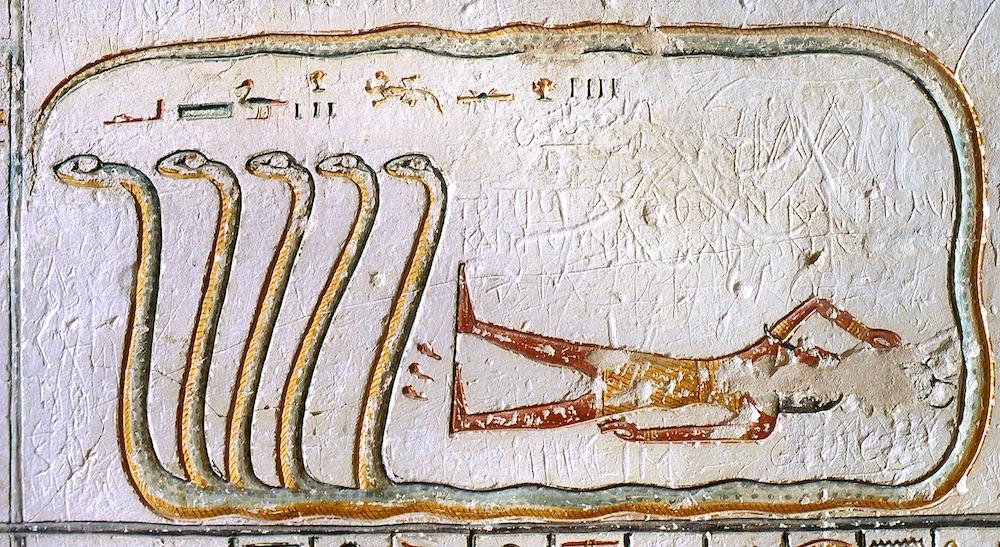

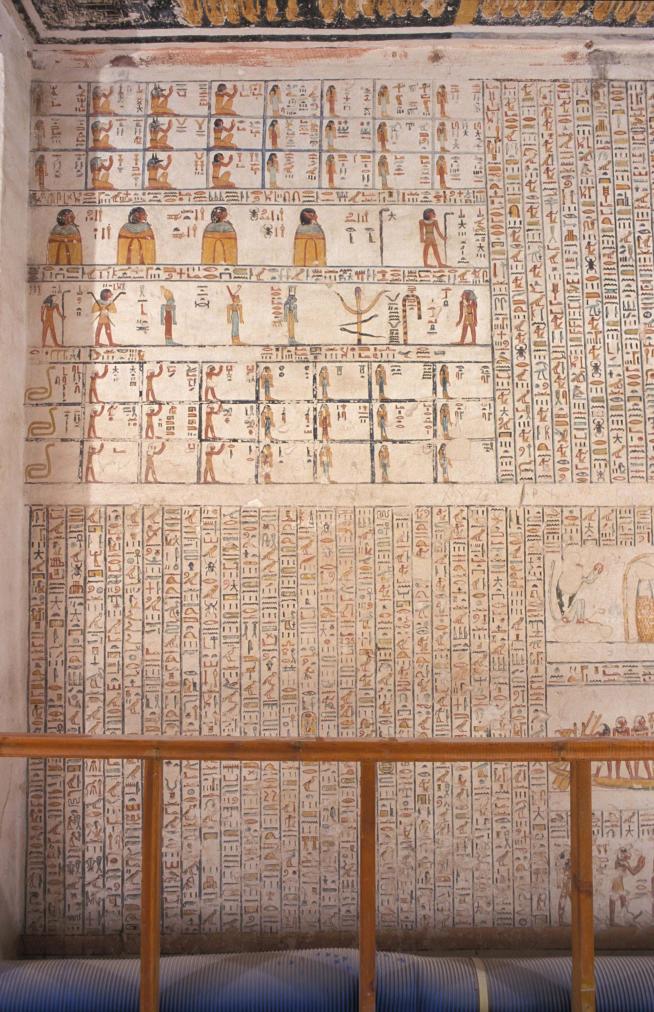
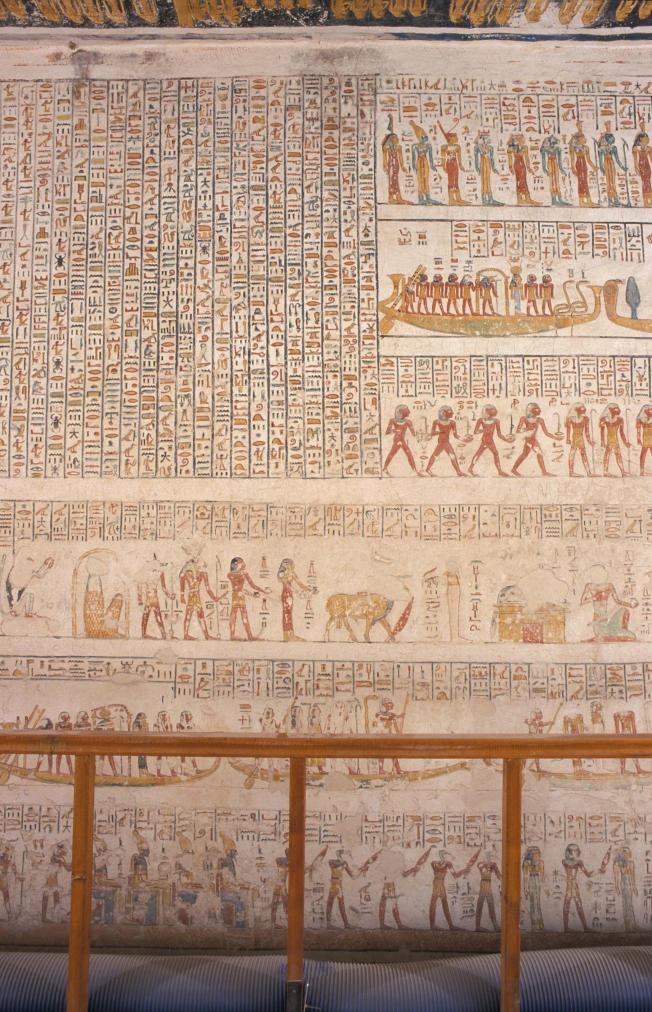
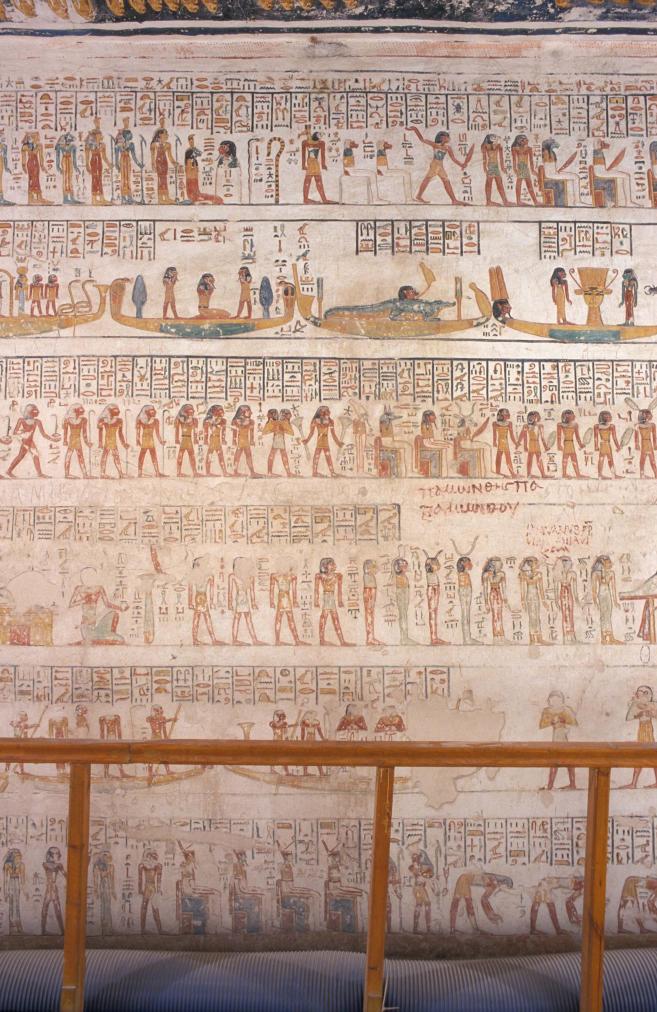
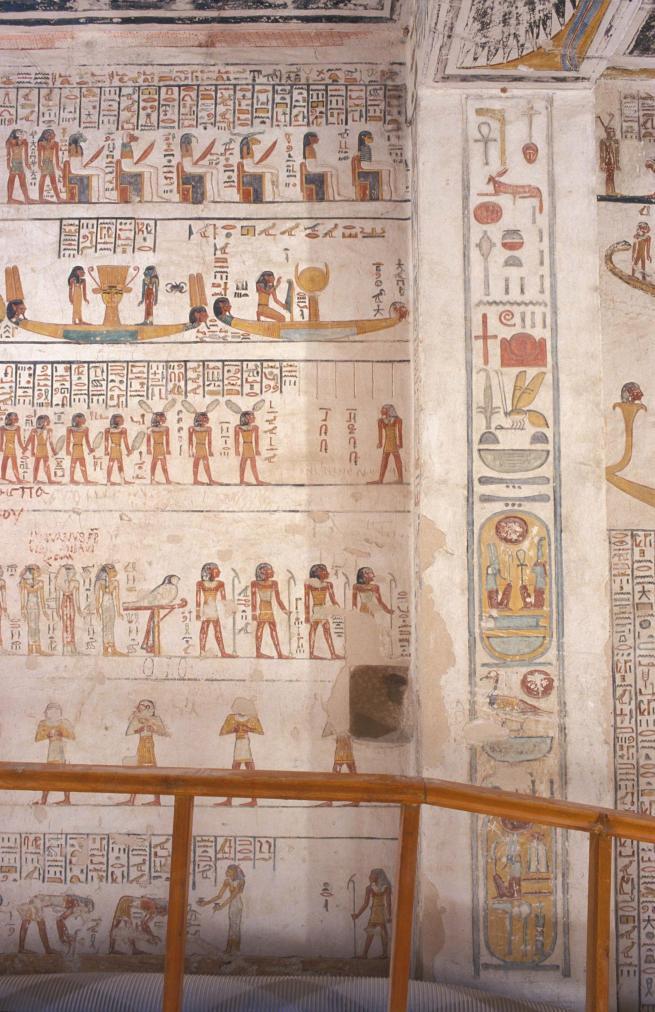
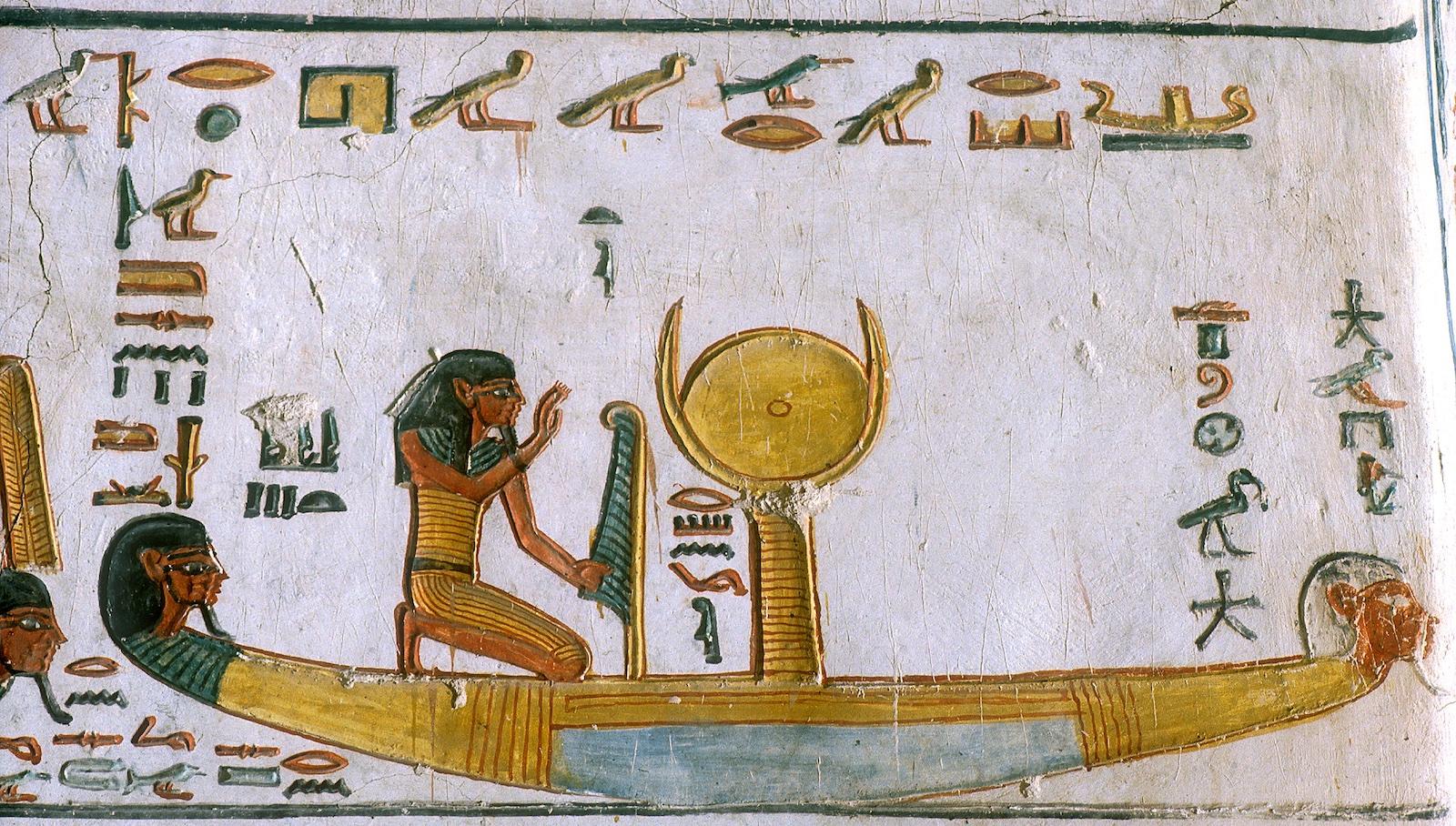
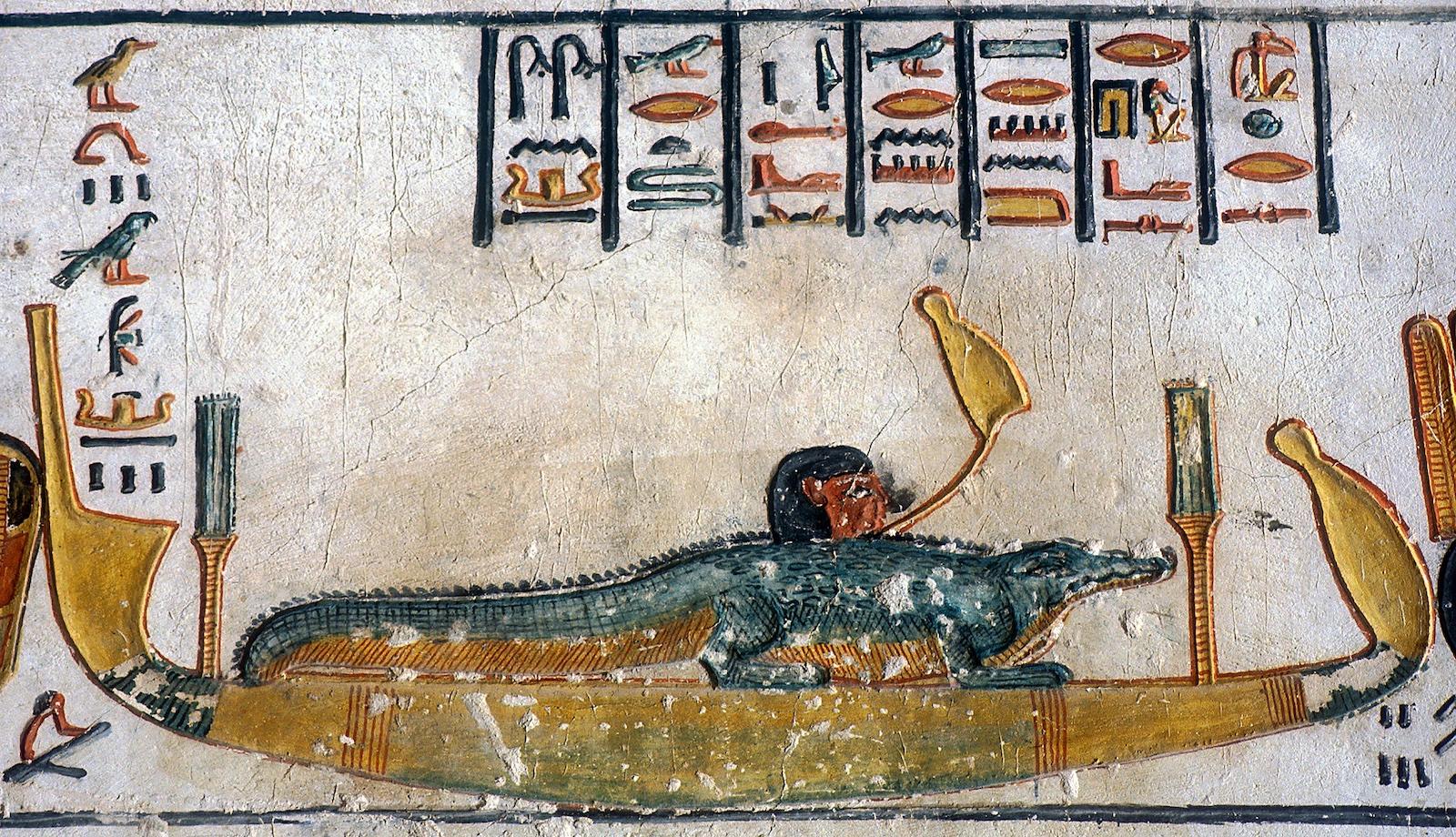
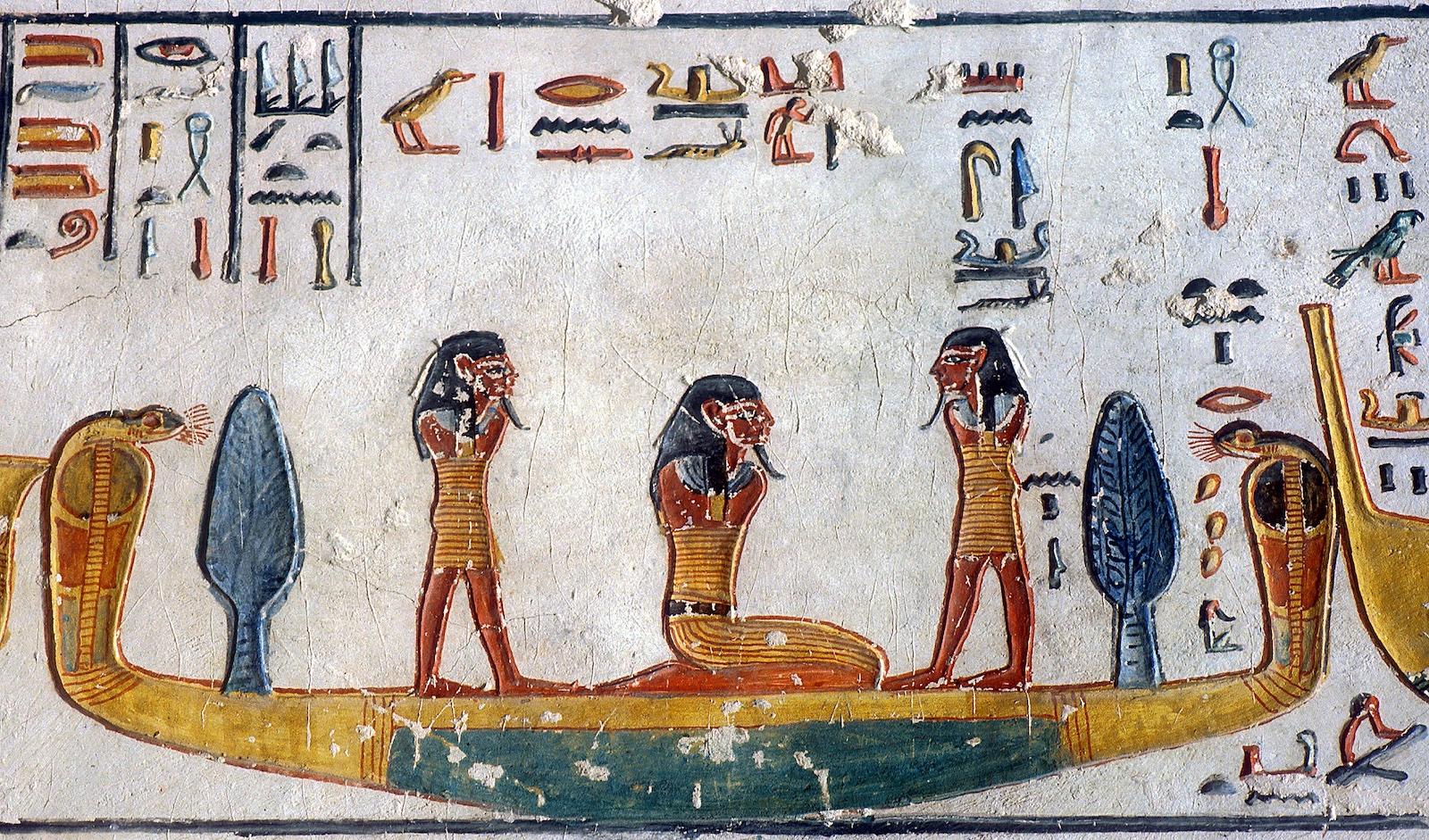
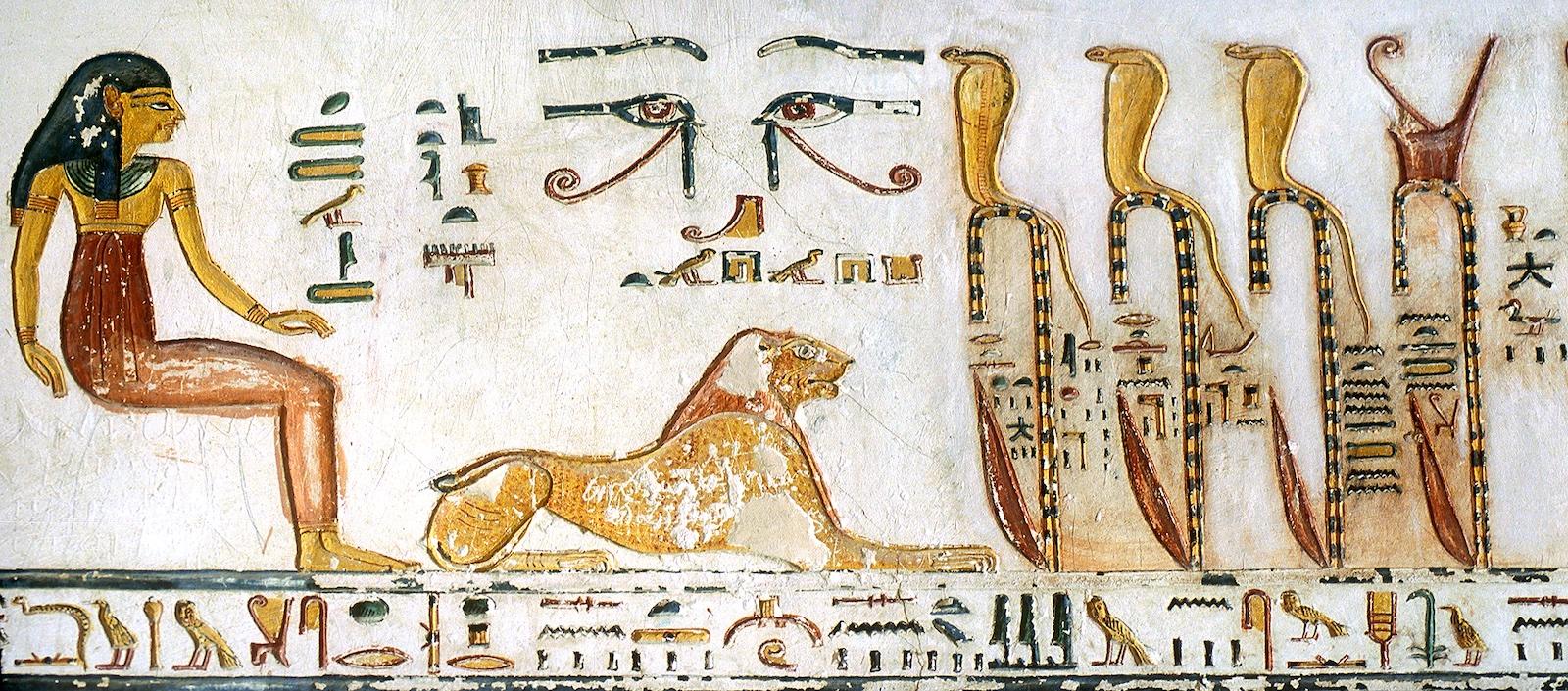
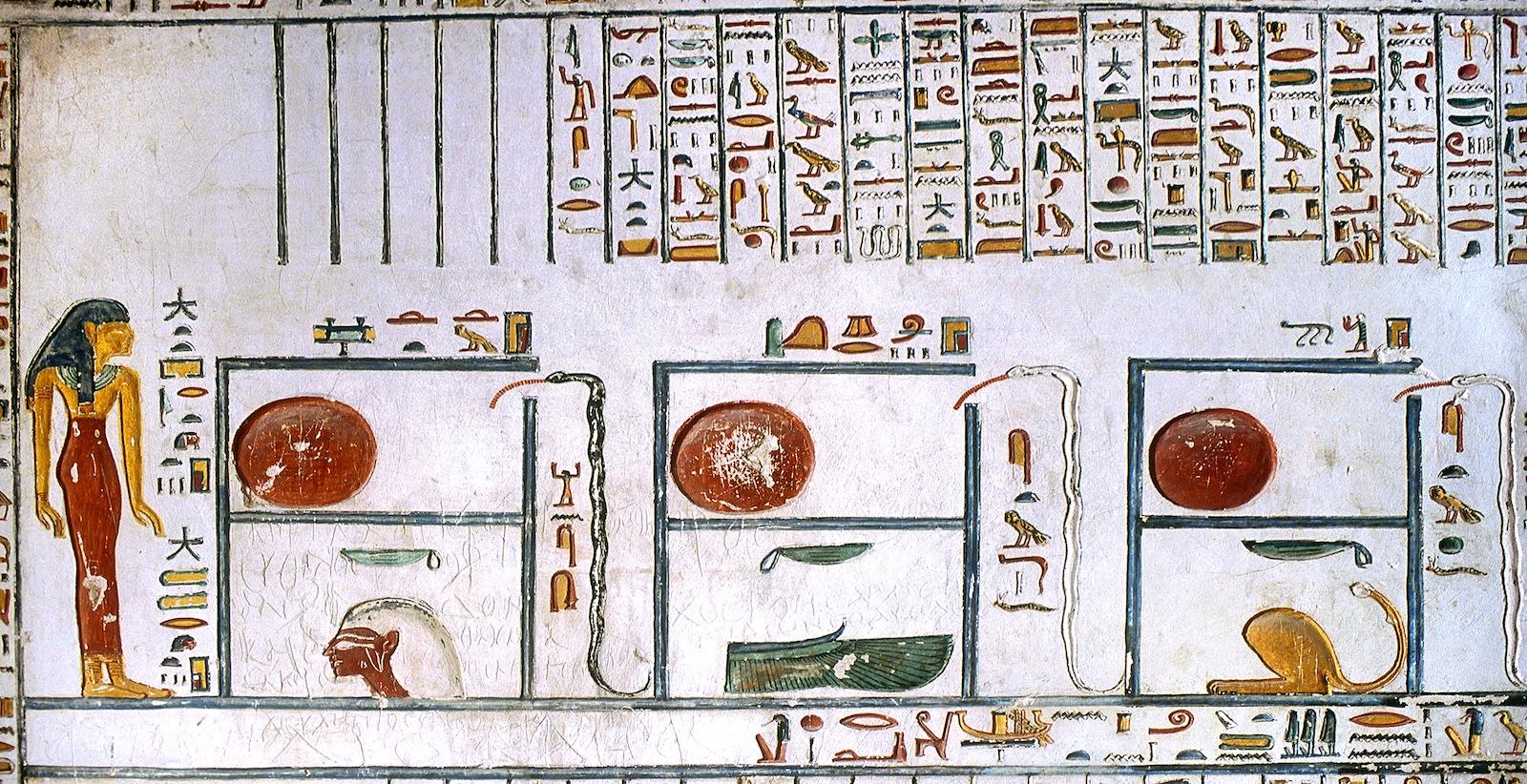
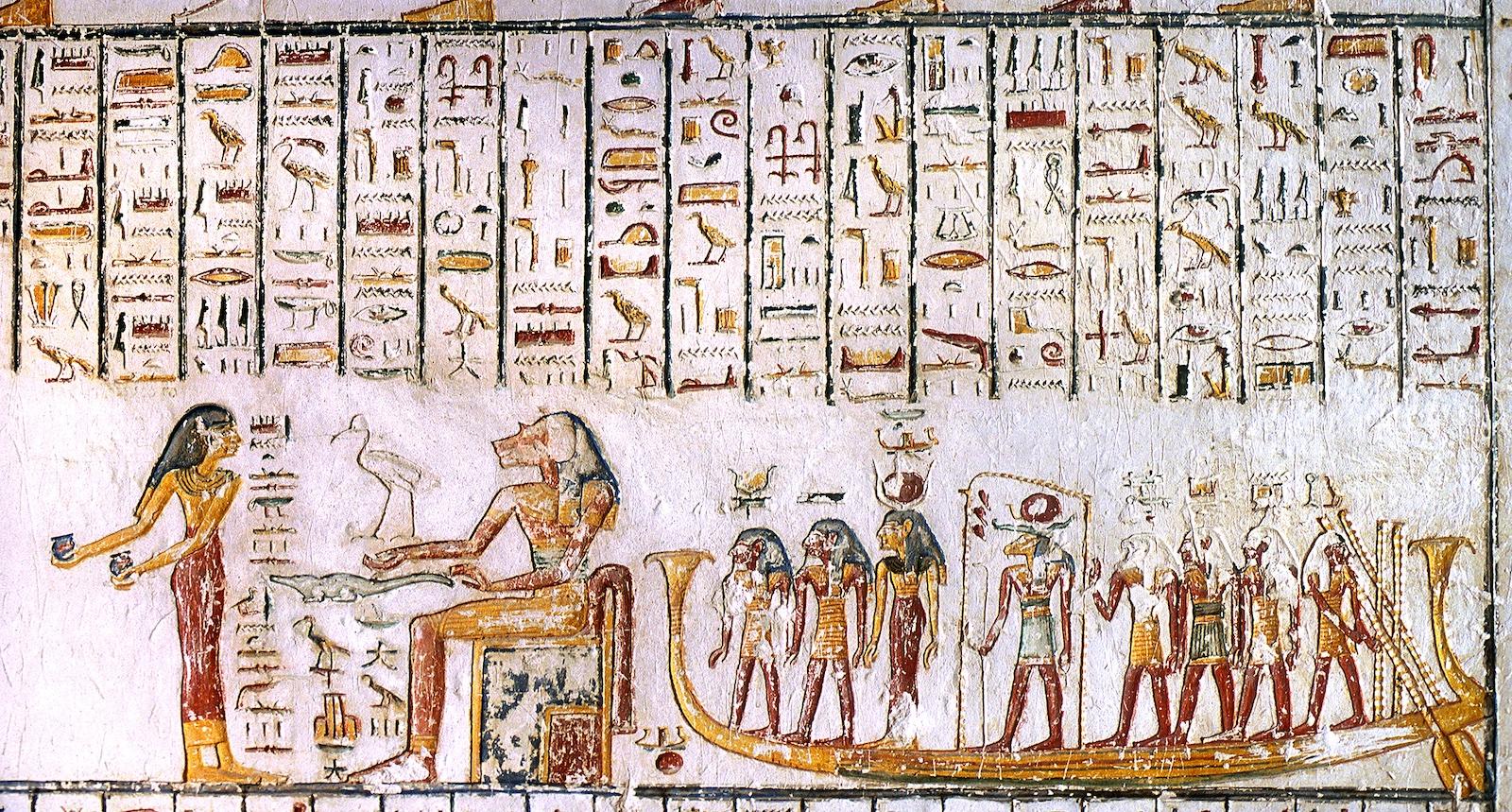
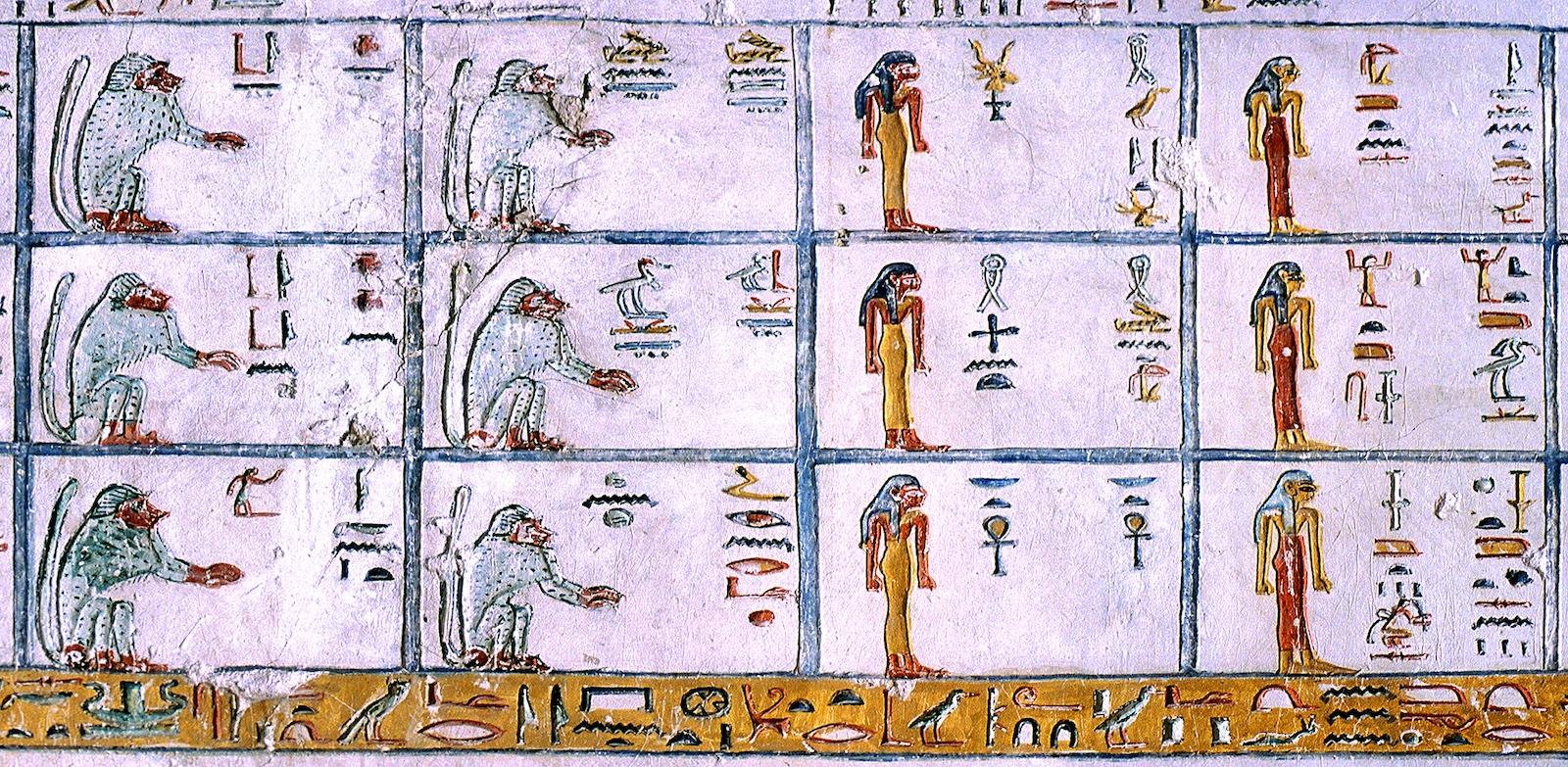
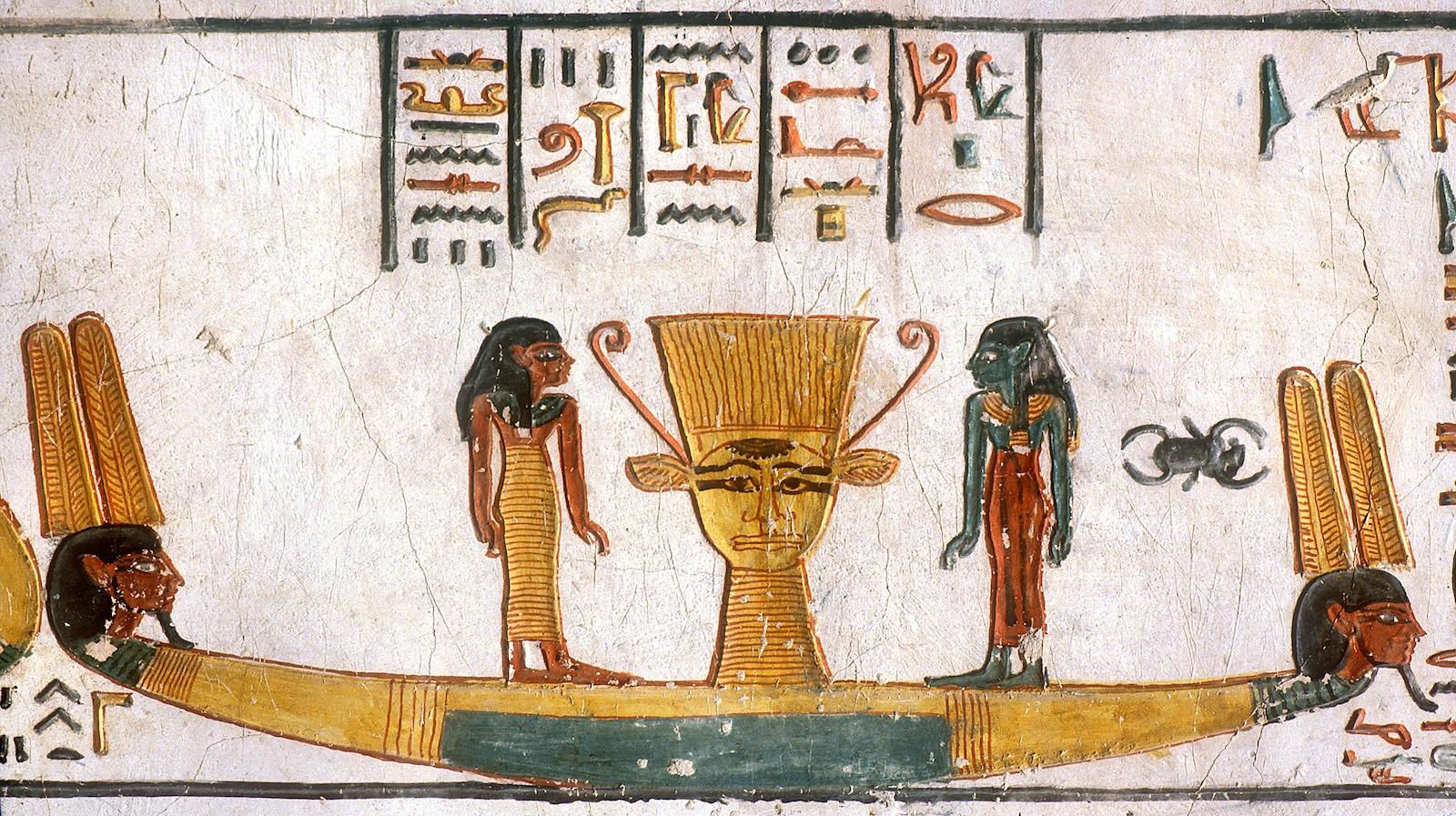
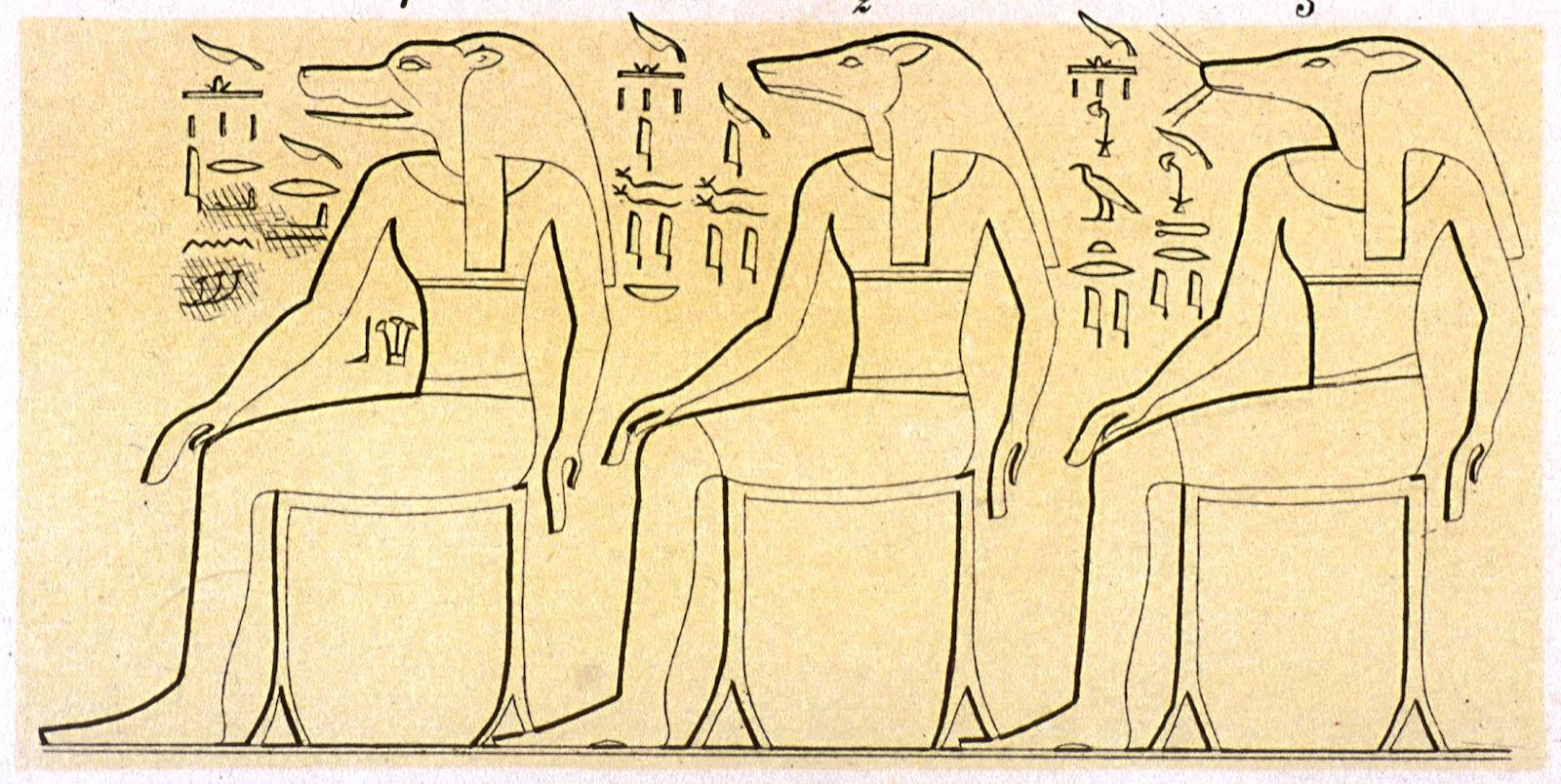
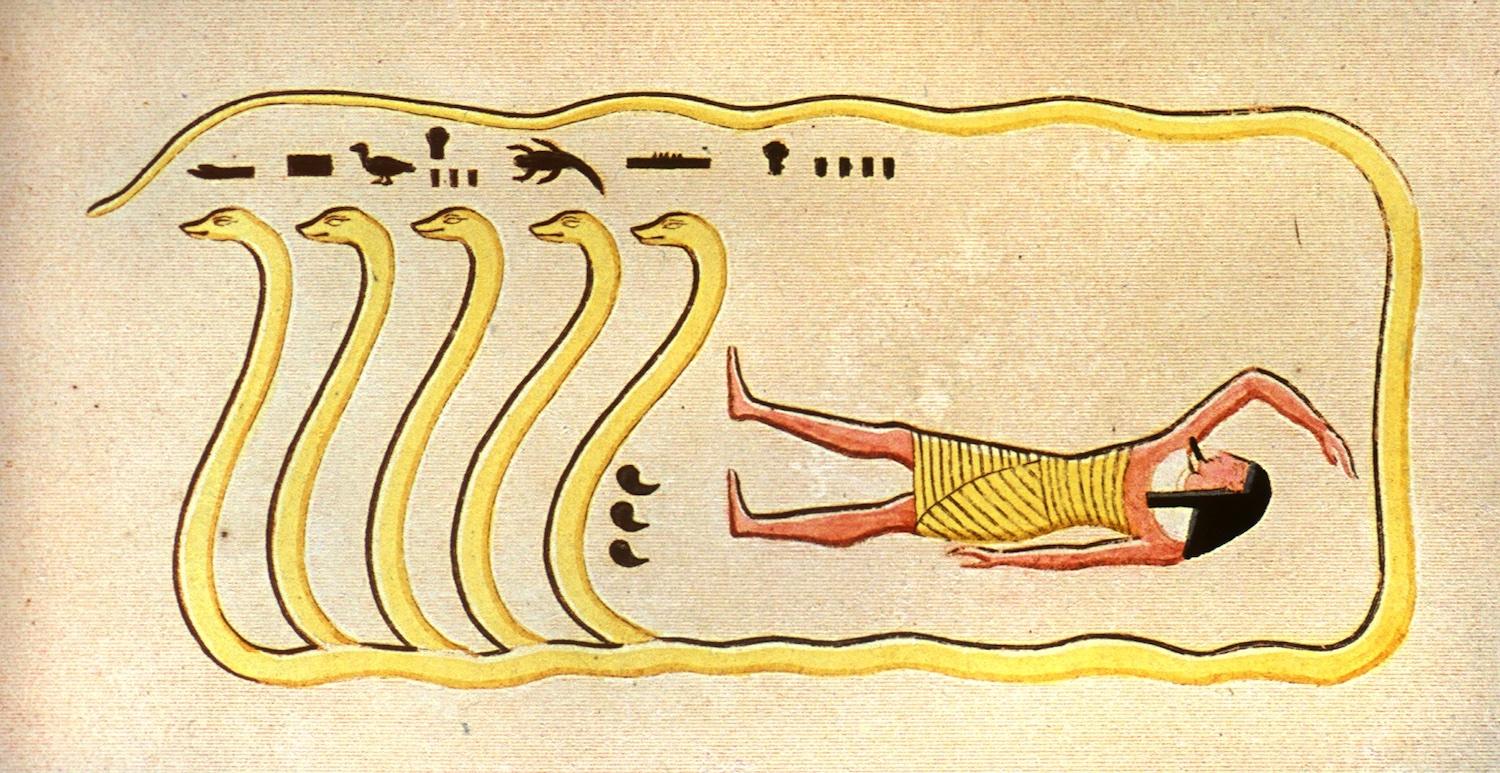

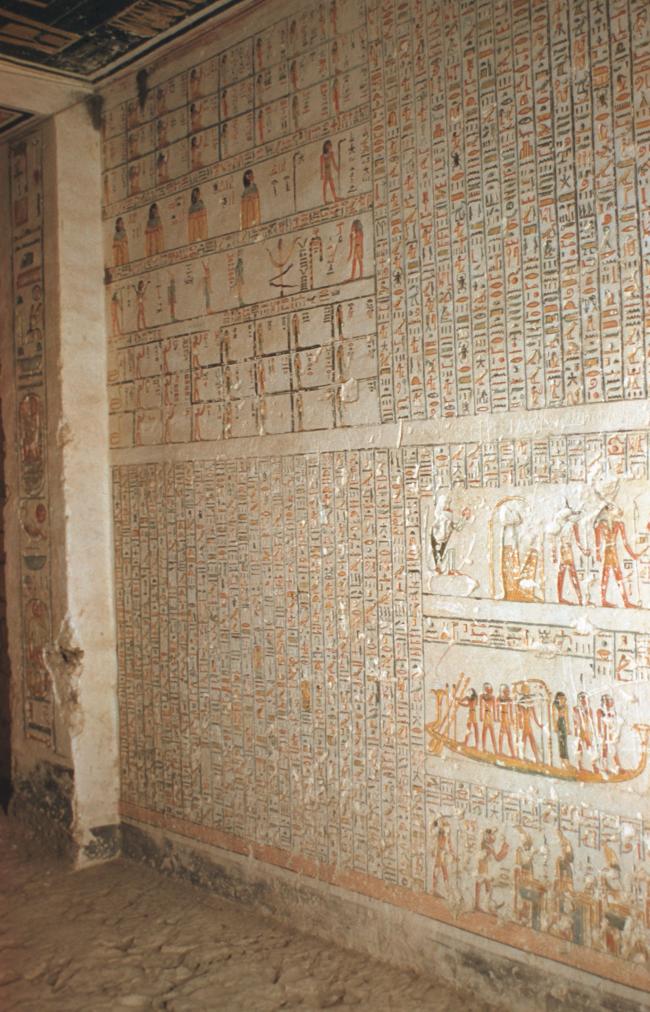
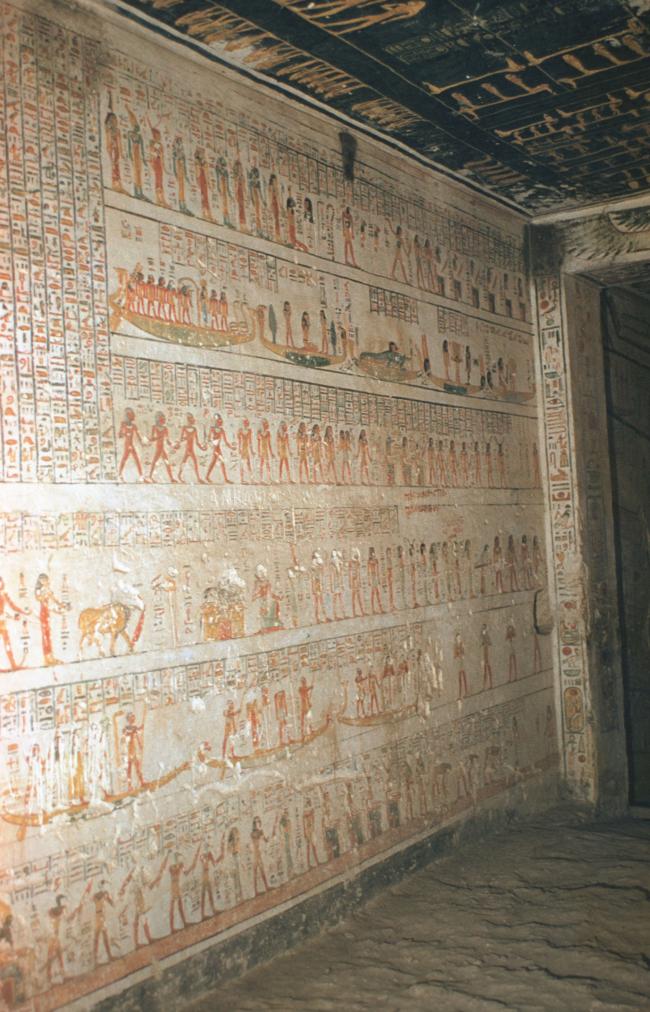
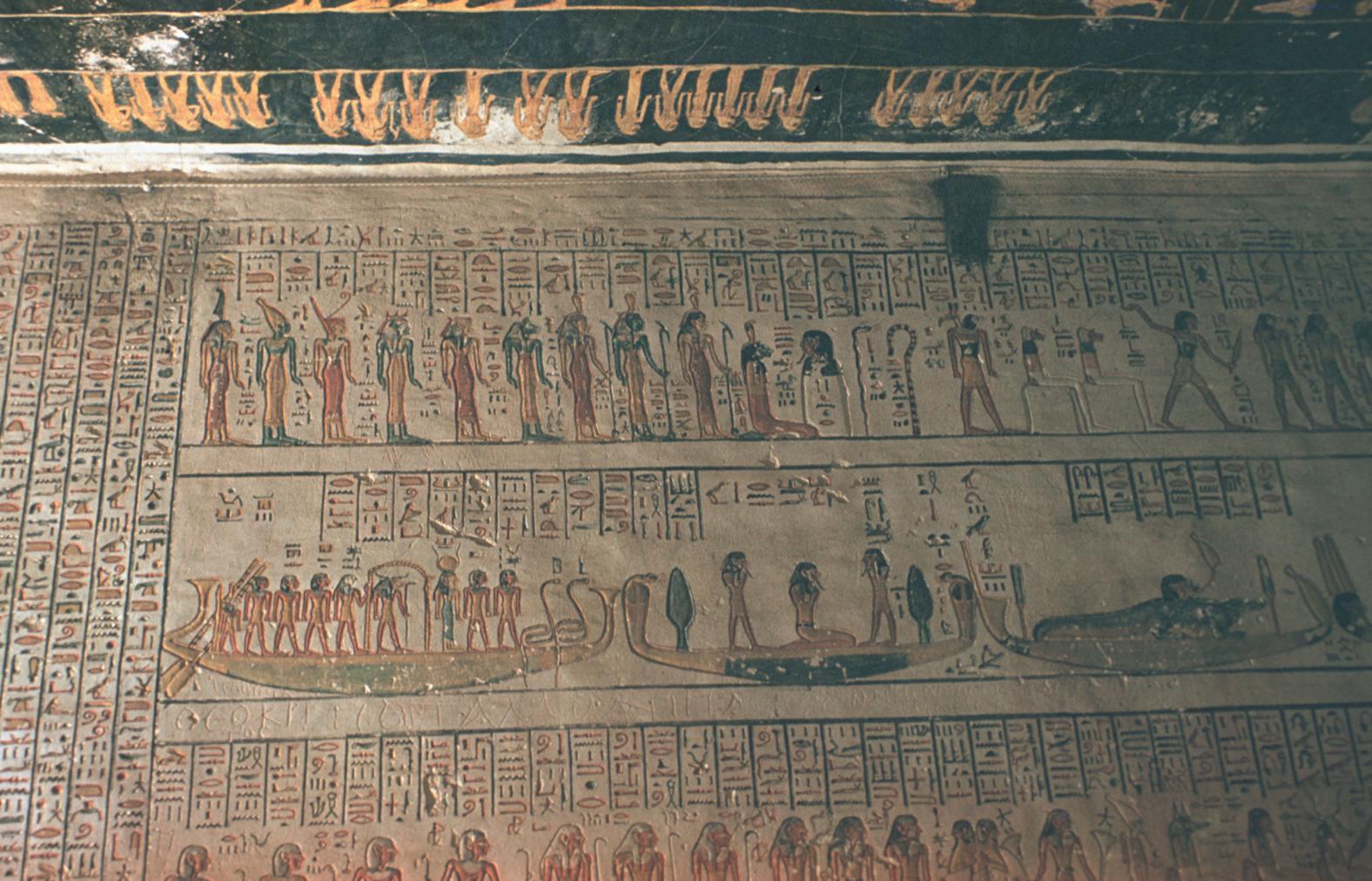
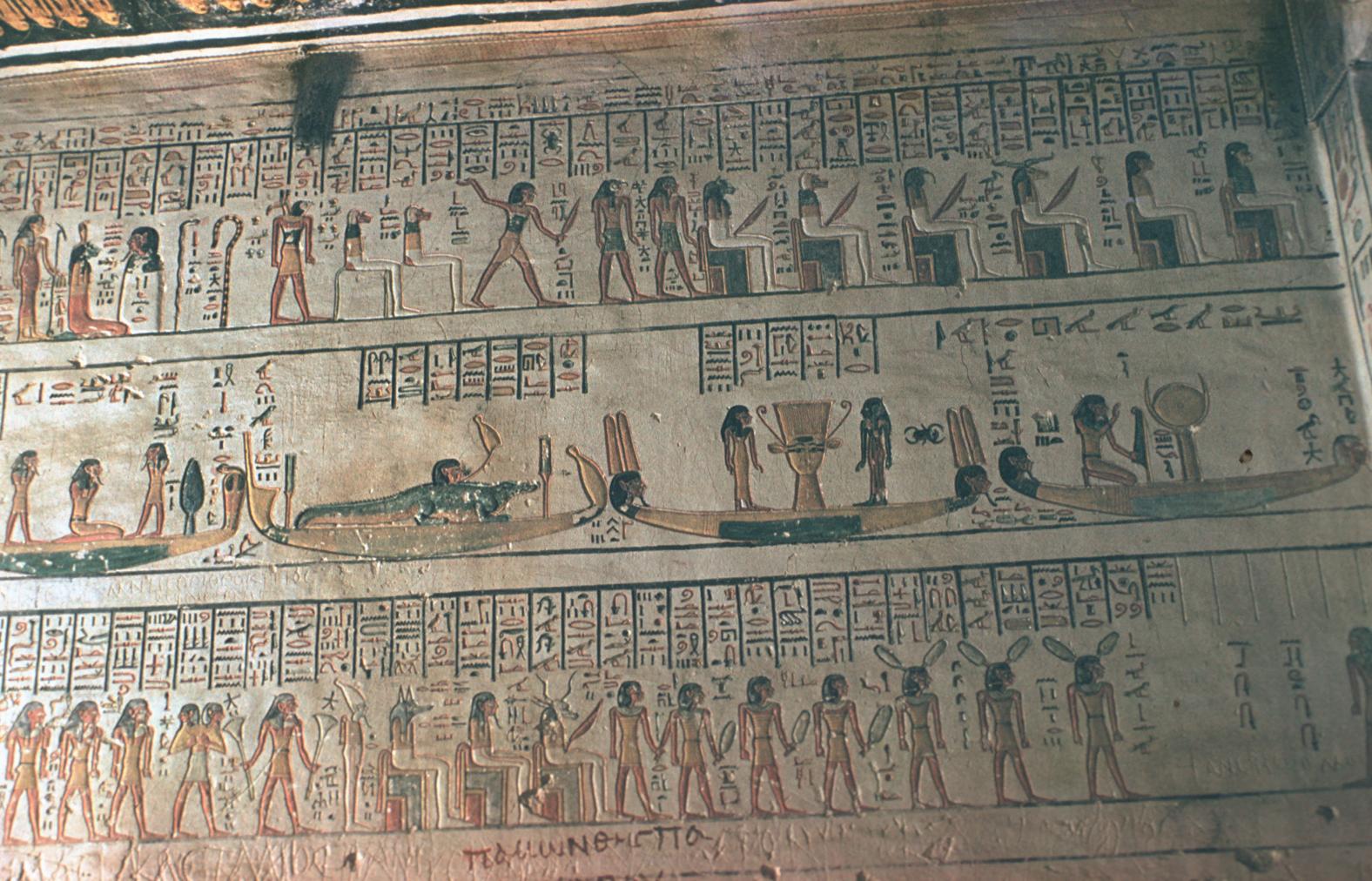
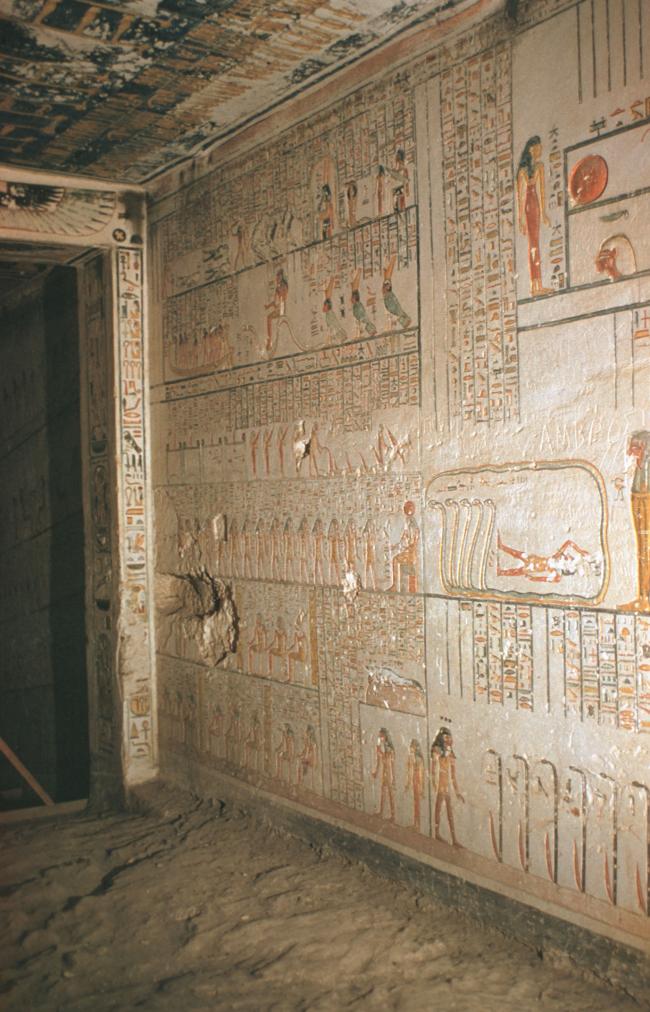
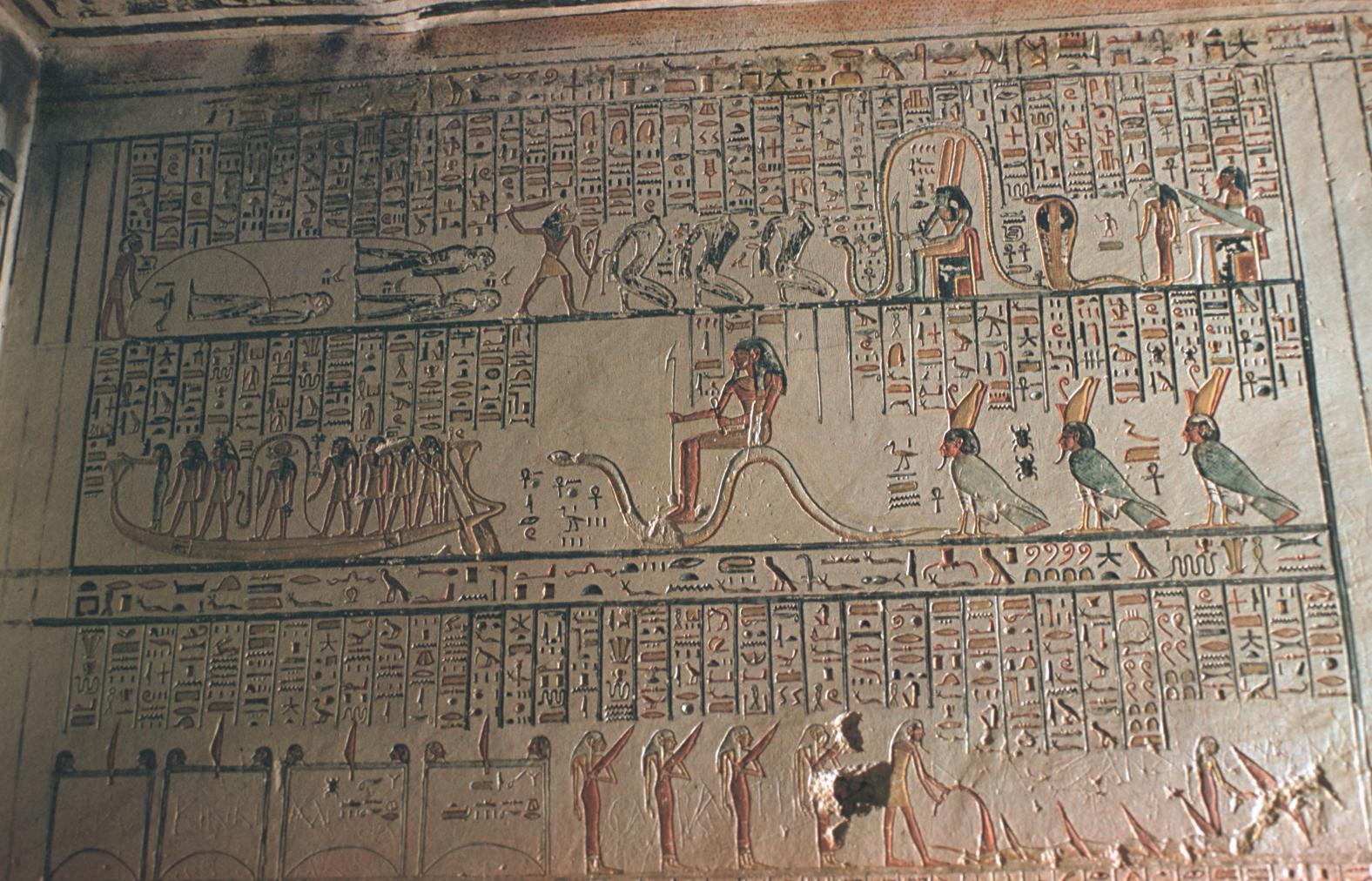
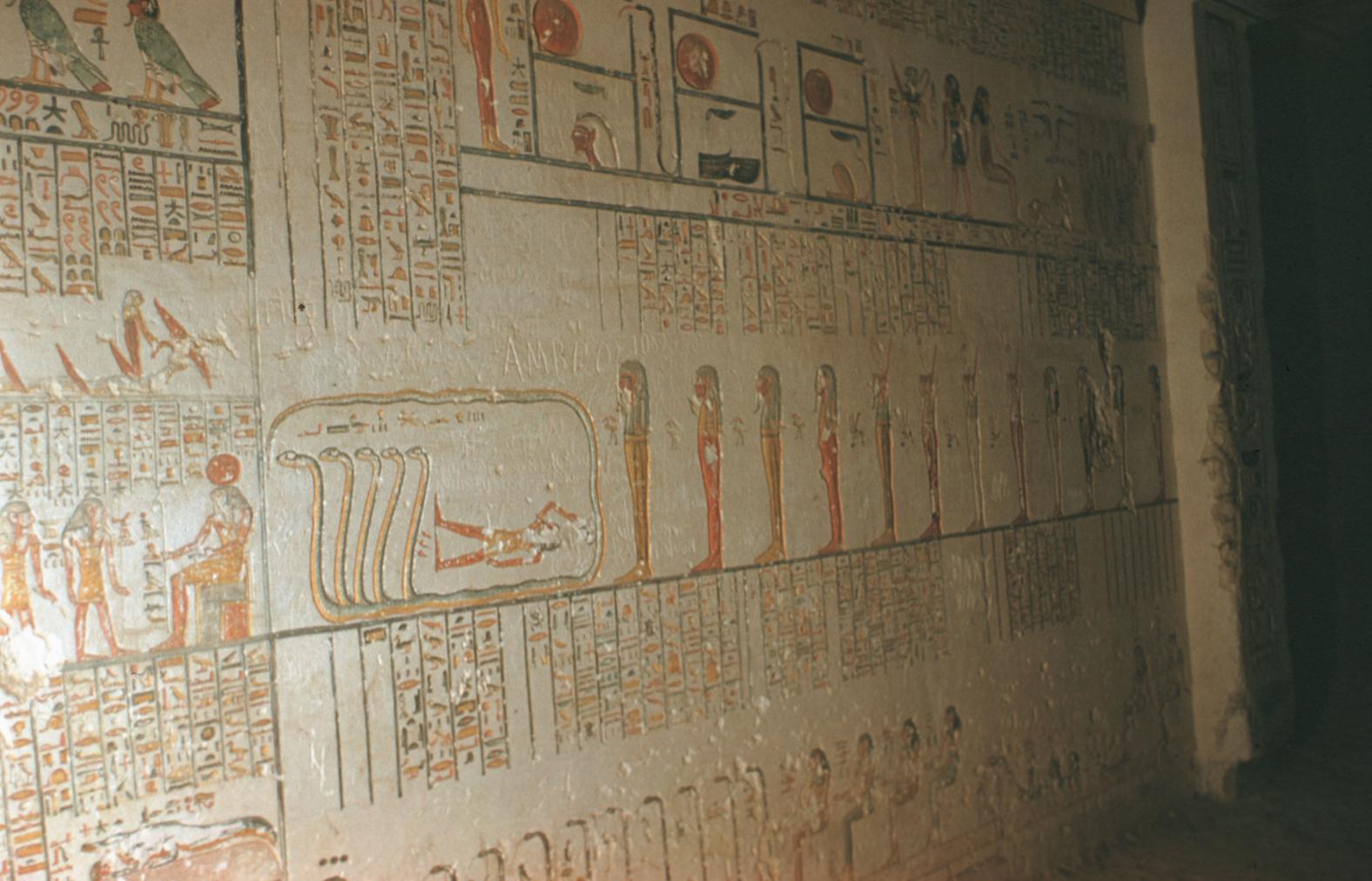
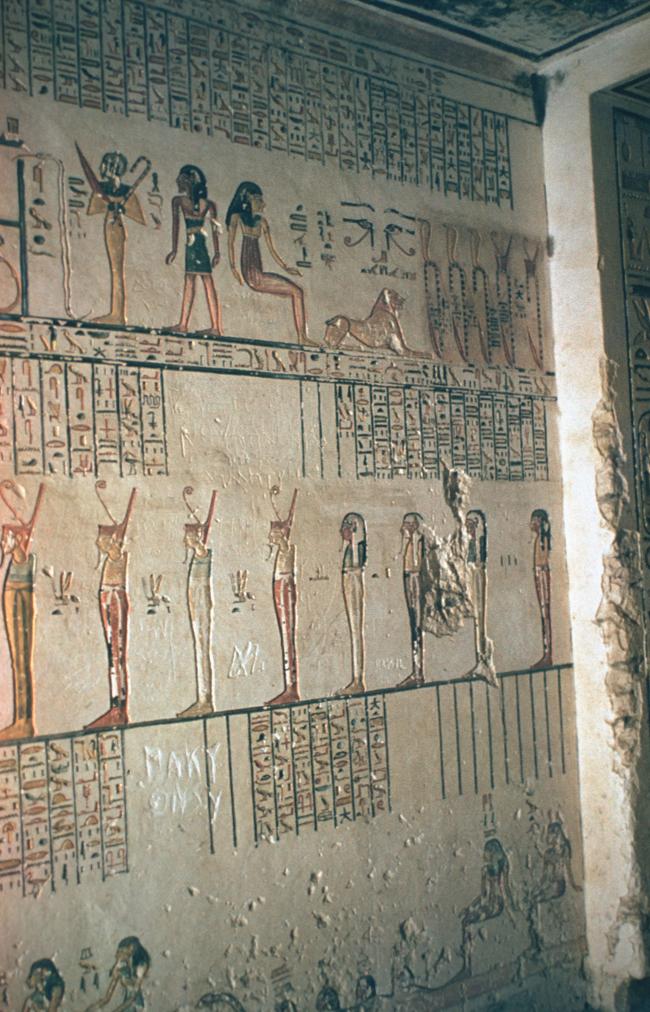
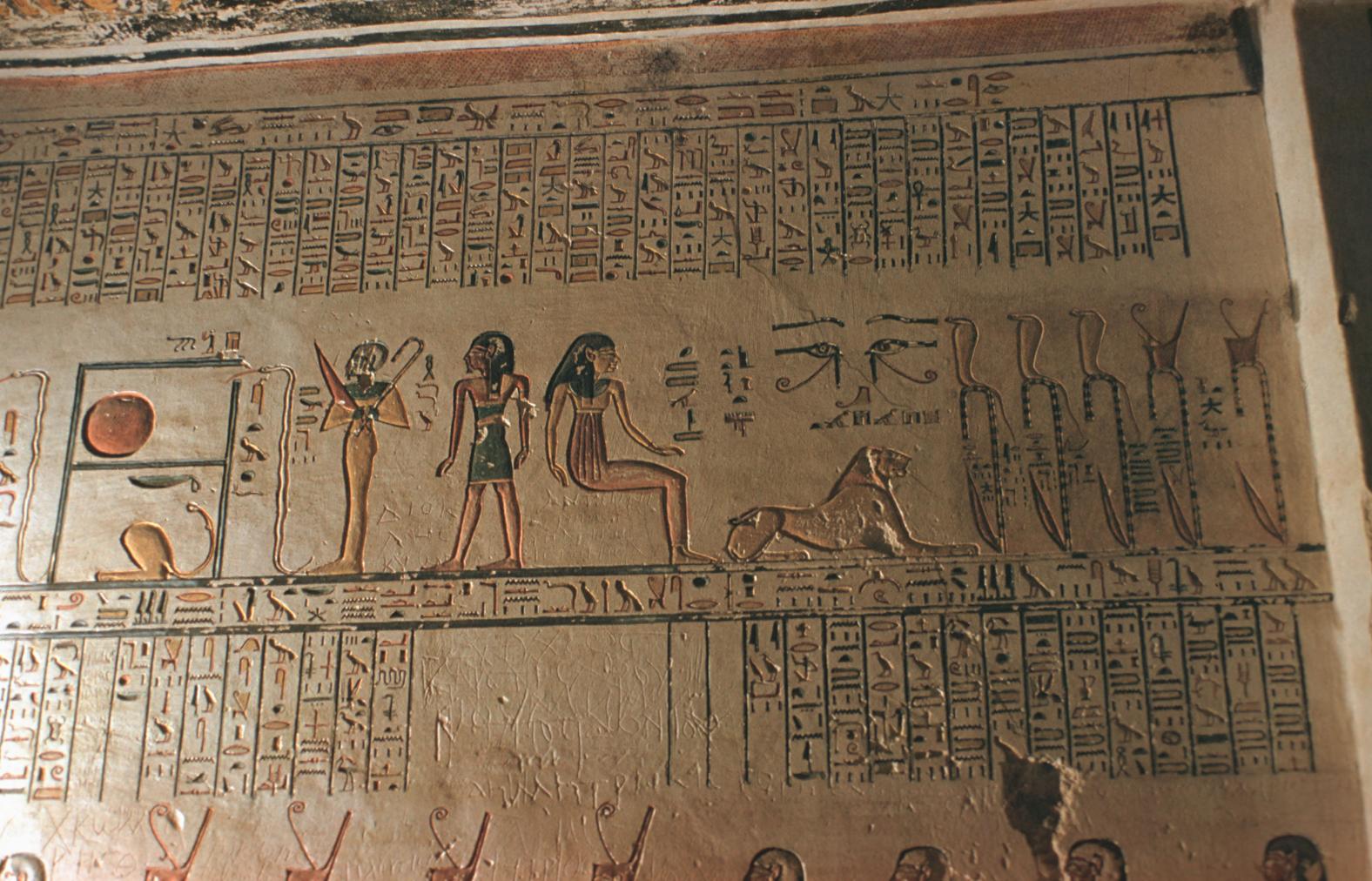
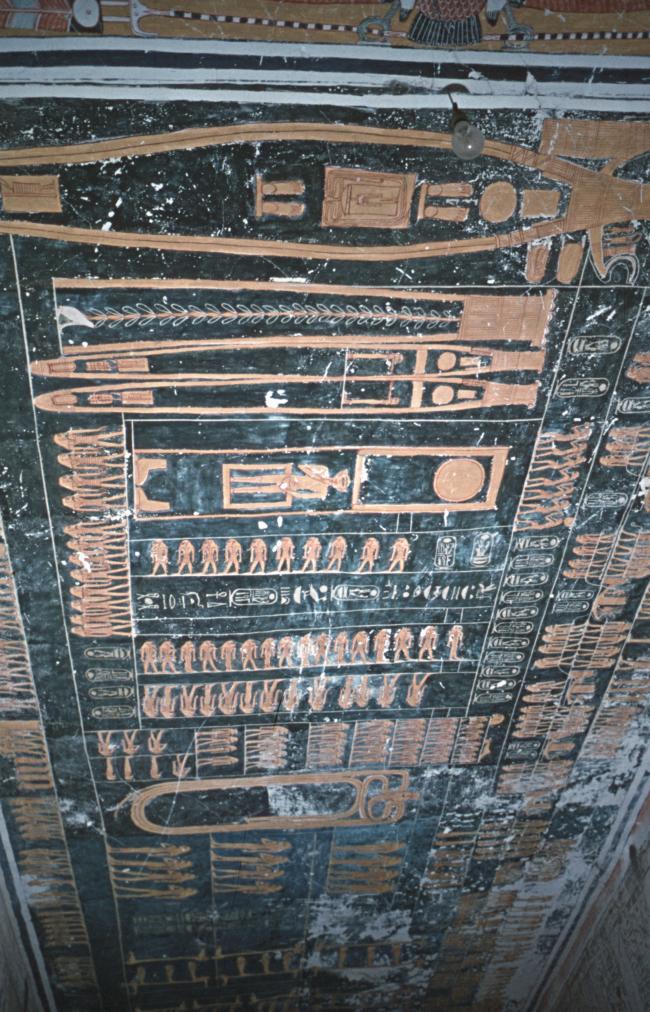
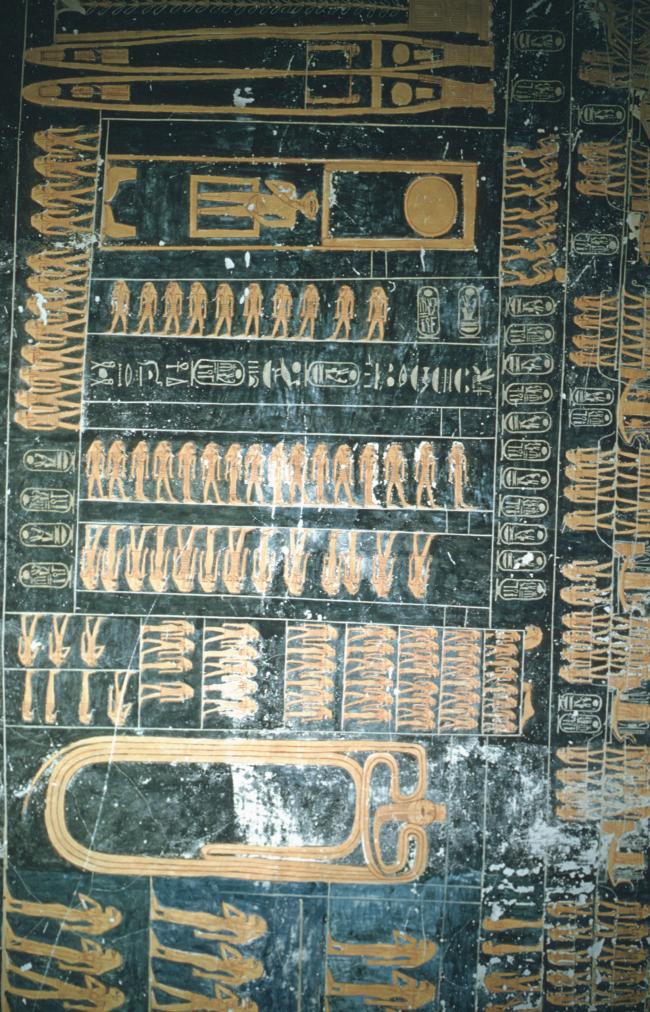
Gate H
See entire tombThere is a winged sun disk on the lintel with the names of Rameses VI on the reveals and thicknesses, and a vulture on the soffit.
Porter and Moss designation:

Corridor H
See entire tombThe sloping floor of this corridor continues the ramp at the end of corridor G through gate I. As a result of breaking through the floor of KV 12, the builders of KV 9 lowered the floors and ceilings of corridor H, gate I, and chamber I. The left (south) wall shows scenes from the Imydwat, with the upper part containing the fourth hour and the lower part the fifth hour. The eighth to eleventh hours of the Imydwat appear on the right (north) wall. The ceiling contains enigmatic scenes with cryptographic texts.
Porter and Moss designation:
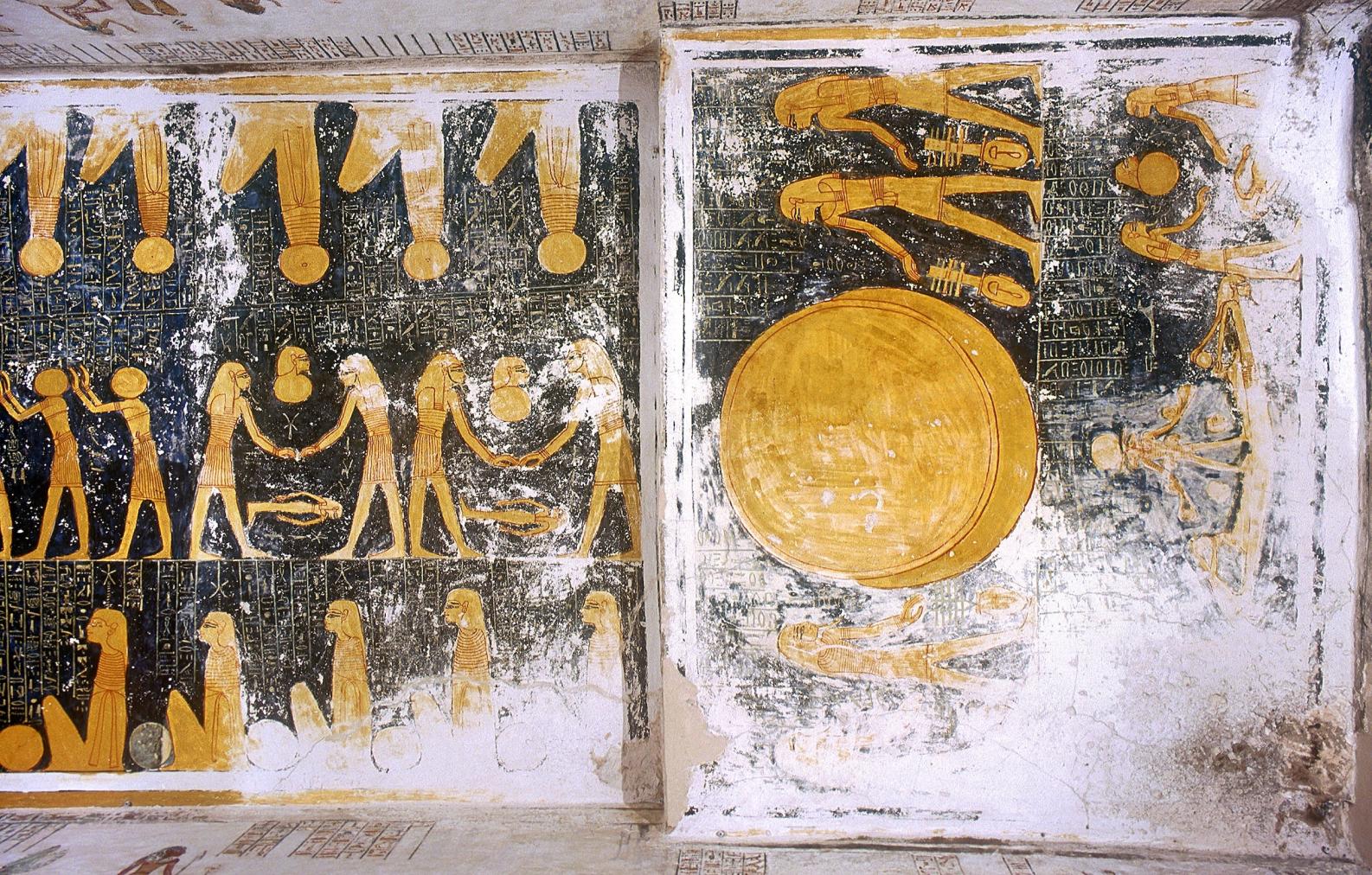
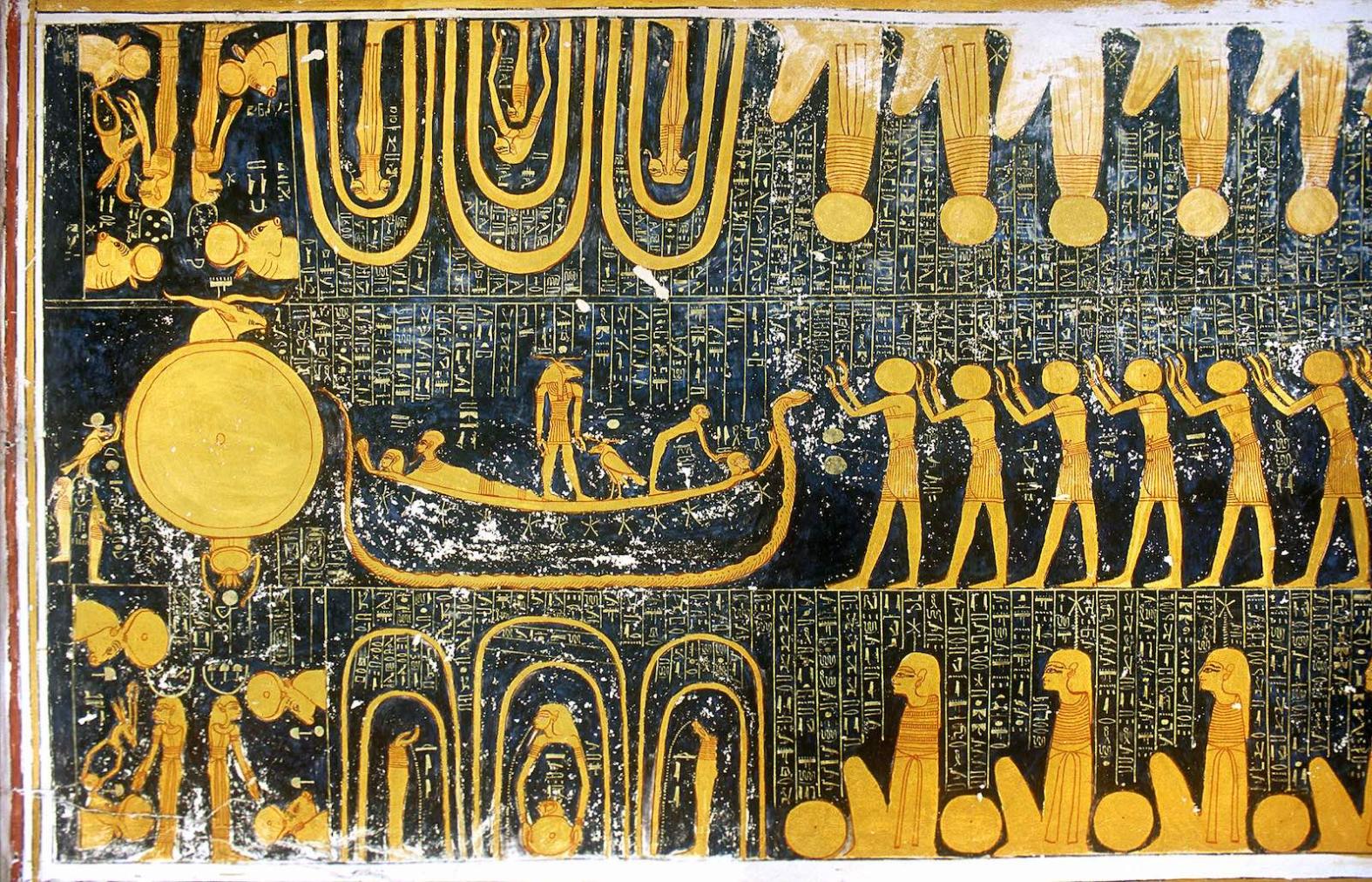
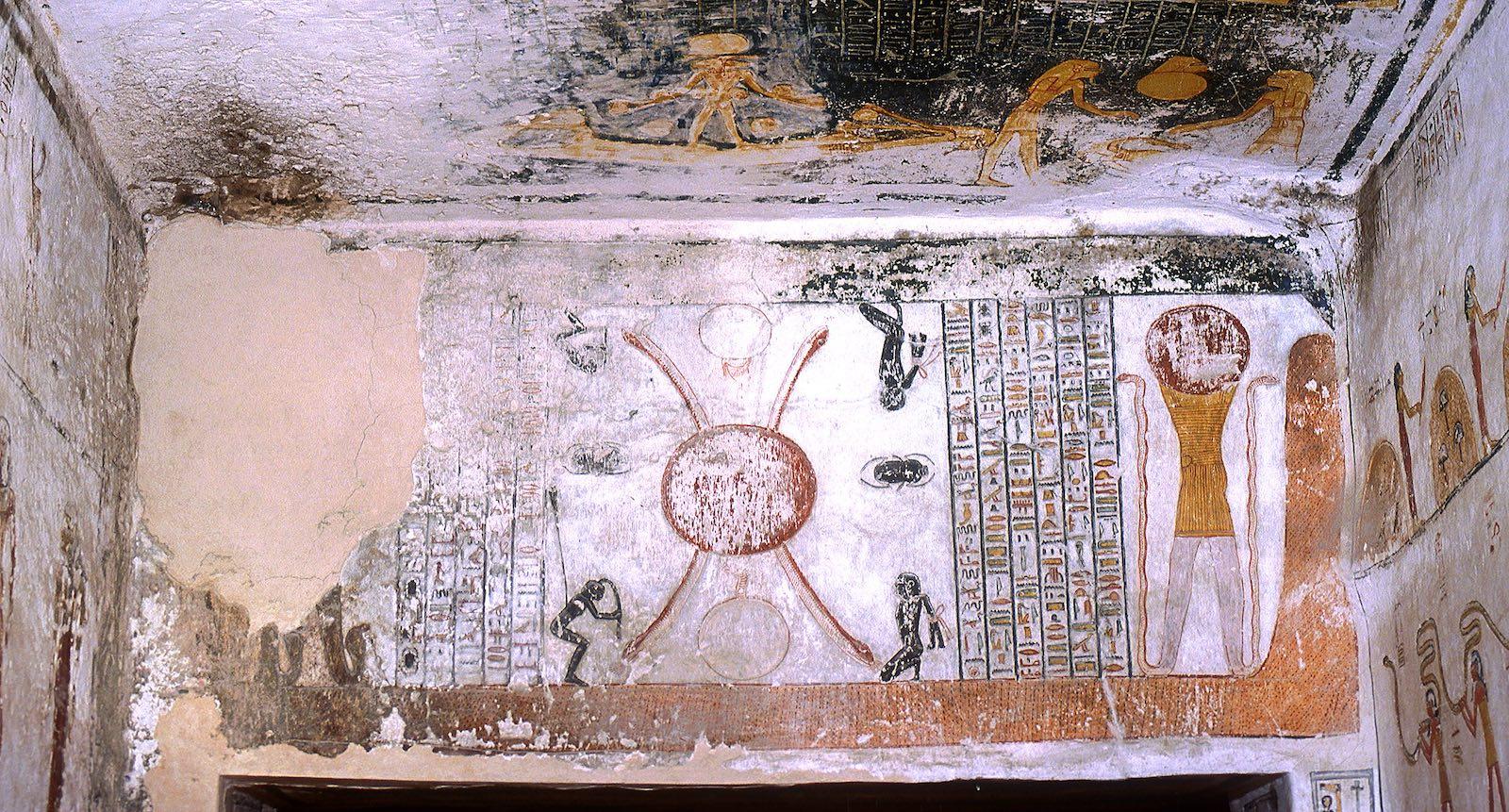
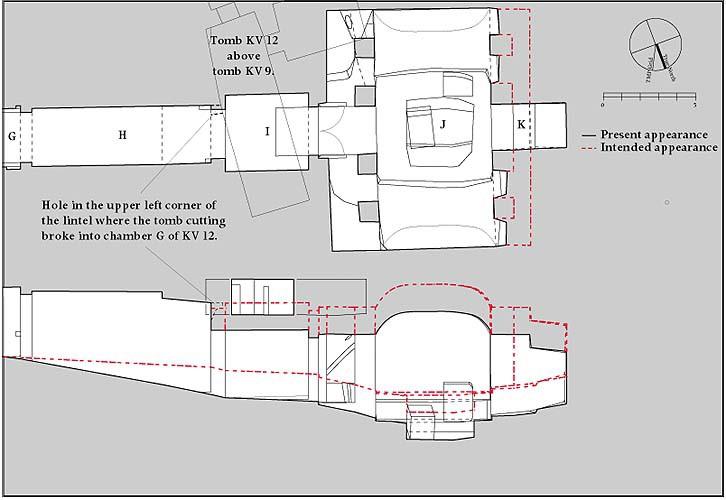
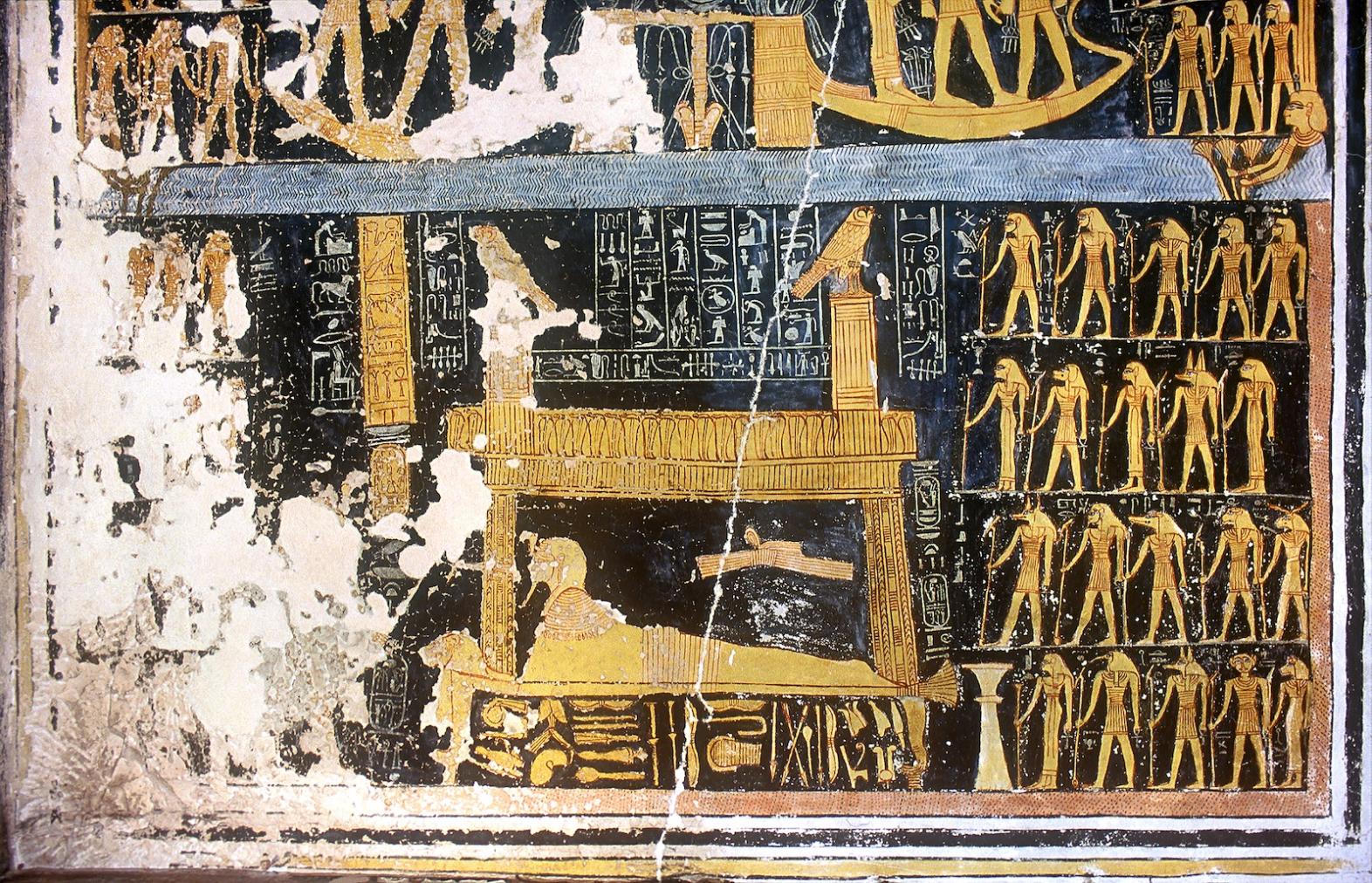
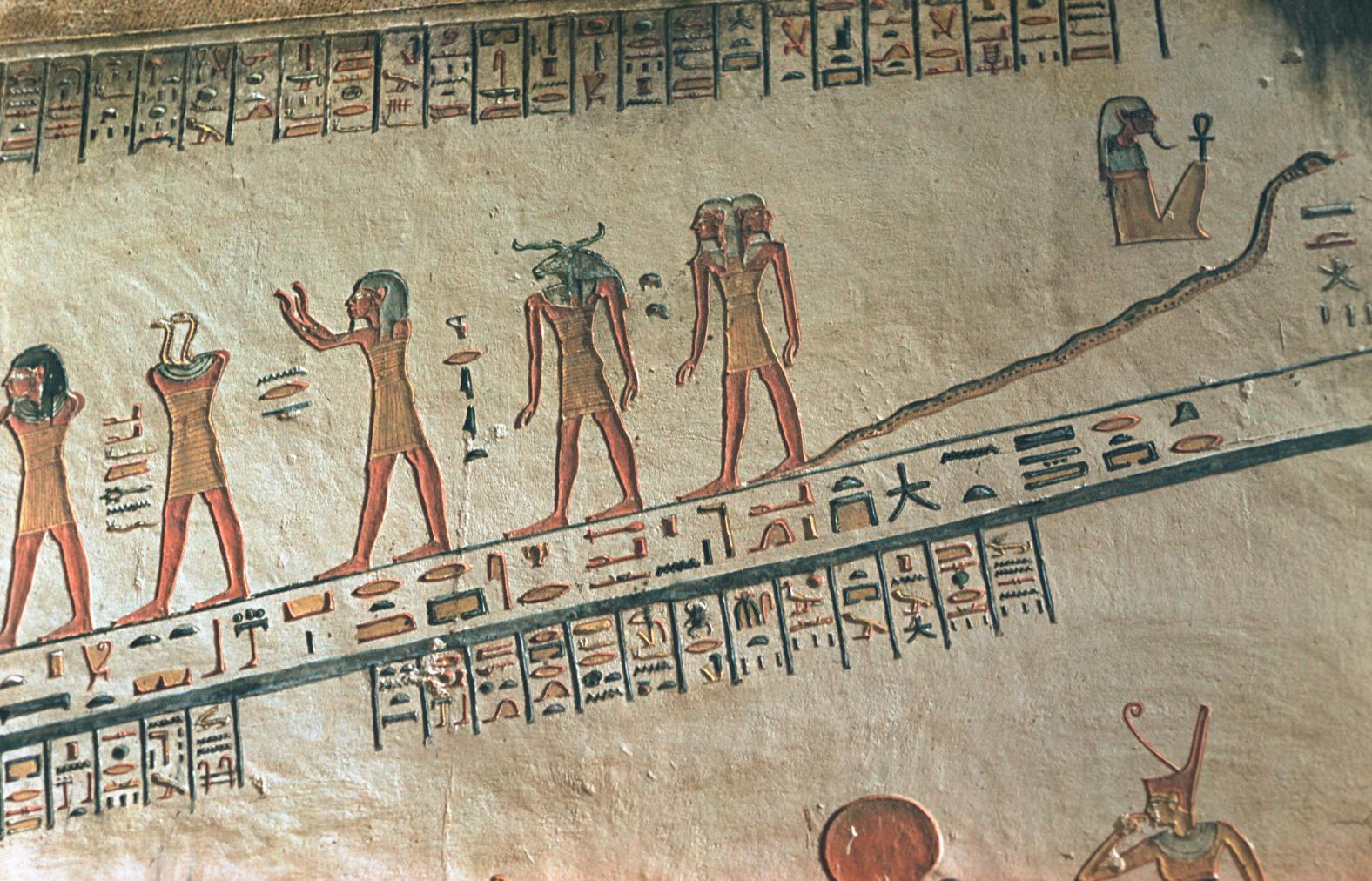
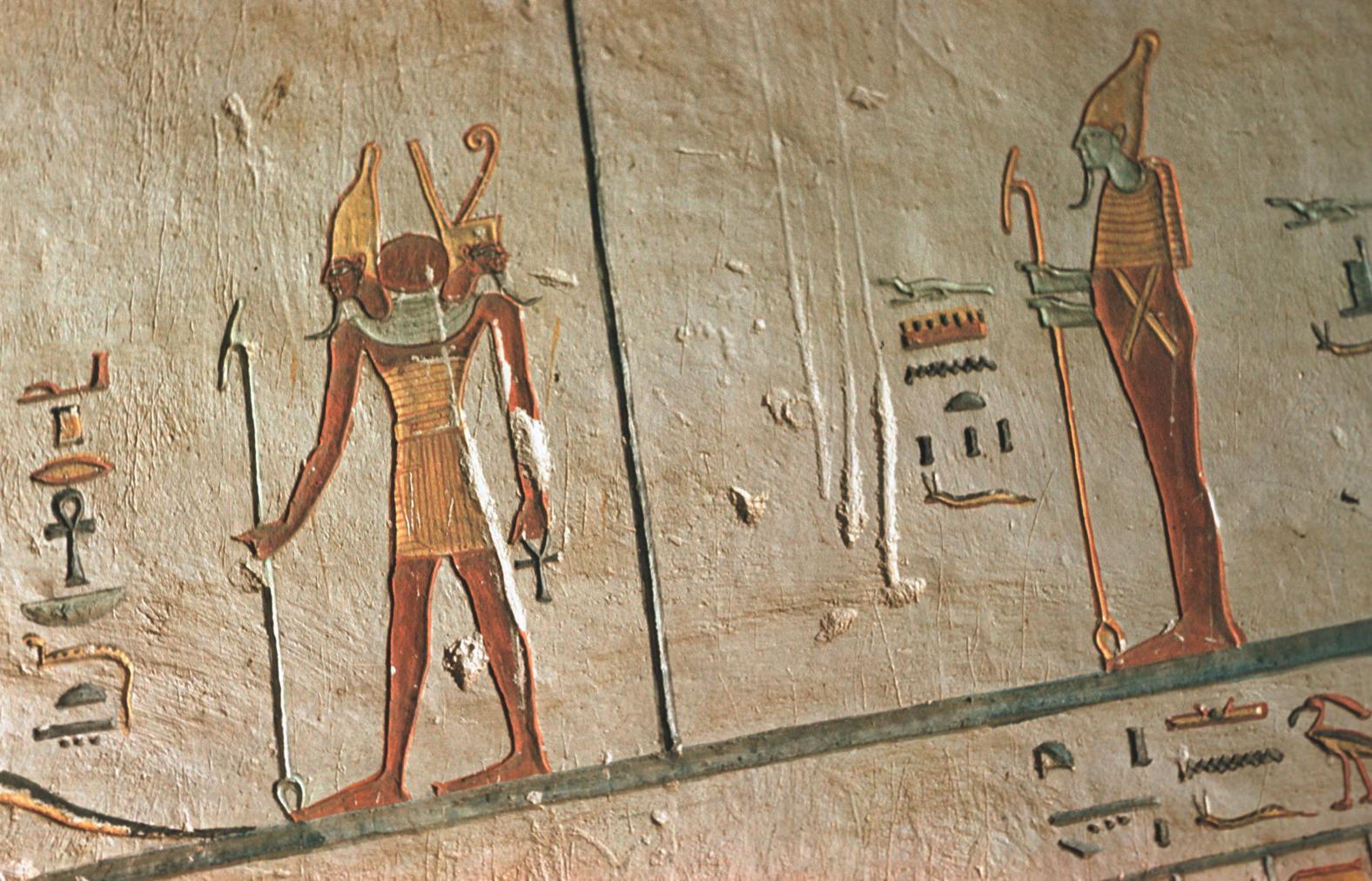
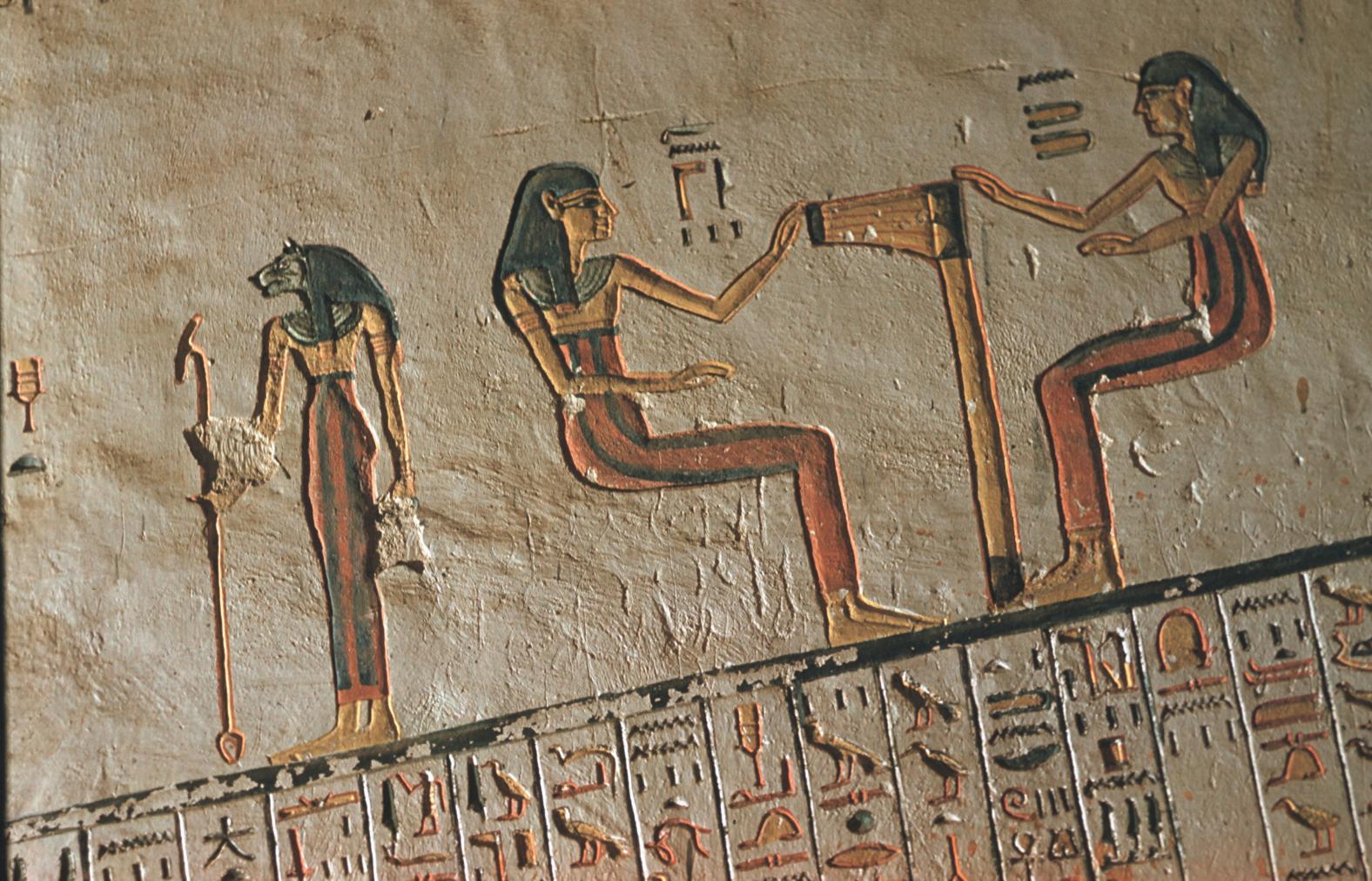
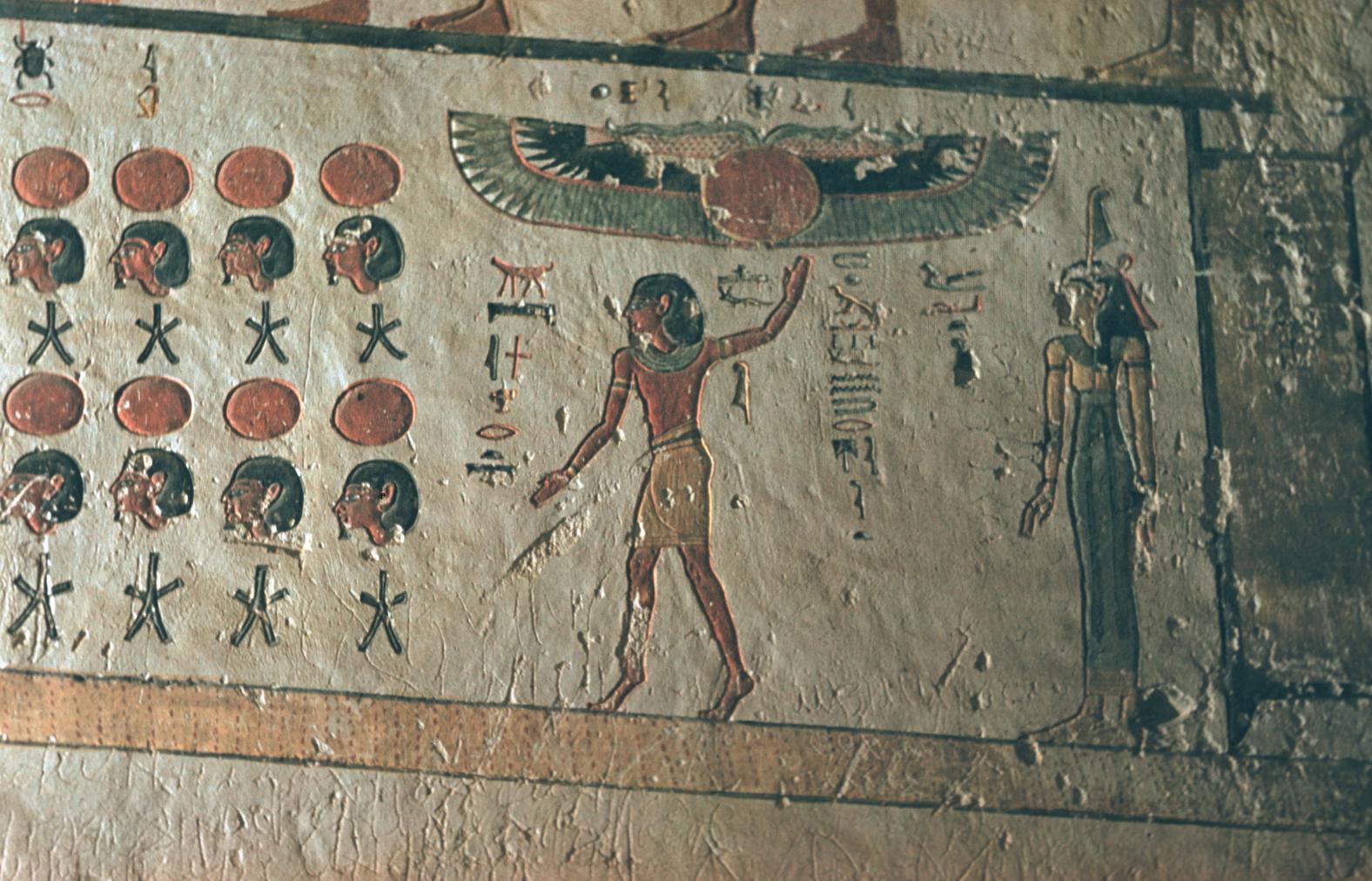
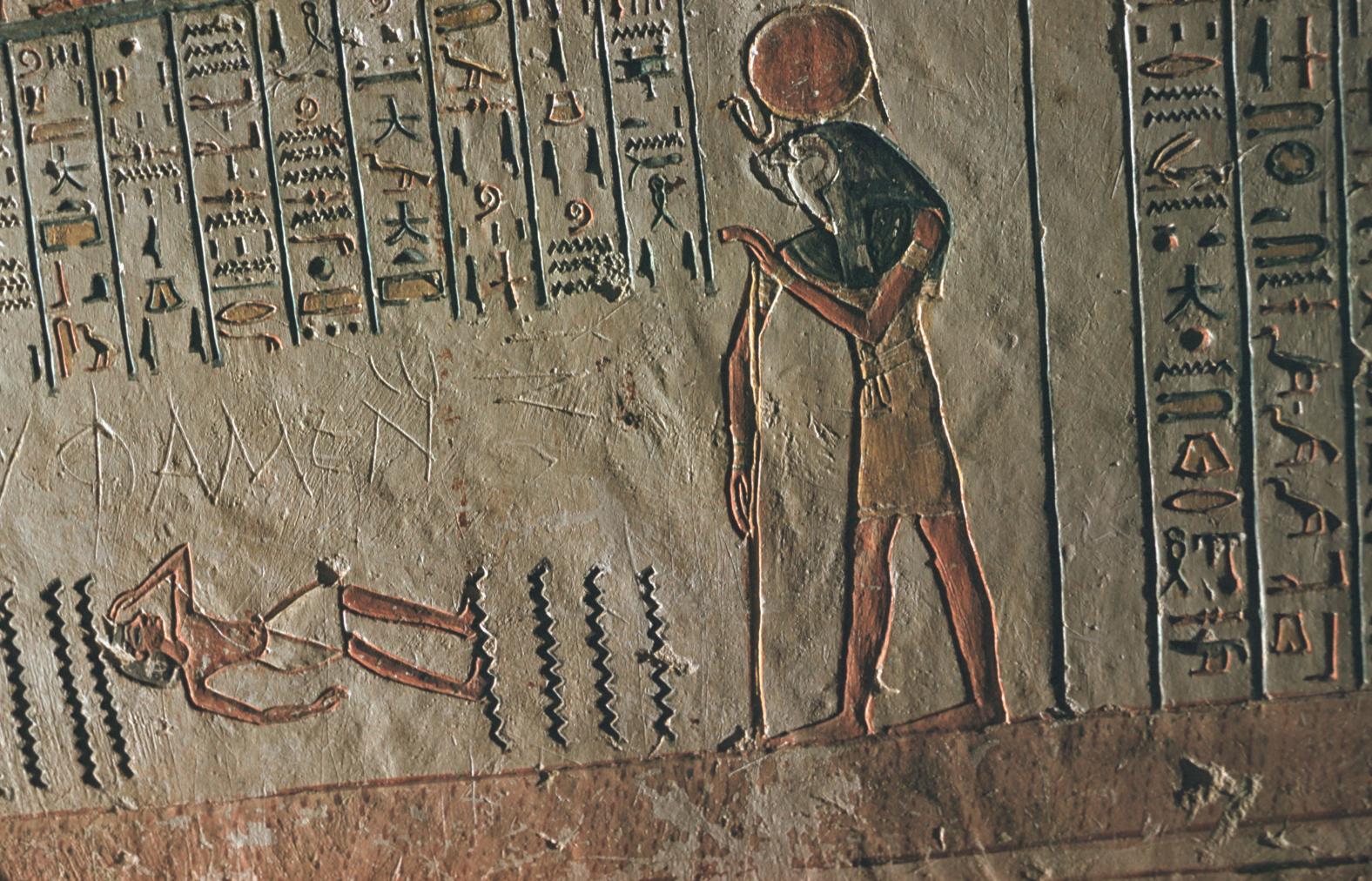
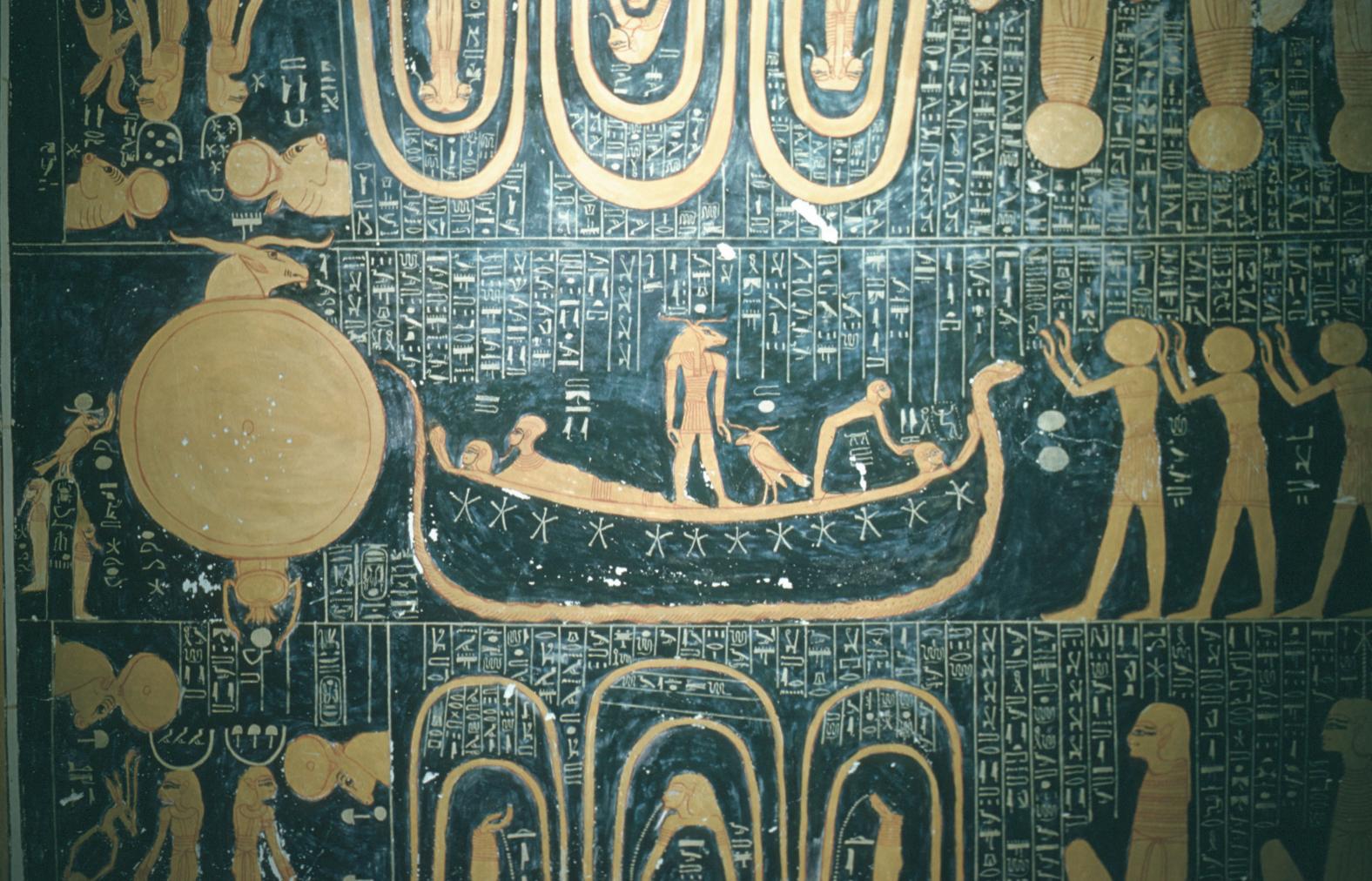
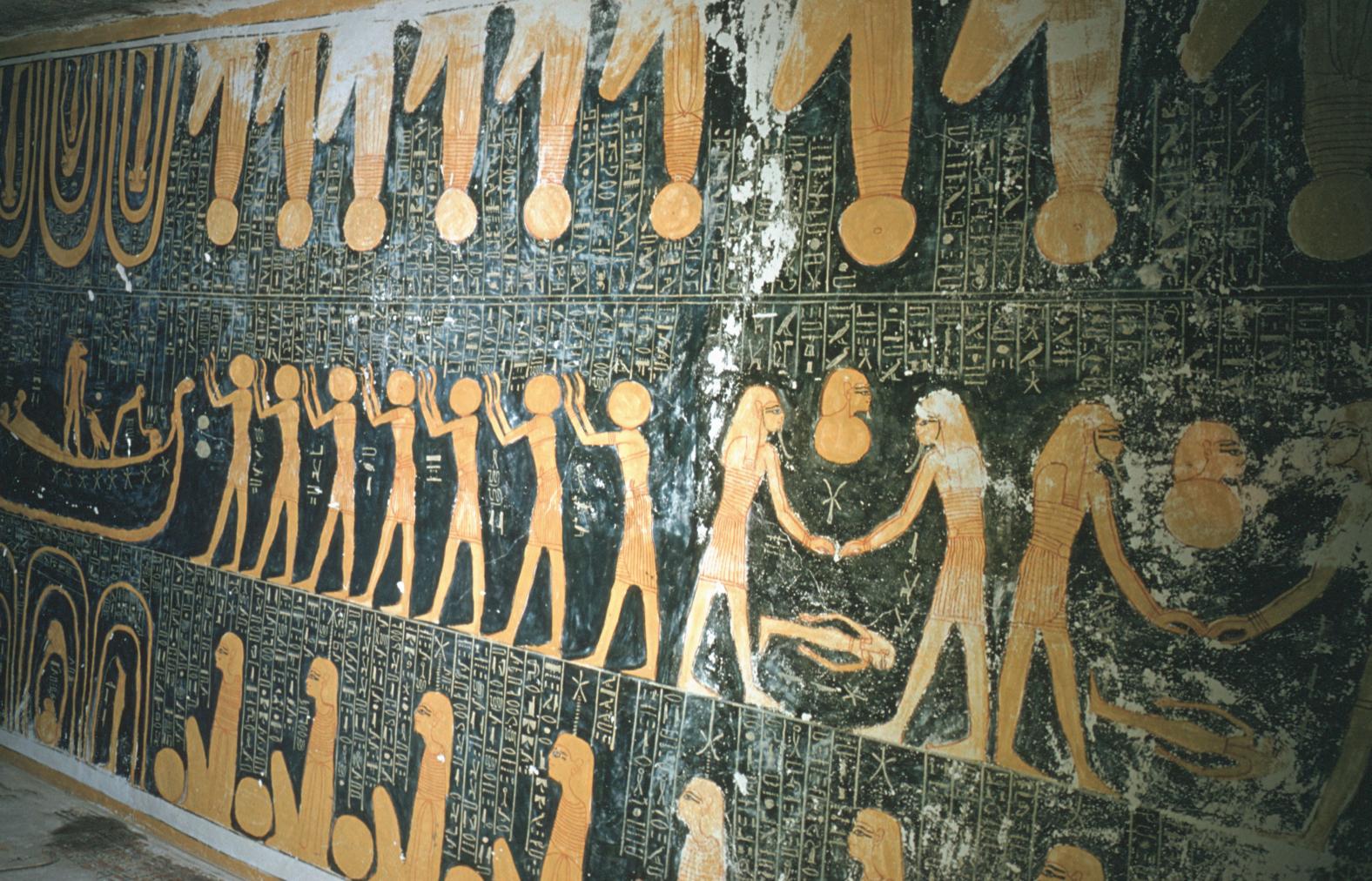
Gate I
See entire tombThe slope at the end of corridor H extends through gate I, and as a result of the lower floor and ceiling levels, the gate has an unusually high lintel. The decoration on the lintel includes the horizon symbol supporting the sky, a central sun disk surrounded by four bound enemies menaced by snakes emerging from the disk, and a male figure with a disk in place of a head and snakes in place of legs. Hornung suggested that this was an apotropaic scene intended to protect KV 9 and its occupant from any negative results of a breakthrough into KV 12 that happened during tomb construction here. The blocked and patched break into KV 12 lies at the left (south) end of the lintel and the decoration here is lost. The names of Rameses VI decorate the reveals and thicknesses, and a vulture decorates the soffit.
Porter and Moss designation:


Chamber I
See entire tombHalfway through chamber I, a ramp as wide as gate J was cut in the flat floor. Scenes on the left (south) wall include Rameses VI before Heka, the Book of the Dead, and Rameses VI facing gate J. The right (north) wall shows Rameses VI adoring two square pools with baboons, adoring Ma'at, and, facing gate J, with the Book of the Dead and a hymn to Ma'at. The ceiling shows the resurrection of Osiris and includes cryptographic texts, with Rameses VI in the barks of the Day and Night on the front section (east half) and Osiris as a mummy on a couch in front of Horus on the rear section (west half). Four rows of divinities line the outside of the scenes on both halves.
Porter and Moss designation:
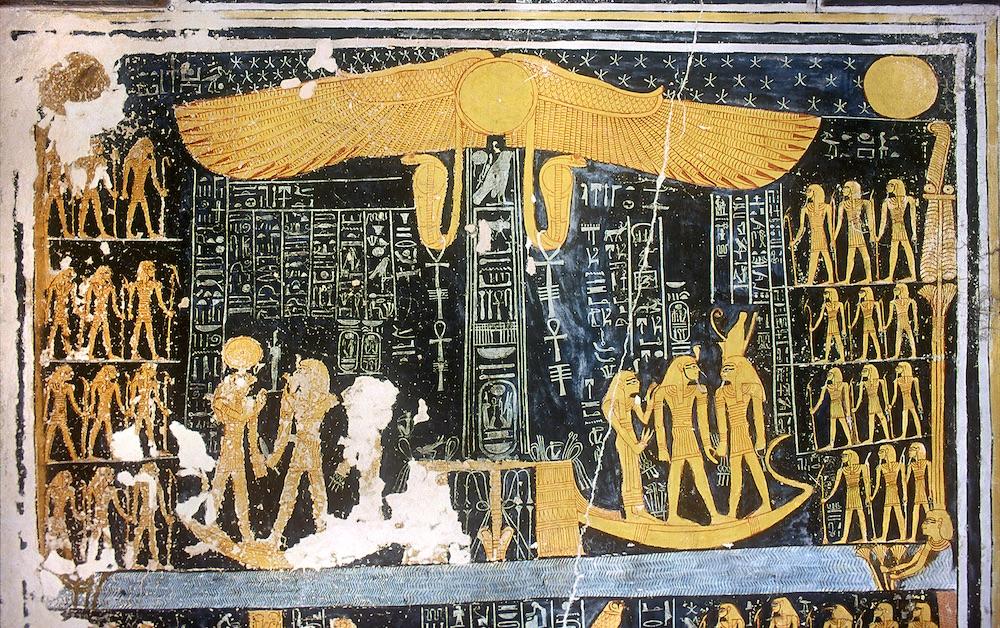

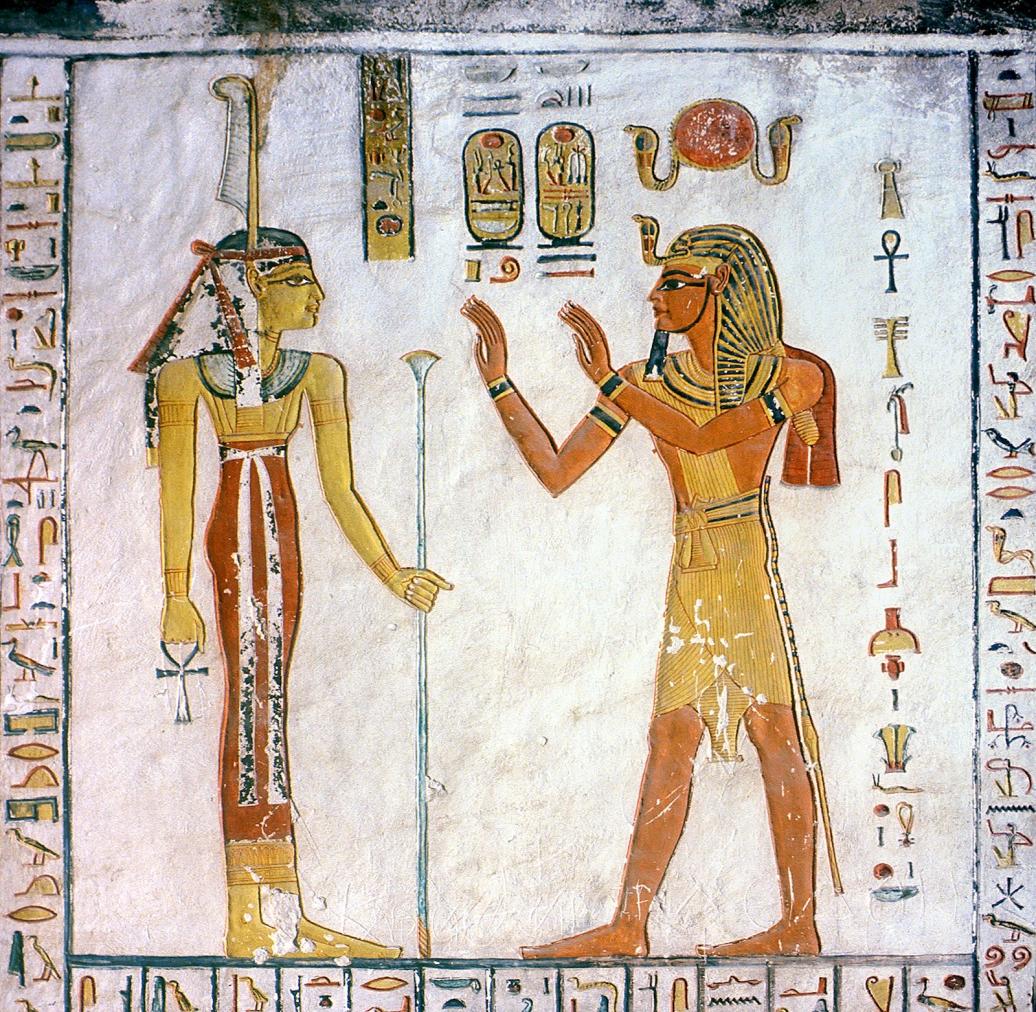
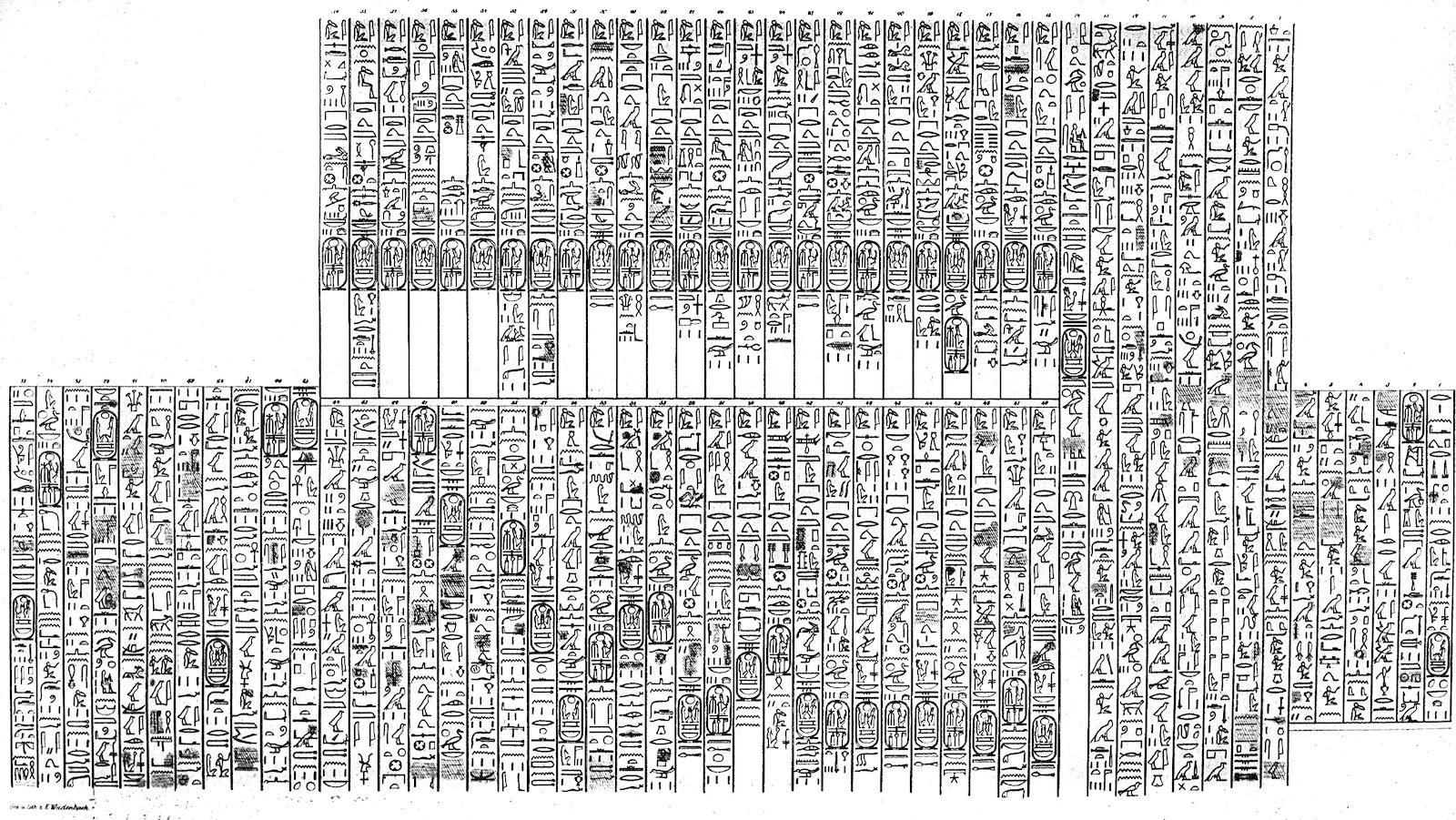
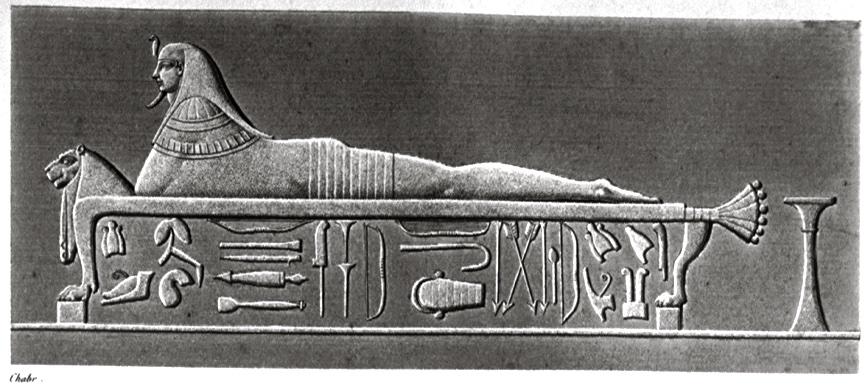
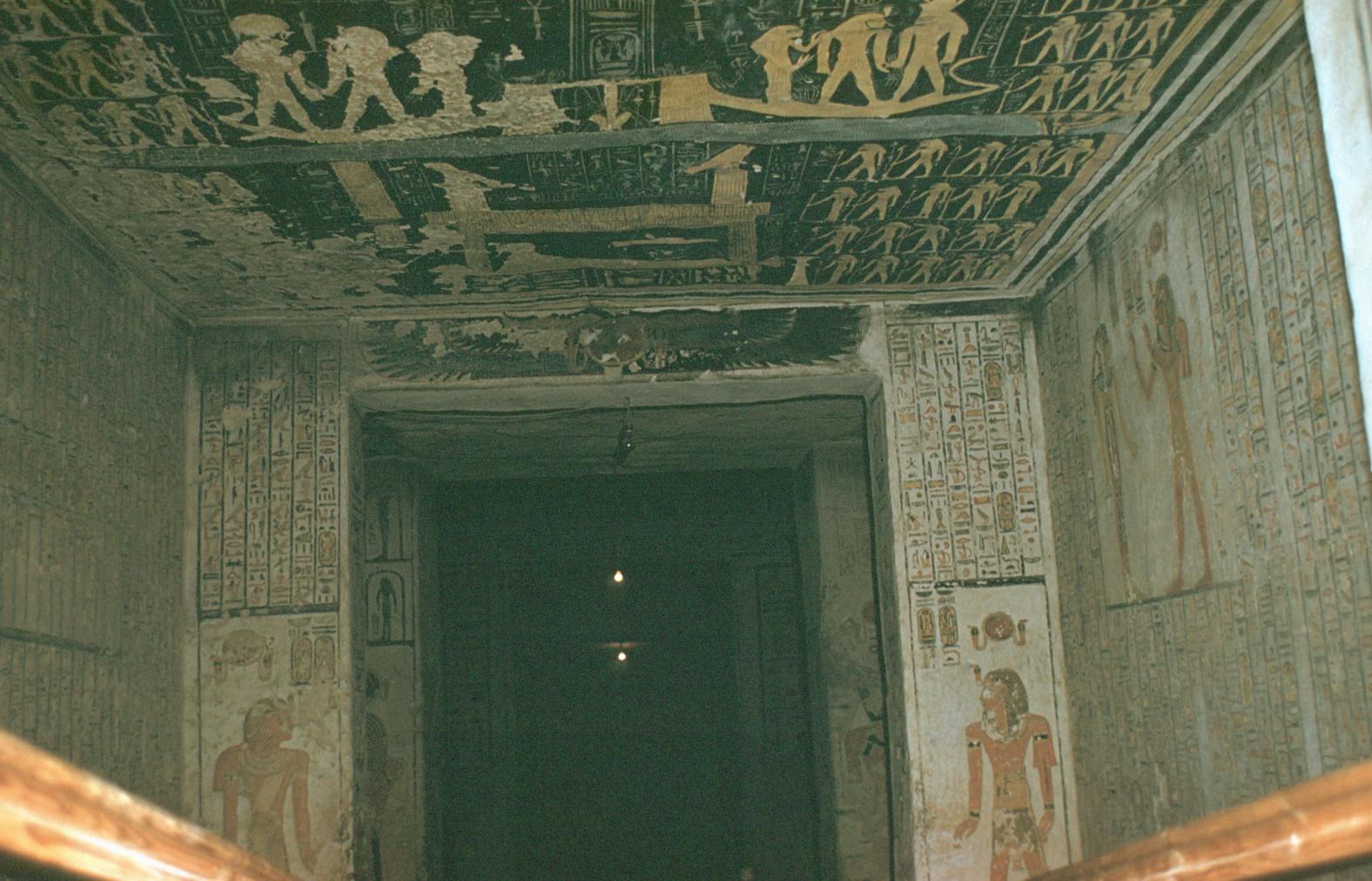
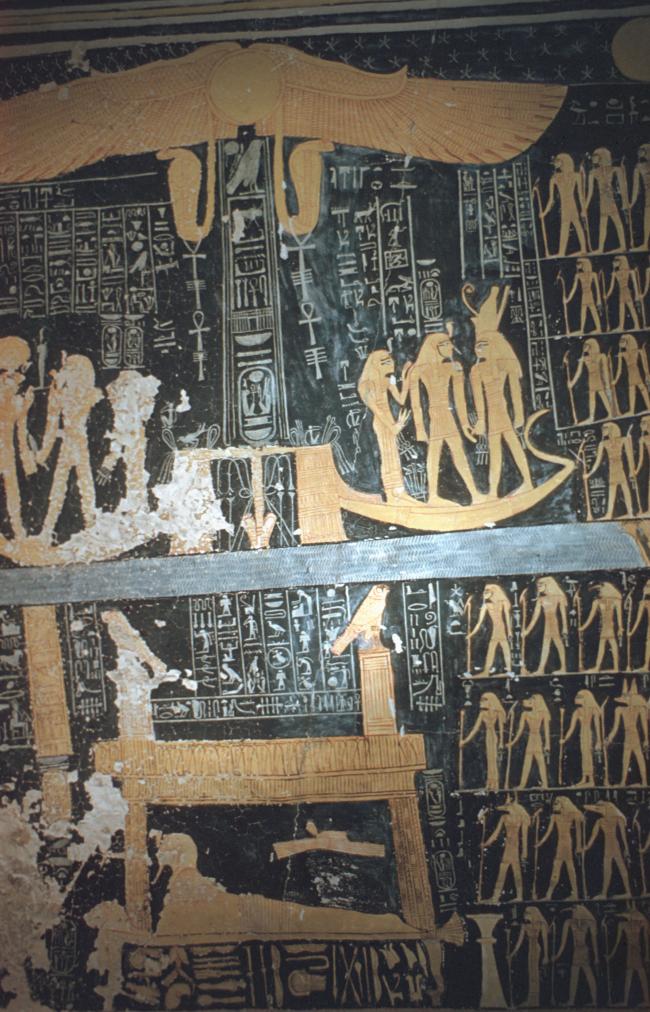
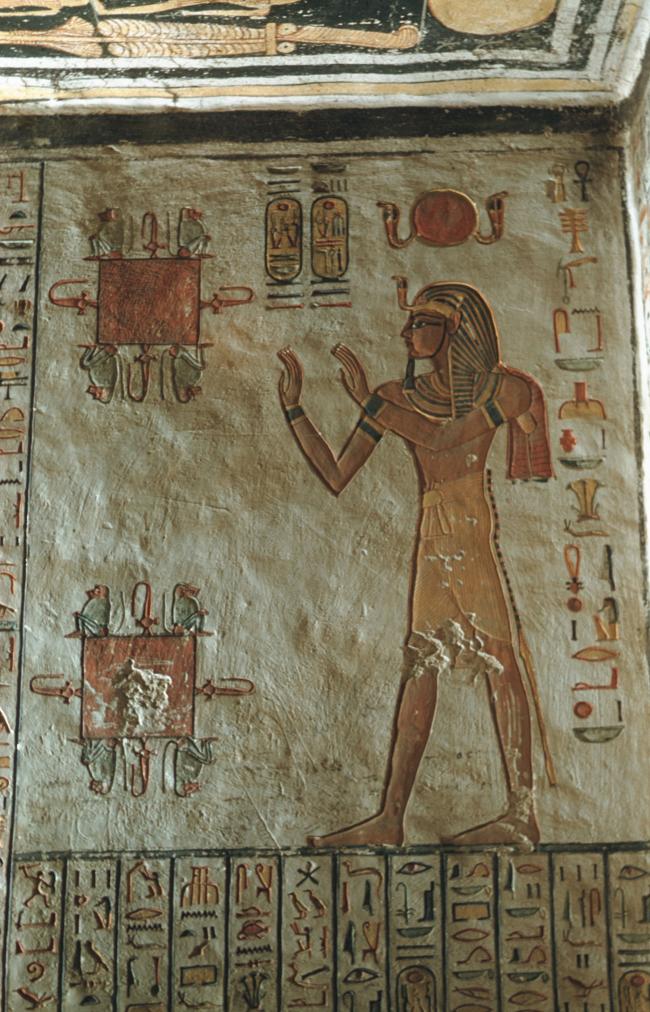
Gate J
See entire tombGate J has a compound jamb and a step down to the ramp which descends to the floor of burial chamber J. A pair of door pivot holes are cut into the soffit at the tops of the corners of the inner and outer thicknesses. Two horizontal recesses were cut into the edges of the floors of burial chamber J to receive the bottoms of the door leaves when they were fully opened. There is a winged disk on the lintel with the names of Rameses VI on the outer thicknesses.
Porter and Moss designation:
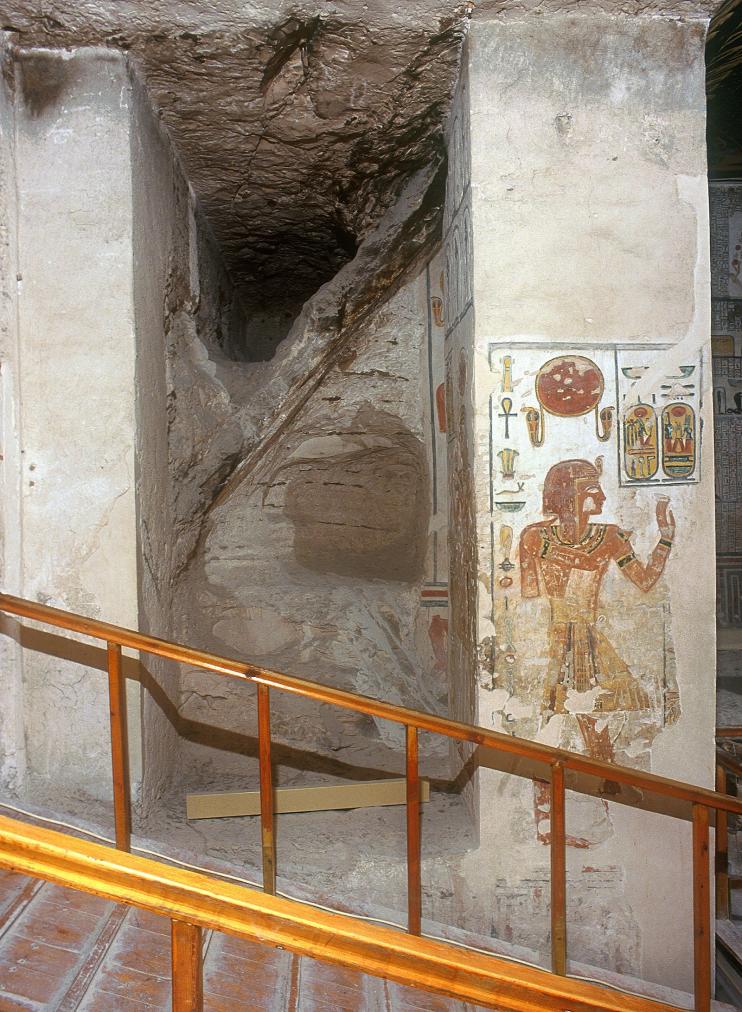

Burial chamber J
See entire tombThe burial chamber is smaller than originally planned. The burial pit lies on the tomb's axis. If the tomb had been completed, the right (north) and left (south) sides of the lower floor level would have been extended, leaving only ledges for the upper floor level on the left and right sides of the chamber, instead of the wide surfaces now there. The sides of the burial pit were roughly widened to accommodate a large, red granite sarcophagus box, now broken in two, with its foot half lying in the pit.
Four pillars flank the front (east) wall of the chamber with two on each side of the descent from the gate to the central lower level. The first and fourth pillars were not completely cut away from the surrounding rock.
The pillars show Rameses VI with Ma'at, Ptah-Sokar, Anubis, Meretseger, Osiris, and Ptah. In the rear (west) wall, there are four pilasters, representing unfinished cuttings of pillars. The left, right and rear walls and pilasters are decorated with texts from the Book of the Earth. Pilasters 2 and 3 are inscribed with the names of Rameses VI.
The vaulted ceiling, which extends over the burial pit and the spaces to its west and east, is cut at a right angle to the tomb's axis. The ceiling is decorated with two figures of Nut, back to back, framing the Books of the Day and the Night.
Graffiti are inscribed in various places throughout burial chamber J, and one of them may represent an inspection in regnal year 9 of Rameses IX.
Chamber plan:
RectangularRelationship to main tomb axis:
PerpendicularChamber layout:
Pillared front and rear upper level, sunken central lower levelFloor:
Two levelsCeiling:
Vaulted center, flat sides
Porter and Moss designation:
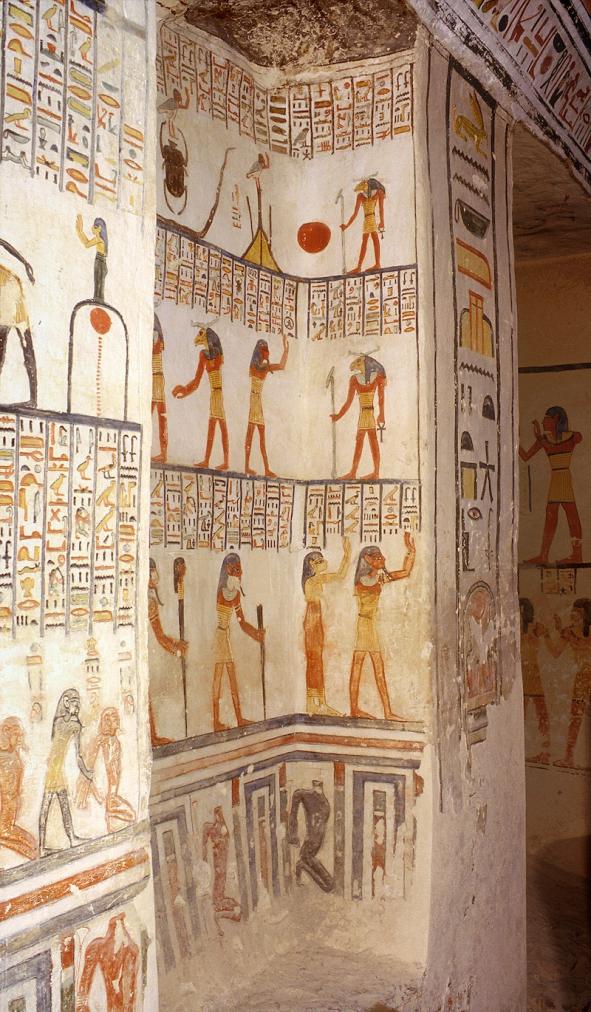
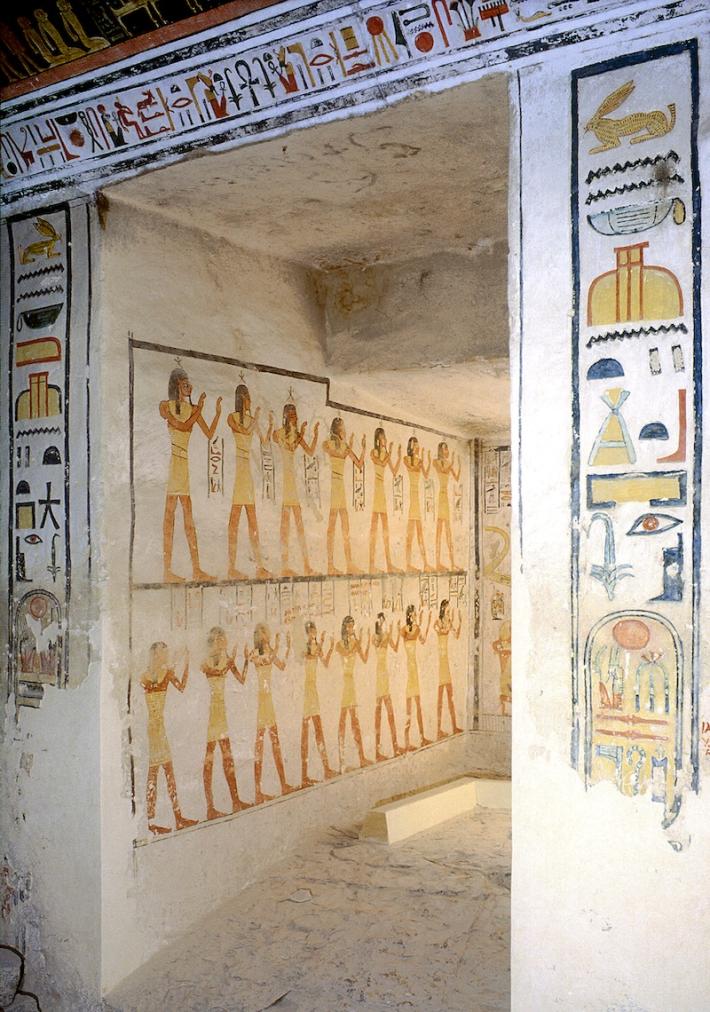
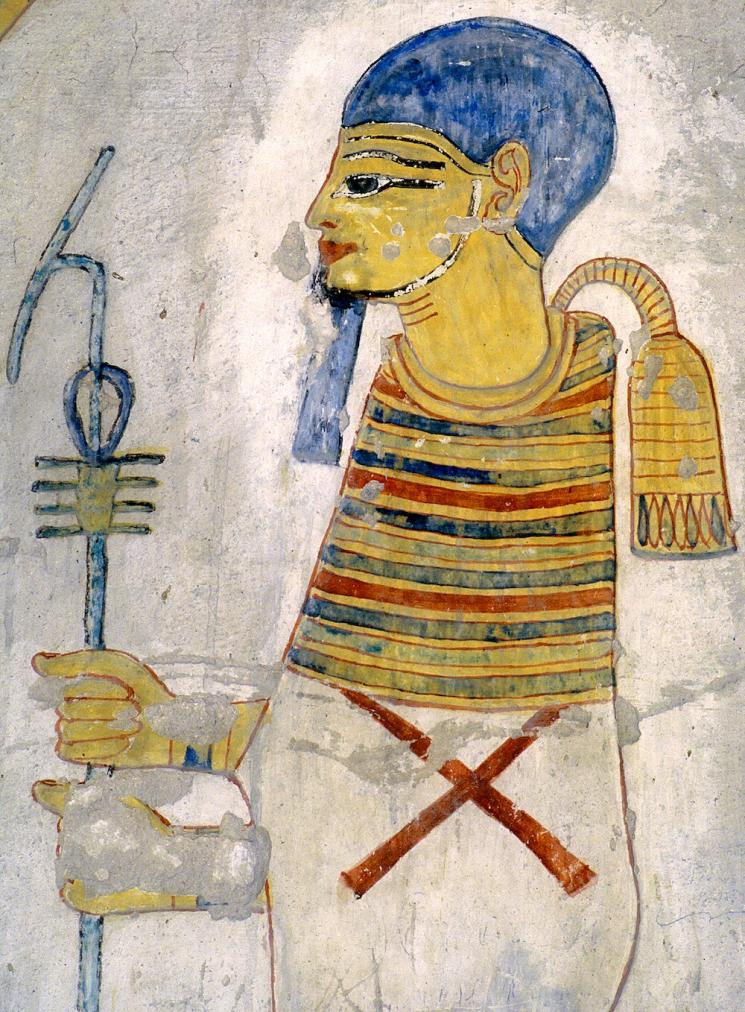
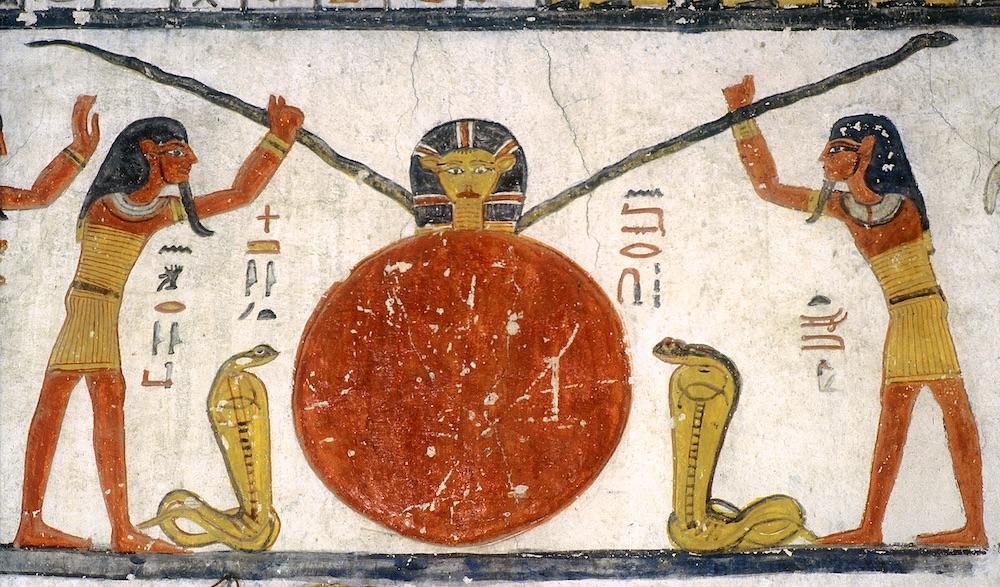
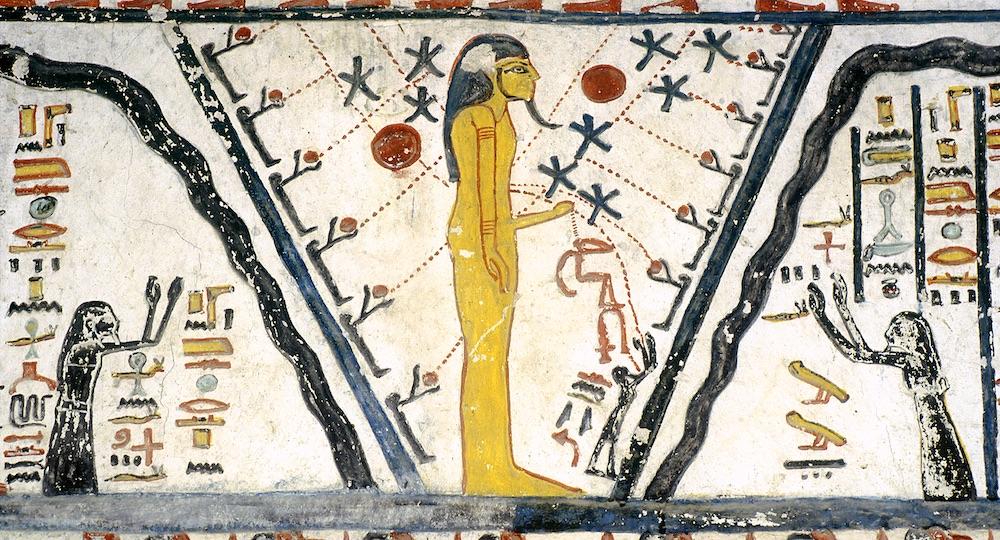
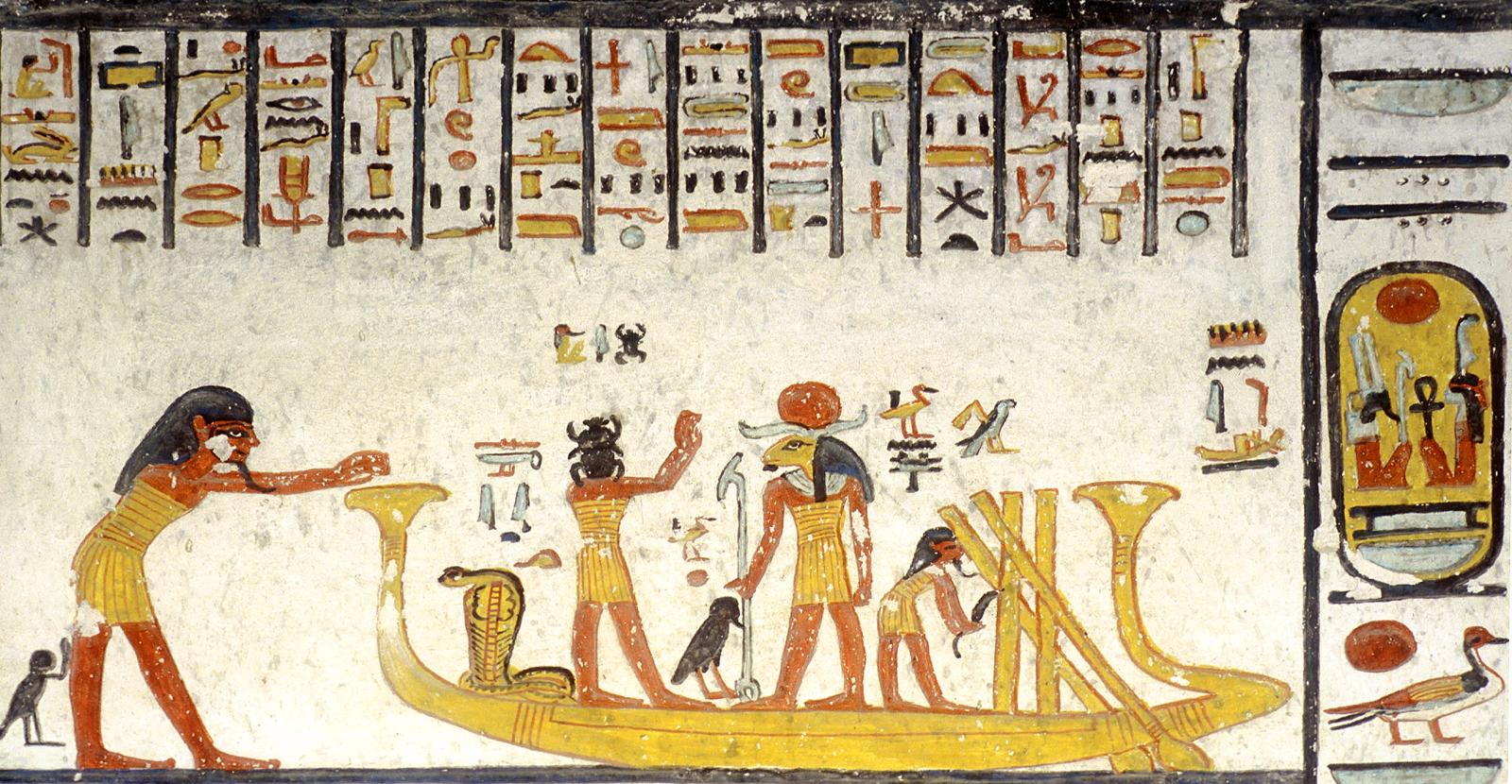
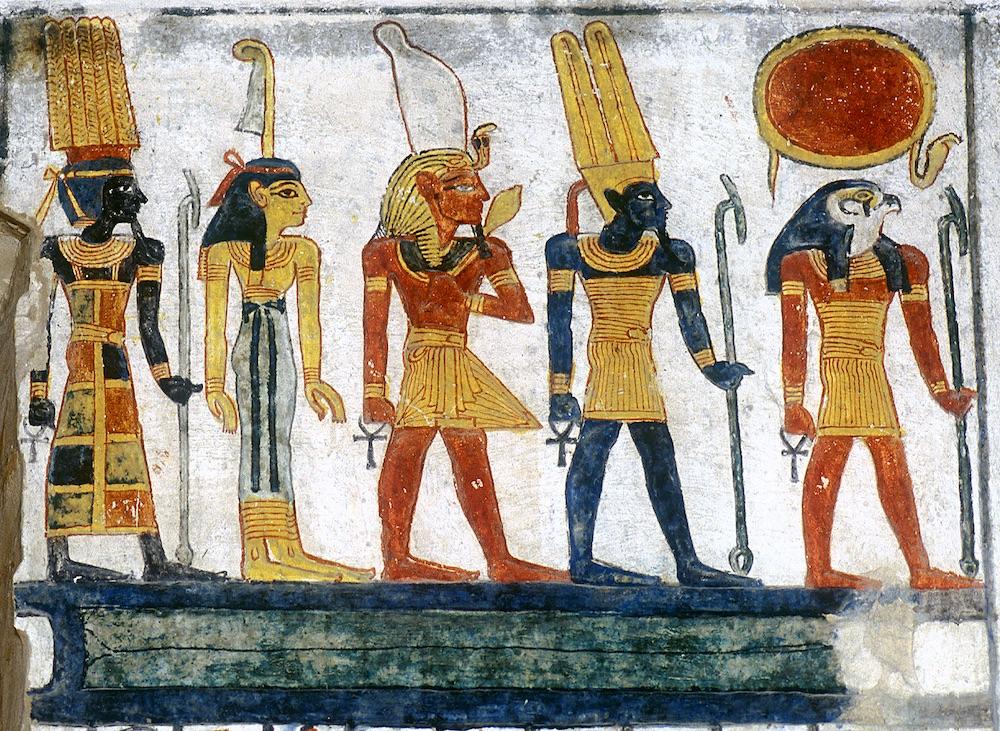
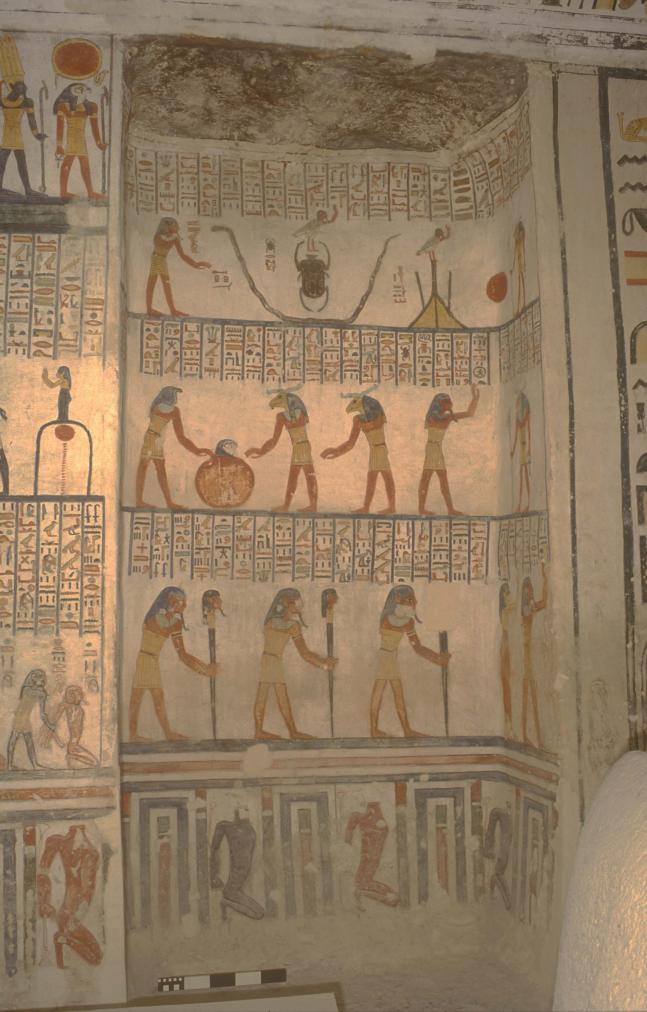
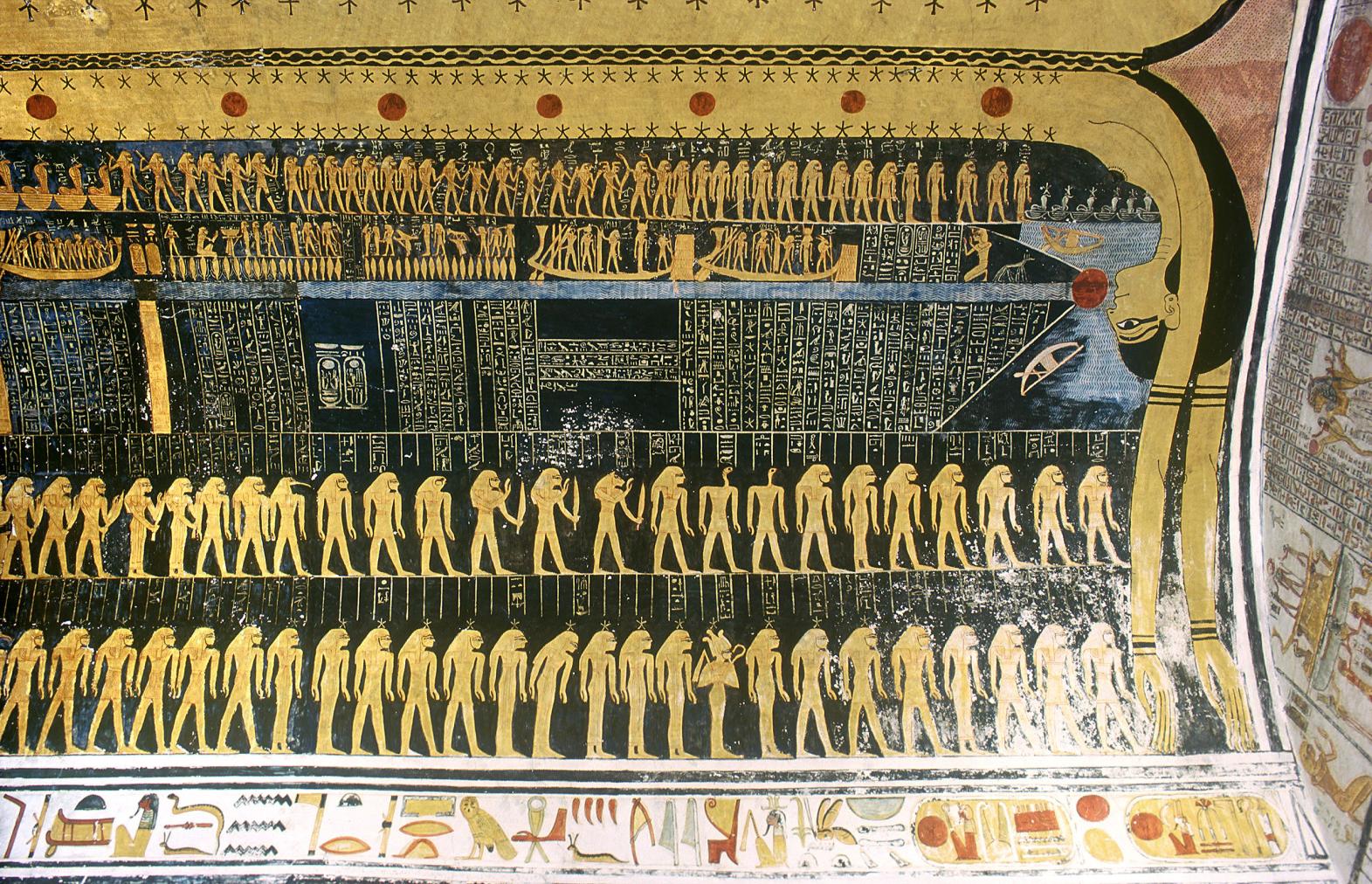
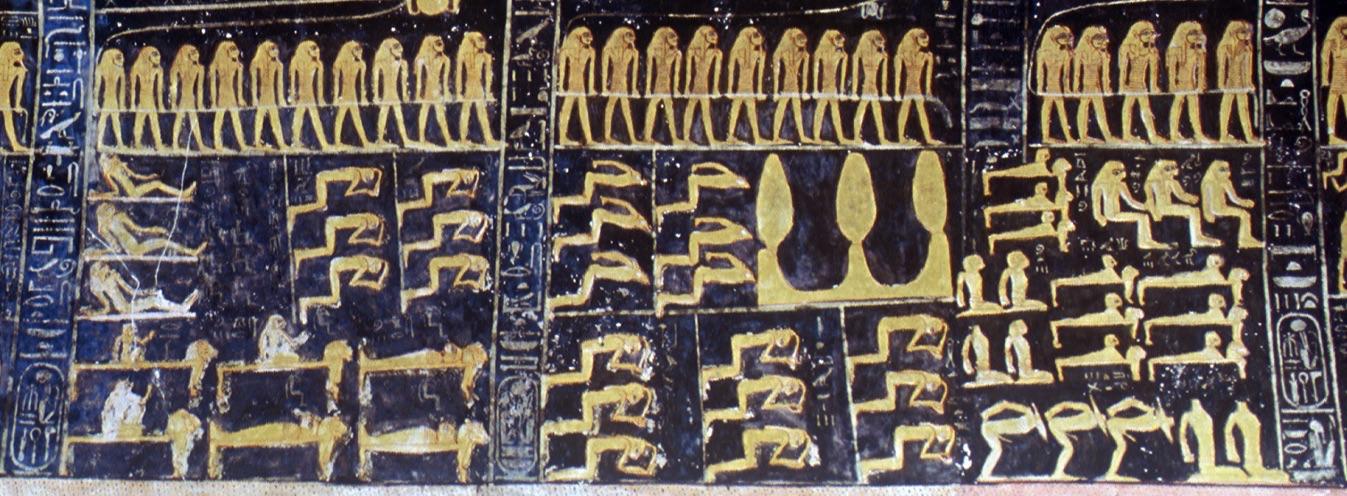
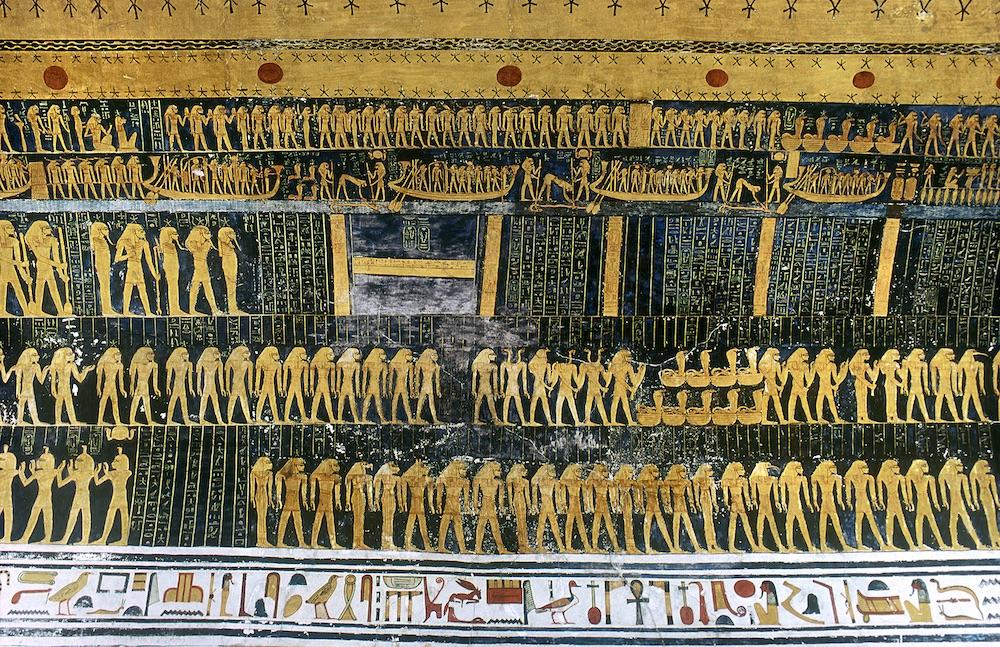
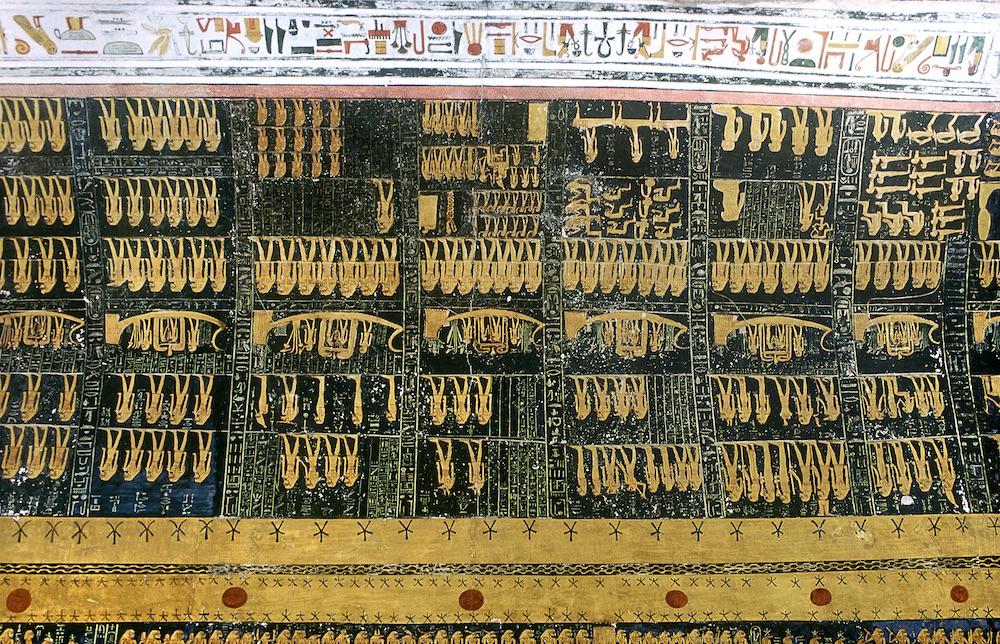
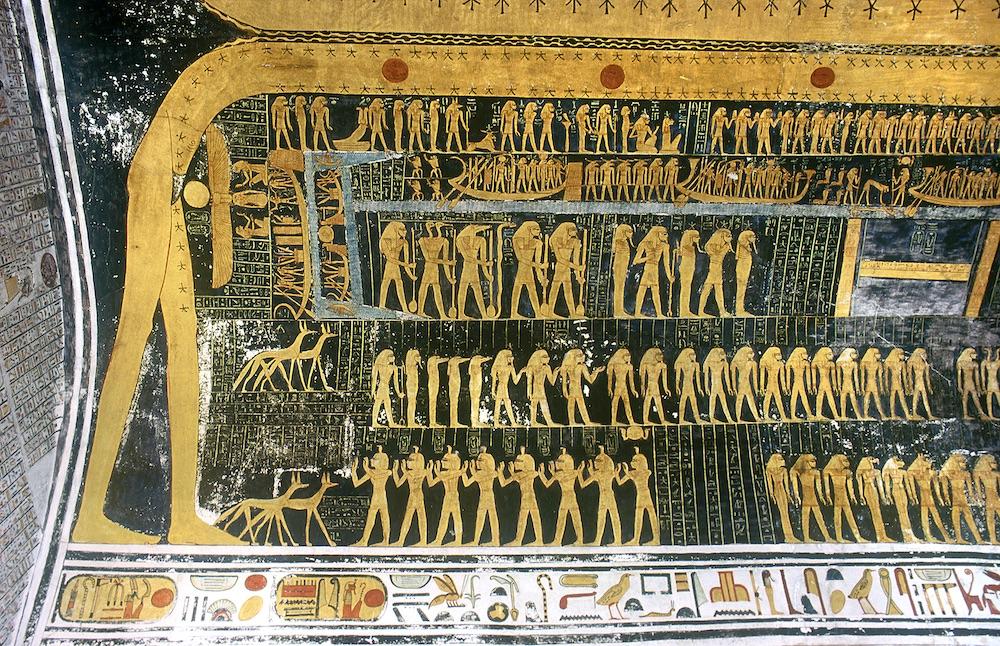
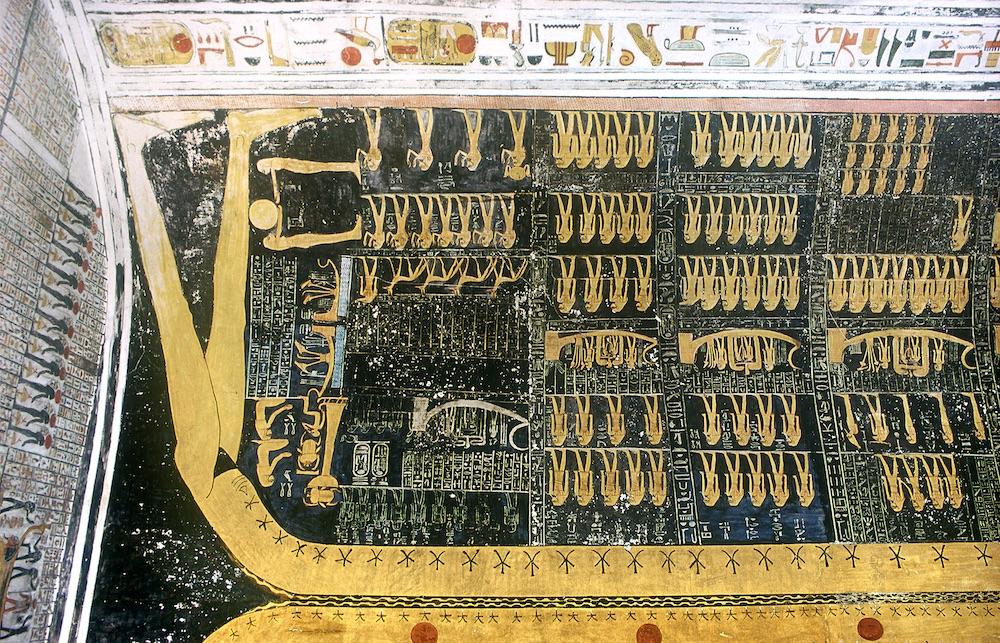
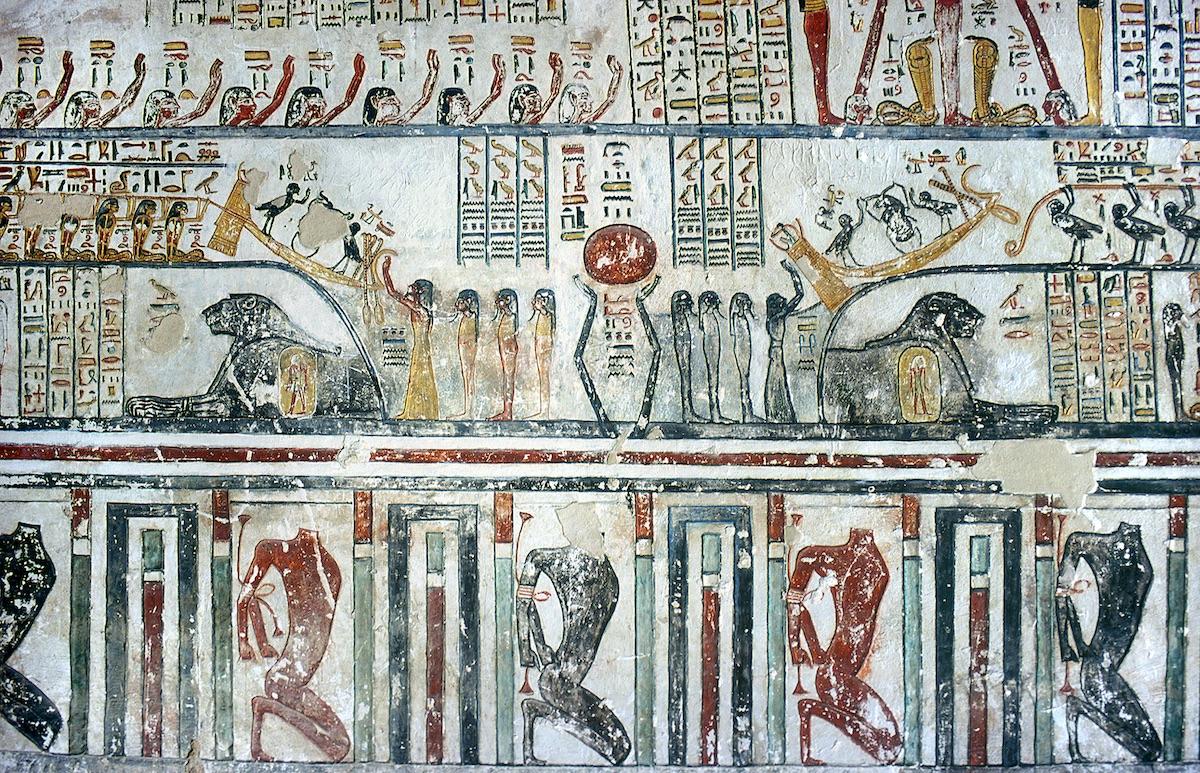
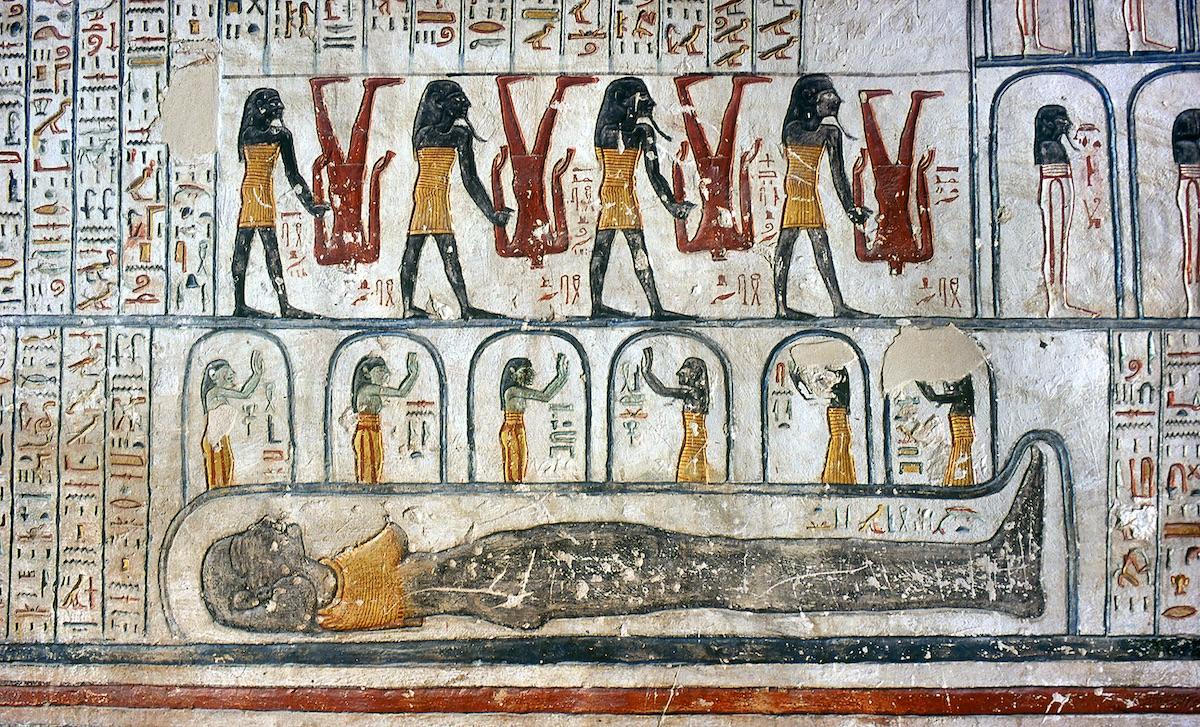
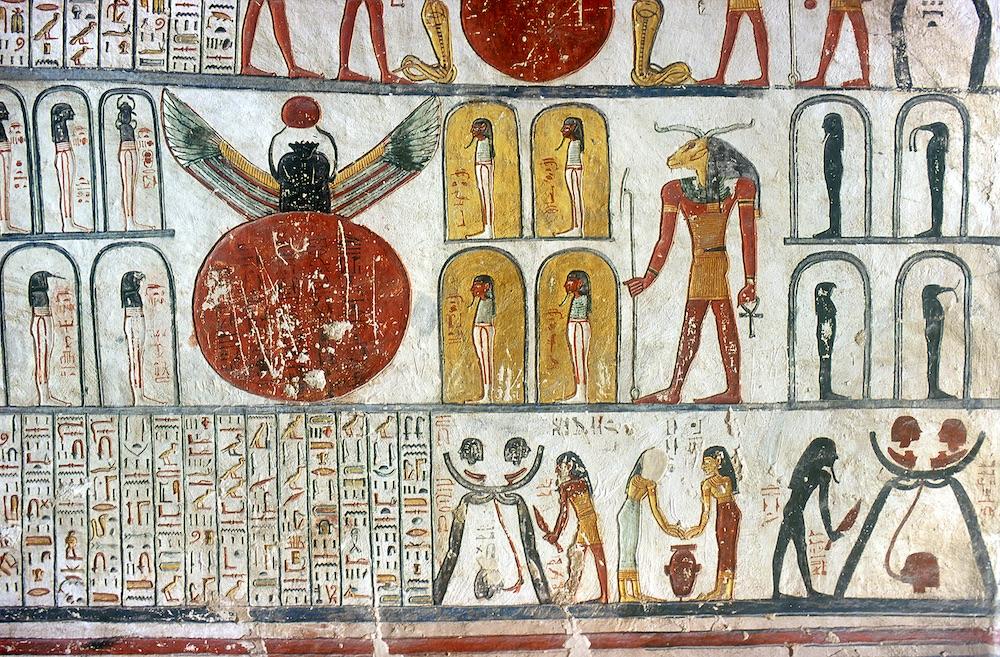
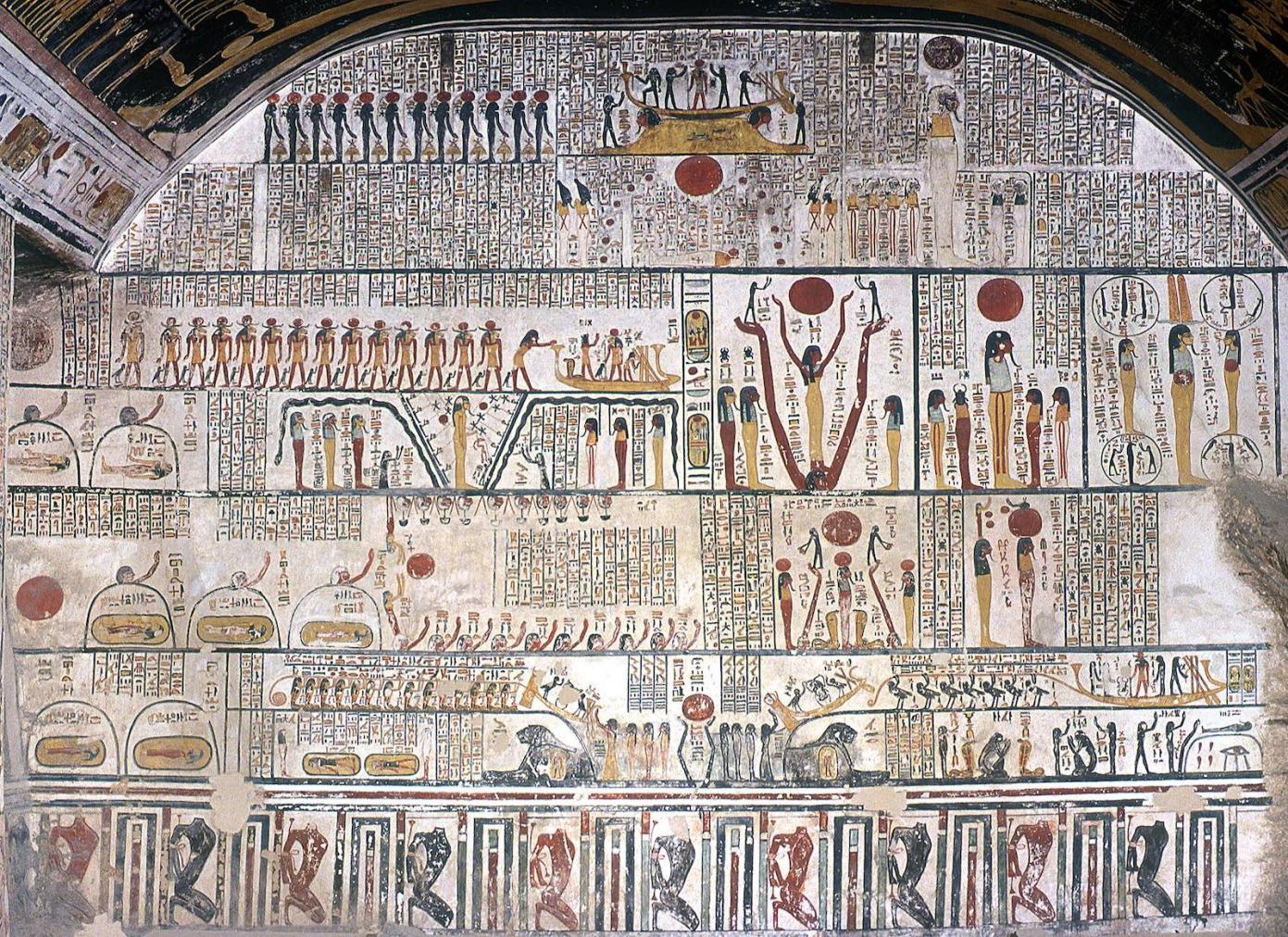
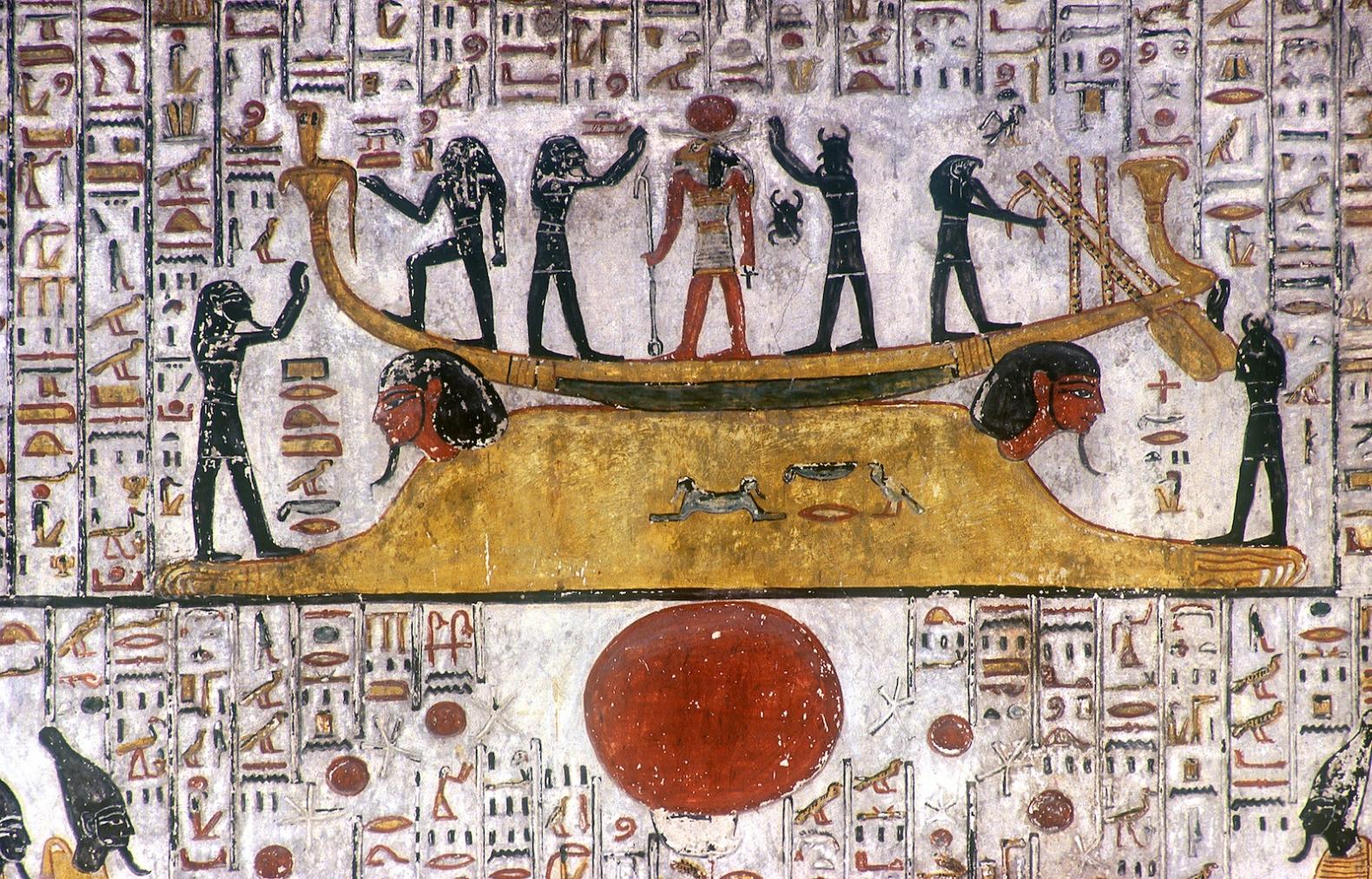
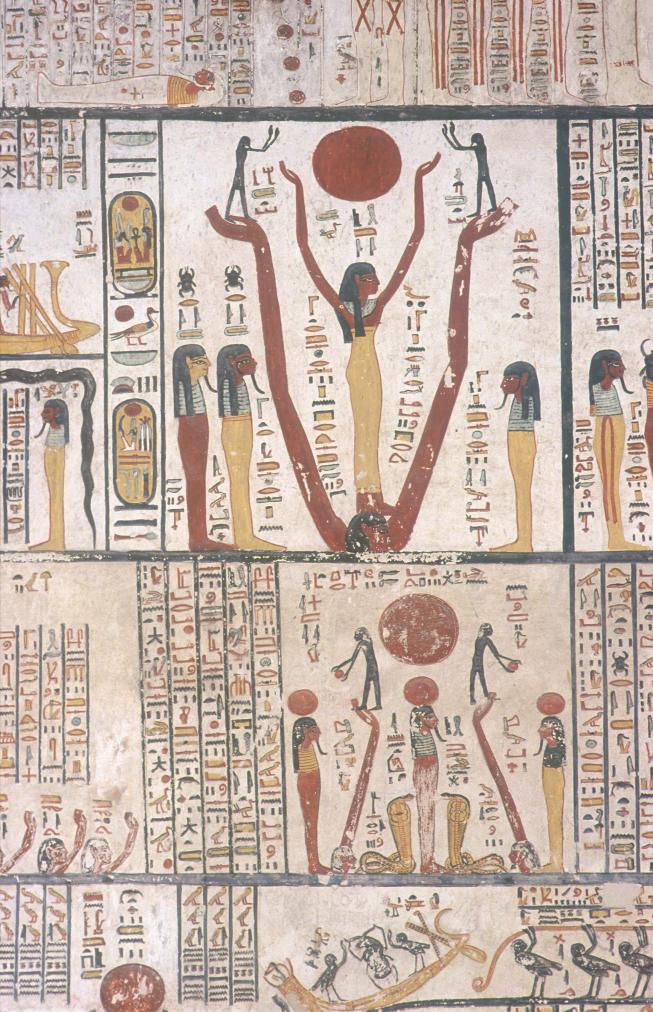
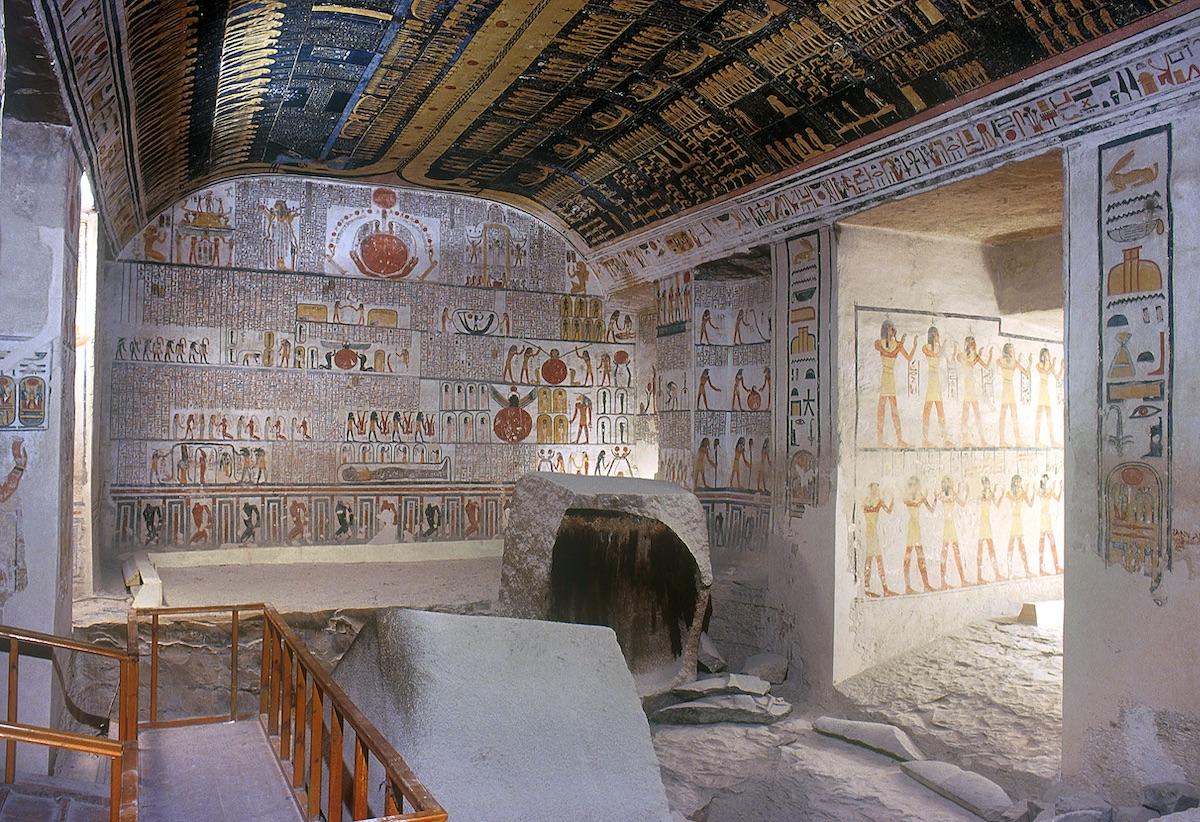
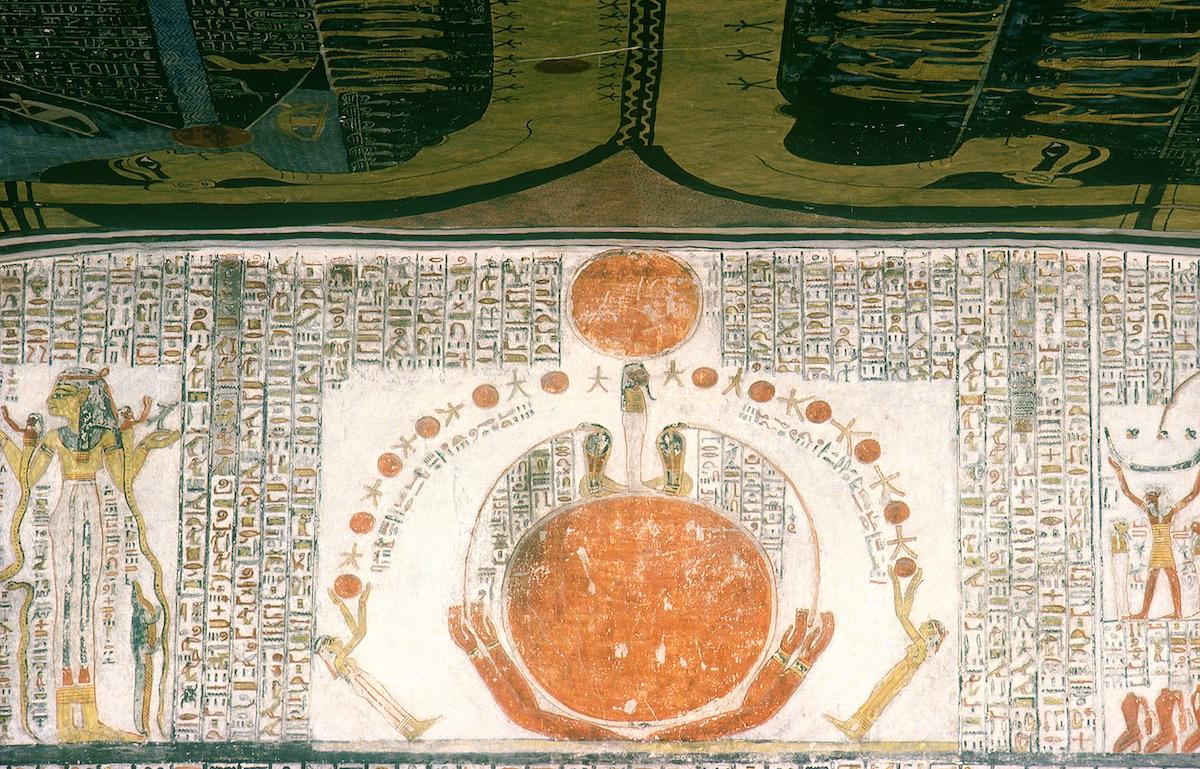
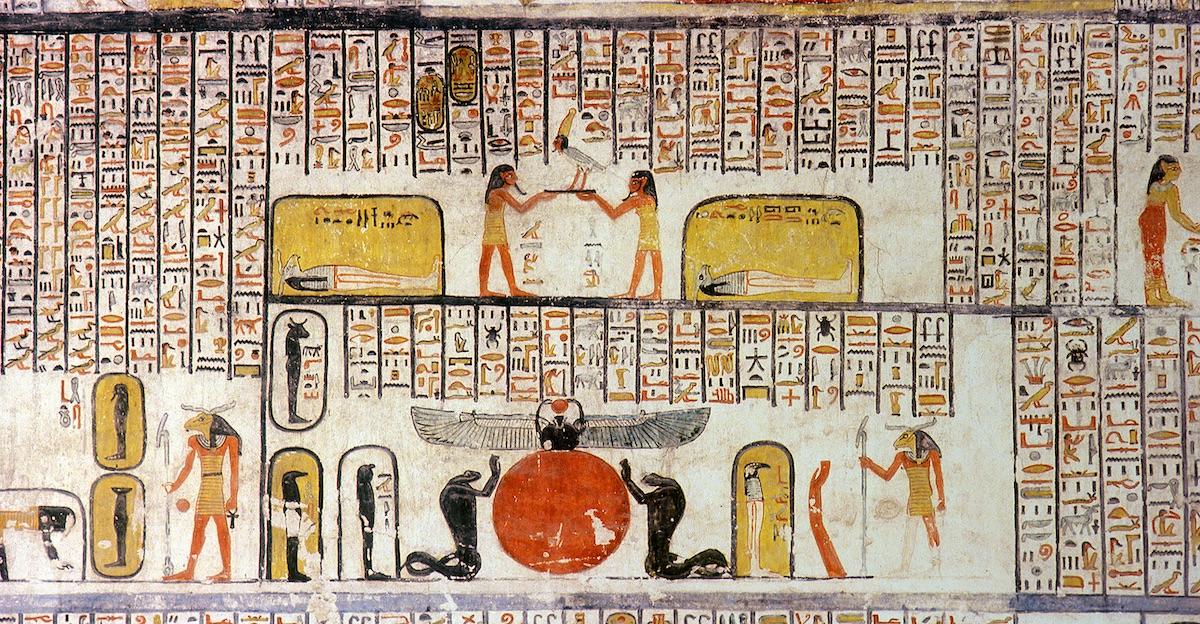
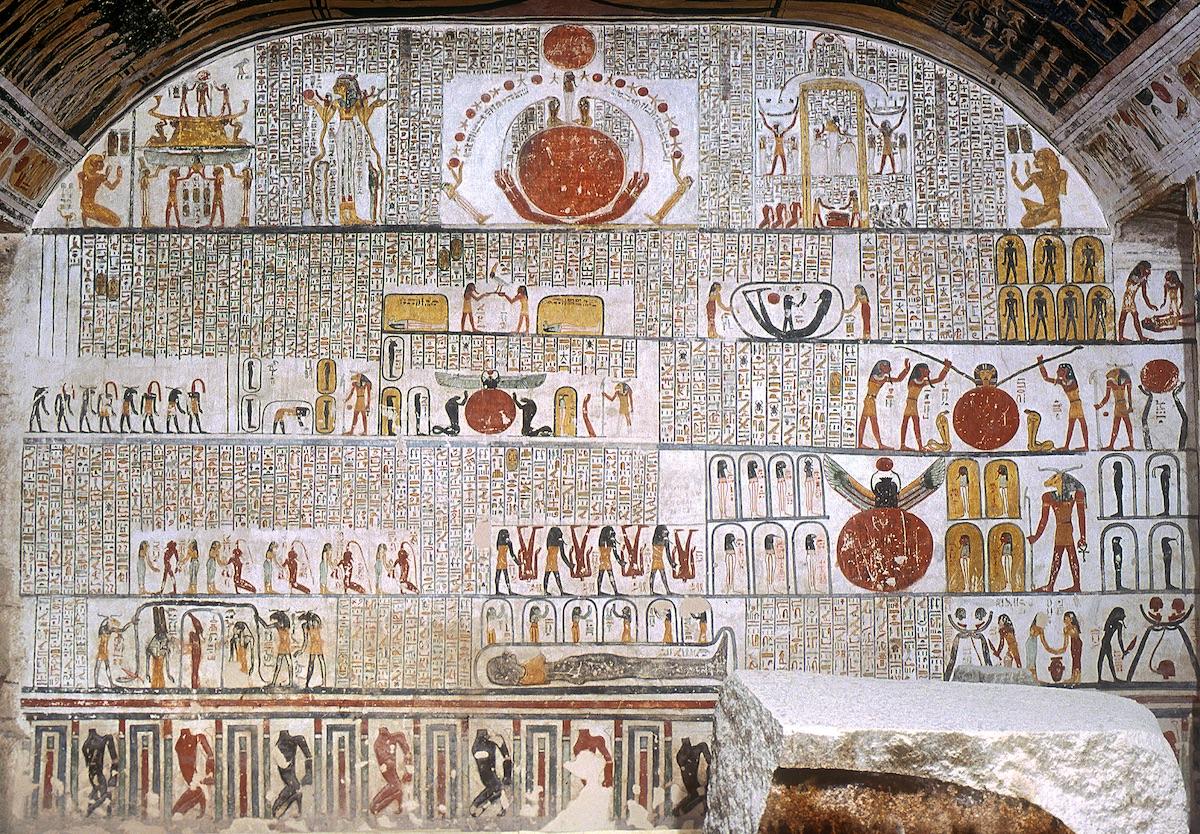
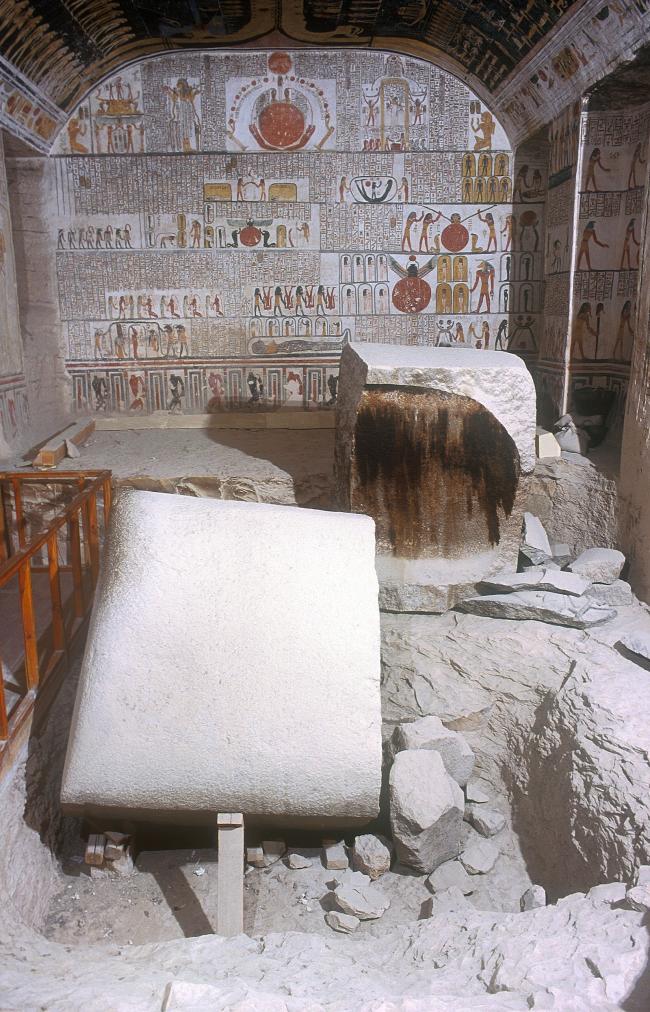

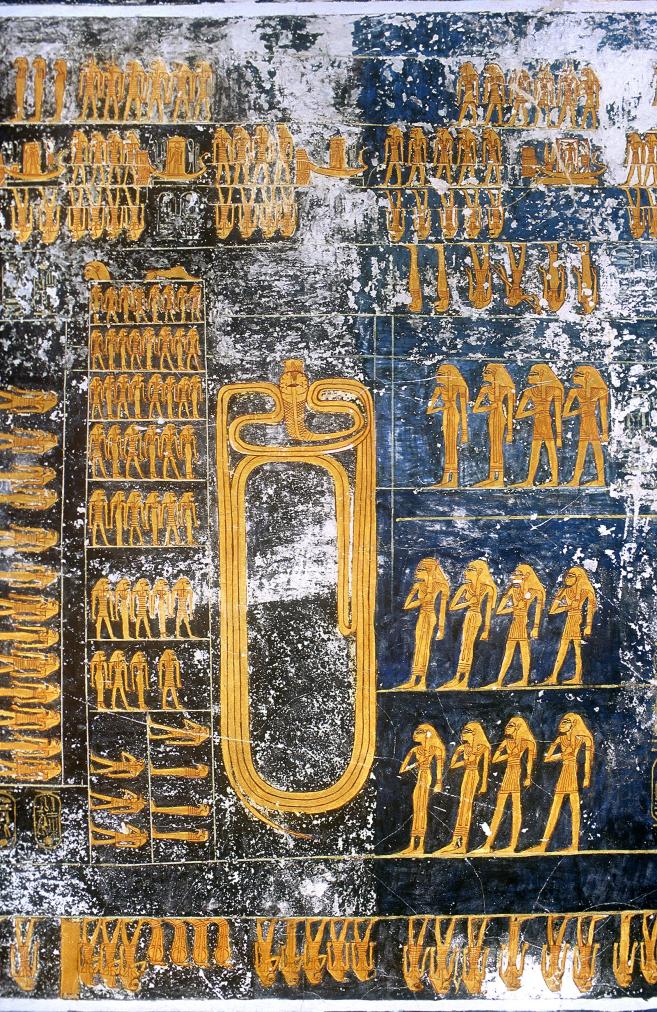

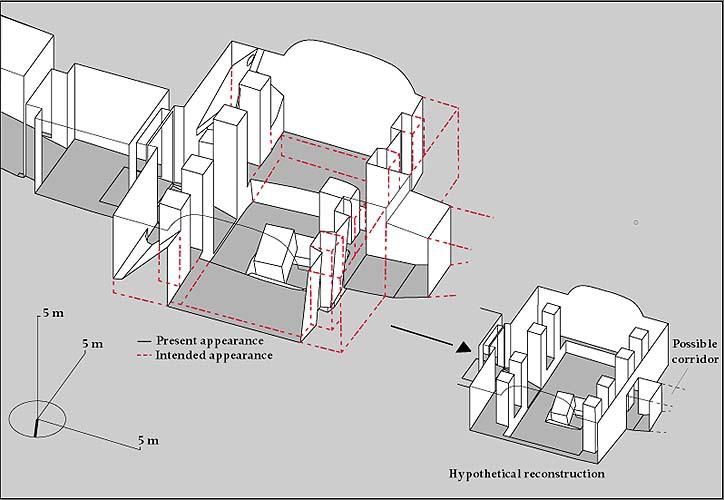
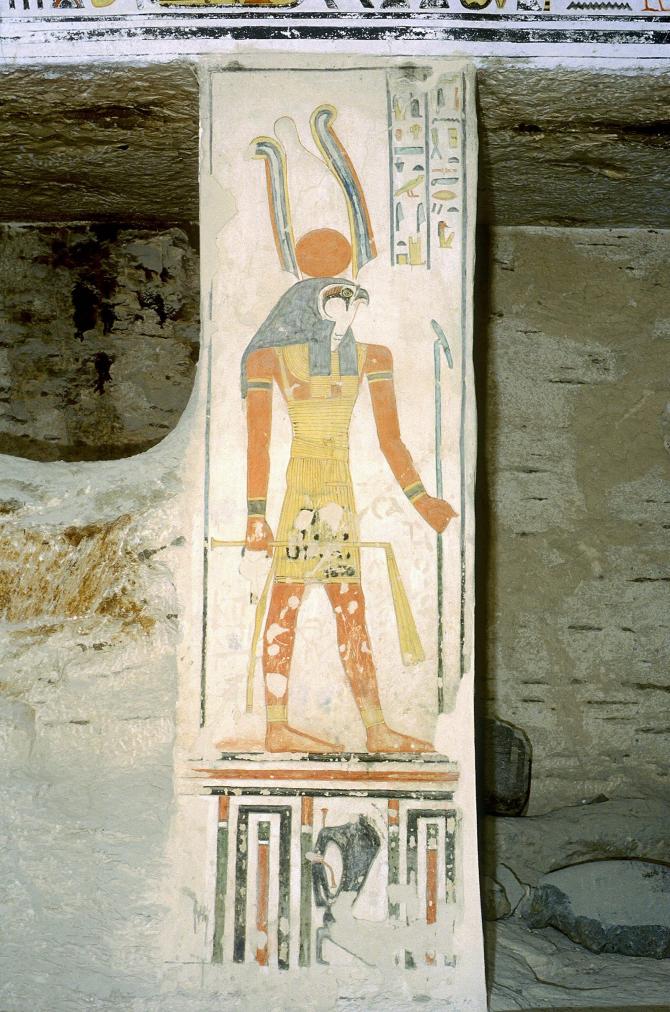
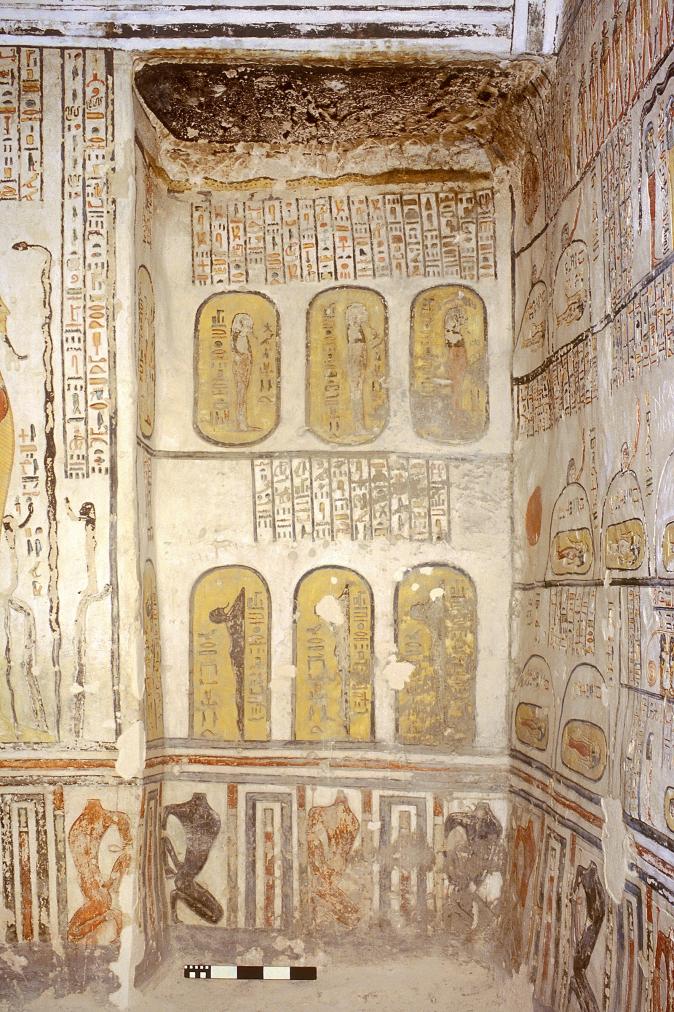
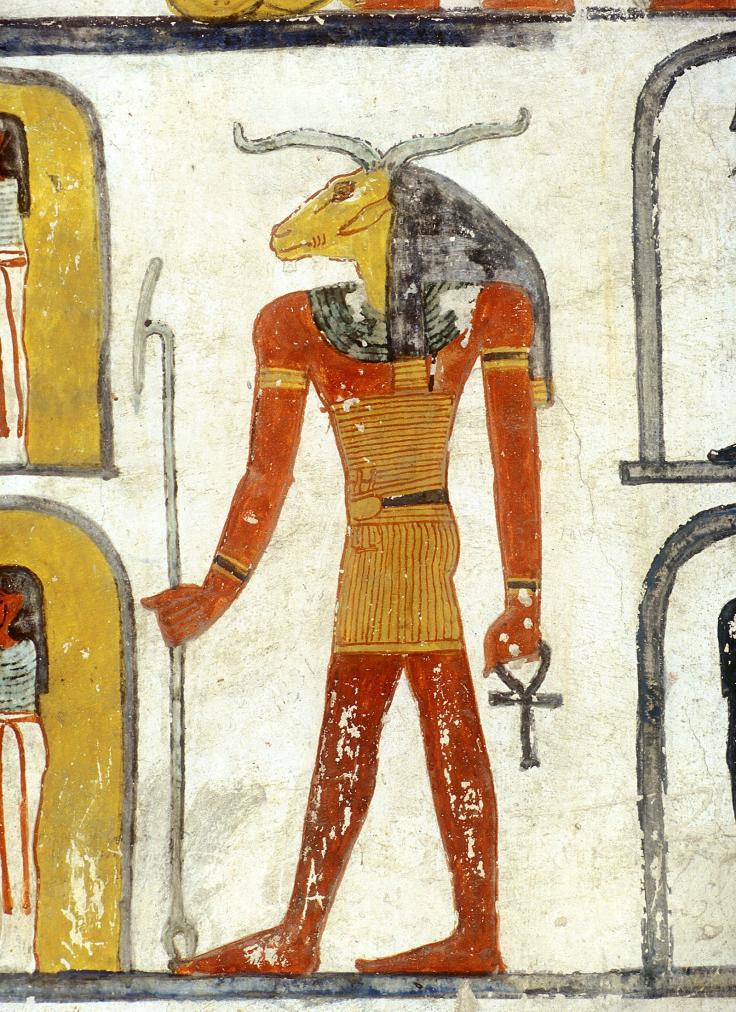
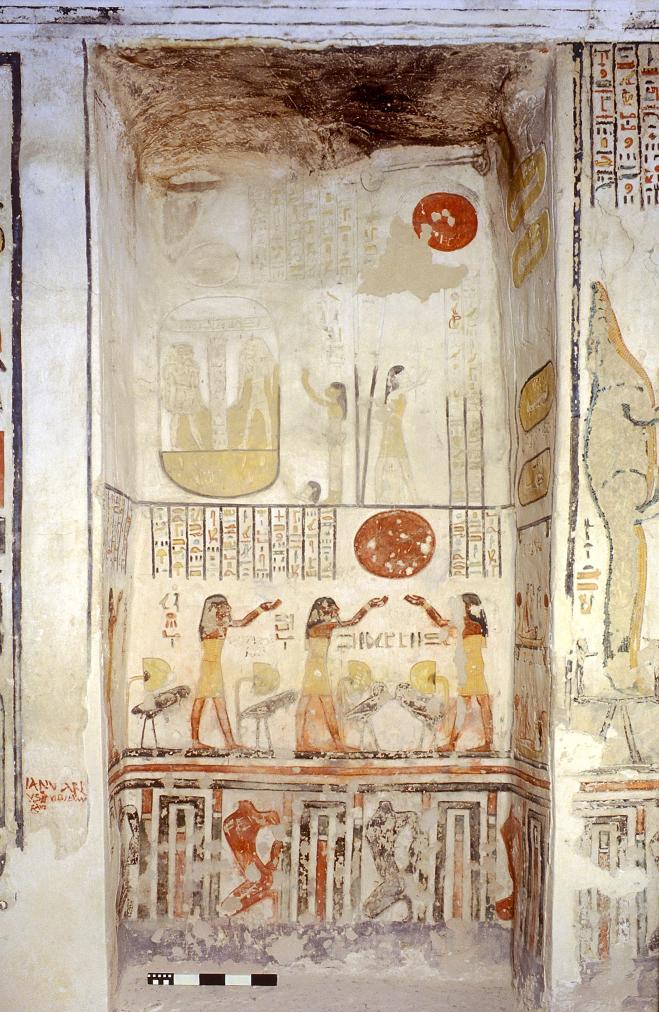
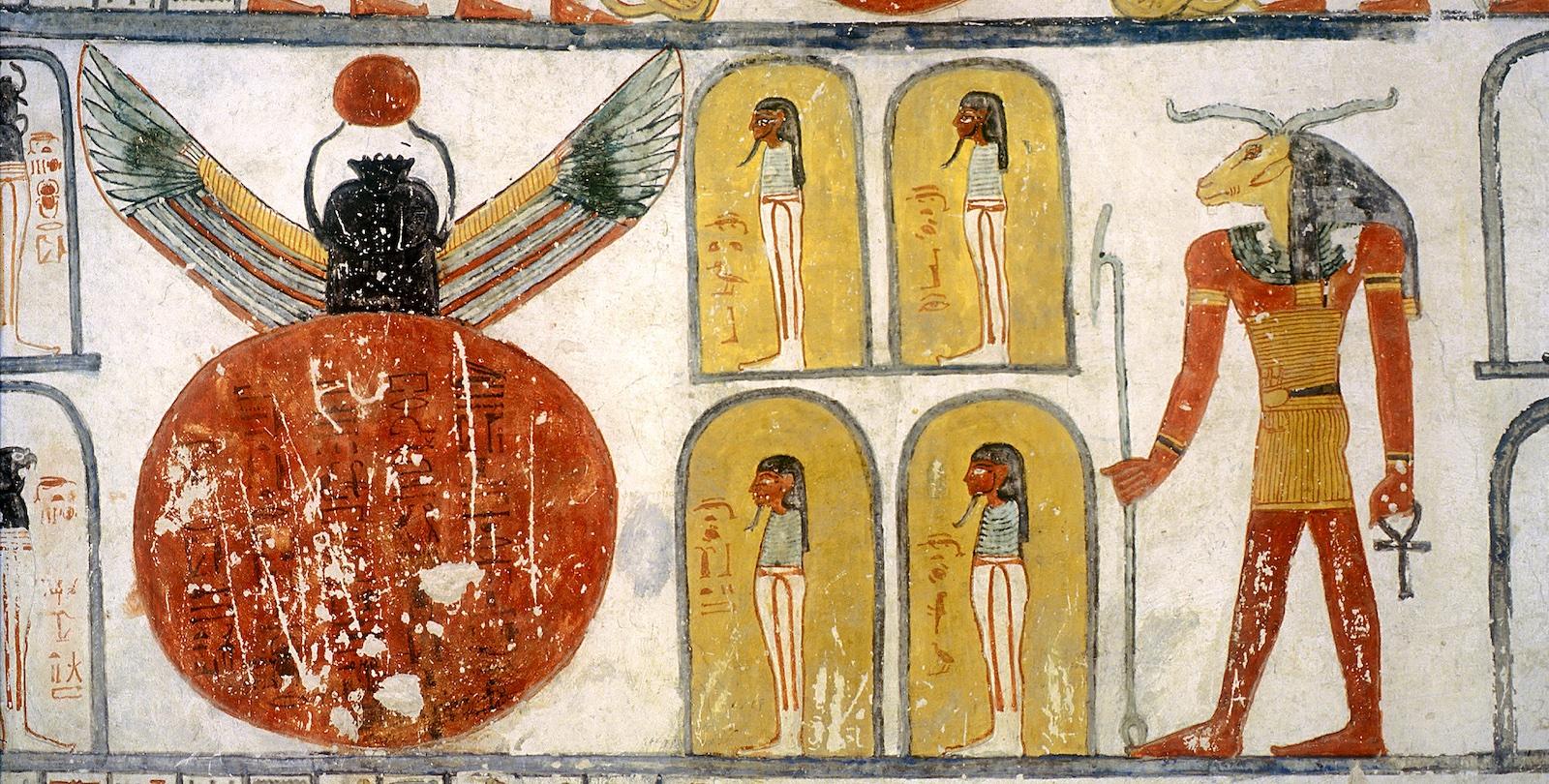
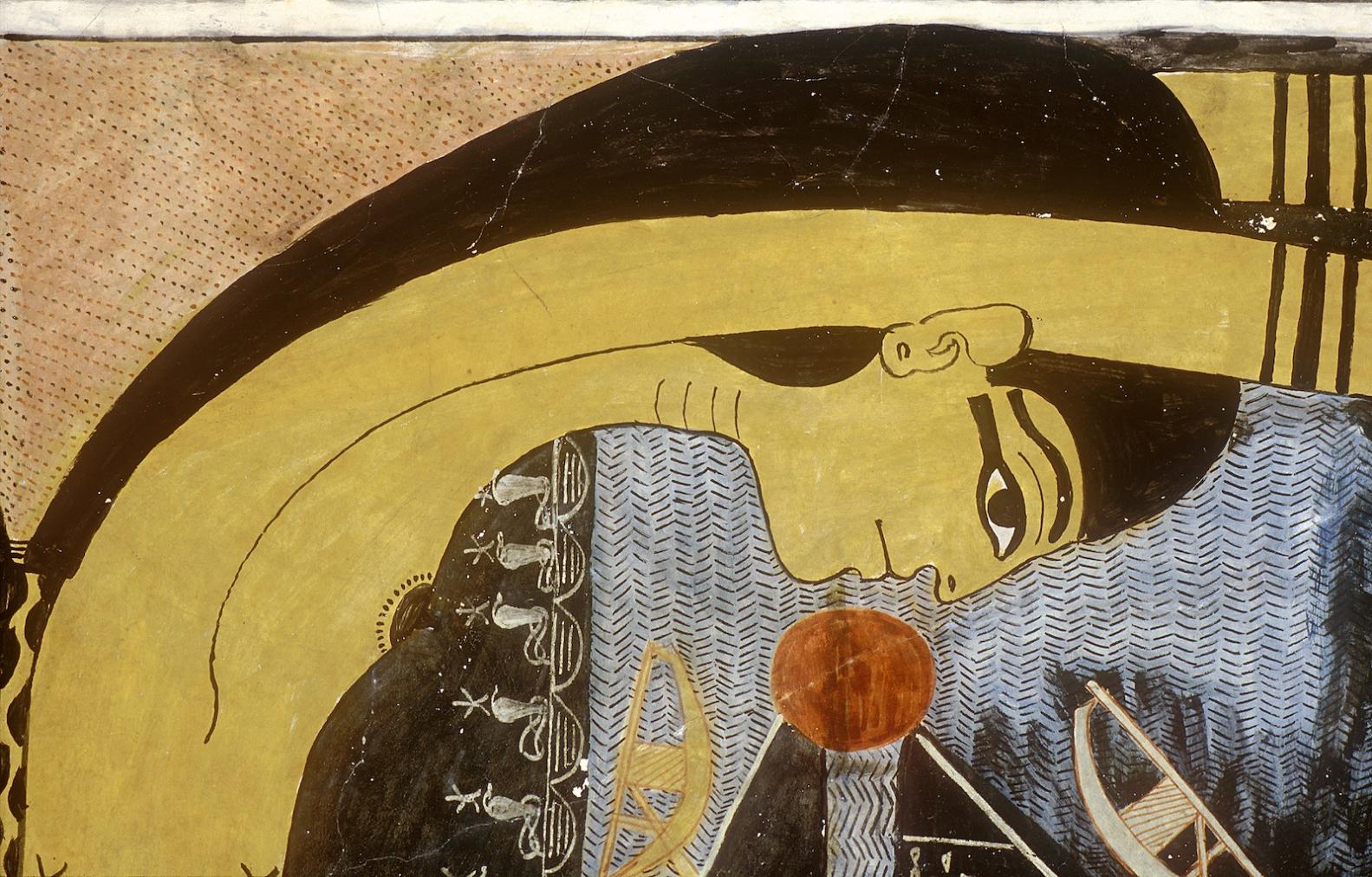
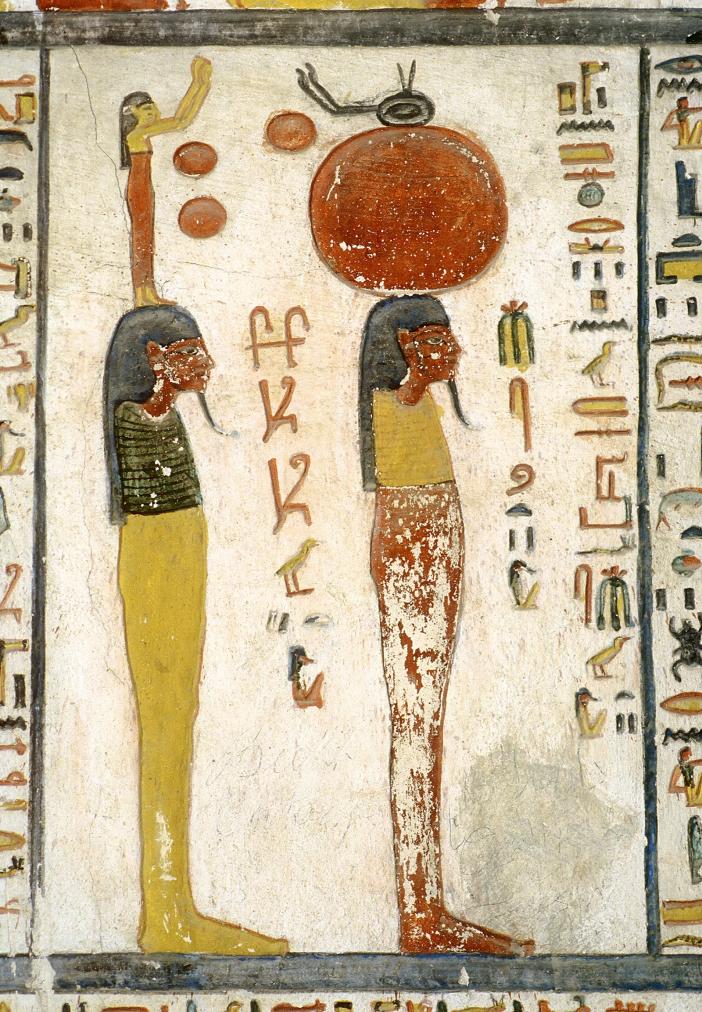
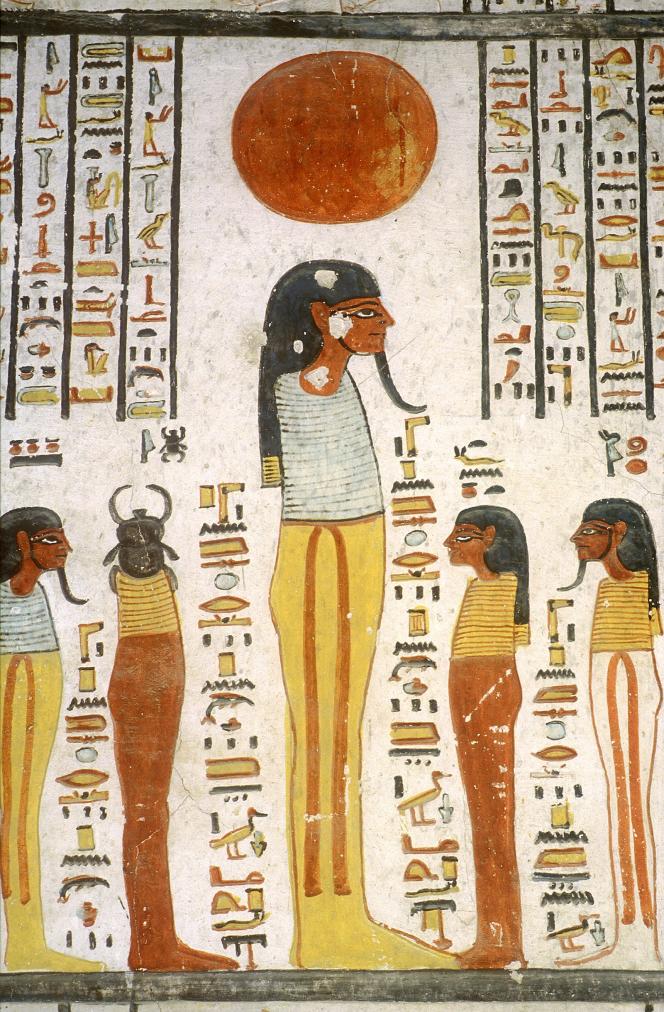
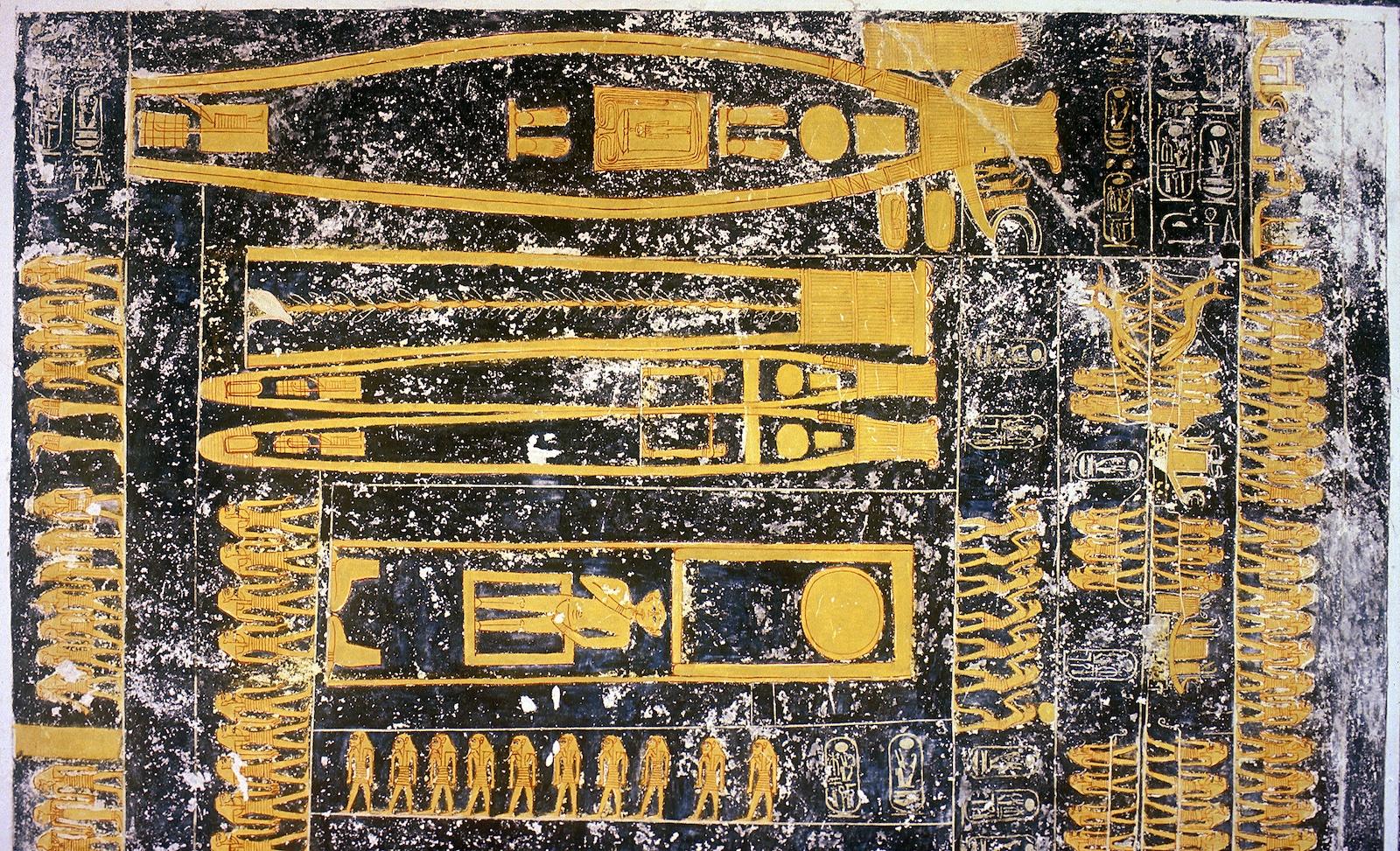
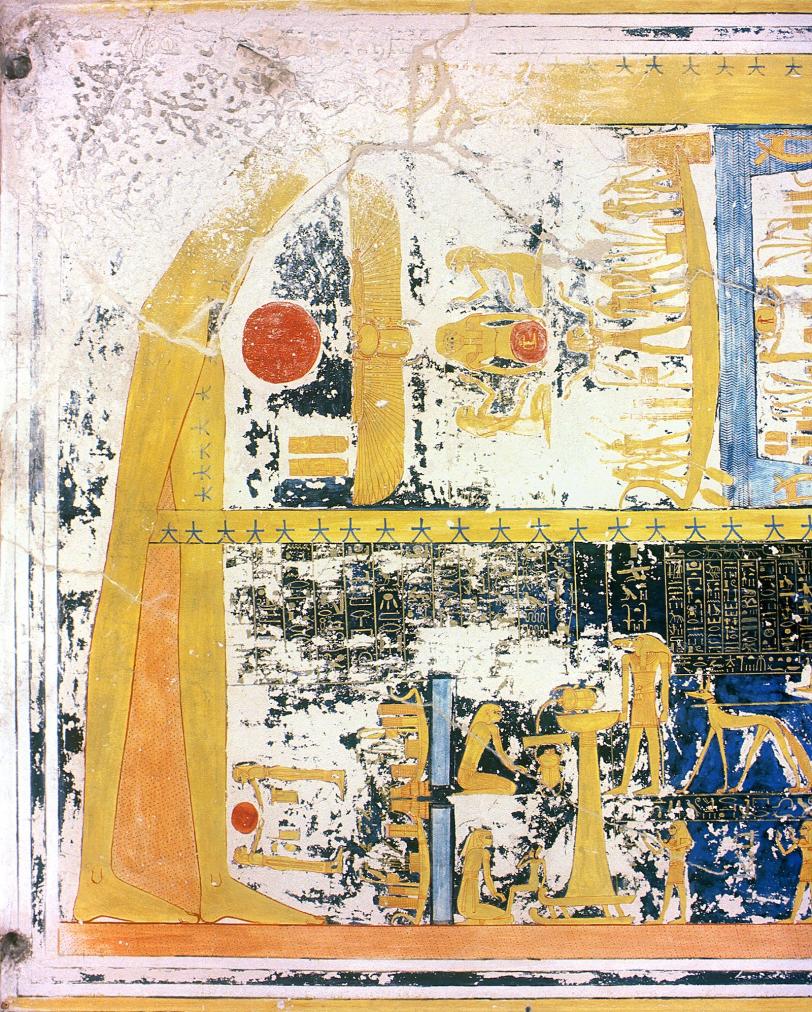
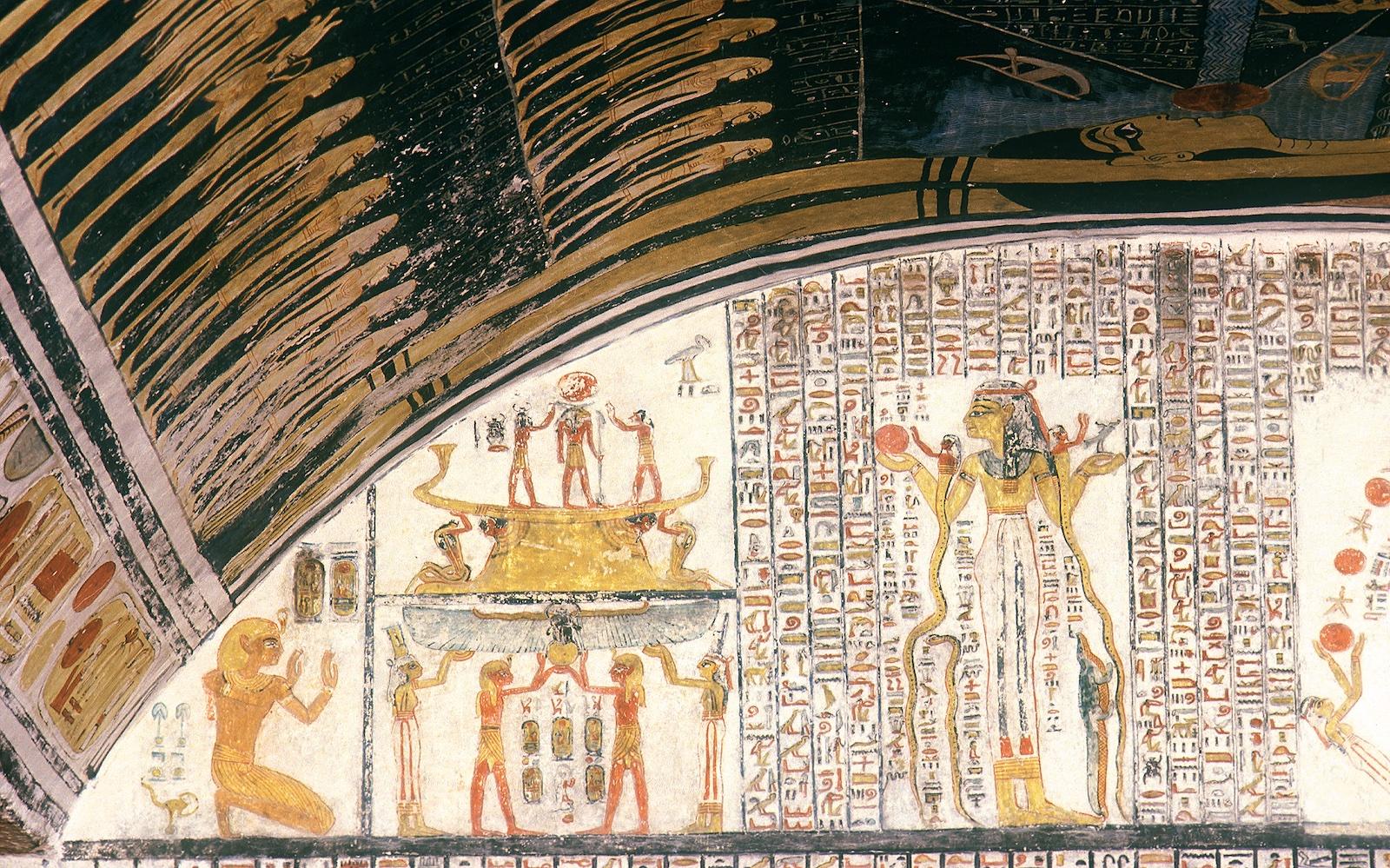
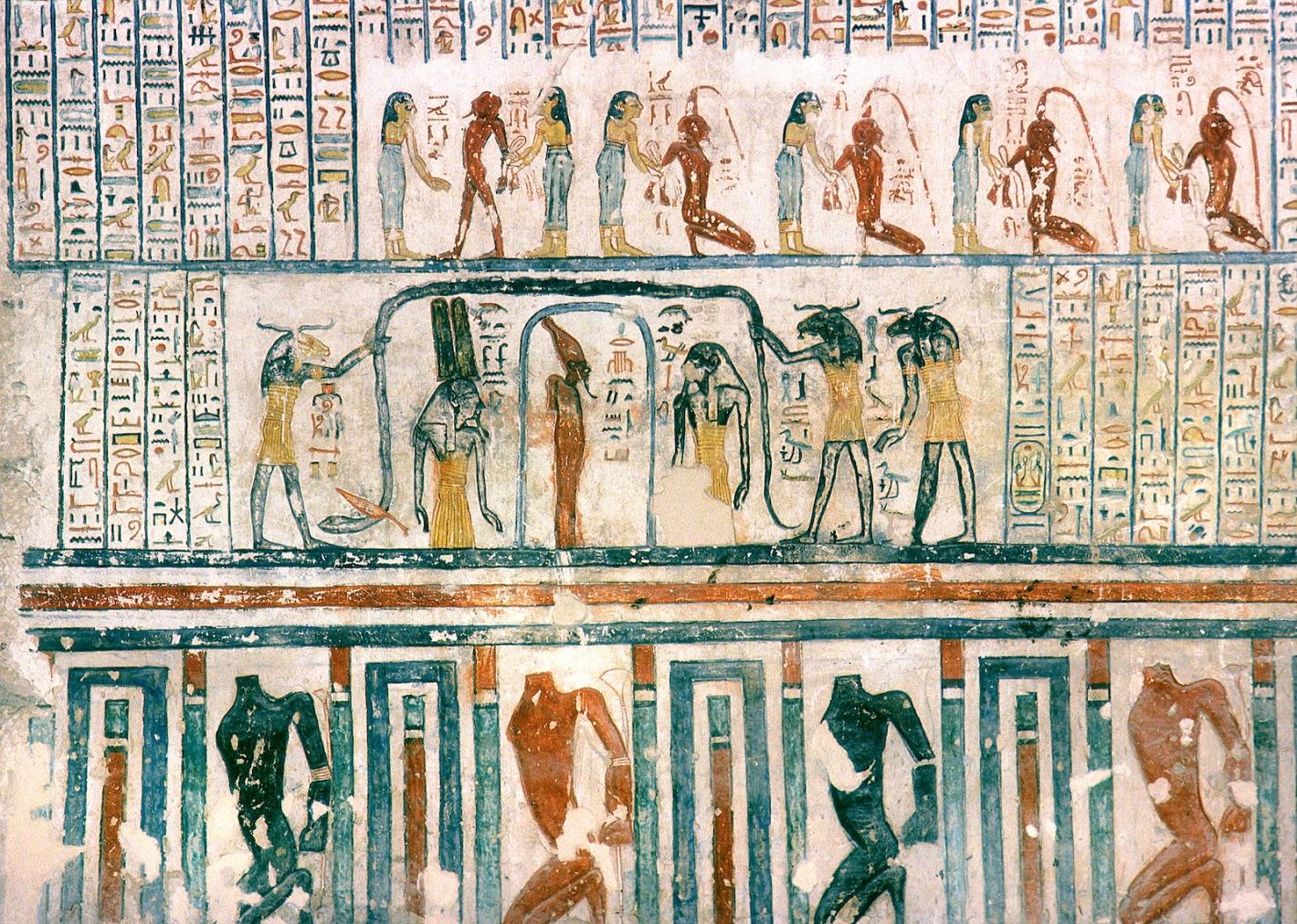
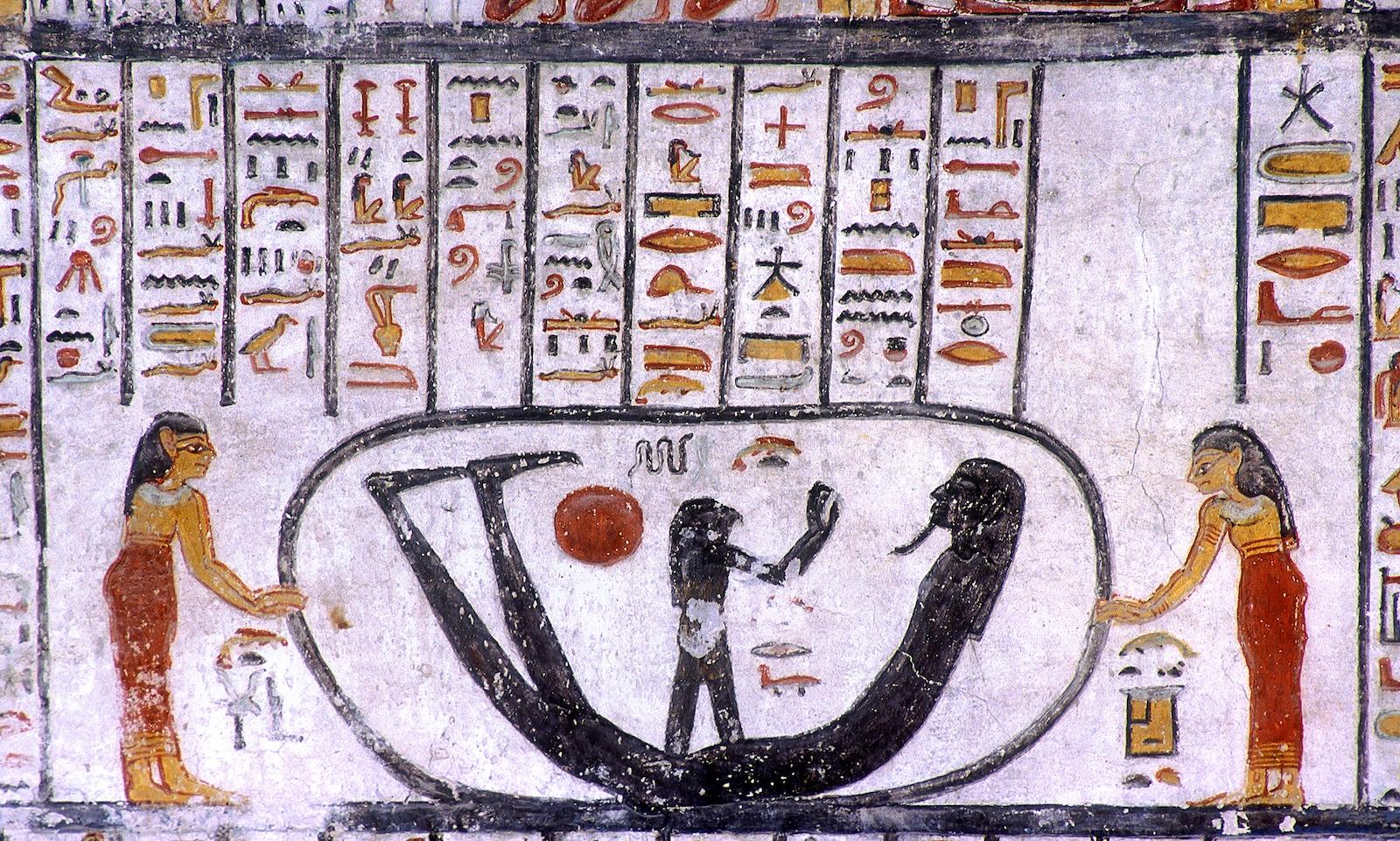
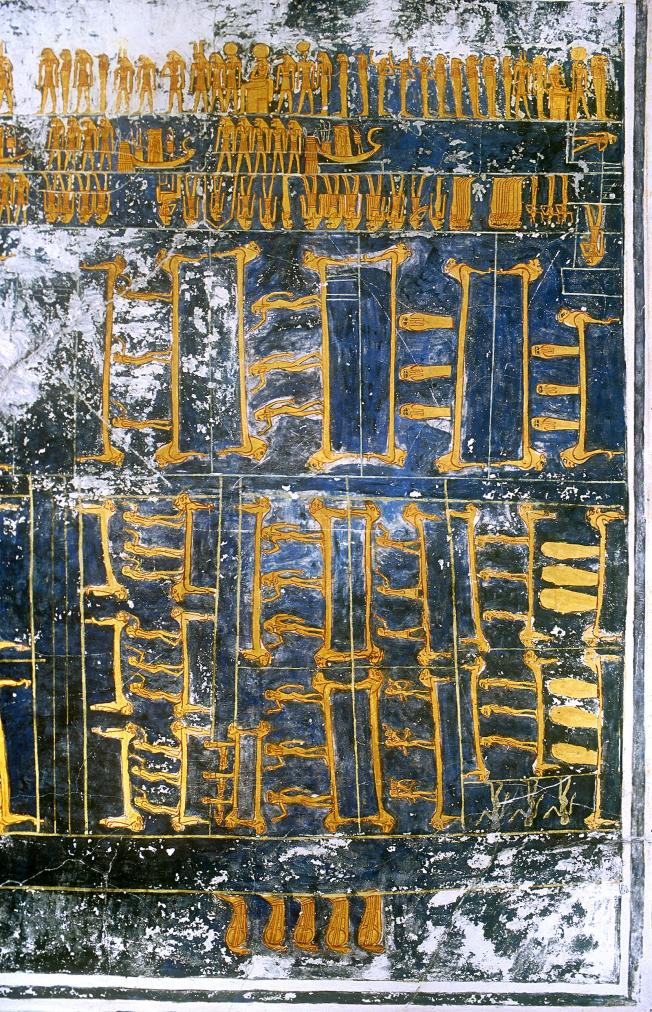
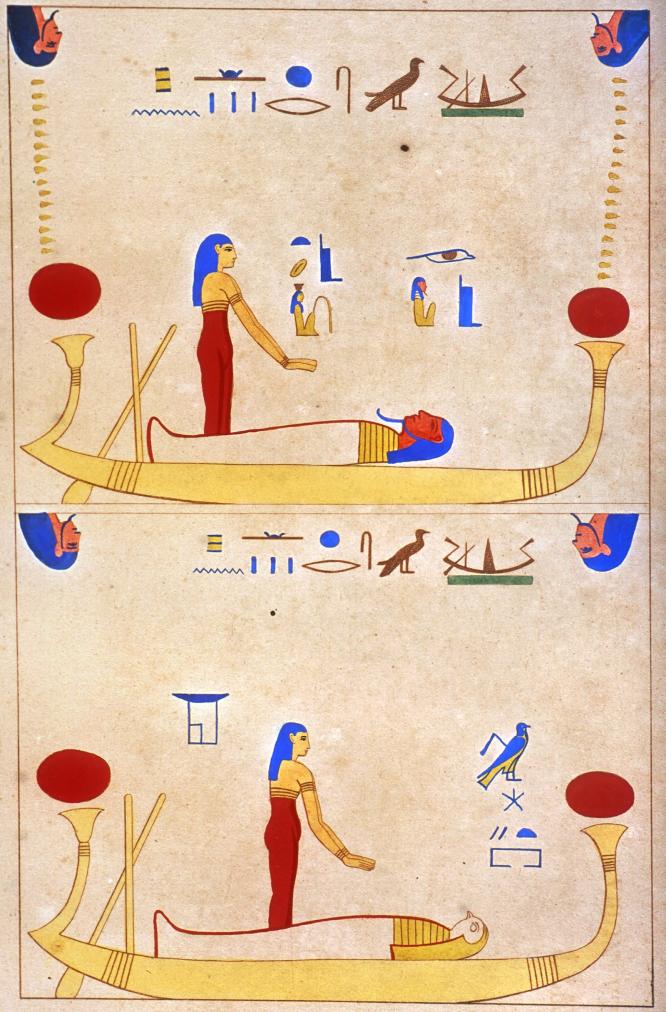
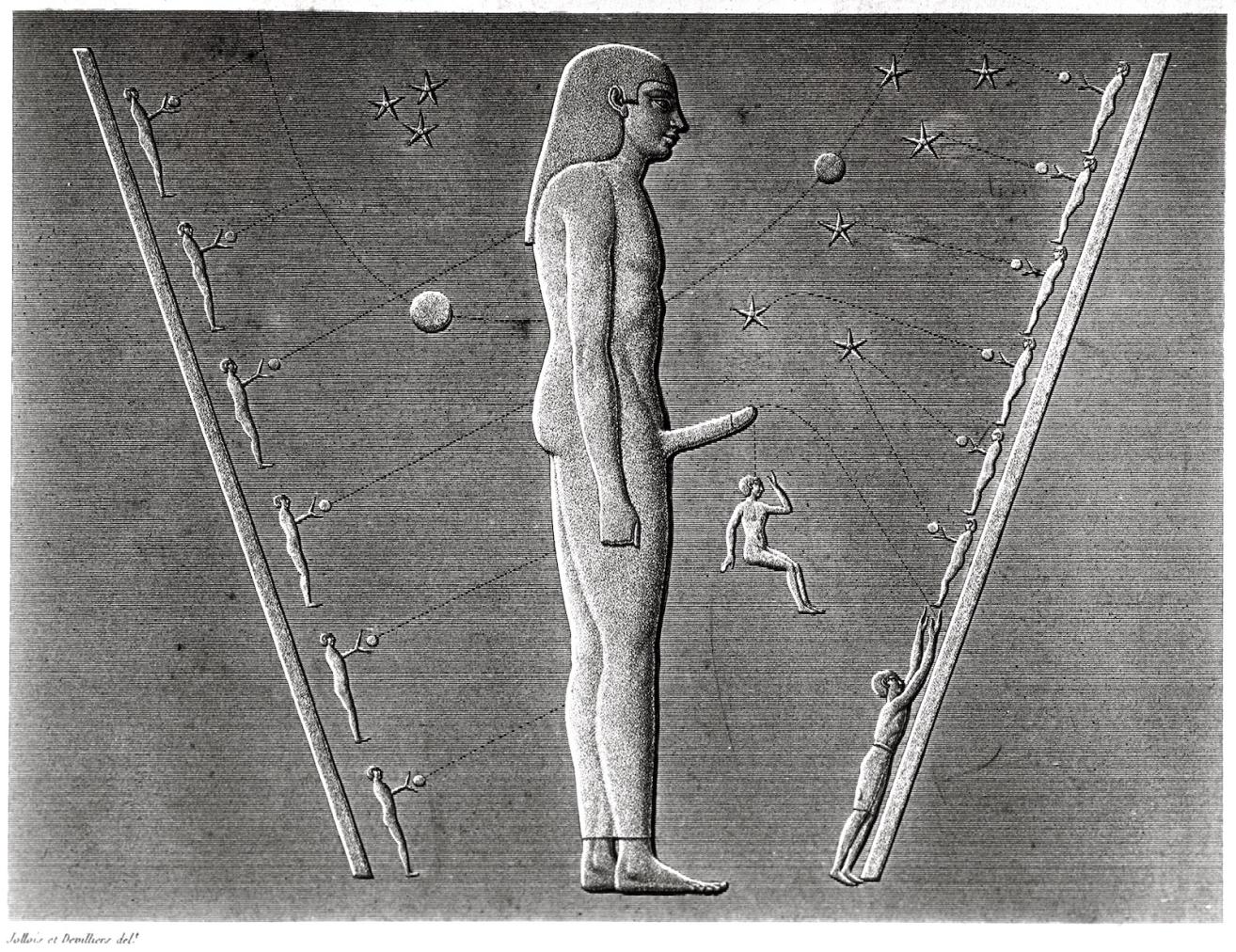

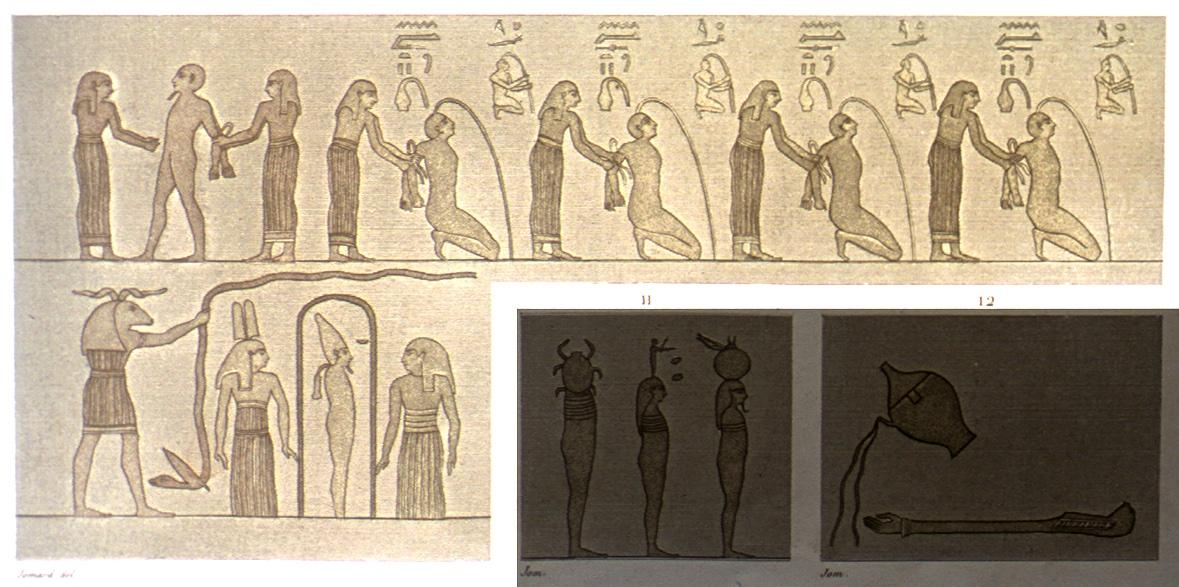

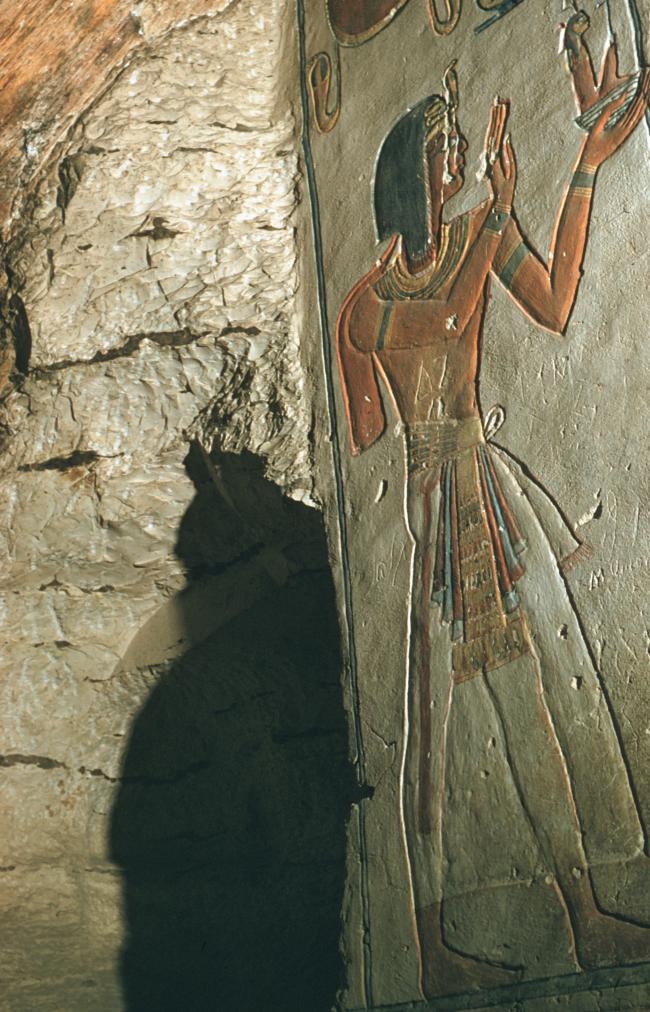
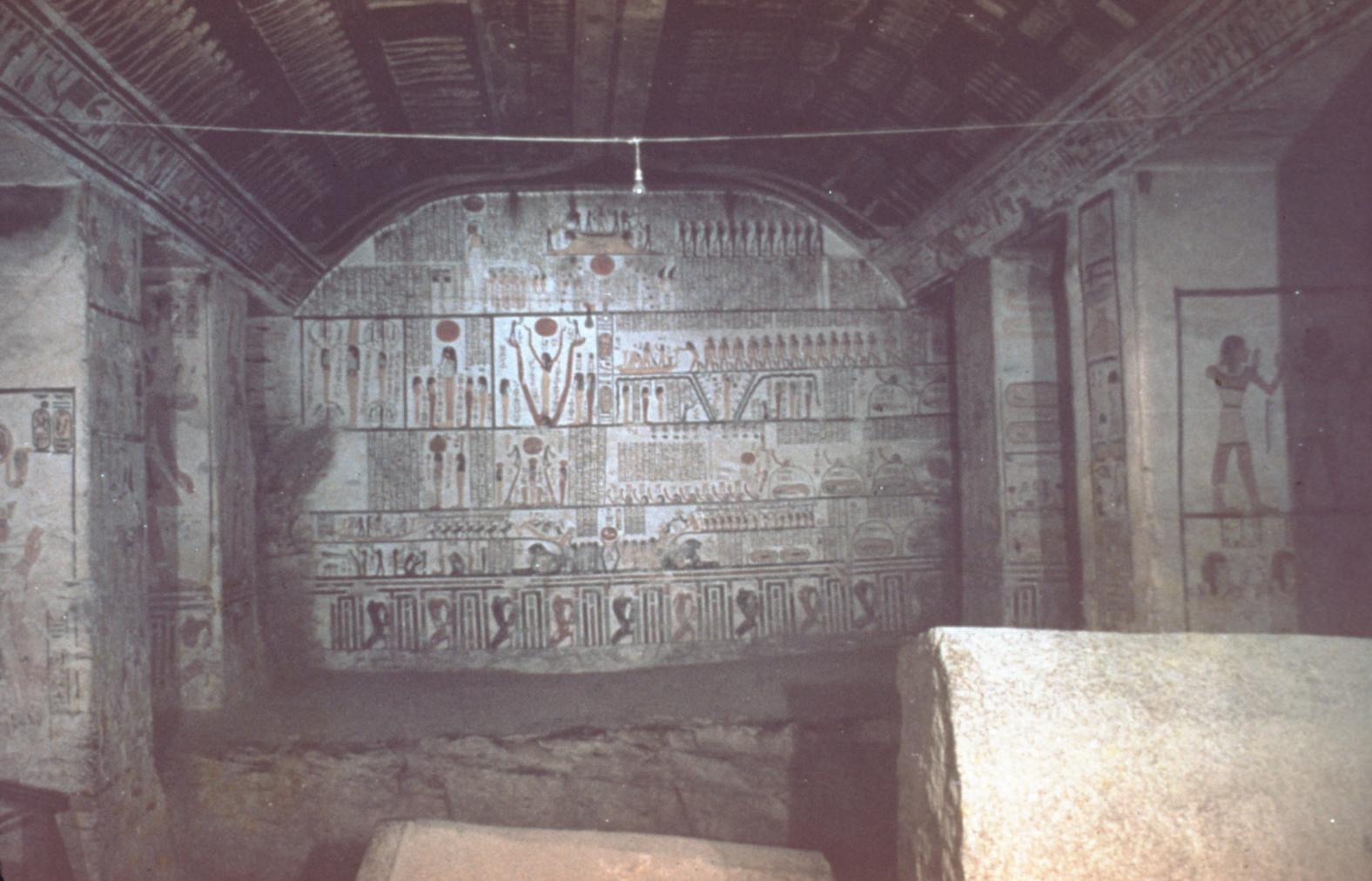
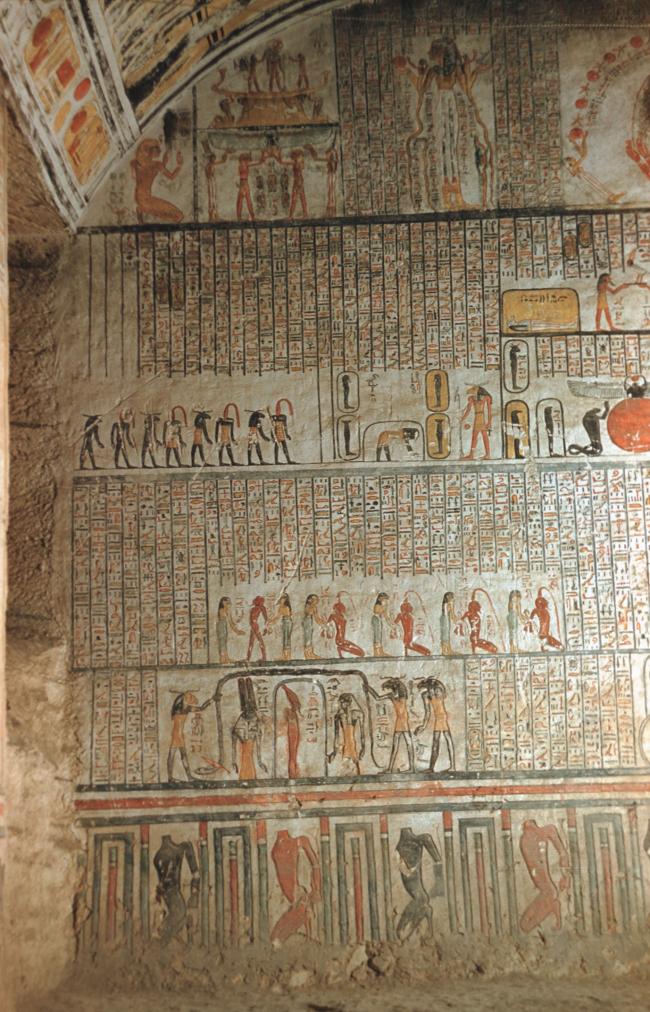
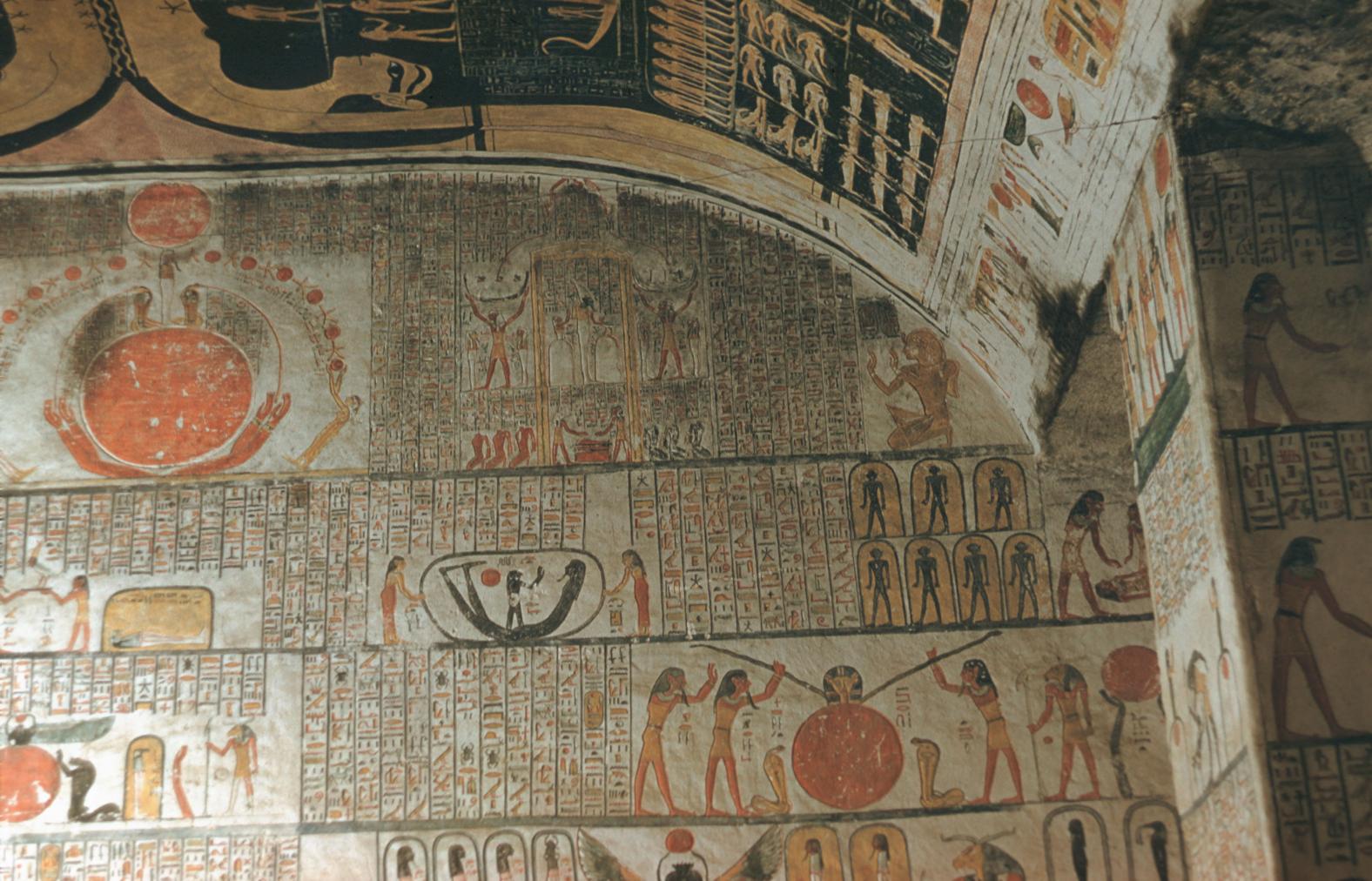
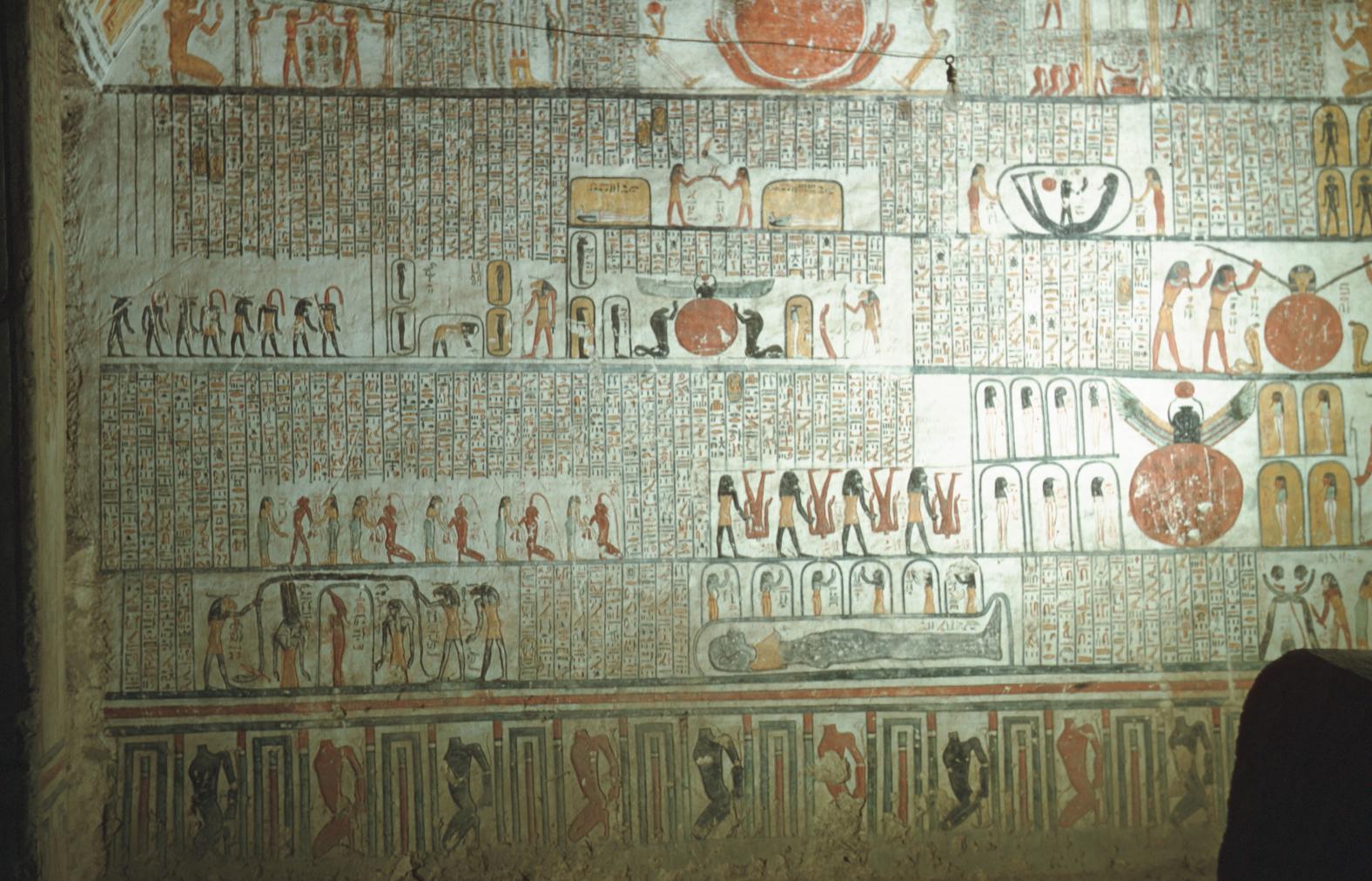
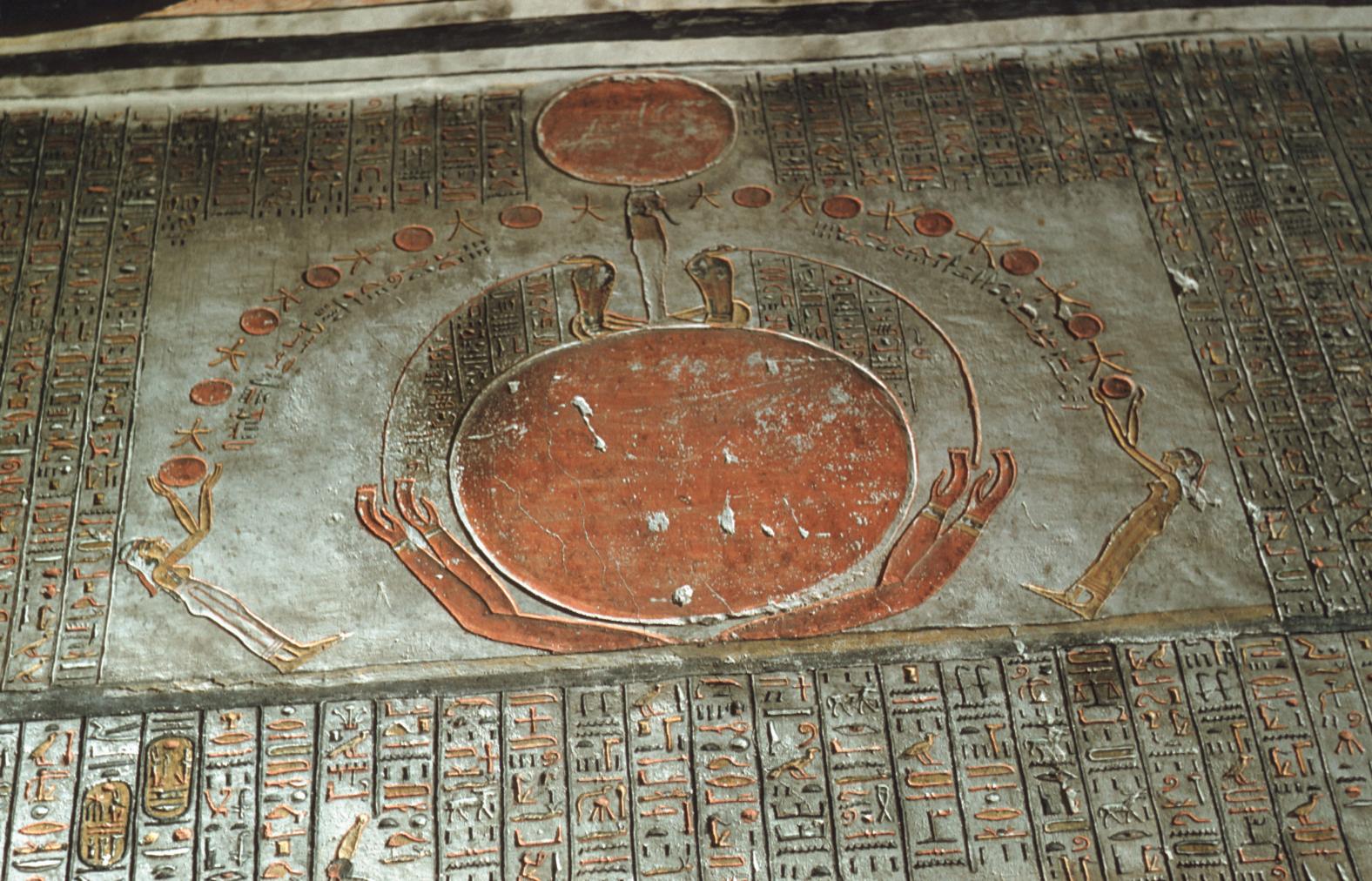
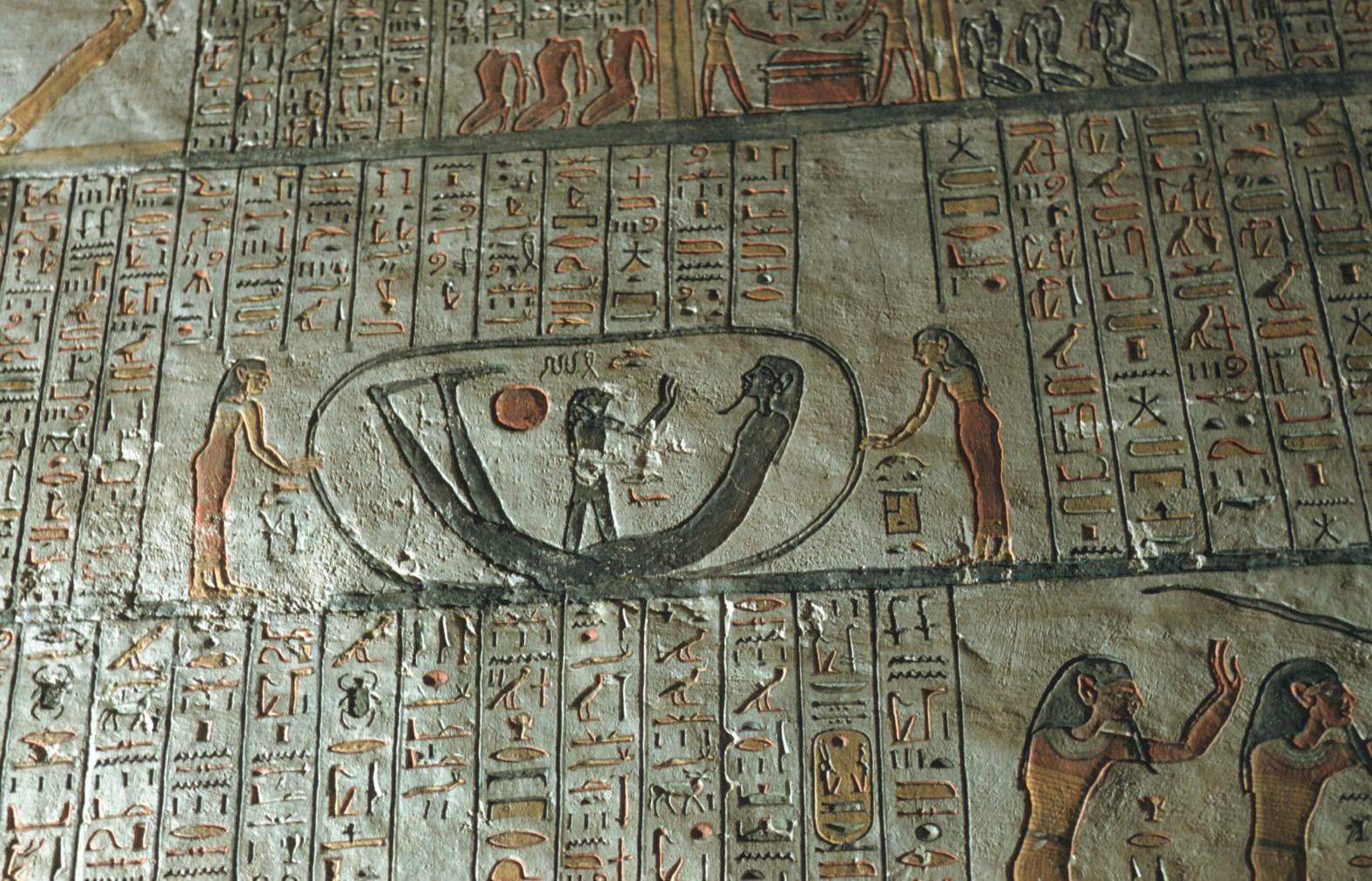
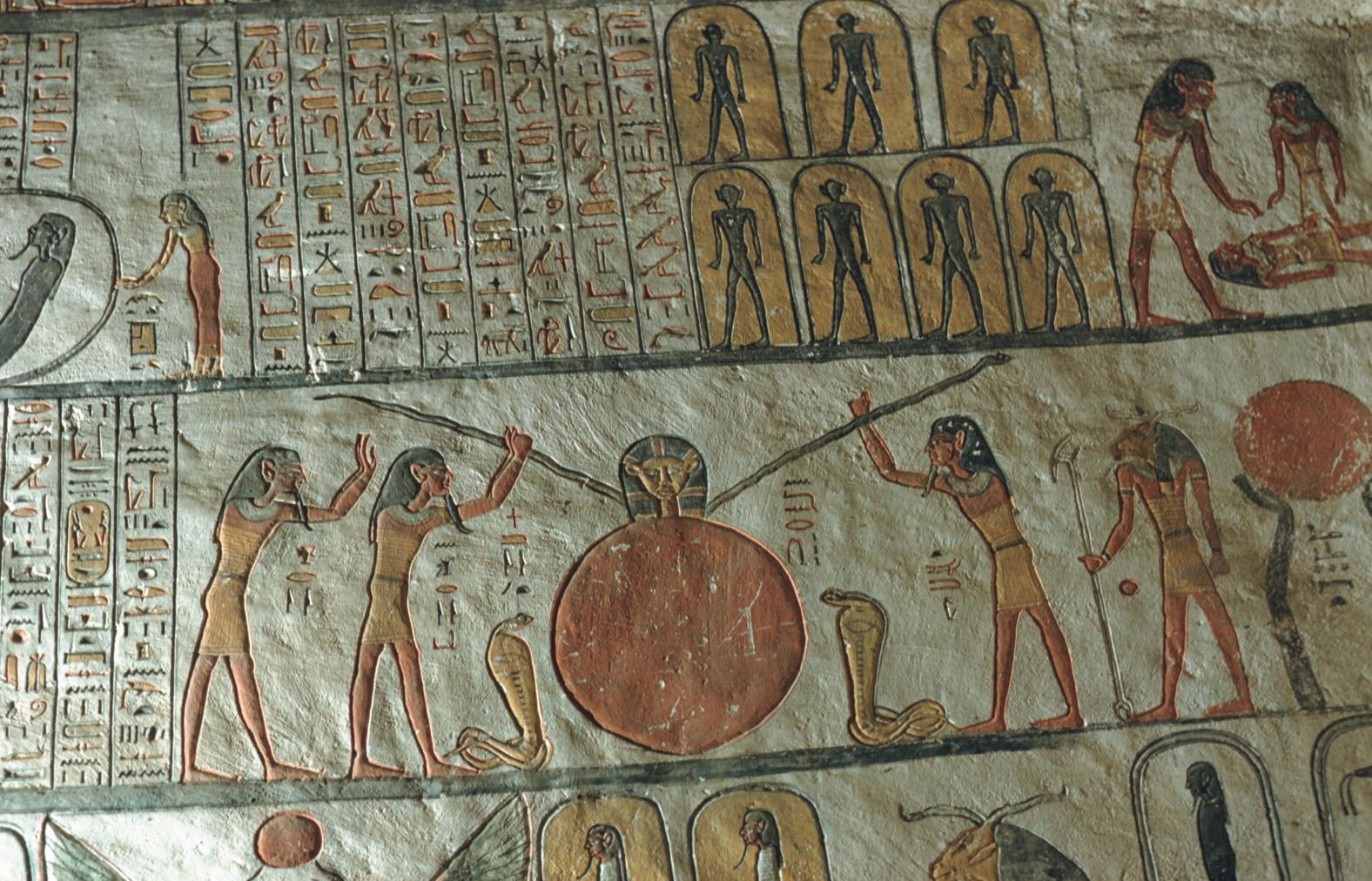
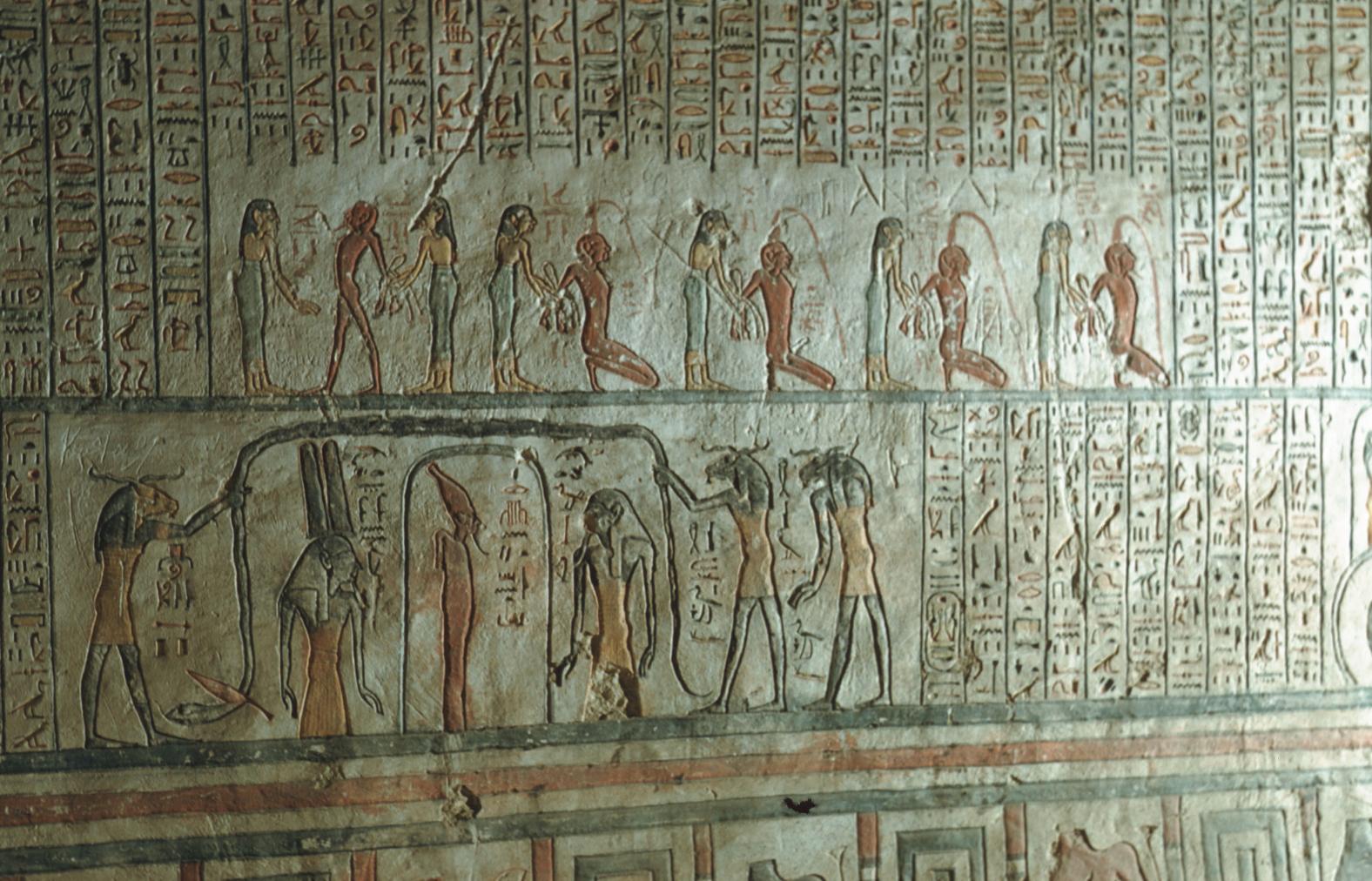
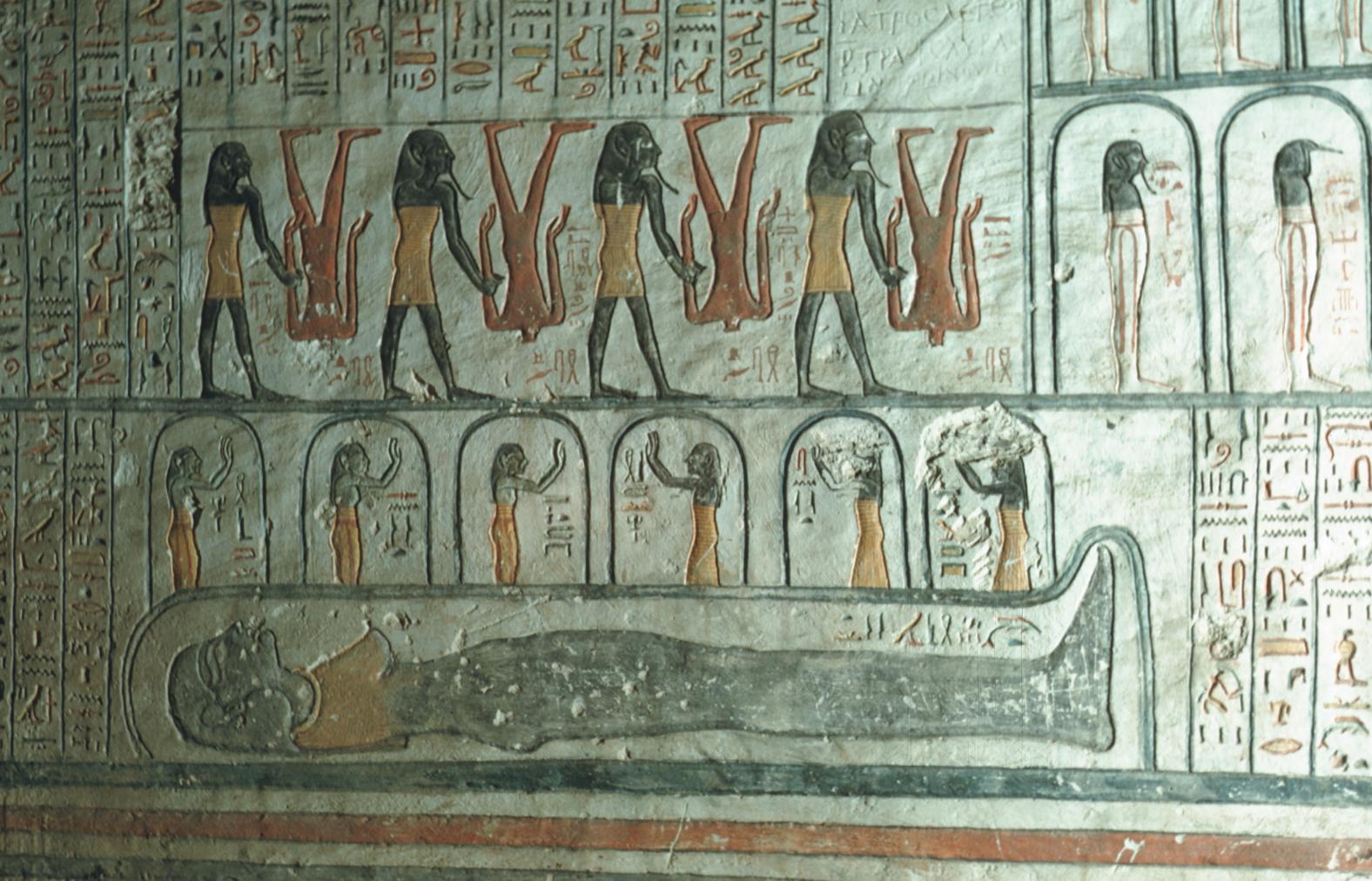
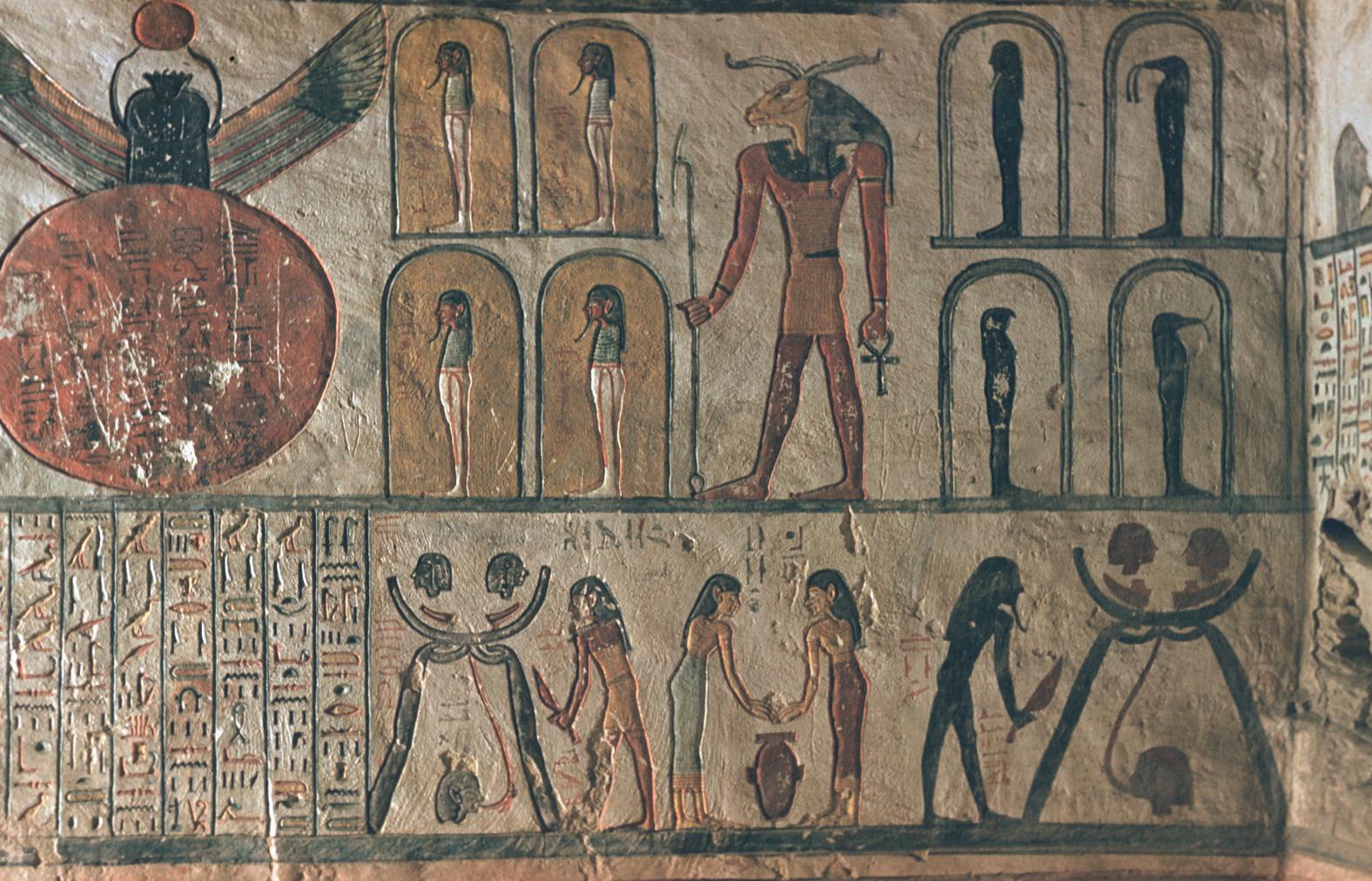
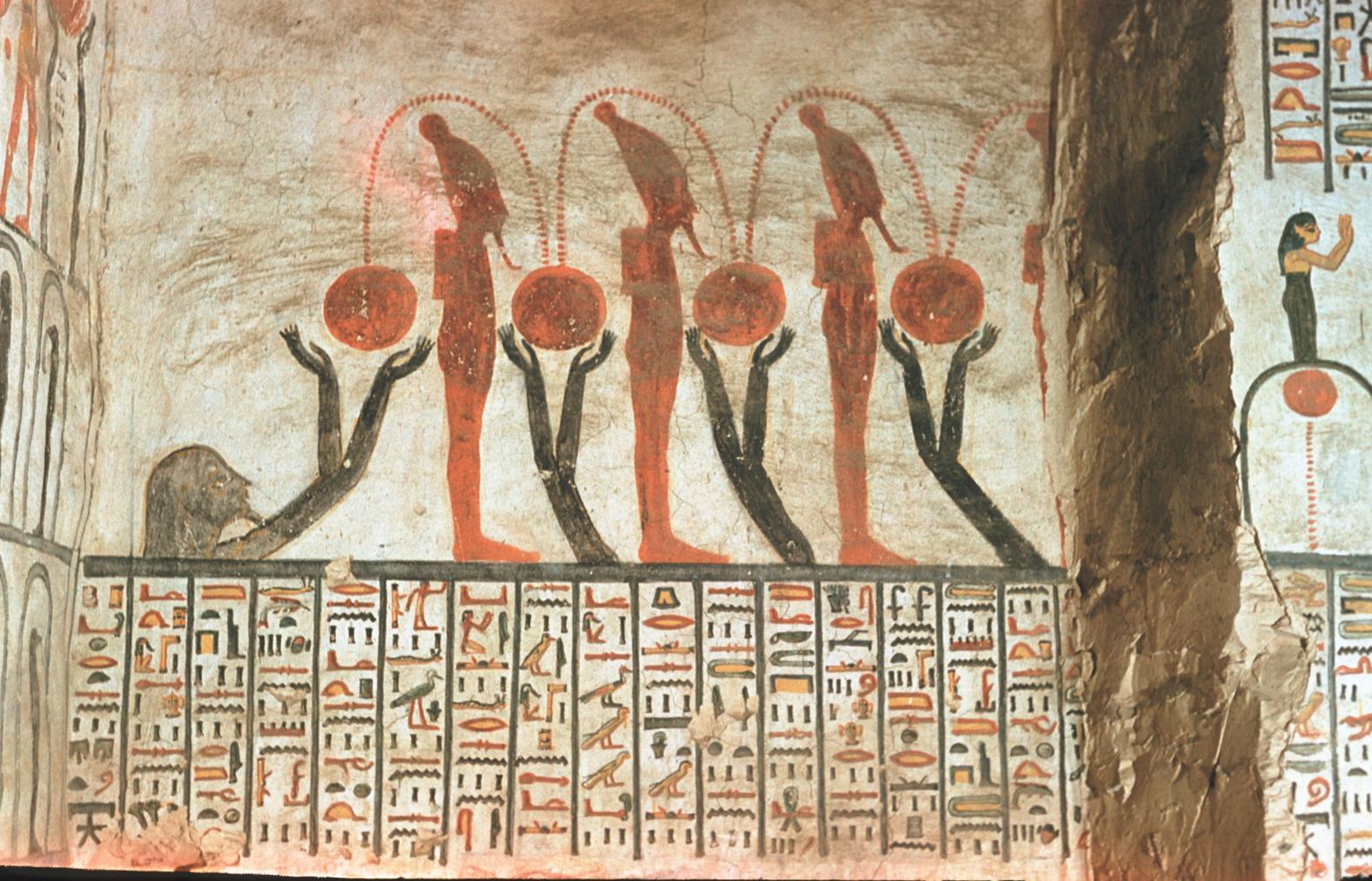
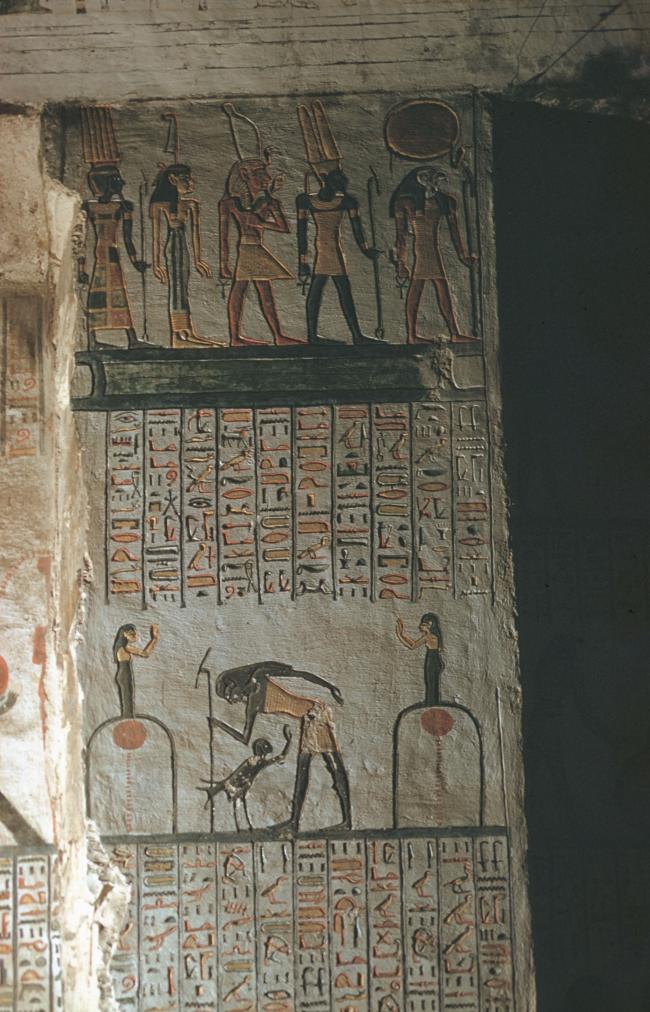
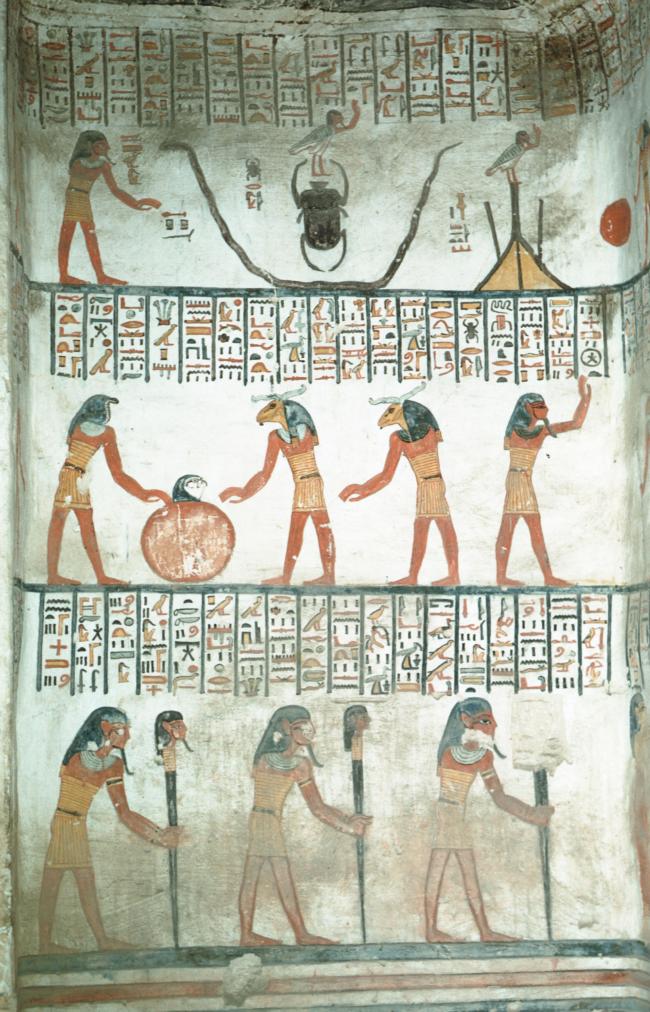
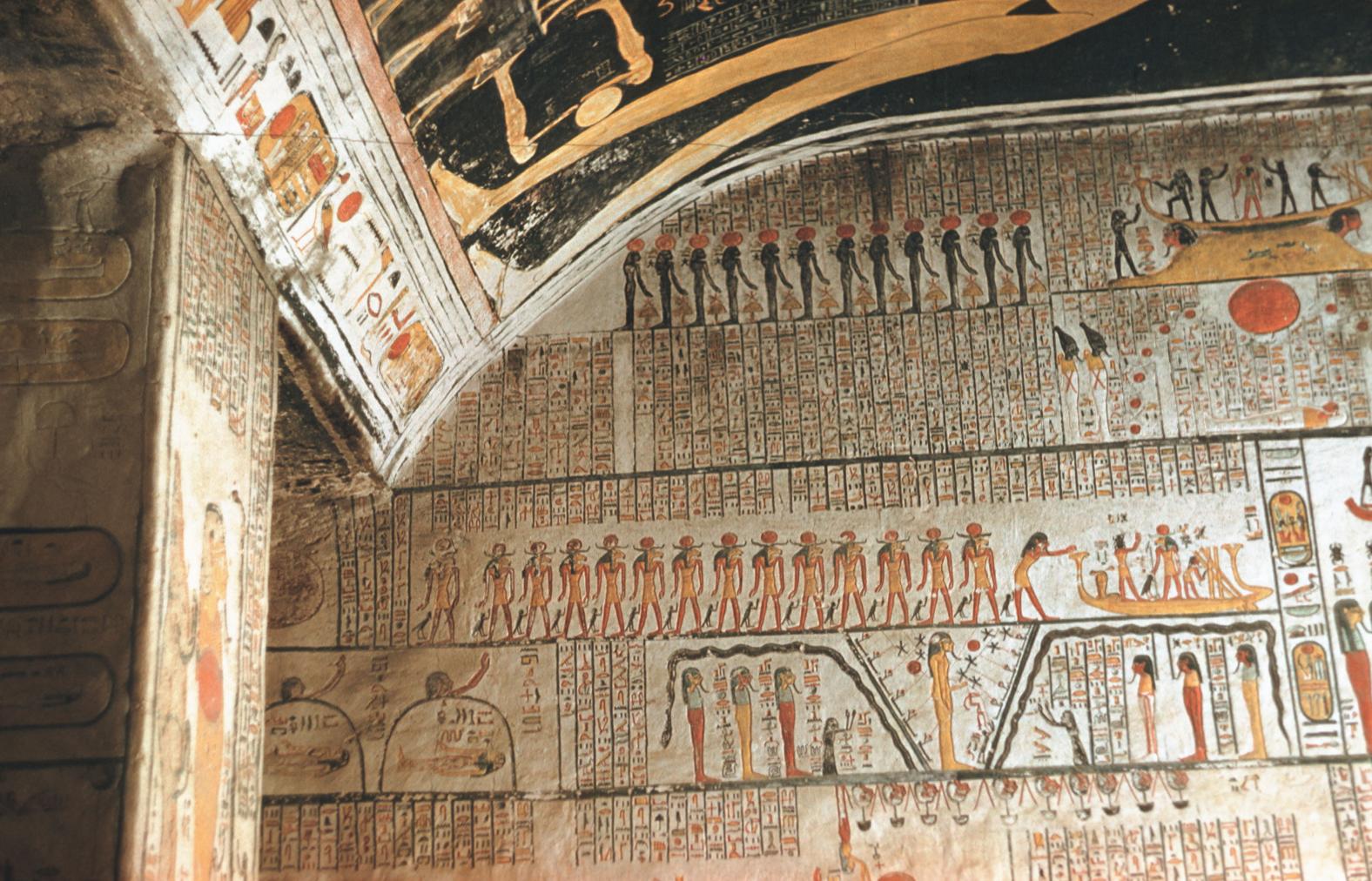
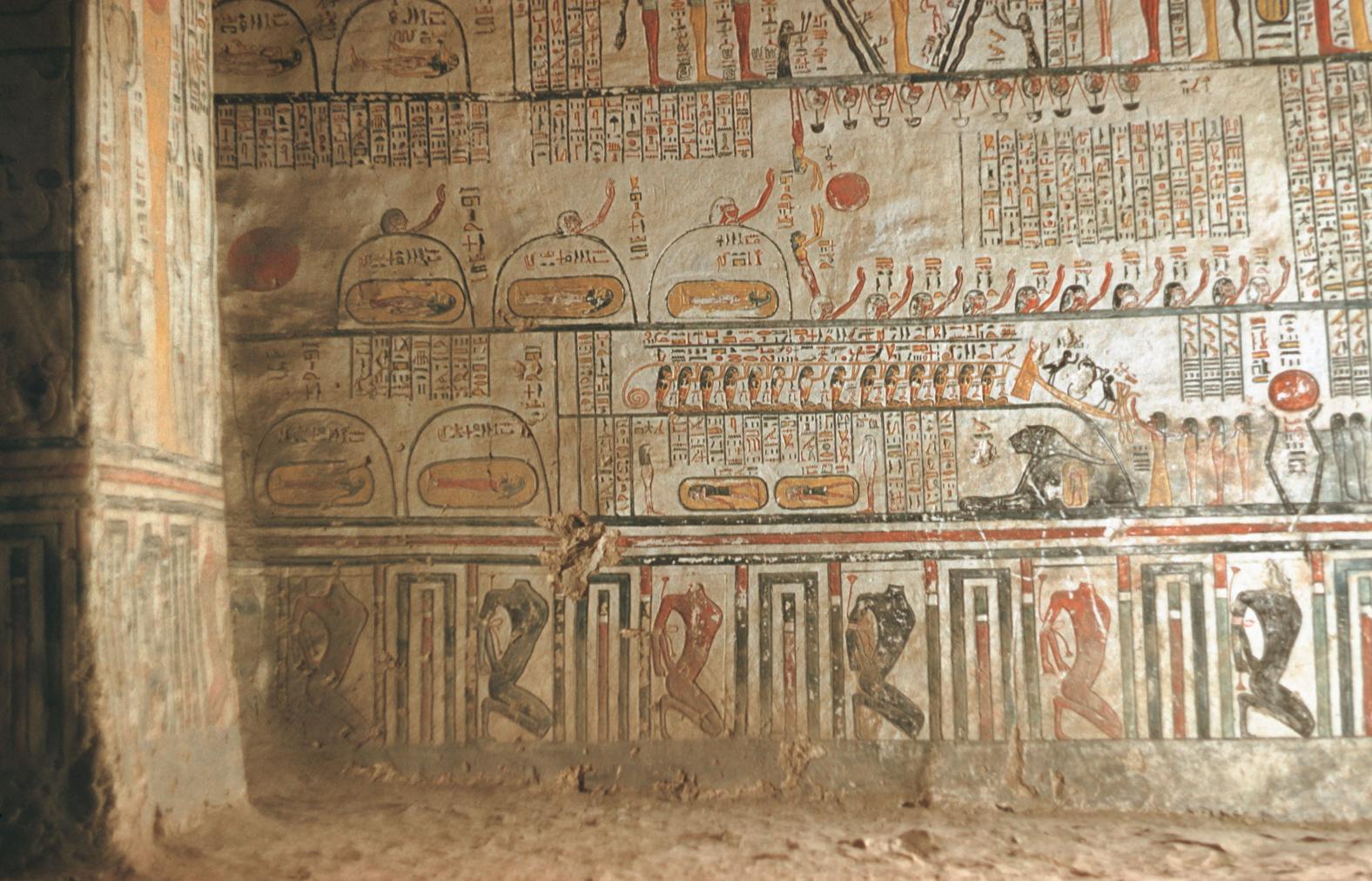
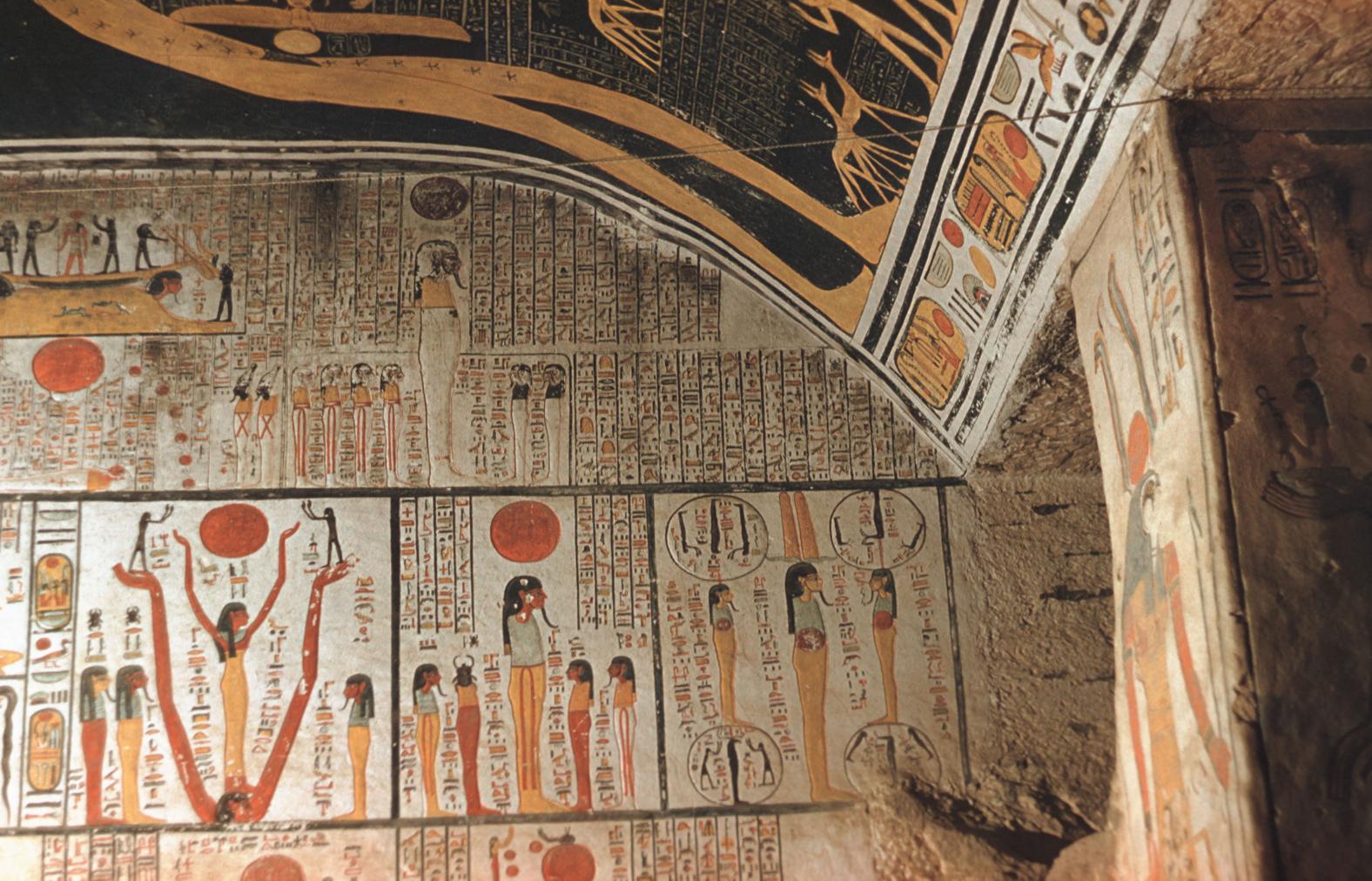
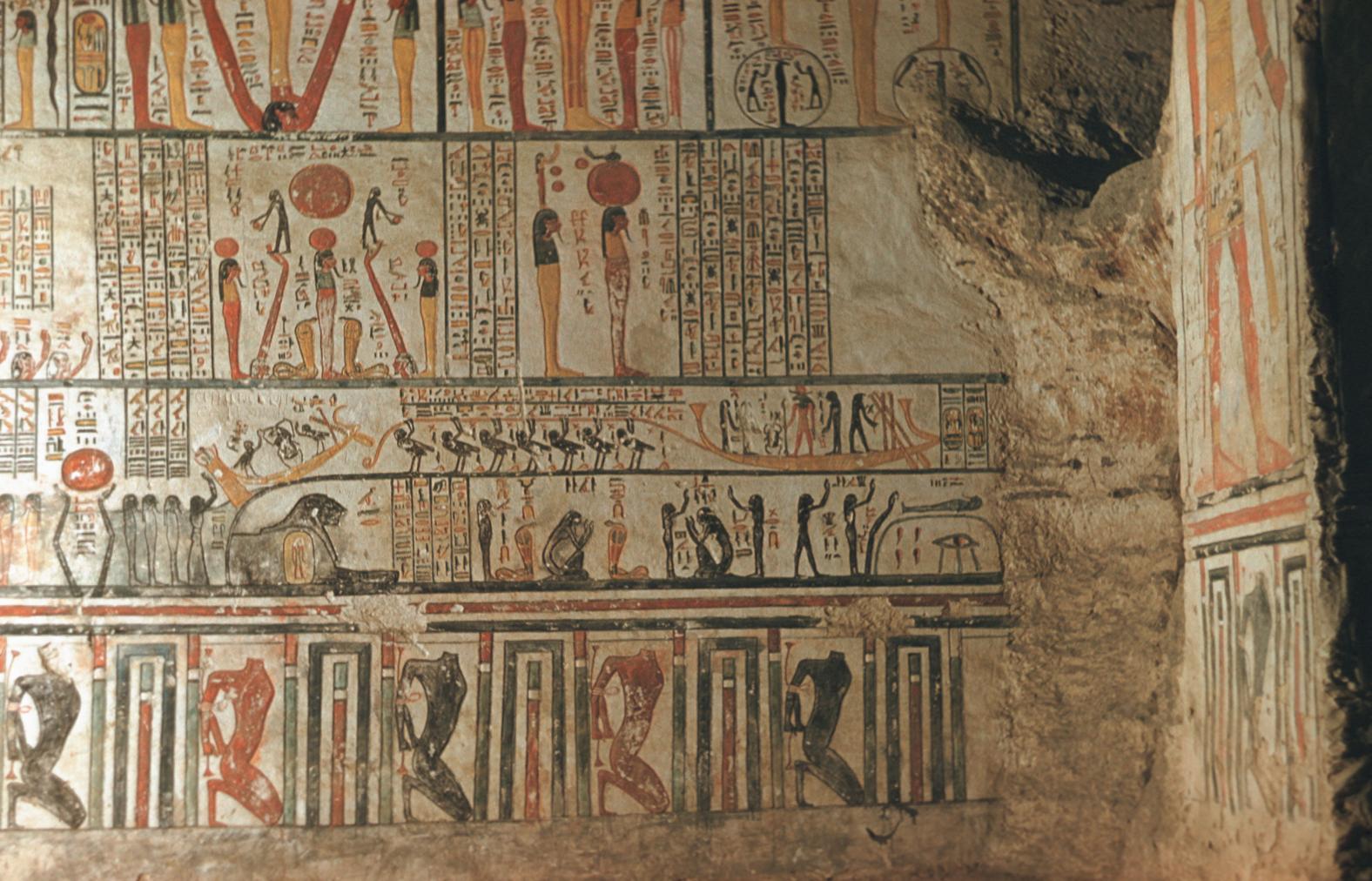
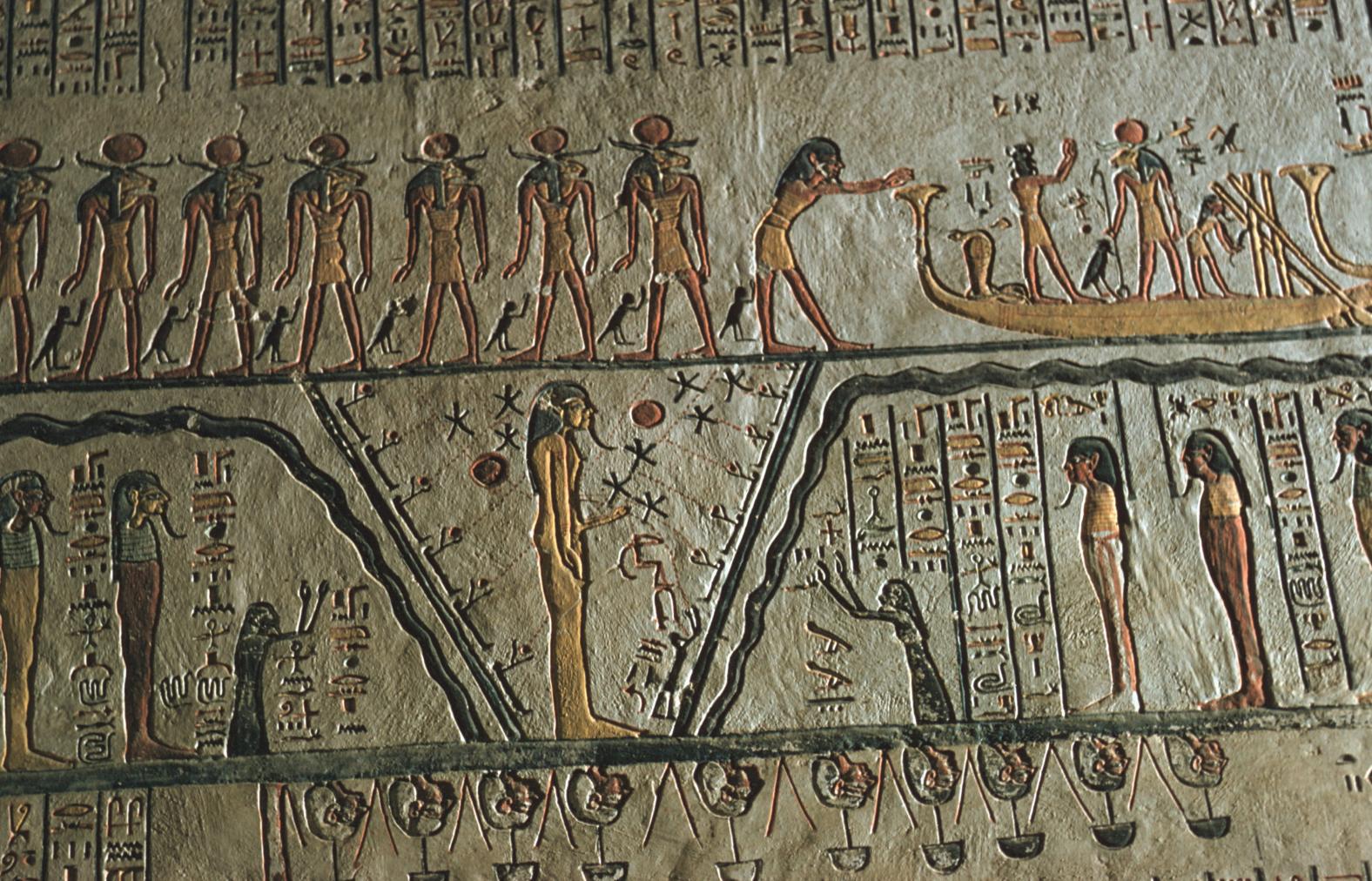
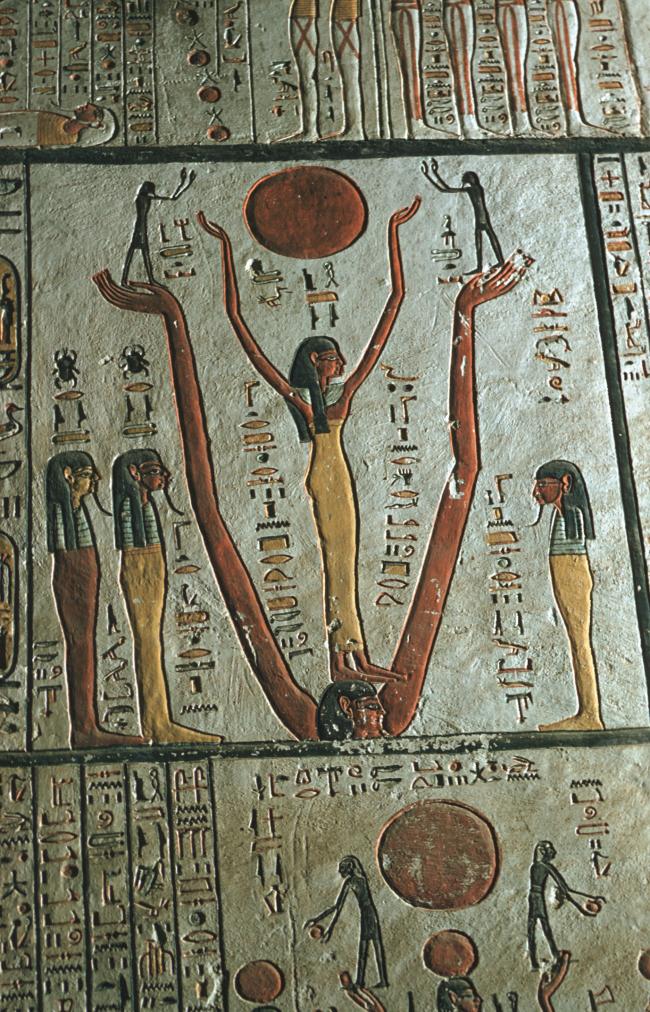
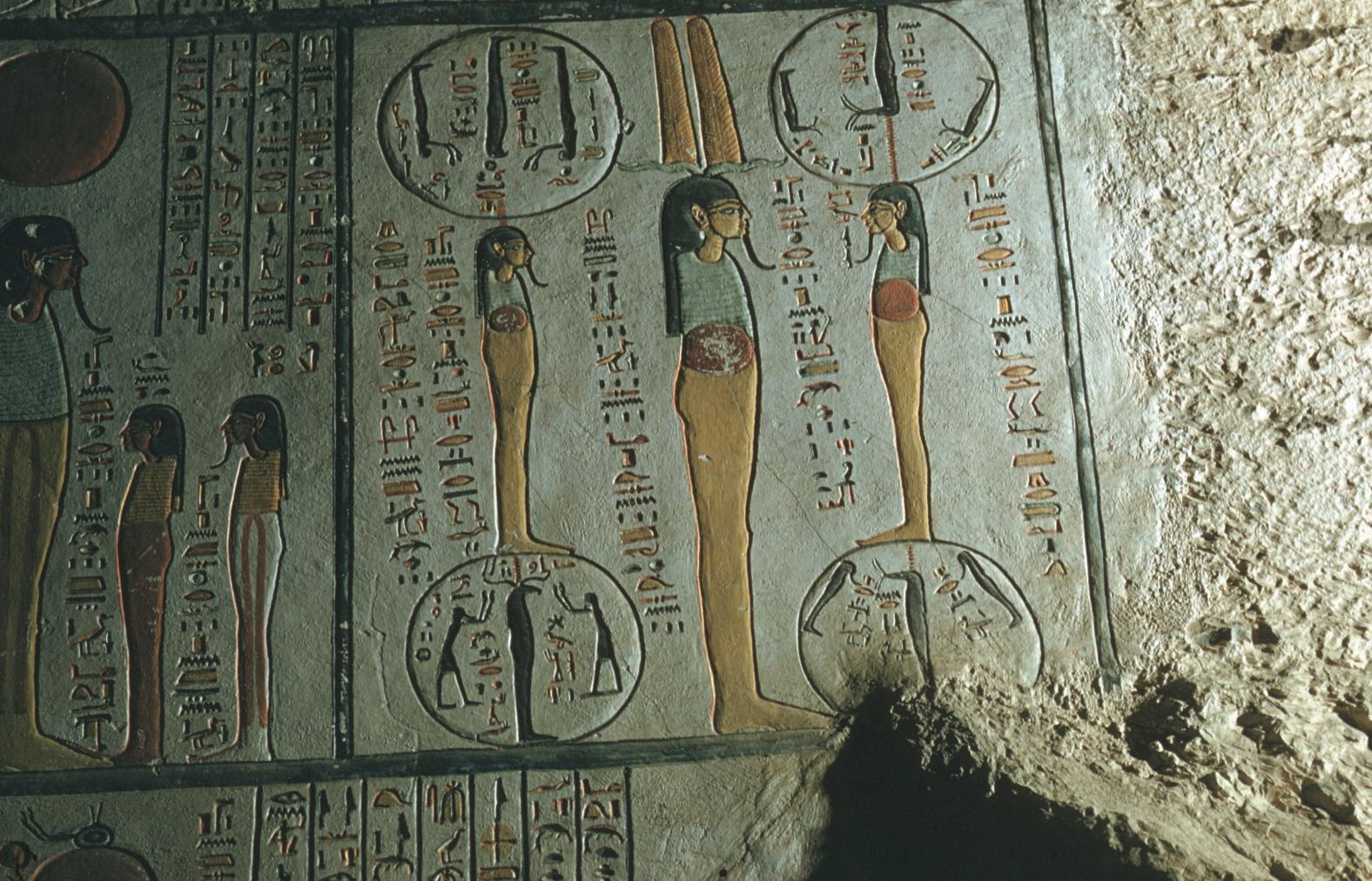
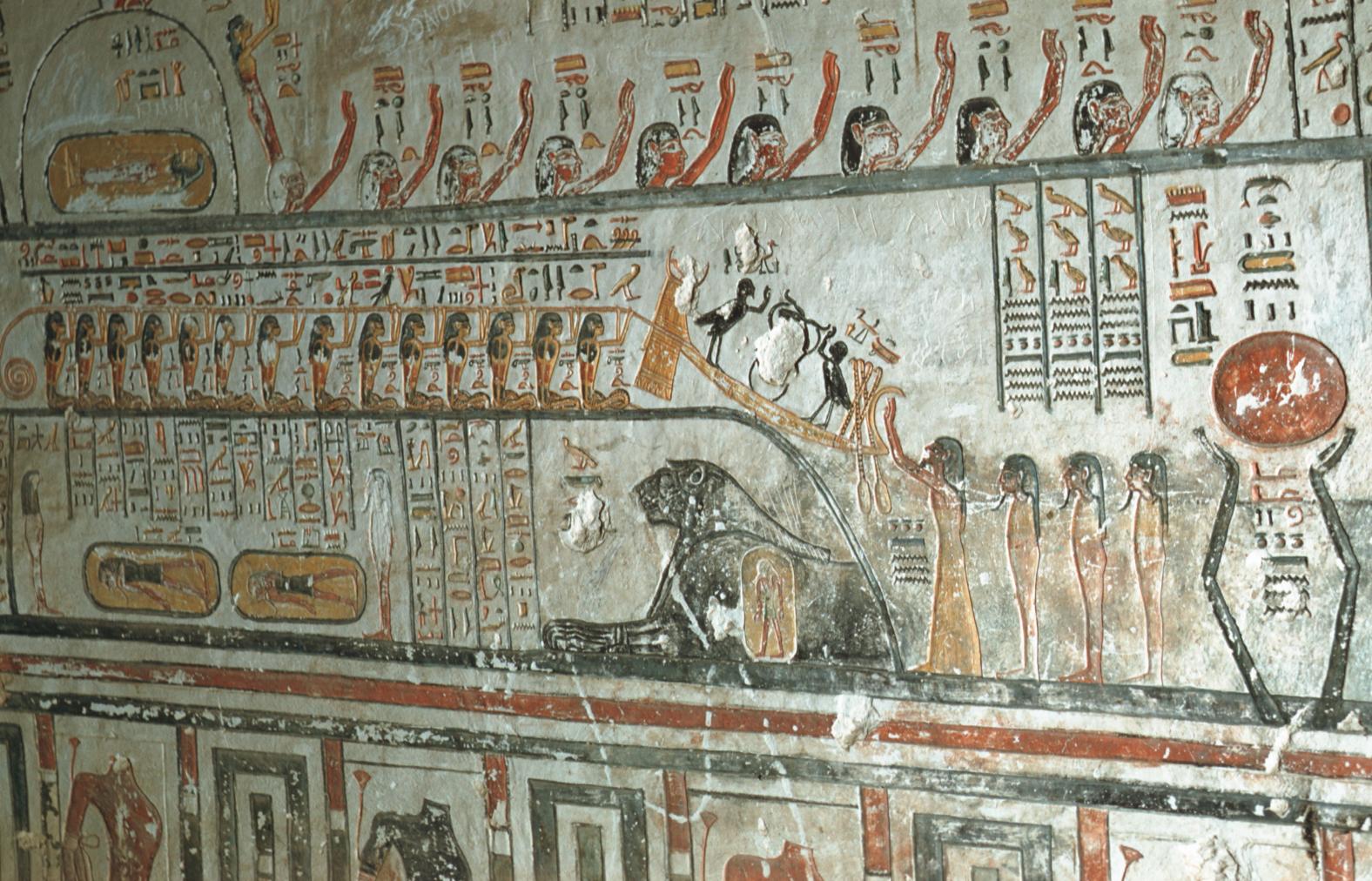
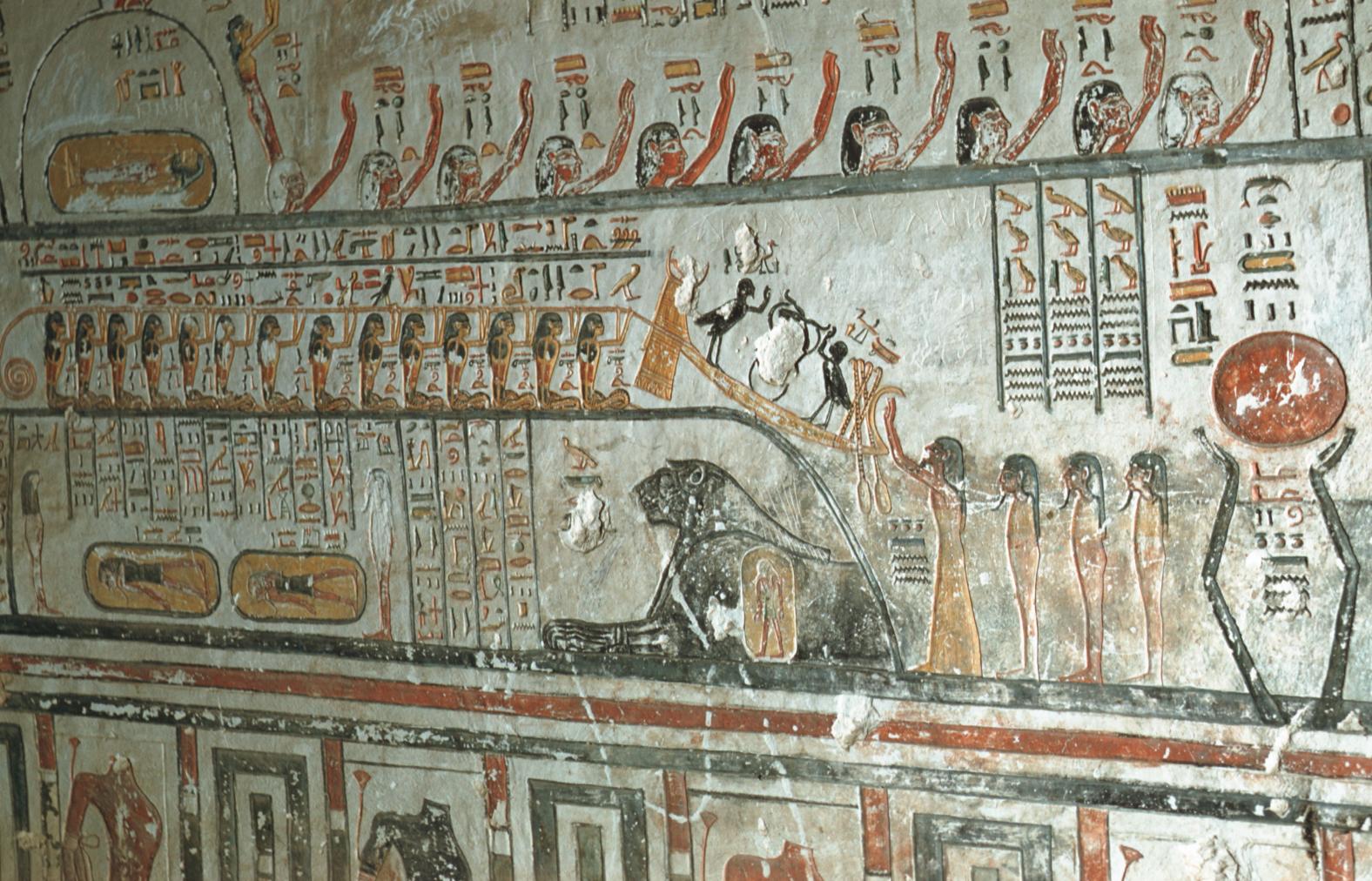
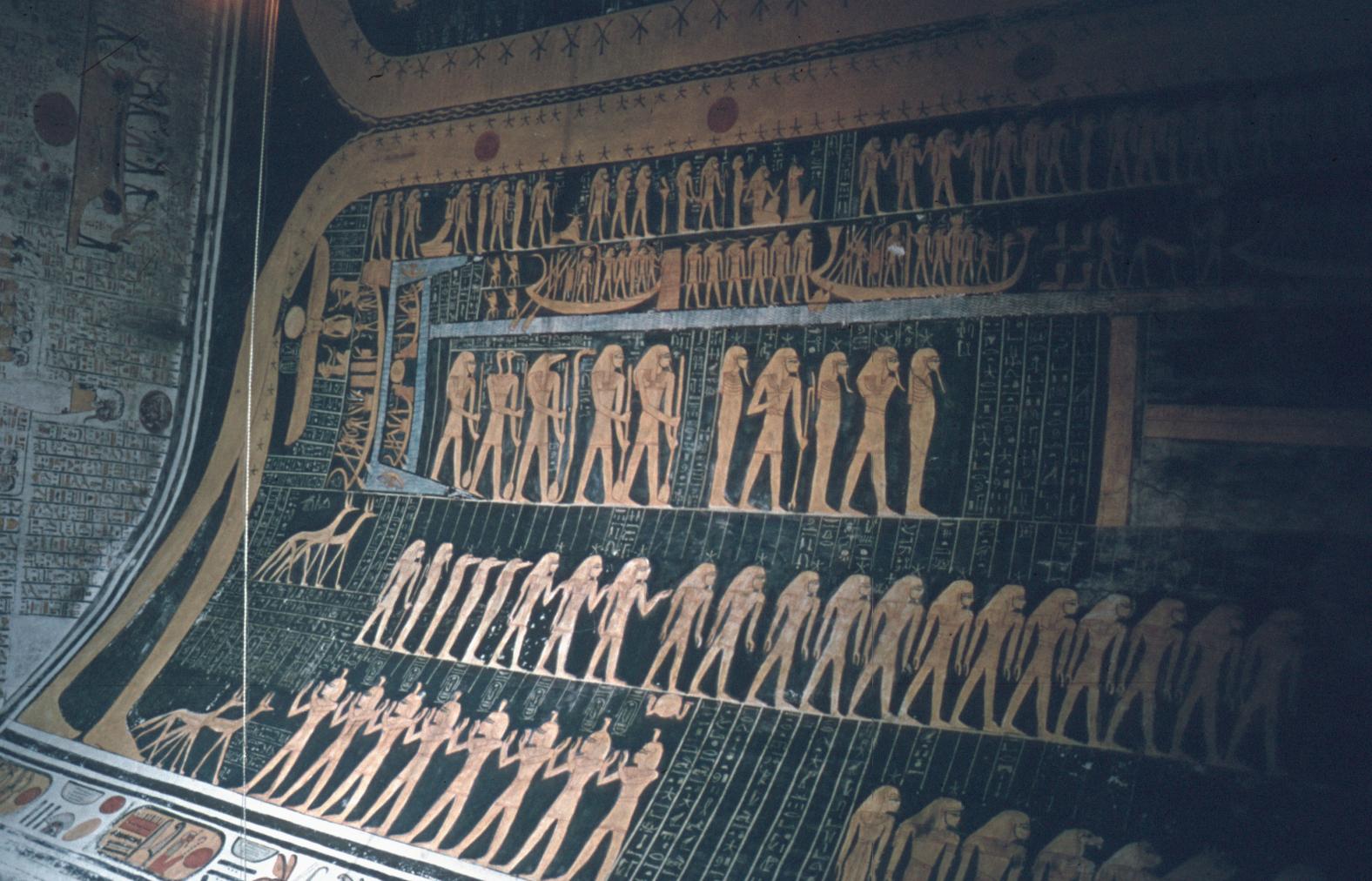
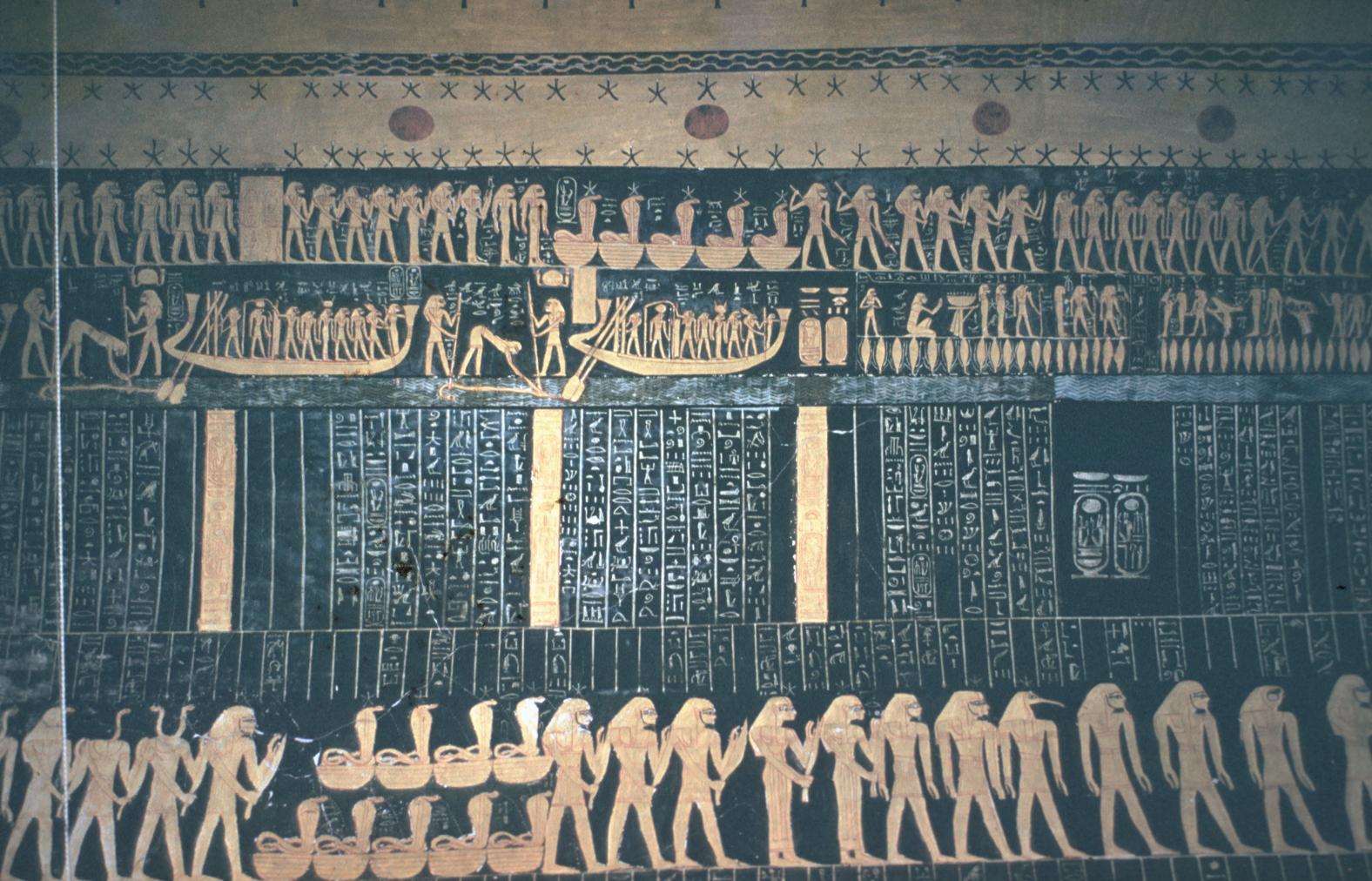
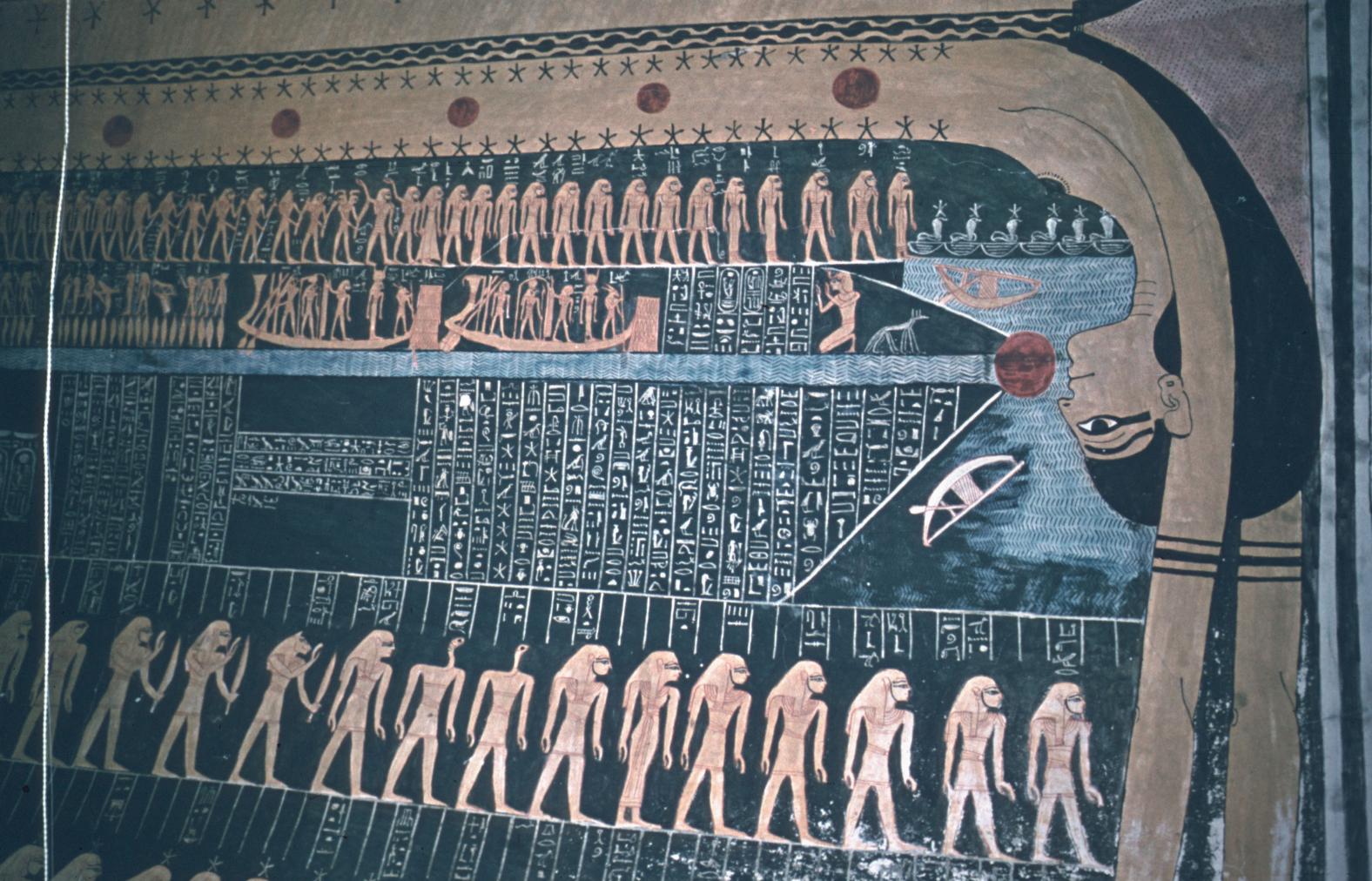
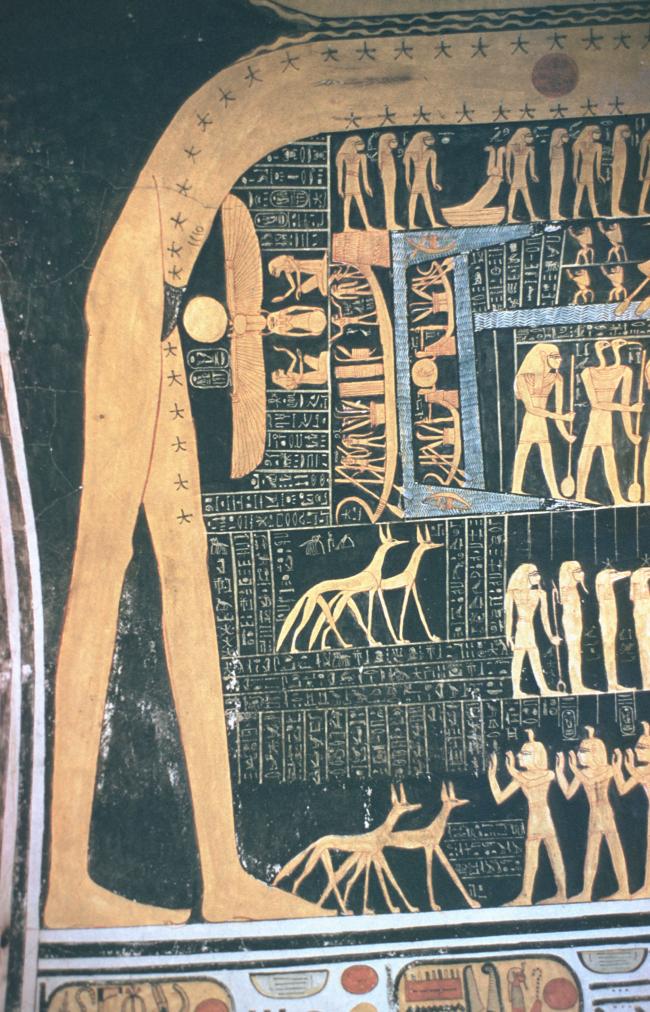
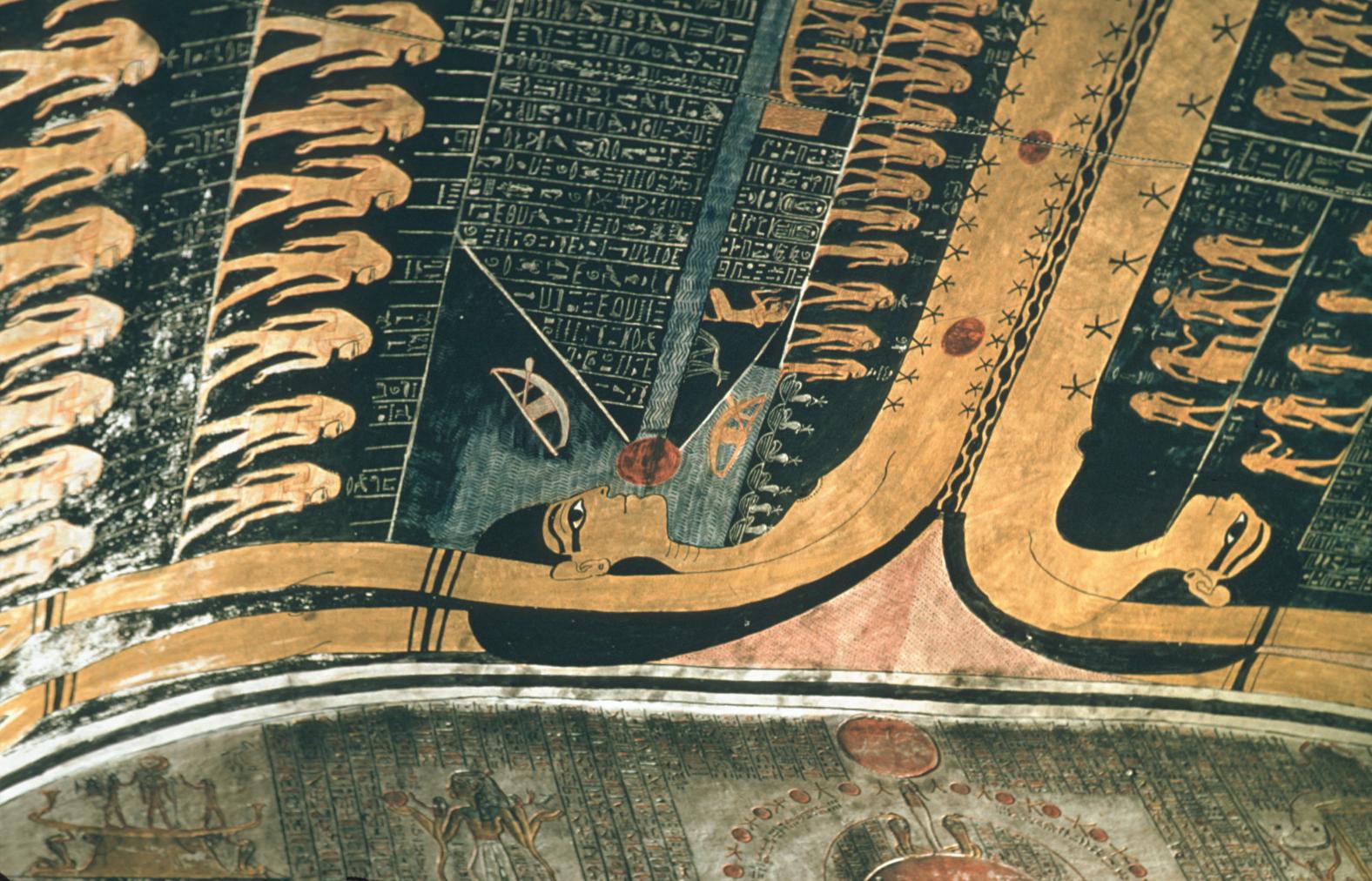
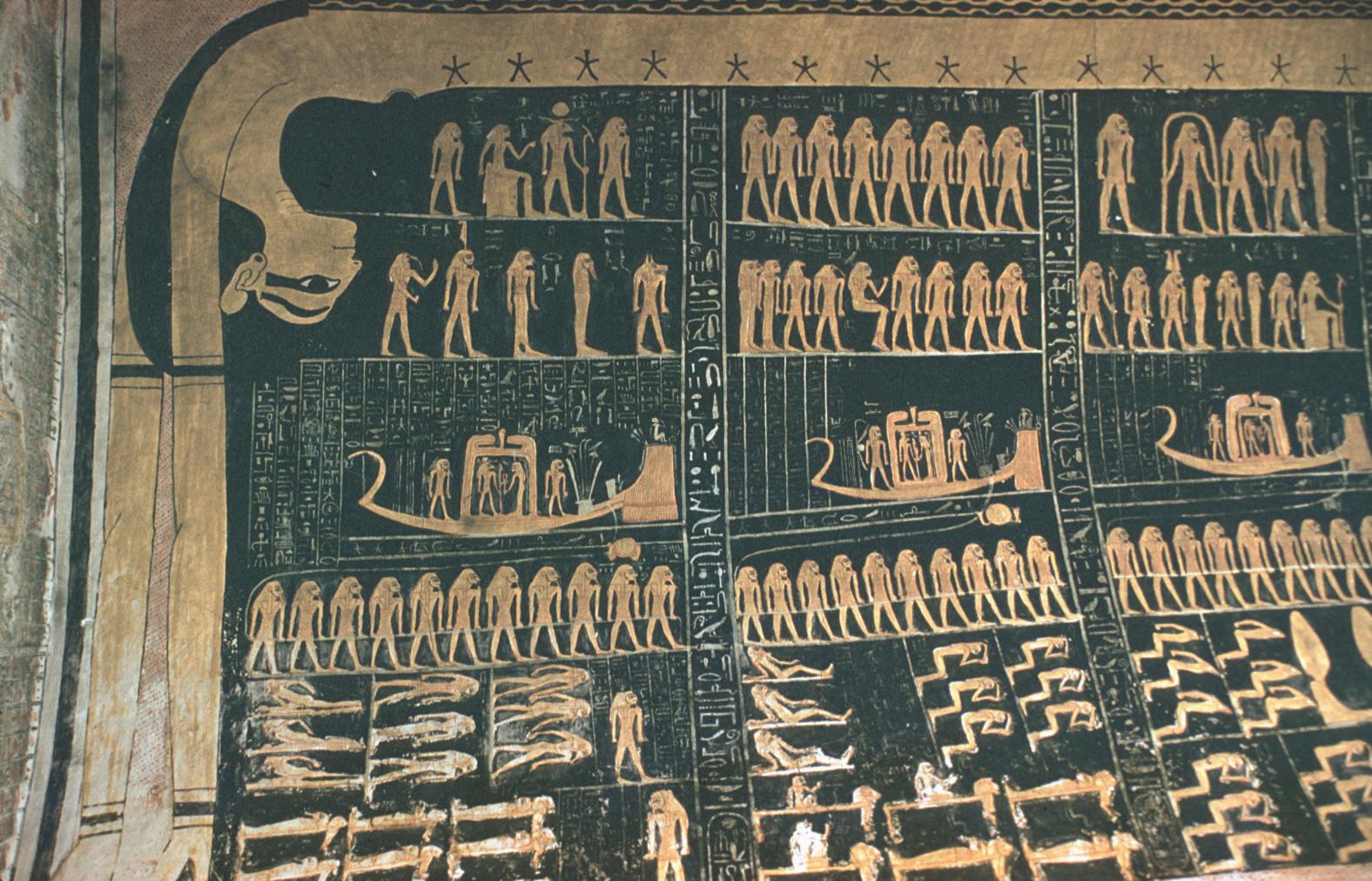
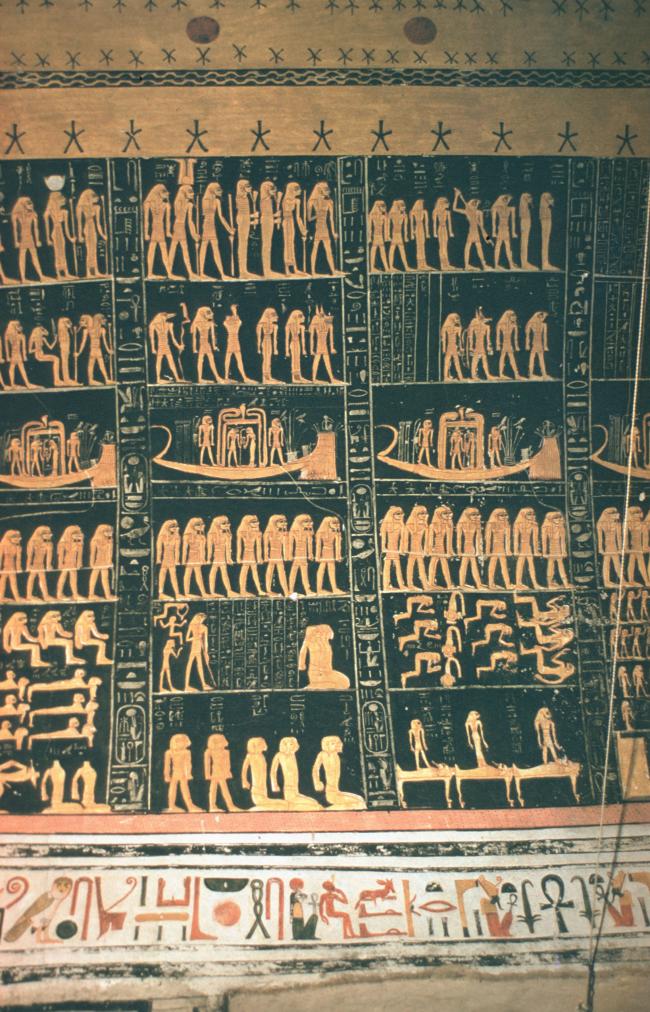
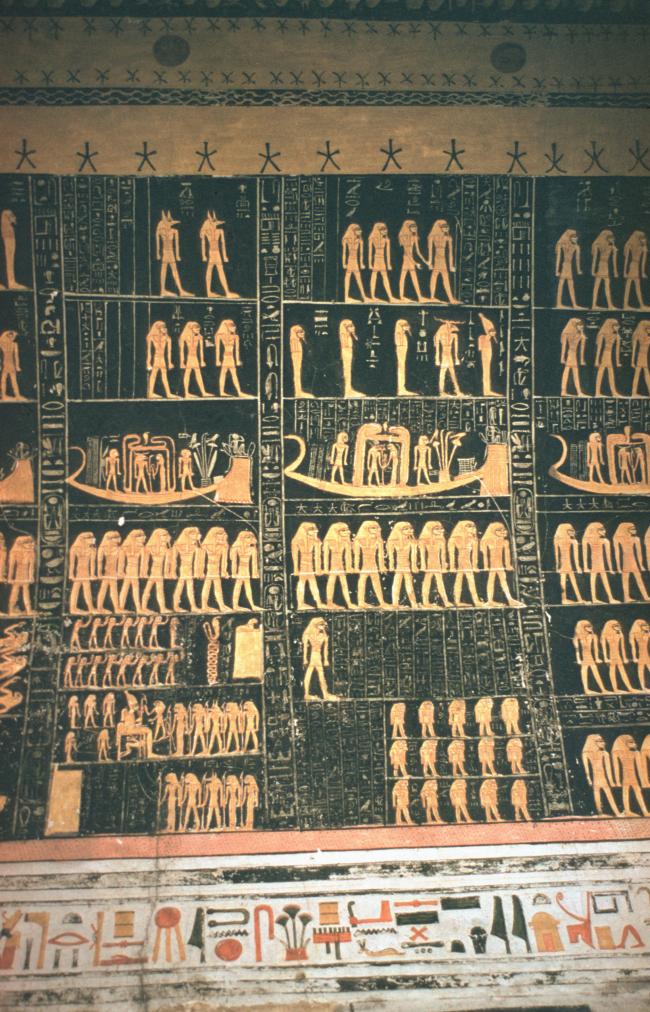
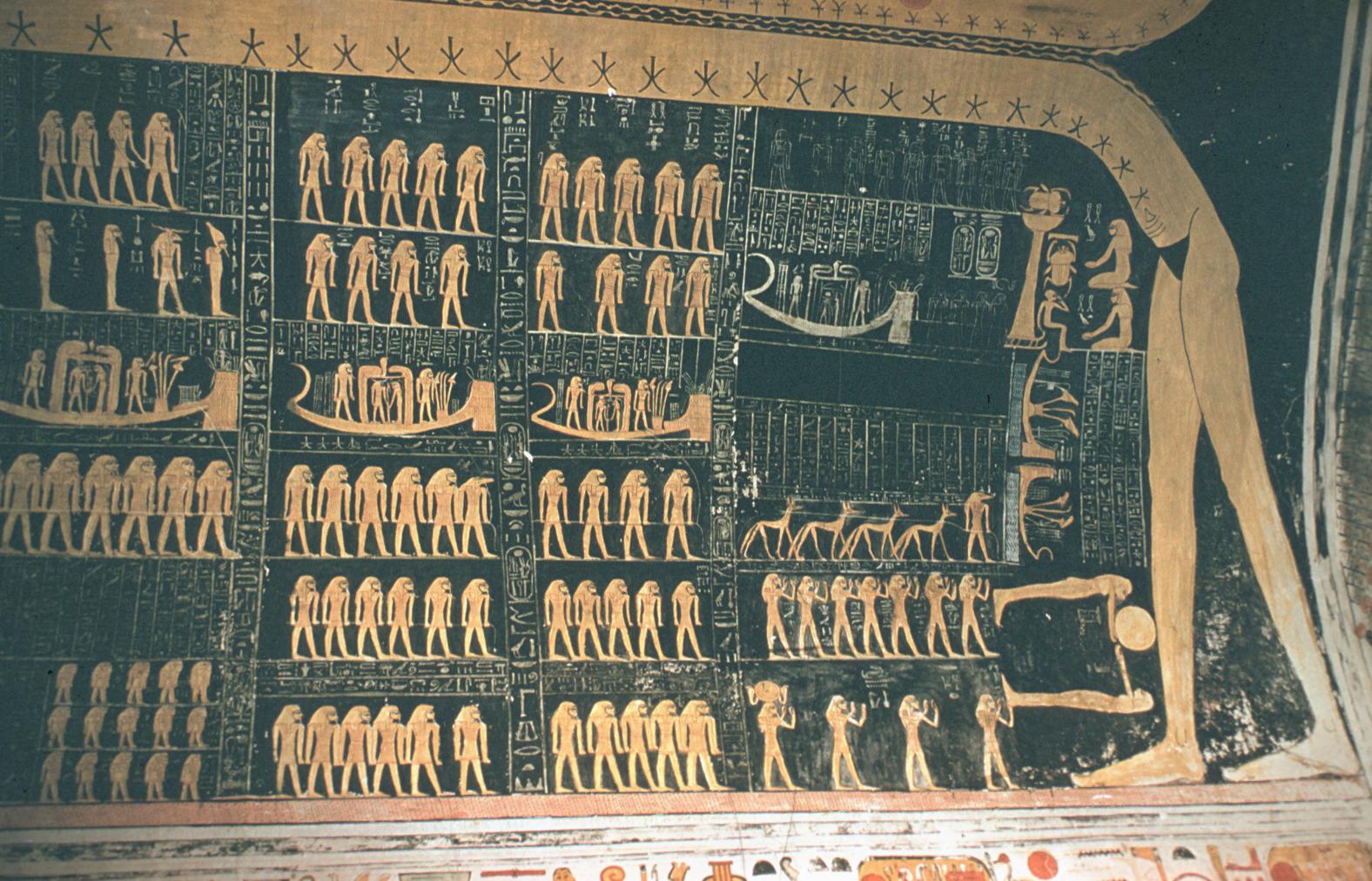
Chamber K
See entire tombThis chamber represents the end of the original axial cutting for the intended rear wall of chamber J, which was never completed. The rear (west) wall of this chamber contains an extract from the twelfth division (P)/closing scene (H) of the Book of Gates, Nun holding up the bark of Ra, and Rameses VI kneeling on each side with decans adoring on the left (south) and right (north) walls.
Porter and Moss designation:



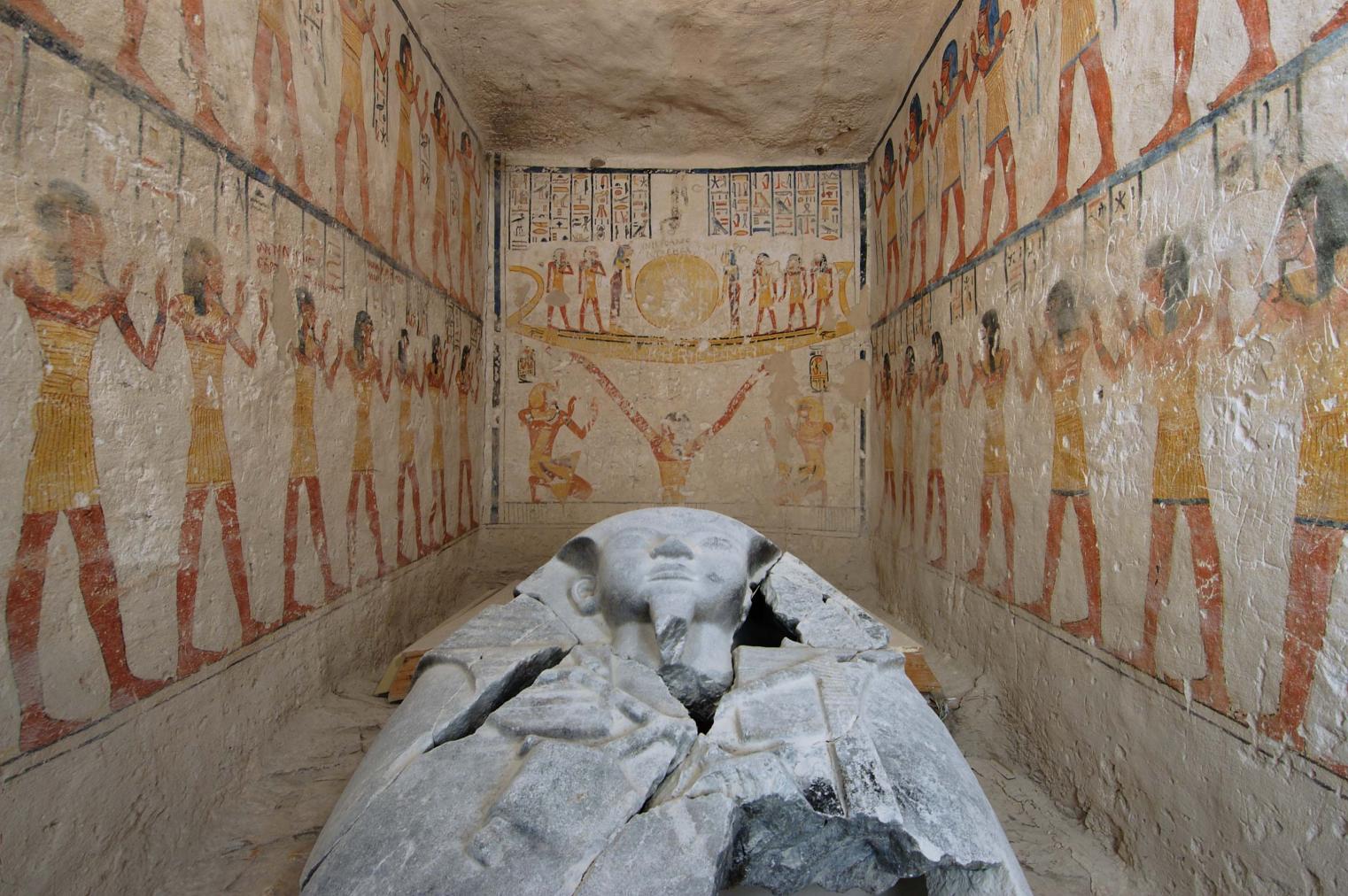
About
About
KV 9 is located off the main Wadi and consists of an entryway Ramp (A), three corridors (B, C, and D) followed by a chamber (E), a pillared chamber with central descent (F), two lower corridors (G and H), another chamber (I), a vaulted burial chamber (J), and another chamber at the rear (K).
The tomb is decorated in painted, sunk relief with scenes from the Book of Gates (corridor B, corridor C, corridor D, well chamber E, pillared chamber F, chamber K), Book of Caverns (corridor B, corridor C, corridor D, well chamber E, pillared chamber F), Book of the Heavenly Cow (corridor D), Book of the Dead (chamber I), Imydwat (descent F, corridor G, corridor H), Book of the Day (corridor D, corridor G, pillared chamber F, burial chamber J), Book of the Night (corridor D, corridor G, pillared chamber F, burial chamber J), Book of the Earth (burial chamber J), the deceased with deities (corridor B, pillared chamber F, burial chamber J), astronomical scenes (corridor B, corridor C), the resurrection of Osiris (chamber I), deities (descent F, chamber K), and enigmatic compositions (corridor G, corridor H, gate I). Nearly a thousand graffiti in Greek, Latin, and Coptic are written over the scenes.
The jambs of gate B through gate F were originally inscribed for Rameses V but were re-carved by Rameses VI. These areas and the remaining chambers were finally inscribed for Rameses VI. When the lower corridors and chambers were being cut, workmen accidentally broke into the rear chamber of KV 12. KV 9 is well-preserved.
Noteworthy features:
There is a pit in the floor of burial chamber J, which was never finished. Pilasters in the rear wall of the burial chamber are unfinished pillar cuttings, and wide platforms represent the unfinished cutting of the central sunken floor. The tomb as a whole is decorated with a wide variety of texts and scenes.
Site History
Rameses V started the construction of KV 9, cutting from the entrance through chamber E. Rameses VI finished the excavation of the tomb, decorating the new sections with his own name and image, and usurping representations and cartouches of Rameses V in the first five corridors.
It is not known whether Rameses VI removed the body of Rameses V, or if the two kings shared the tomb. KV 9 has been open since antiquity. Papyrus Mayer B records thefts in KV 9, and a graffito dated to regnal year 9 of Rameses IX on the ceiling of the burial chamber J may refer to the inspection of the tomb after it was reported robbed.
Dating
This site was used during the following period(s):
Exploration
Conservation
Conservation History
Supreme Council of Antiquities conservation technicians have cleaned the decoration and consolidated the plaster, including infilling of cracks and breaks with plaster. Fluorescent lighting and wooden walkways with railings have been installed. The American Research Center in Egypt also funded work to reconstruct the shattered inner Sarcophagus of Rameses VI, which is on display in the burial chamber.
Site Condition
The wall reliefs in KV 9 are well-preserved, and there is little flood damage in the tomb.
Hieroglyphs
Rameses V
 King of Upper and Lower Egypt, Powerful is the Justice of Ra, Brought Into Being by Ra, Son of Ra, Born of Ra, Amen is Over His Strong Arm, Beloved of Amen
niswt-bity wAsr-mAat-Raw sxpr-n-Raw sA-Raw Raw-msw Imn-Hr-xpS.f mry-Imn
King of Upper and Lower Egypt, Powerful is the Justice of Ra, Brought Into Being by Ra, Son of Ra, Born of Ra, Amen is Over His Strong Arm, Beloved of Amen
niswt-bity wAsr-mAat-Raw sxpr-n-Raw sA-Raw Raw-msw Imn-Hr-xpS.f mry-Imn
Rameses VI
 King of Upper and Lower Egypt, Lord of the Justice of Ra, Beloved of Amen, Son of Ra, Born of Ra, Amen is Over His Strong Arm, Ruling God of Heliopolis
niswt-bity nb-mAat-Raw mry-Imn sA-Raw Raw-msw Imn-Hr-xpS.f HqA-nTr-Iwnw
King of Upper and Lower Egypt, Lord of the Justice of Ra, Beloved of Amen, Son of Ra, Born of Ra, Amen is Over His Strong Arm, Ruling God of Heliopolis
niswt-bity nb-mAat-Raw mry-Imn sA-Raw Raw-msw Imn-Hr-xpS.f HqA-nTr-Iwnw
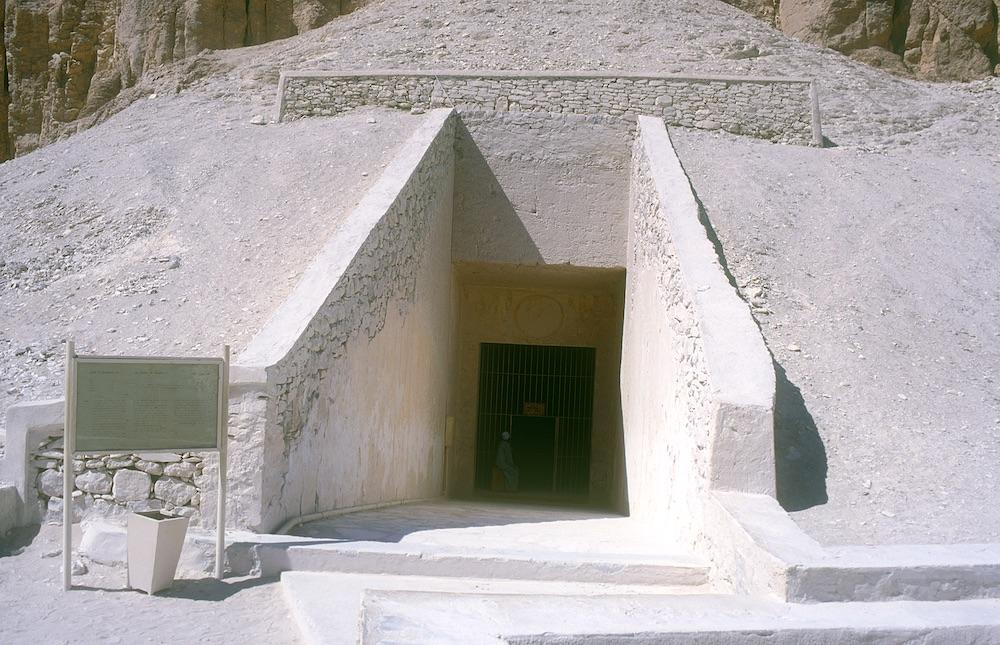








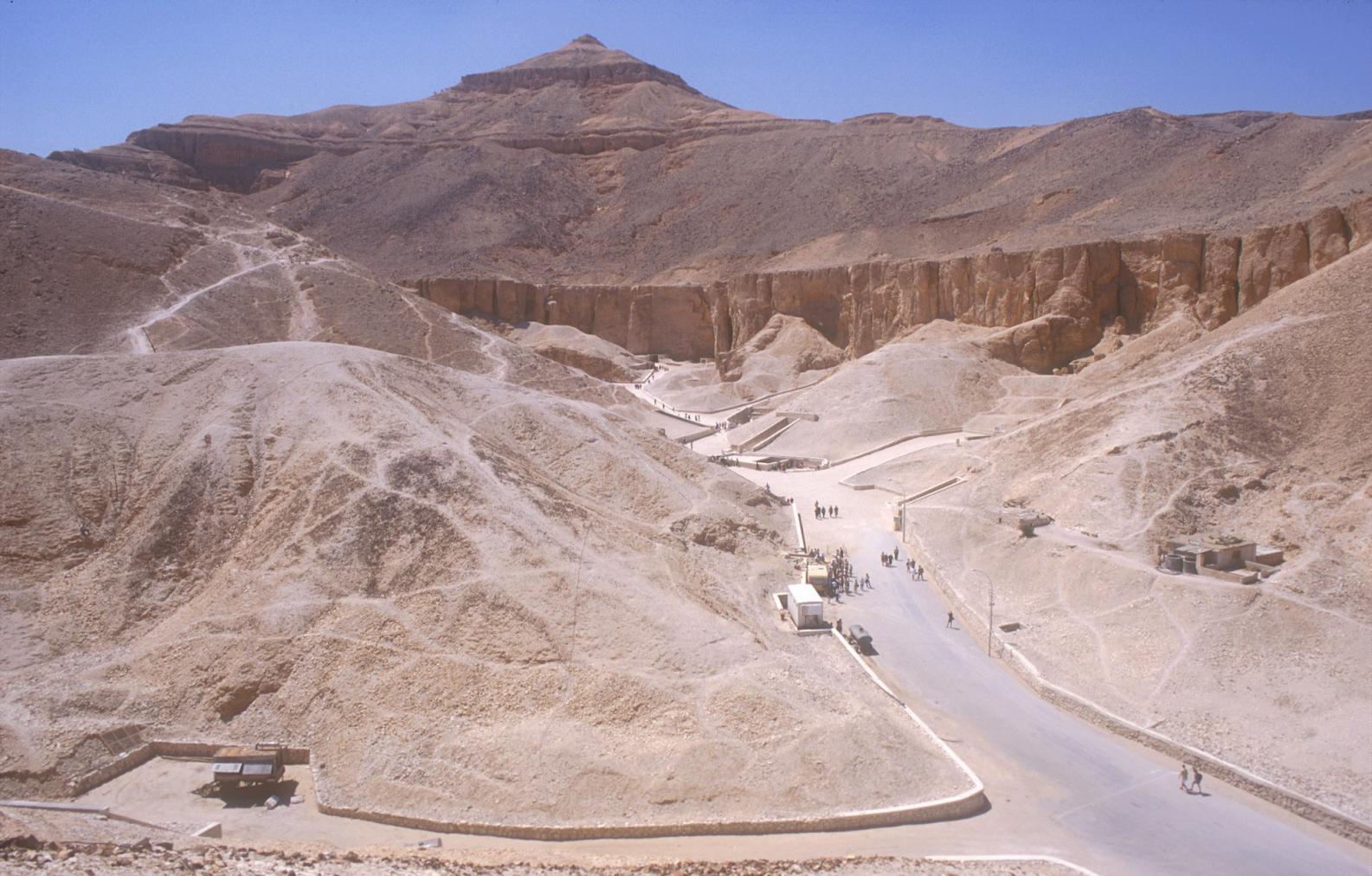





















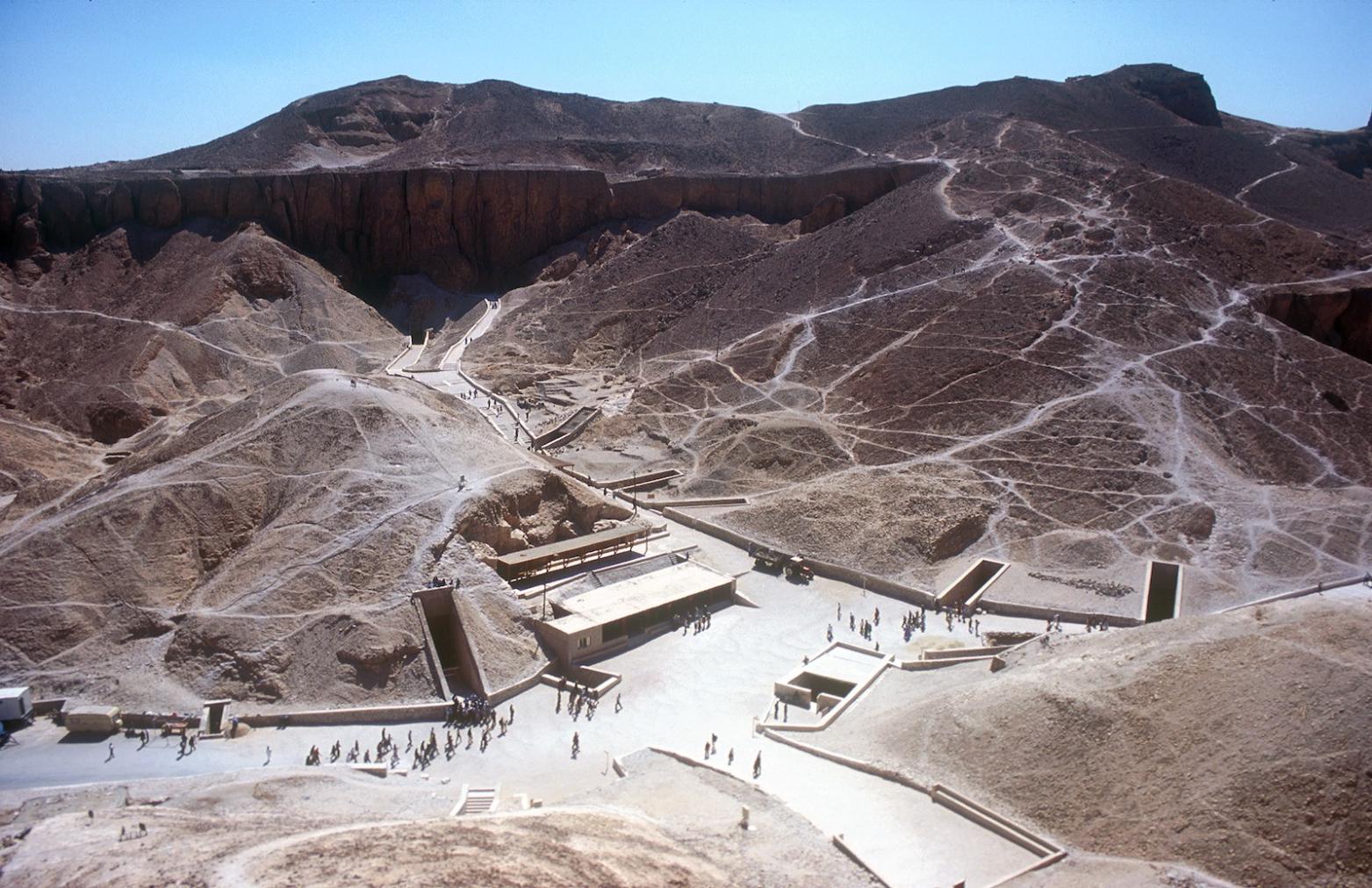
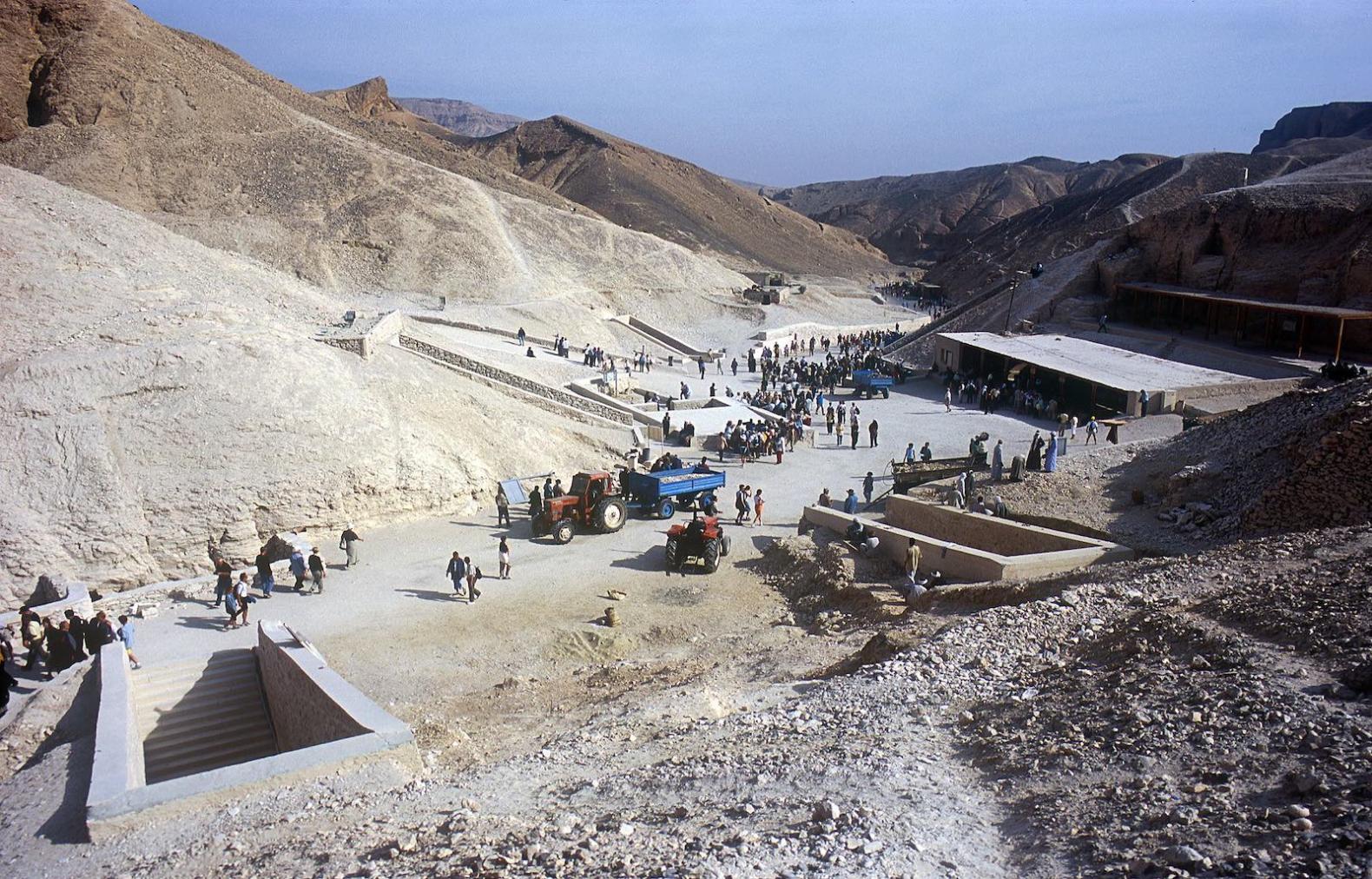


















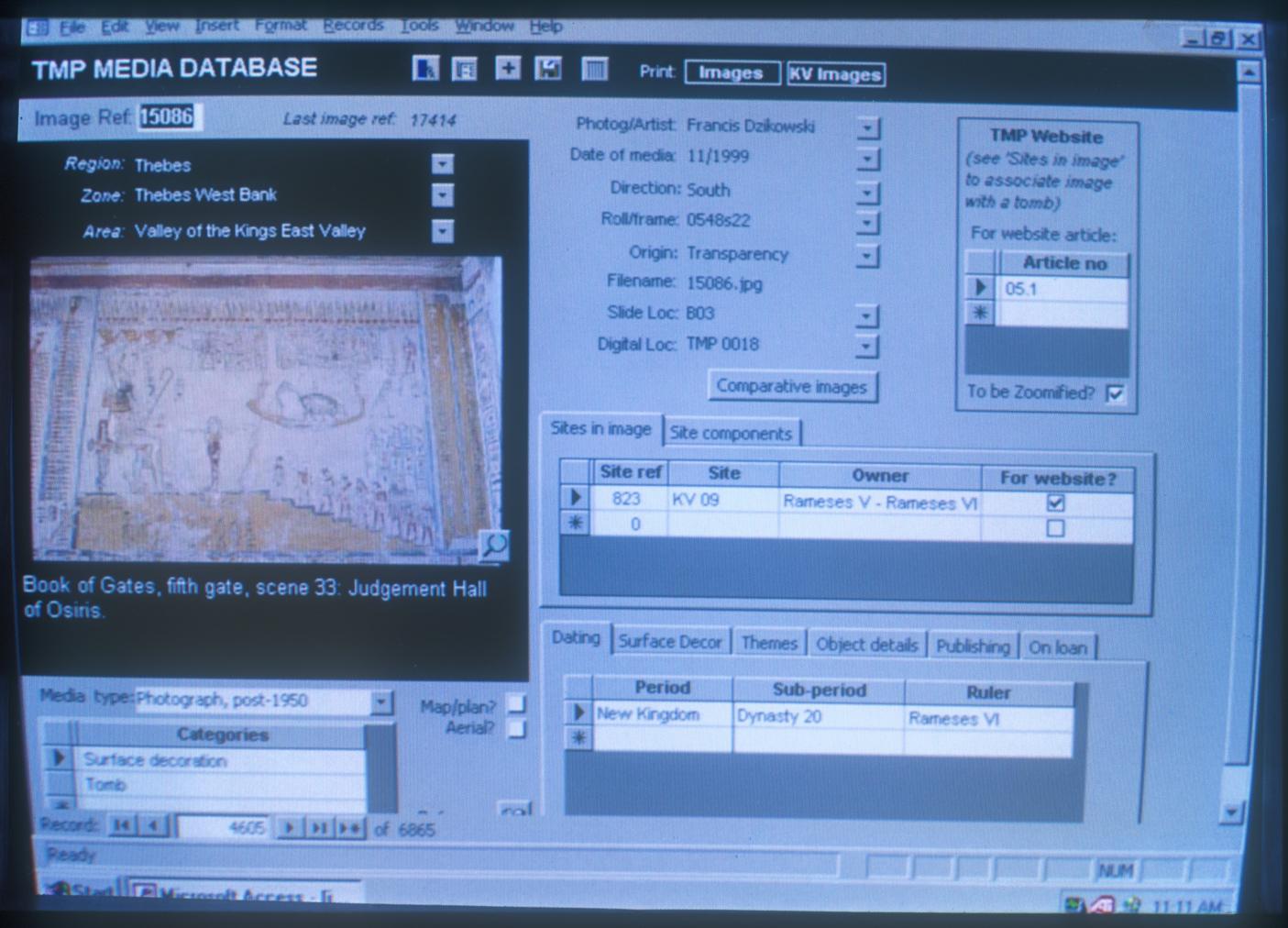
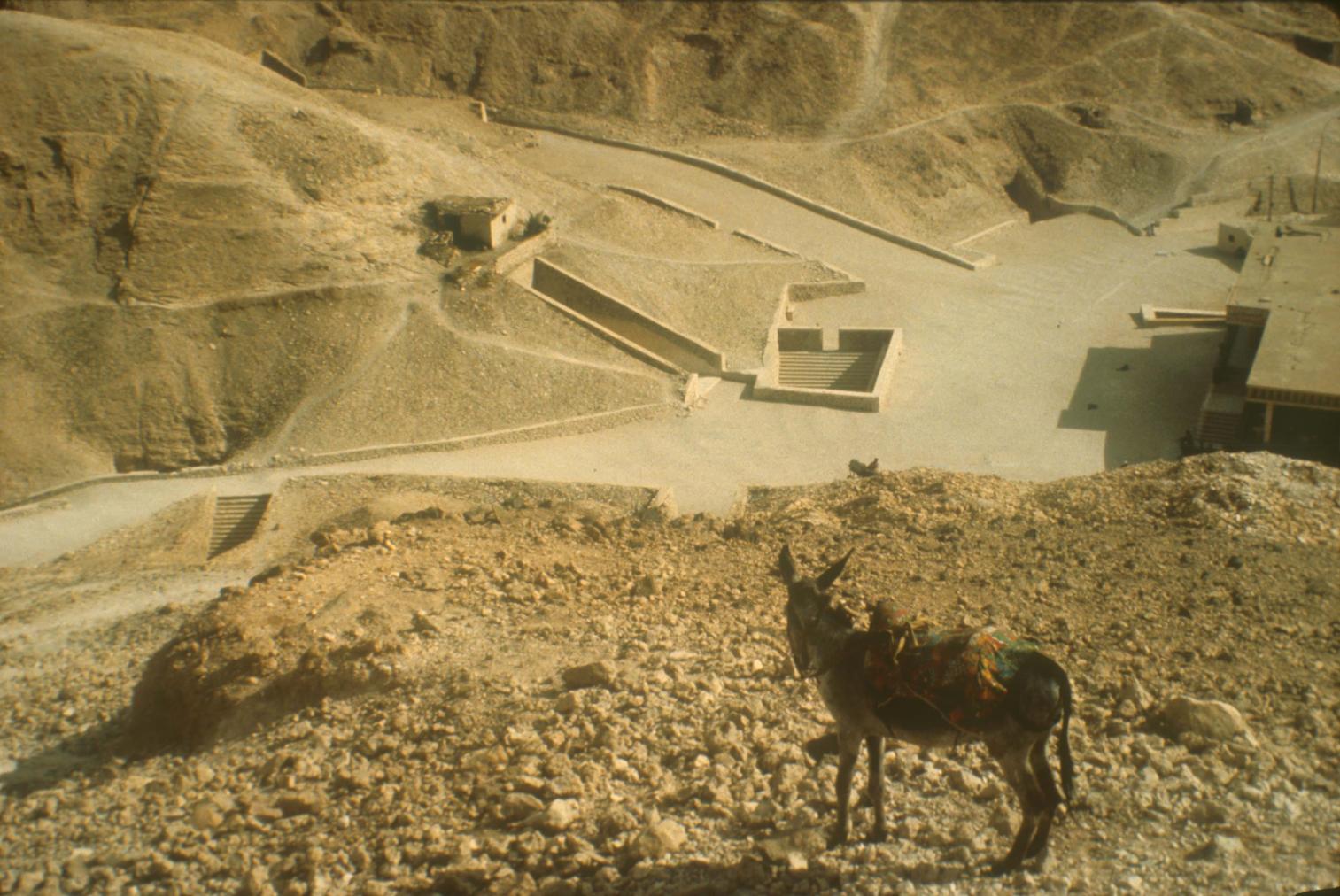
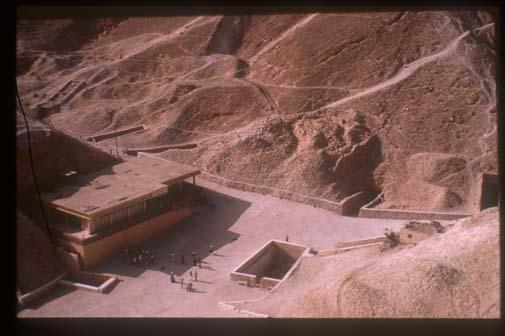
Old rest house, KV 18, KV 17, KV 16, KV 55, KV 62, KV 9, KV 10 and KV 11.



















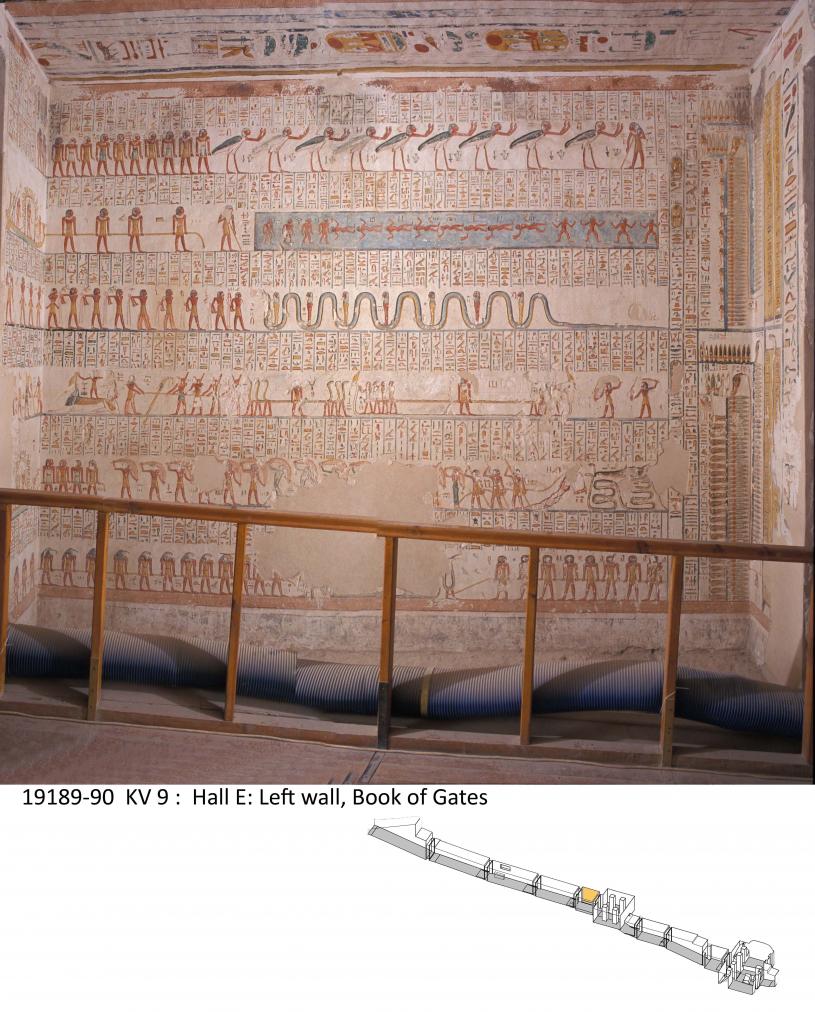
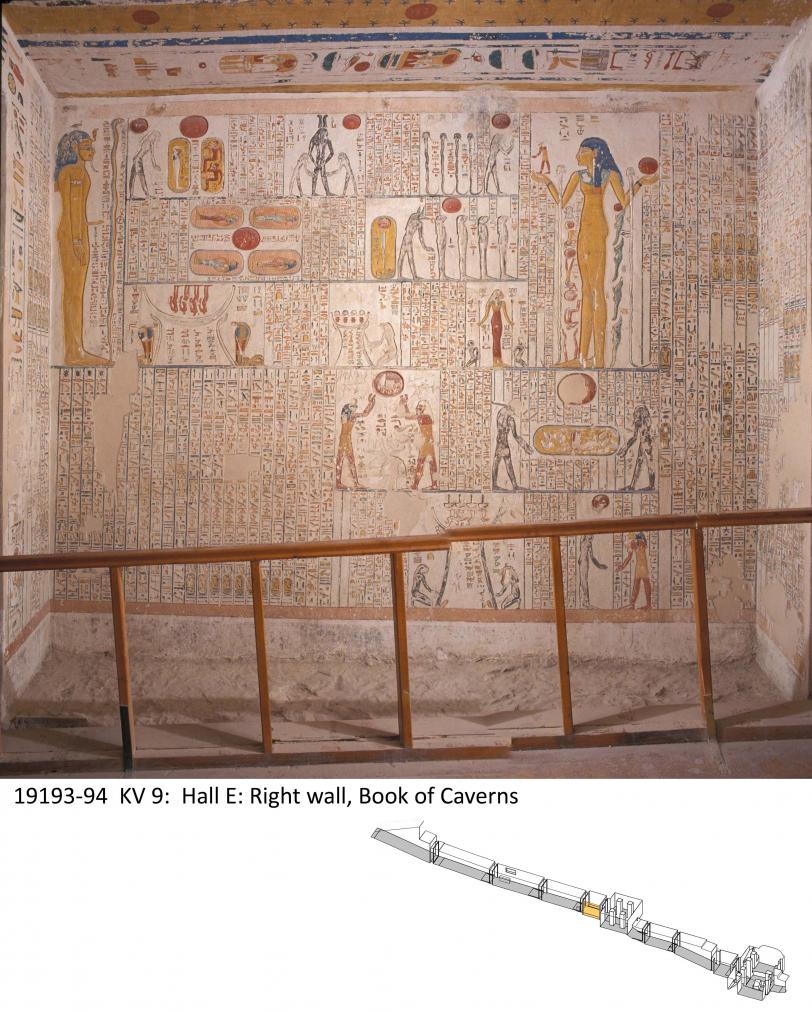
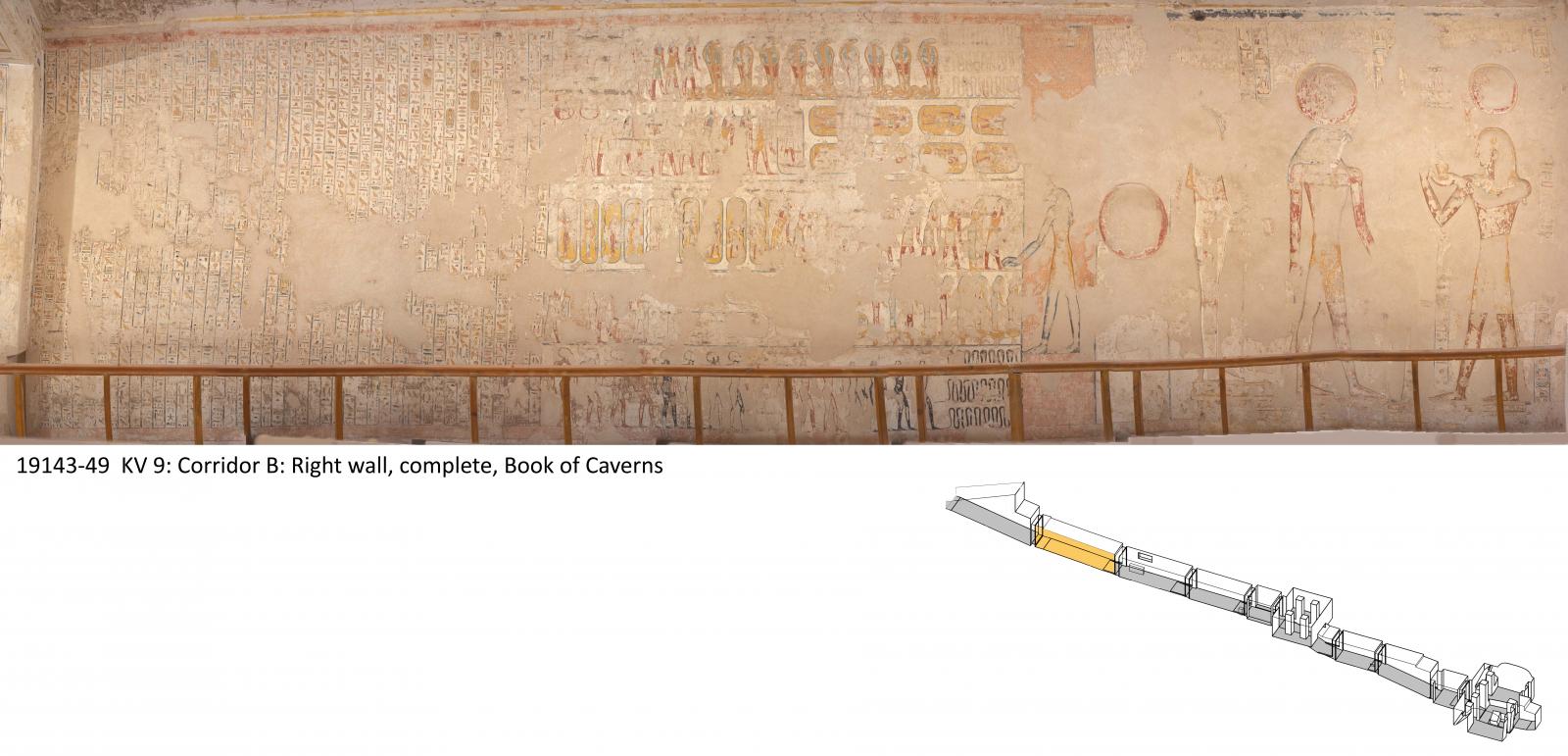
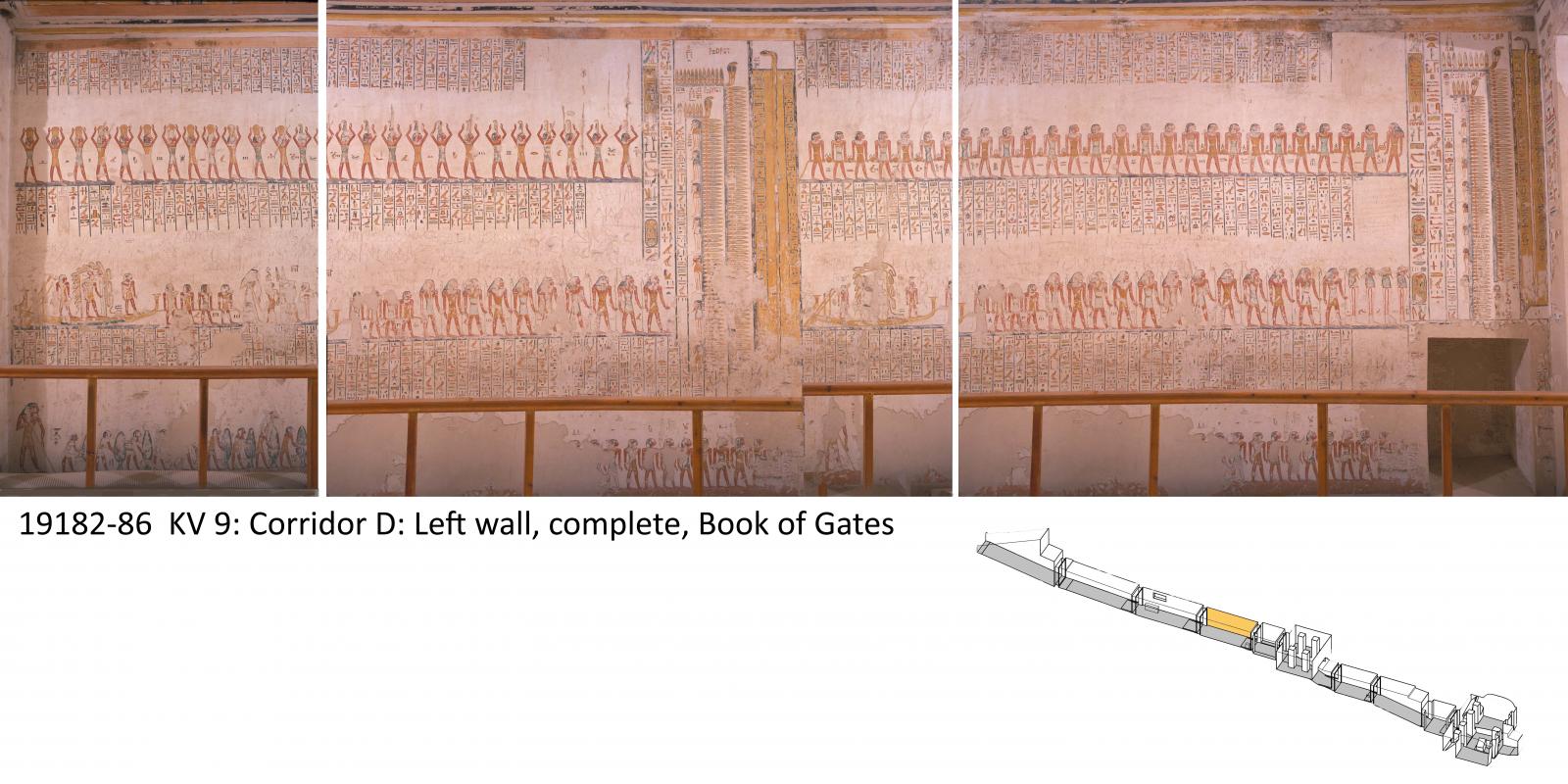
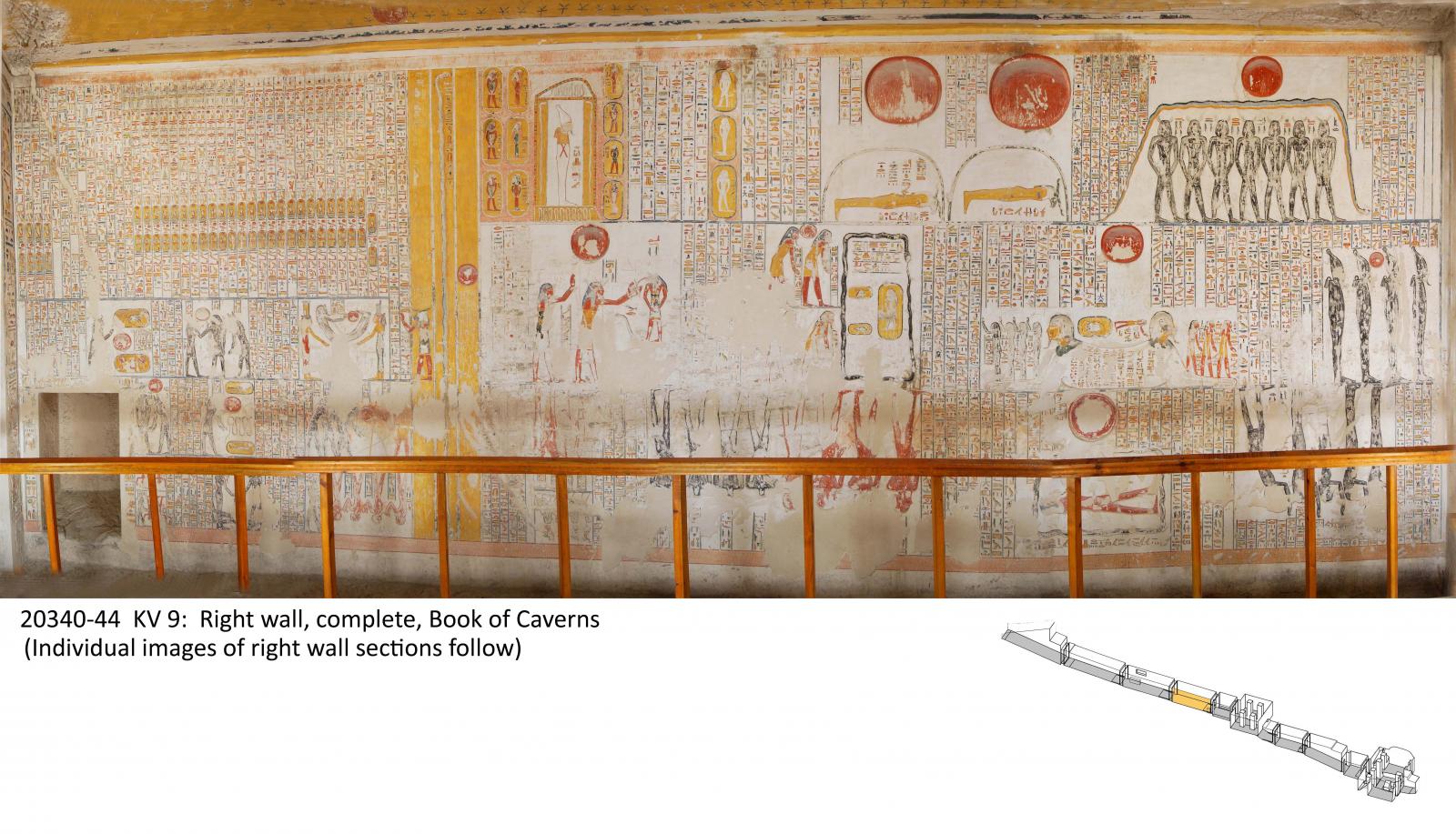
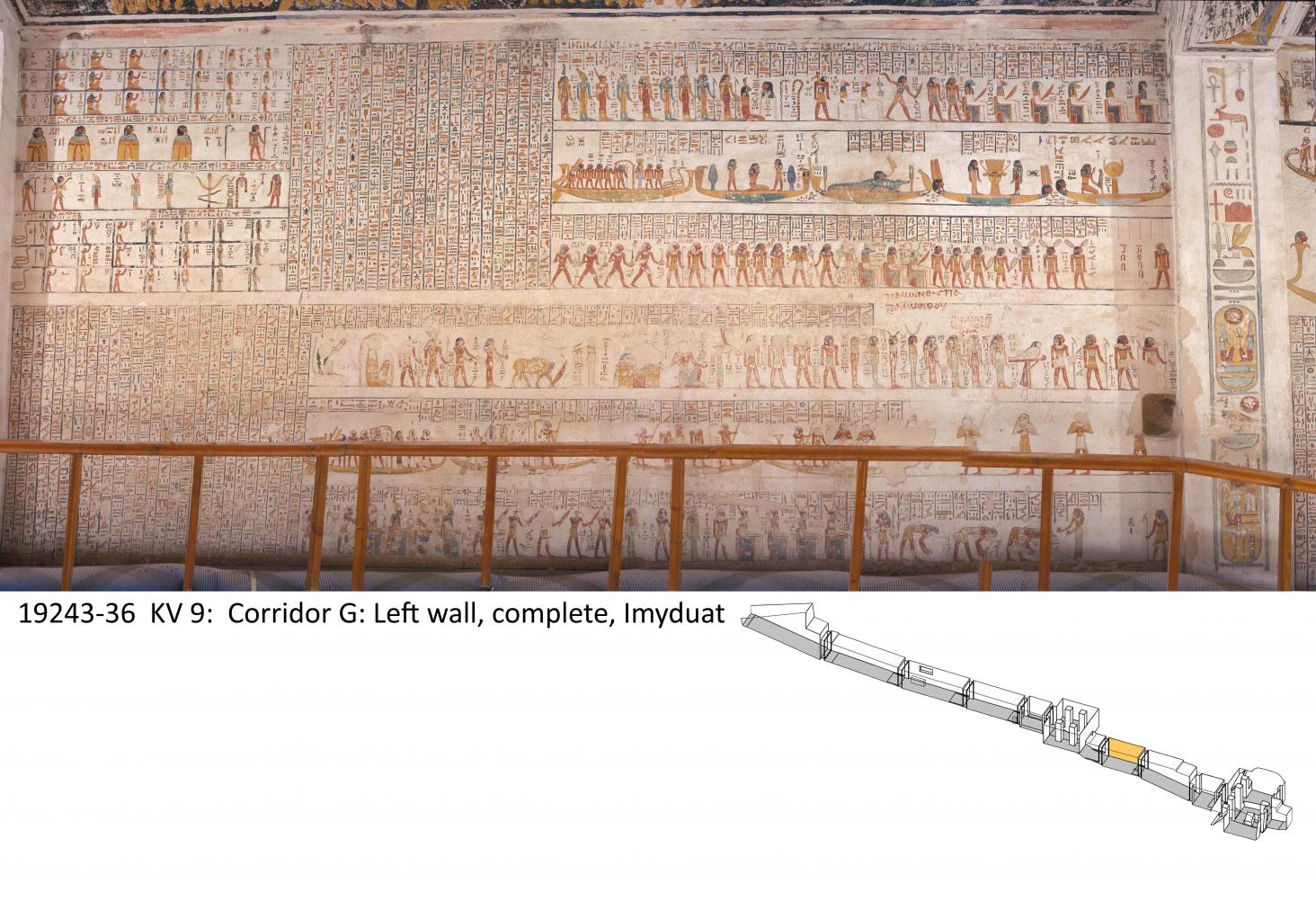
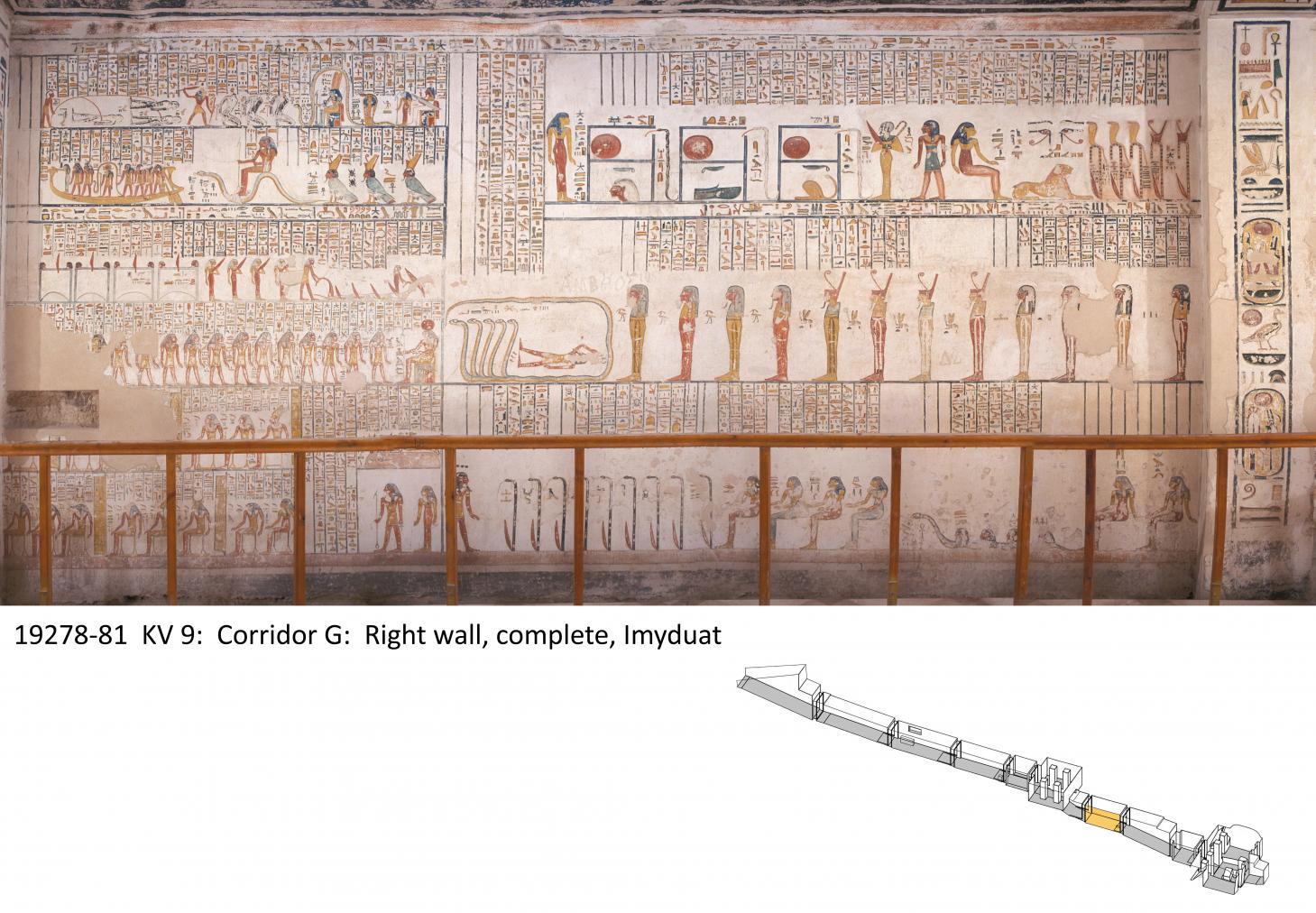



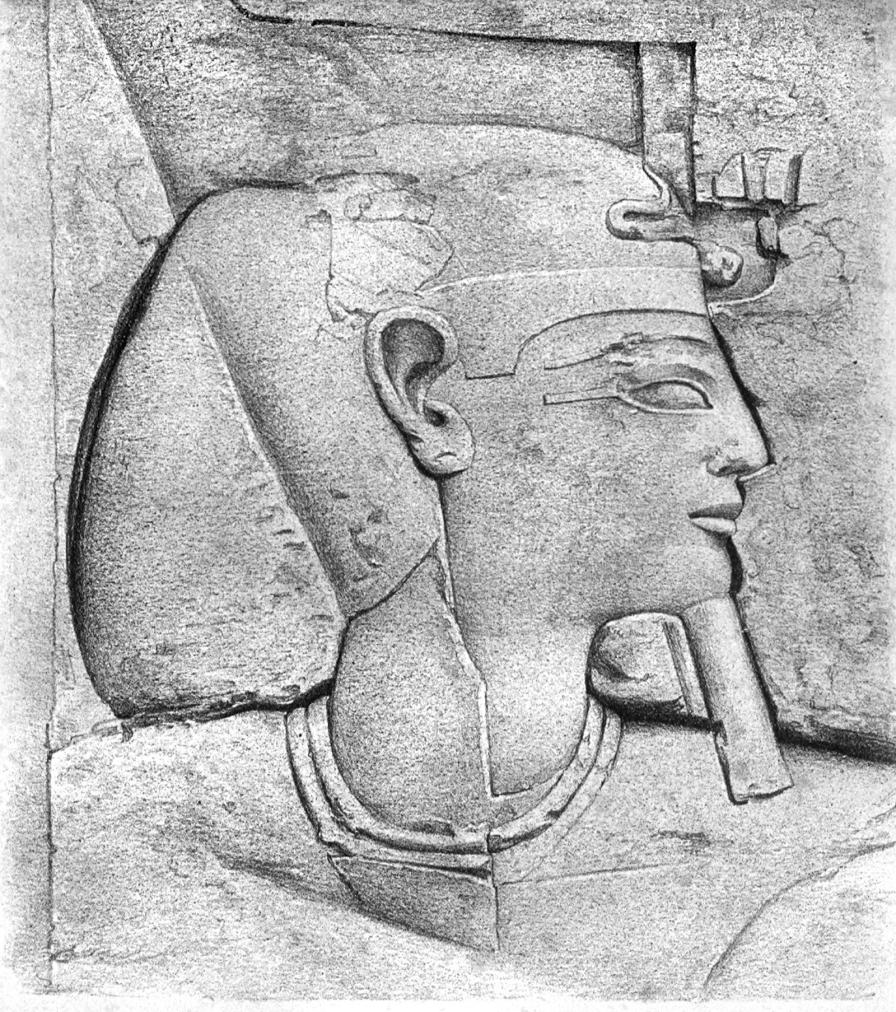

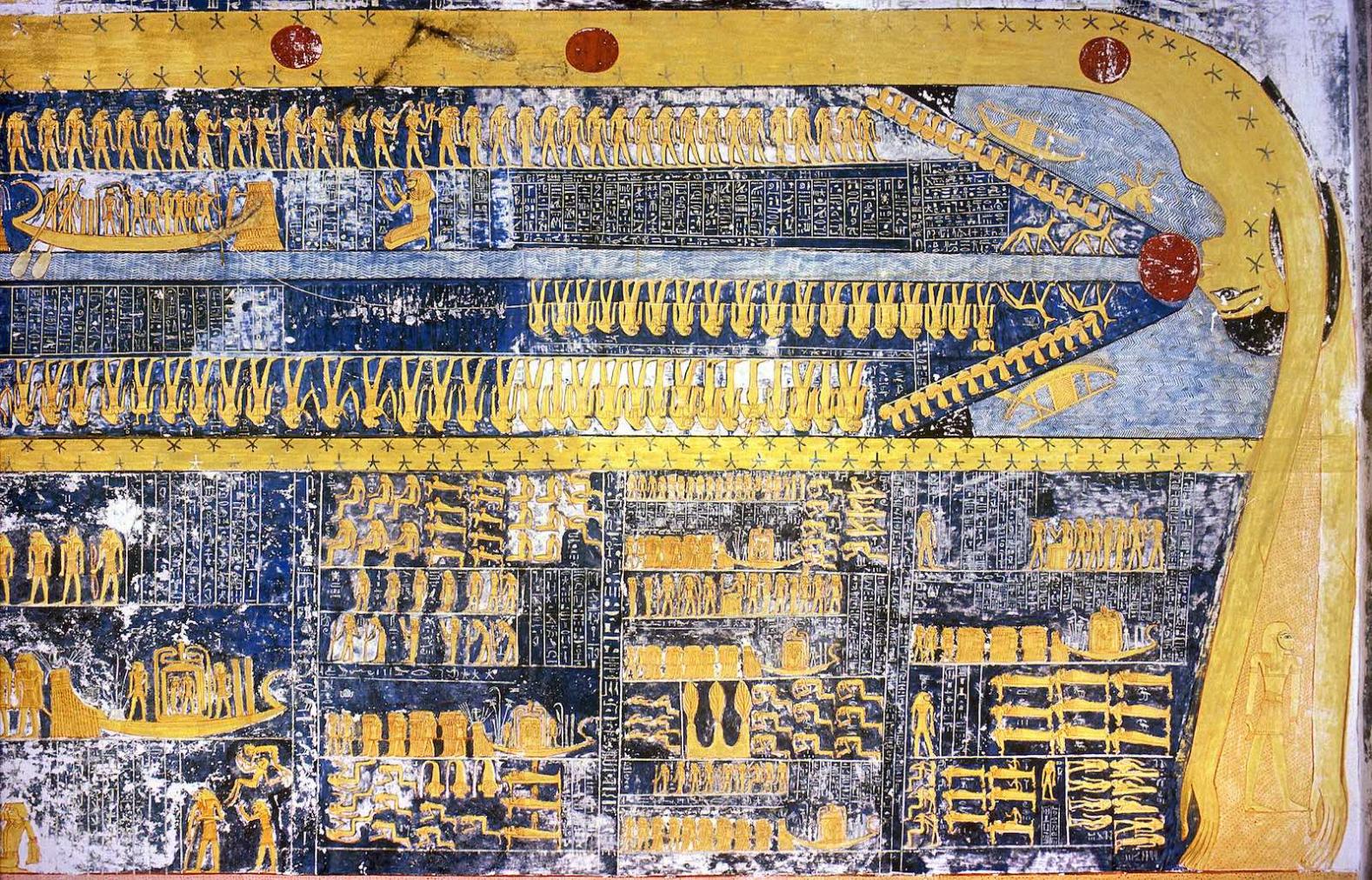

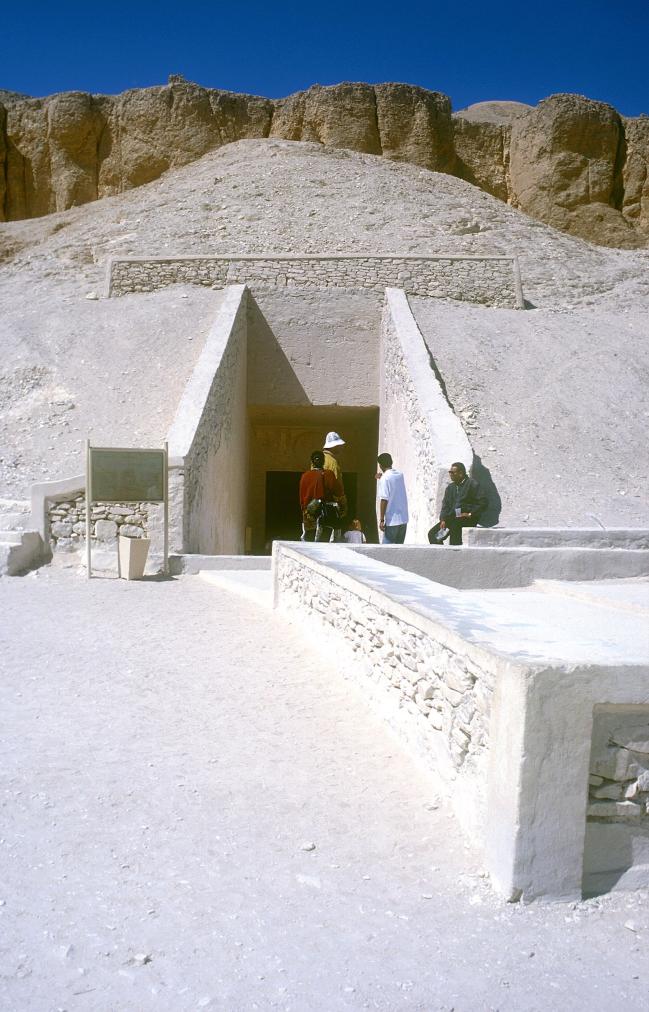
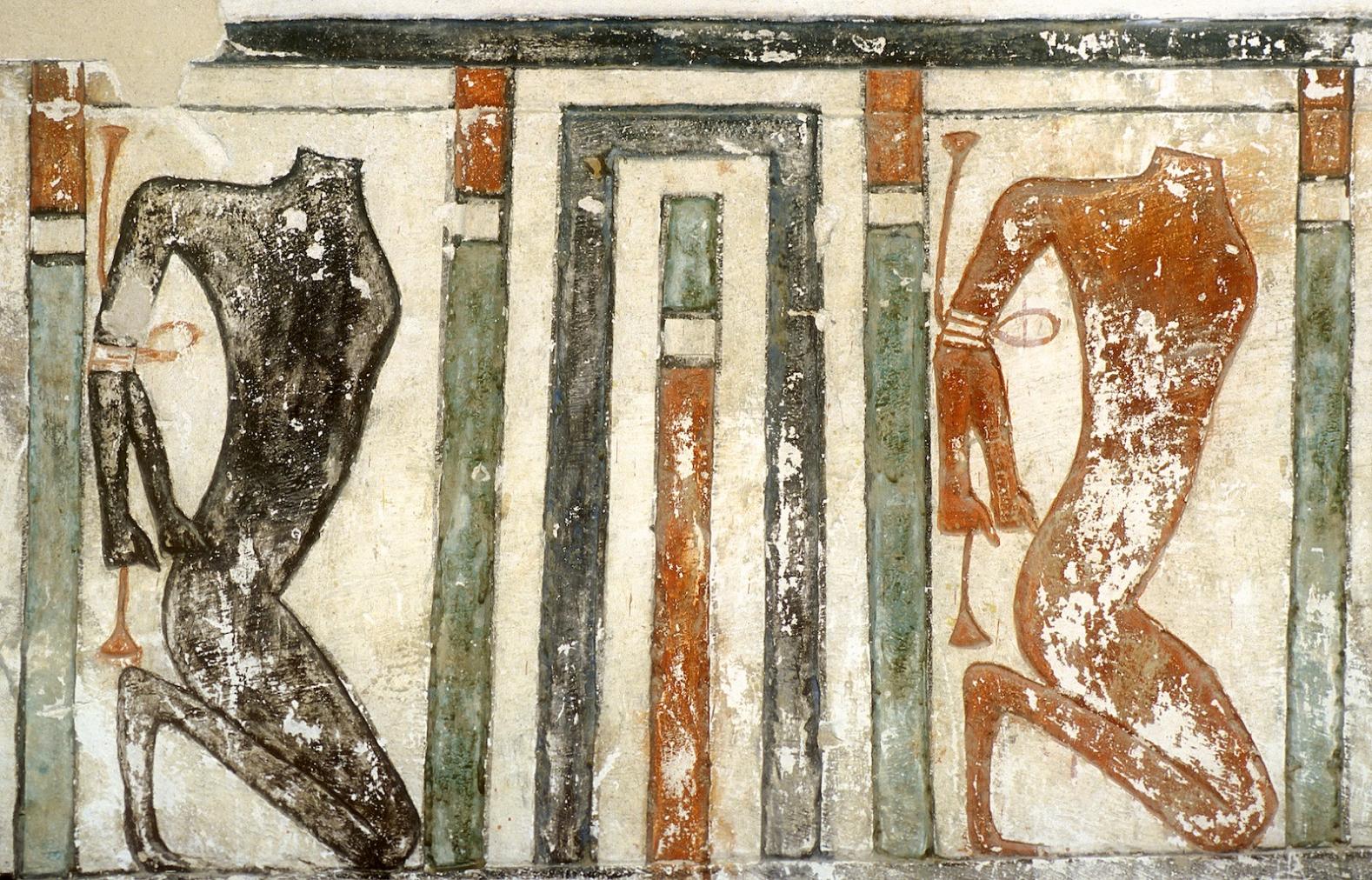














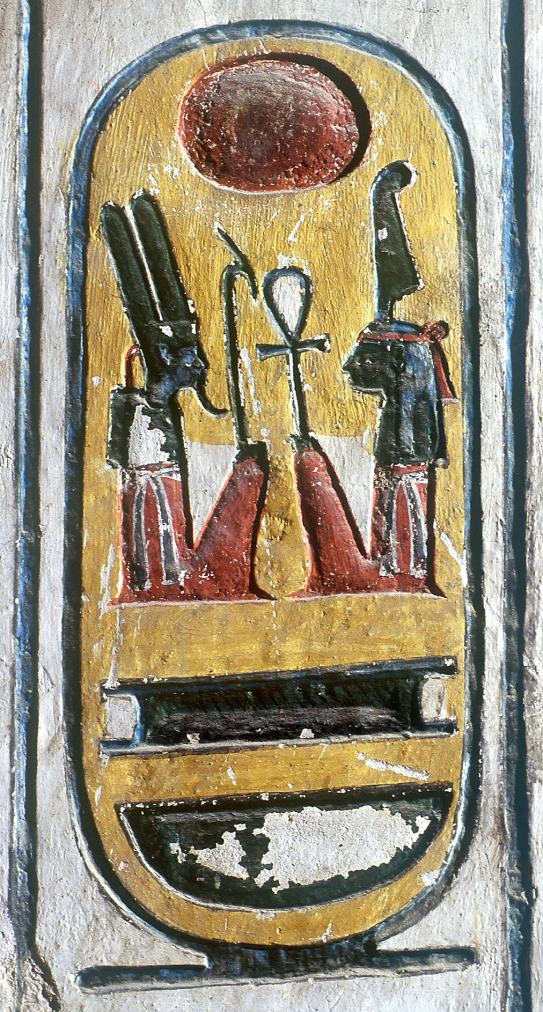












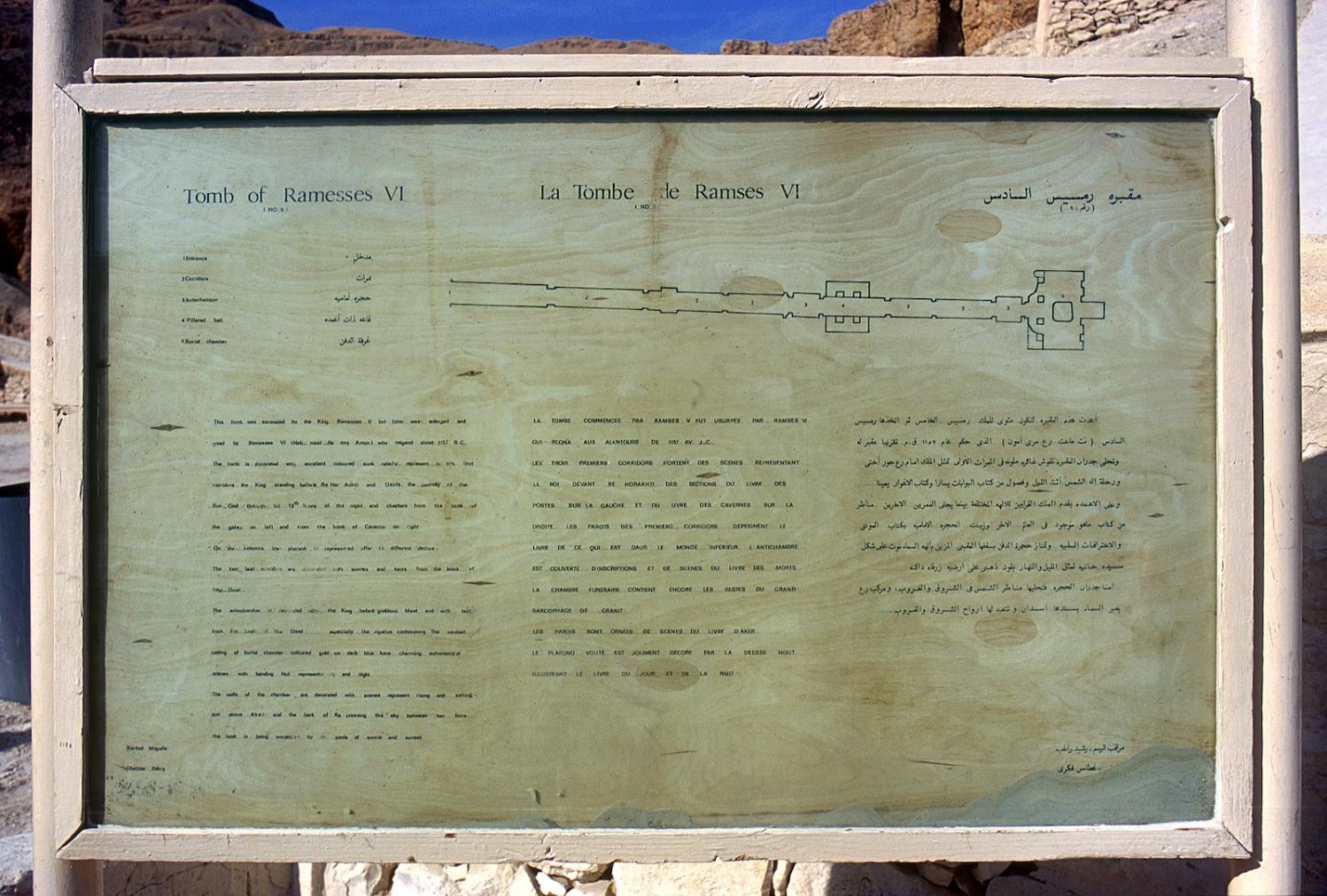


























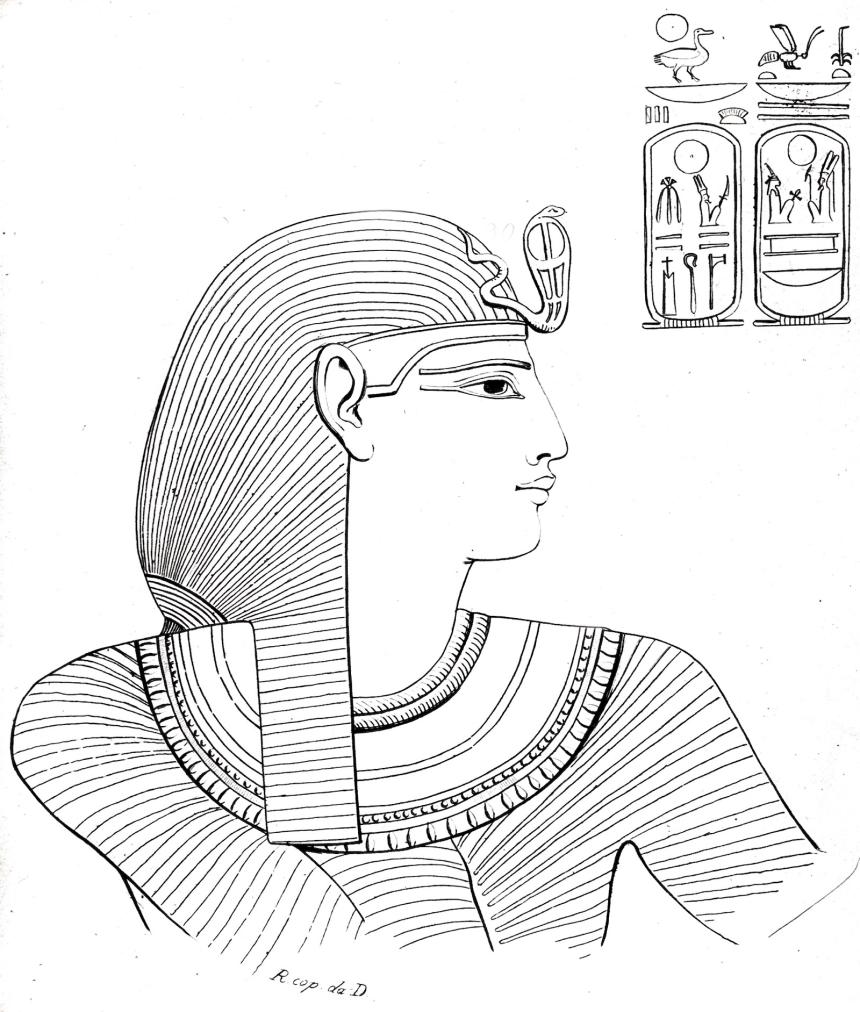


















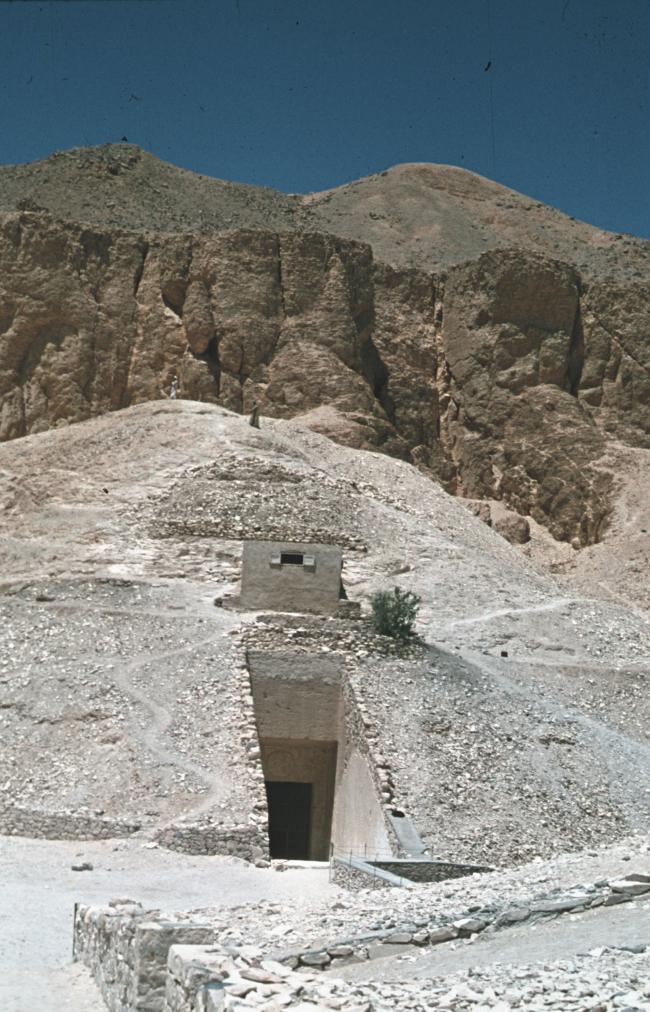





































Articles
Historical Development of the Valley of the Kings
History of the Valley of the Kings: Third Intermediate Period to the Byzantine Period
Anatomy of a Tomb: Ancient and Modern Designations for Chambers and Features
Bibliography
Abitz, Friedrich. Baugeschichte und Dekoration des Grabes Ramses VI (= Orbis biblicus et orientalis. Freiburg, 89). Freiburg, 1989.
Aldred, Cyril. More Light on the Rameside Tomb Robberies. In: John Ruffle, G.A. Gaballa and Kenneth Kitchen (eds.). Glimpses of Ancient Egypt (= Orbis Aegyptiorum Speculum). Warminster: Aris and Phillips, (1979), pp. 92-99.
Aston, David. Pottery from the Valley of the Kings: Tombs of Merenptah, Ramesses III, Ramesses IV, Ramesses VI and Ramesses VII. Ägypten und Levante 8 (1998): 137-214.
Barguet, Paul. Remarques sur quelques scènes de la salle du sarcophage de Ramsès VI. Revue de l’égyptologie. Paris. 30 (1978): 51-6.
Brock, Edwin C. The Tomb of Ramses VI. In: Kent R. Weeks (ed.). The Treasures of the Valley of the Kings: Tombs and Temples of the Theban West Bank in Luxor. Vercelli: WhiteStar, 2001; Cairo: American University in Cairo Press, 2001. Available in English, Italian, French, German, Spanish, and Chinese. Pp. 244-265.
Cauville, Sylvie and Mohammed Ibrahim Ali. La Vallée des Rois: Itinéraire du Visiteur. Leuven: Peeters, 2014. Pp. 29-169.
Daressy, Georges. Rapport sur le déblaiement des tombes 6 et 9 de Biban el Molouk. Annales du Service des Antiquités de l’Égypte 18 (1919): 270-274.
Daressy, Georges. Un trace égyptien d’une voûte elliptique. Annales du Service des Antiquités de l’Égypte. Cairo. 8 (1907): 237-241.
Goebs, Katja. Expressing Luminosity in Iconography: Features of the Solar Bark in the Tomb of Ramesses VI. Göttingen Miszellen 165 (1998): 57-71.
